Posted by: site admin @ 5:57 am
𝓛𝓔𝓢𝓢𝓞𝓝 4139 Mon 1 Nov 2021
Today to save Democracy Freedom, Liberty, Equality and Fraternity all
fraud EVMs must and should be replaced by BALLOT PAPERS.
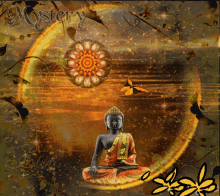

Grow Broccoli
 Bell Pepper
Bell Pepper  Cucumber
Cucumber  Carrots
Carrots  Beans in pots.
Beans in pots.
 Sujata fed Buddha to overcome hunger
Sujata fed Buddha to overcome hunger
 Ashoka planted fruit bearing trees all over his Mauryan Empire.
Ashoka planted fruit bearing trees all over his Mauryan Empire.
 Mayawati wants to establish that Mauryan Empire.
Mayawati wants to establish that Mauryan Empire.

3. Dr B.R.Ambedkar thundered “Main Bharat Baudhmay karunga.” (I will make this country Buddhist)
All Aboriginal Awakened Societies Thunder ” Hum Prapanch Prabuddha
Prapanchmay karunge.” We will make the whole world Prabuddha Prapanch Universe.
fed Buddha,Ashoka planted fruit bearing trees all over his
empire.Mayawati wants to establish Samrat Ashoka’s rule who can still
bounce back
Buddhist principles on Democracy
Democracy in buddhism
1.
Lecturer-: Ven. Polgolle Kusaladhamma Ven. B Dhammarama SIBA-BABL 14-13
4th Semester Sri Lanka International Buddhist Academy Buddhist Social
& Political Philosophy
2. CONTENT
Introduction
What is Democracy
Buddhist Sanga and Democracy
Buddhist Approaches to Democracy
Cakkavatti Kingship
Conclusion
References
3. INTRODUCTION
“Bahujanahitāya…
This Dhamma for the good of the many, for the happiness of the many,
and out of compassion for the world.
There is an inseparable
affinity between Buddhism and Democracy. The Buddha’s teaching
definitely encourages democratic ideas and institutions. This is shown
within the community of the Buddhist monk. All disciples in the Buddhist
community have the equal rights to speech, act, and think without any
religious authority and also, respect the human dignity as well as
humanity. Those are the main principles of Democracy. He made the Sanga,
the community of monk, it is an absolutely democratic institution. Even
the modern idea of voting proxy is found in the Buddha’s code of
discipline. And also, the life of the Buddha is a remarkable record of a
fully developed social consciousness.
4. WHAT IS DEMOCRACY?
The
word democracy is derived from the Greek word Dēmos = the people Kratos
= power or rule Democracy is the government of the by the for the
People
5. BUDDHIST SANGA AND DEMOCRACY
The term ‘Sanga’ definitely indicates a kind of political organization. - J.P. Sharma
Sangha is a system of government formed by the Bhikkhus for the
Bhikkhus and of the Bhikkhus - G. De Caratha Bhikkhave janapada
cārikan bahujana hitāya… sukhāya… - Mahāvaggapāli
Agatānāgata catuddisa sanga (The sanga of the four quarters)
System of punishment
The court system
Kappiya kuti (all Sangika property or provisions belonging to the whole Sanga was stored)
6. BUDDHIST APPROACHES TO DEMOCRACY •
Mahasammatha
King – Aggaṅṅa Sutta • Seven conditions of welfare – Maha Parinibbāna
Sutta • Dasa rājadharma - Cakkavatti sīhanāda Sutta • Brahmavihāra •
Equality • Justice • Amity
7. CAKKAVATTI KINGSHIP Ten Royal virtues…….
Dāna - Be liberal & avoid selfishness
Sīla - Maintain a high moral character
Pariccāga - Be prepared to sacrifice own pleasure for others
Ājjava - Be honest & maintain absolute integrity
Majjava - Be kind & gentle Tapa - Lead a simple life for the
subjects to emulate Akkodha - Be free from hatred of any kind
Avihinsā - Develop the non-violence
Khantī - Practice patience Avirodhatā - Respect public opinions to promote peace & harmony
8. CONCLUSION
There
is a very affinity between Buddhism and Democracy. The Buddha appeared
on account of democracy at a time when autocracy was prevalent in India.
Most of the states were feudal, being under a king as in the case of
the Buddha’s own clan, the Sakyans. The path which the Buddha and his
disciples had shown us has not been forgotten. King Ashoka and Mahatma
Gandhi followed the same path and strength of the nation was raised.
Even though Buddhist principles and democracy have very close
relationship, the doctrine preached by the Buddha is not based on
political philosophy. Sometimes the Buddha is said to be a social
reformer and he condemned the cast system, recognized the equality of
people. However, Buddhism is a 100% democratic religion with the freedom
of speech, act, and think. There is no any religious commandment or law
in Buddhism to control the people.
9. REFERENCES
Primary
Sources • Mahavagga Pali, Translated by Nanamoli Bhikkhu. • Ven.
Bhikkhu Bodhi (1998), Book of the Discipline, Buddhist Publication
Society, Sangaraja Mawatha, Kandy. • Digha Nikaya, Buddha Jayanthi
Tripitaka, Nadimala, Colombo. Secondary Sources • Ven. Dhammarathana T
(2006), The Buddha and his vision for the Modern World, Badullagammana
Sri Sumanasara Nayake Abhinandana Shastriya Snagahaya. • Dr. Saddatissa
Maha Thera T (2008), Buddhist Ethics, Allen & Unwin Ltd. Dictionary •
Oxford Advanced Learner’s Dictionary. Sinhala Sources • Mahavagga Pali
in Vinaya Pitakaya, Buddha Jayanthi Tripitaka, Nadimala, Colombo
Grams at $62.00 which plays a role in generating energy in the human
body available ‘for the price of a coffee a day’ a Stunning anti-ageing
breakthrough could see humans live to 150
years and regenerate organ.New process has been
found by Harvard Professor David Sinclair and researchers from the
University of New South Wales, involving cell reprogramming.
to the University of Singapore survey/review based on 131 countries.
From June 18, world will be 100% free and happy from December 8th. Their
predictions about Italy and Spain fit exactly.
5. Maker of COVID Tests Says Pandemic is Biggest Hoax Ever
Perpetrated It is like a blind man searching for a black cat in a dark
room which is not there.
WORLD WILL BE FREE FROM HOAX - STRENGTHENING THE TRUST FOR BEST OF HEALTH -SINGAPORE UNIVERSITY SURVEY

After Bath Practice Patanjali Yogic Meditation From 04:00 AM to 05:00 AM at
𝙆𝙪𝙨𝙝𝙞𝙣𝙖𝙧𝙖 𝙉𝙄𝘽𝘽Ā𝙉𝘼 𝘽𝙃𝙐𝙈𝙄 𝙋𝙖𝙜𝙤𝙙𝙖
18𝙛𝙩 𝘿𝙞𝙖. 𝙖 3𝘿 360 𝙙𝙚𝙜𝙧𝙚𝙚 𝙘𝙞𝙧𝙘𝙪𝙡𝙖𝙧 𝙋𝙖𝙜𝙤𝙙𝙖 𝙖𝙩
𝙒𝙝𝙞𝙩𝙚 𝙃𝙤𝙢𝙚,
668 5𝙩𝙝 𝘼 𝙈𝙖𝙞𝙣 𝙍𝙤𝙖𝙙,
8𝙩𝙝 𝘾𝙧𝙤𝙨𝙨, 𝙃𝘼𝙇 𝙄𝙄𝙄 𝙎𝙩𝙖𝙜𝙚,
𝙋𝙪𝙣𝙞𝙮𝙖 𝘽𝙃𝙐𝙈𝙄 𝘽𝙚𝙣𝙜𝙖𝙡𝙪𝙧𝙪,
𝙈𝙖𝙜𝙖𝙙𝙝𝙞 𝙆𝙖𝙧𝙣𝙖𝙩𝙖𝙠𝙖,
𝙋𝙧𝙖𝙗𝙪𝙙𝙙𝙝𝙖 𝘽𝙝𝙖𝙧𝙖𝙩 𝙄𝙣𝙩𝙚𝙧𝙣𝙖𝙩𝙞𝙤𝙣𝙖𝙡

𝙗𝙪𝙙𝙙𝙝𝙖𝙨𝙖𝙞𝙙2𝙪𝙨@𝙜𝙢𝙖𝙞𝙡.𝙘𝙤𝙢
𝙟𝙘𝙨4𝙚𝙫𝙚𝙧@𝙤𝙪𝙩𝙡𝙤𝙤𝙠.𝙘𝙤𝙢
𝙟𝙘𝙝𝙖𝙣𝙙𝙧𝙖𝙨𝙚𝙠𝙝𝙖𝙧𝙖𝙣@𝙮𝙖𝙝𝙤𝙤.𝙘𝙤𝙢
080-25203792
9449260443
9449835875
Spread the Words of Buddha from
𝙝𝙩𝙩𝙥://𝙨𝙖𝙧𝙫𝙖𝙟𝙖𝙣.𝙖𝙢𝙗𝙚𝙙𝙠𝙖𝙧.𝙤𝙧𝙜, WhatApp, Telegram,Facebook, Twitter, more than 5000 Emails.
Practicing Mindful Swimming at Dolphin Aquatics at Halasuru from 05:30 AM to 07:00 AM
 Vegan
Vegan  White Home
White Home 
 Bell Peppers
Bell Peppers Pepino
Pepino  cenoria
cenoria  feixón en potas
feixón en potasseis esferas de contacto, Bhikkhus, que están ben controlados, ben
gardados, ben protexidos, ben restrinxidos, traen o benestar. Que seis?
ollo, oído, o nariz, a lingua, o corpo como unha esfera de contacto,
Bhikkhus, que está ben controlado, ben protexido, ben protexido, ben
restrinxido, trae benestar.
Holdings LLC (on behalf of Meditative Mind - Meditative Mind -
Meditative Mind); SourceAudio Holdings (music publishing), and 1 Music
Rights Societies
Kalama Sutra o Sutta, es un sutra budista.En este Buda pasa por el
pueblo Kesaputta y sus habitantes, los kalamas le piden consejo.Acerca
de los gurus o m…
 Vegan
Vegan  White Home
White Home 
 Bell Peppers
Bell Peppers Cucumber
Cucumber  Carrots
Carrots  Beans in pots
Beans in pots six spheres of contact, bhikkhus, being well controlled, well guarded,
well protected, well restrained, bring well-being. Which six?
eye, ear, nose, tongue, body as a sphere of contact, bhikkhus, being
well controlled, well guarded, well protected, well restrained, brings
well-being.
 Vegan
Vegan  თეთრი სახლი
თეთრი სახლი 
 Bell Peppers
Bell Peppers კიტრი
კიტრი  სტაფილო
სტაფილო  ლობიო ქოთნები
ლობიო ქოთნებიექვსი სფეროების კონტაქტი, Bhikkhus, მიმდინარეობს კარგად კონტროლირებადი,
კარგად დაცული, კარგად დაცული, კარგად თავშეკავებული, მოუტანს
კეთილდღეობა. რომელი ექვსი?
ყურის, ცხვირის, ენა, სხეული, როგორც კონტაქტის სფერო, Bhikkhus, კარგად
კონტროლირებადი, კარგად დაცული, კარგად დაცული, კარგად თავშეკავებული,
მოაქვს კეთილდღეობა.
გაუტამა, ბუდა – საკვანძო ფიგურაა ბუდიზმში. მისი ცხოვრება, ბრძნული
გამონათქვამები, მის მიმდევრებთან საუბრები და სამონასტრო აღთქმები გახდა
ბუდიზმის წმინდა ტექსტის ტრიპიტაკას სრული კრებულის საფუძველი.
sechs Kontaktkugeln, Bhikkhus, gut kontrolliert, gut bewacht, gut
geschützt, gut zurückhaltend, Wohlbefinden bringen. Welche sechs?
Auge, das Ohr, die Nase, die Zunge, der Körper als Kontaktkugel,
Bhikkhus, gut kontrolliert, gut bewacht, gut geschützt, gut
zurückhaltend, das Wohlbefinden bringt.
 vegan
vegan  λευκό σπίτι
λευκό σπίτι 
 Bell Peppers
Bell Peppers αγγούρι
αγγούρι  καρότα
καρότα  φασόλια σε γλάστρες
φασόλια σε γλάστρεςοι έξι σφαίρες επαφής, Bhikkhus, που είναι καλά ελεγχόμενοι, καλά
φυλασσόμενοι, καλά προστατευμένοι, καλά συγκρατημένοι, φέρνουν ευημερία.
Που έξι;
μάτι, το αυτί, τη μύτη, τη γλώσσα, το σώμα ως σφαίρα επαφής, Bhikkhus,
που είναι καλά ελεγχόμενες, καλά φυλασσόμενοι, καλά προστατευμένοι, καλά
συγκρατημένοι, φέρνει ευημερία.
આ છ ક્ષેત્રો, ભીખસ, સારી રીતે નિયંત્રિત, સારી રીતે સાવચેત, સારી રીતે
સુરક્ષિત, સારી રીતે નિયંત્રિત, સારી રીતે લાવે છે. કયા છ?
કાન, નાક, જીભ, શરીરના સંપર્કના ક્ષેત્રમાં, ભીખસ, સારી રીતે નિયંત્રિત,
સારી રીતે સાવચેત, સારી રીતે સુરક્ષિત, સારી રીતે નિયંત્રિત, સારી રીતે
રહેલા, સુખાકારી લાવે છે.
the occasion of the United Nations Climate Change Conference (COP26)
His Holiness the Dalai Lama speaks on the need to tackle climate change
as the future of our planet is in our hands.
the occasion of the United Nations Climate Change Conference (COP26)
His Holiness the Dalai Lama speaks on the need to tackle climate change
as the future…
zòrèy, nen, lang, kò a kòm yon esfè nan kontak, bhikkhus, yo te byen
kontwole, byen veye, byen pwoteje, byen restrenn, pote byennèt.
chanting the OM Mani Padme Hum Mantra with chakra healing sounds from
Tibetan Singing Bowls for 3 hours long.On the meaning of: OM MANI PADME
HUM T…
kunne, hanci, jiki a matsayin wani yanki na lamba, Bhikkhus, ana
sarrafa shi sosai, an kiyaye shi sosai, an kiyaye shi da kyau.
maka, e ka maka, ka a me ke kino, keʻano o ka hoʻopiliʻana, paleʻia,
mālama maikaʻi, e lawe maikaʻiʻia, e lawe maikaʻiʻia, e lawe maikaʻiʻia.
Tổng Hợp Chia Sẻ Các Bài Pháp, Các Tài Liệu Dhamma, Trợ Duyên Ai Đó Hữu
Duyên Được Biết Đến Dhamma Mà Bậc Giác Ngộ Đã Chỉ Dạy Và Được Các Đại
Trưởng Lão Gìn Giữ Lưu Truyền, Biết Đến Phương Pháp Thiền Anapana và
Vipassana, Được Vững Vàng Trên Con Đường Giải Thoát Khổ, Được An Lạc
Thực Sự, Hoà Hợp Thực Sự, Hạnh Phúc Thực Sự!
Không Đại Diện Cho Bất Kỳ Tổ Chức Tôn Giáo Hay Trung Tâm Thiền Nào.
Chúng Tôi Chỉ Tổng Hợp & Chia Sẻ Thông Tin Dhamma. Chúng Tôi Không
Tổ Chức Thiền, Không Dạy Thiền, Không Kinh Doanh Thương Mại, Không Kêu
Gọi Hùn Phước.
Khả Năng Có Hạn, Nên Dù Đã Cố Gắng Nhưng Bộ Sưu Tập Này Không Tránh
Khỏi Có Những Chỗ Thiếu Sót, Thậm Chí Có Những Chỗ Sai, Mong Các Bậc
Thiện Trí Chân Thành Chỉ Bảo, Góp Ý.
Các Kênh Này, Nguyện Ai Đó Hữu Duyên Sẽ Nhận Được Dhamma & Tự Tìm
Được Con Đường Tu Tập Phù Hợp Cho Mình, Được Lợi Lạc Trong Dhamma.
ý: Để Học Dhamma & Học Phương Pháp Thiền Anapana & Thiền
Vipassana, Quý Vị Nên Tìm Hiểu Và Đăng Ký Tham Dự Khoá Thiền Tại Các
Trung Tâm Thiền Uy Tín Hoặc Dưới Sự Chỉ Dẫn Từ Các Vị Thầy, Các Bậc
Thiện Trí, Các Thiền Sư. Nguyện Quý Vị Được Hạnh Phúc, Được An Lạc, Được
Giải Thoát!
הפאנל: סנדיה בר-קמה, לילה קמחי, פרופ’ יעקב רז, פניננדו בהיקהו ודניאל
סטמבלר. מנחים: אילן לוטנברג ואבי פאר. צילום: משה בראל. השיחה התקיימה
בסמינר הקיבוצים ביום 7.2.2014.
בודהיזם בישראל מציג מגוון פעילויות המבוססות על עקרונות הבודהיזם
שמתקיימות בישראל, מבחר מאמרים בעברית בנושאים בודהיסטיים שונים, תרגומים
של כתבים ודרשות (סוטרות)…
 Vegan
Vegan  Dawb Tsev
Dawb Tsev 
 Tswb kua txob peppers
Tswb kua txob peppers  carrots
carrots  taum hauv cov lauj kaub
taum hauv cov lauj kaub Vegan
Vegan  Dawb Tsev
Dawb Tsev 
 Tswb kua txob peppers
Tswb kua txob peppers  carrots
carrots  taum hauv cov lauj kaub
taum hauv cov lauj kaub Vegan
Vegan  hvítt heimili
hvítt heimili 
 papriku agúrka
papriku agúrka  gulrætur
gulrætur  baunir í pottum
baunir í pottumsex sviðum snertingar, Bhikkhus, sem eru vel stjórnað, vel varðveitt,
vel varið, vel spennt, koma vel með vellíðan. Hvaða sex?
 vegan
vegan  White Home
White Home 
 bell na-ede ede kukumba
bell na-ede ede kukumba  carrots
carrots  beans na akụwa
beans na akụwana-ahụ maka ịkpọtụrụ isii ndị a, Bhikkhus, na-achịkwa nke ọma, chekwaa
ya nke ọma, na-egbochi ya nke ọma, na-egbochi ya nke ọma. Kedu isii?
bidang kontak ini, Bhikkhus, dikendalikan dengan baik, dijaga dengan
baik, dilindungi dengan baik, terkendali dengan baik, membawa
kesejahteraan. Enam mana?
telinga, hidung, lidah, tubuh sebagai bidang kontak, bhikkhu,
dikendalikan dengan baik, dijaga dengan baik, dilindungi dengan baik,
terkendali dengan baik, membawa kesejahteraan.
 Vegan
Vegan  Bán Baile
Bán Baile 
 clog peppers
clog peppers  cúcamar
cúcamar  cairéid
cairéid  pónairí i bpotaí
pónairí i bpotaína sé réimse teagmhála seo, Bhikkhus, á rialú go maith, cosanta go
maith, go maith cosanta, go maith srianta, dea-bhail. Cé acu seisear?
an tsúil, an chluas, an tsrón, an teanga, an corp mar réimse teagmhála,
Bhikkhus, a bheith á rialú go maith, cosanta go maith, cosanta go
maith, go maith srianta, folláine.
sei sfere di contatto, Bhikkhus, essendo ben controllate, ben
custodite, ben protette, ben contenute, portano il benessere. Quali sei?
l’orecchio, il naso, la lingua, il corpo come una sfera di contatto,
Bhikkhus, essendo ben controllati, ben custoditi, ben protetti, ben
trattenuti, portano benessere.
si evince da un commento fatto da S.S il Dalai Lama riguardo la
comprensione del buddhismo in una cultura diversa da quella tibetana o
indiana: “I testi di lamrim (stadi del sentiero al risveglio)
presuppongono che chi li studia sia già un praticante con fede in Buddha
e nei suoi insegnamenti. Principalmente chi studia i testi di lamrim in
tutte le tradizioni tibetane è qualcuno che già ha una qualche
conoscenza di rinascita e karma, dei Tre Gioielli, i cognitori validi e i
loro oggetti (l’epistemologia buddhista) e così via”.
a causa delle differenze culturali o al modo in cui è strutturata
oggigiorno la società, spesso abbiamo domande e dubbi che richiedono
spiegazioni dettagliate che non si trovano nei testi buddhisti classici.
è di grande utilità, per chi è di un’altra cultura ed è interessato al
buddhismo avere delle spiegazioni introduttive in modo tale da essere
preparato in modo corretto.
offrire a tutti la possibilità di accedere agli insegnamenti di Dharma
trasmessi dal venerabile Lama Paljin Tulku Rinpoche e dagli altri
maestri e docenti nostri ospiti, il Centro Mandala è impegnato da anni
in una vasta opera per la loro condivisione online.
from Anger』(英文)など著書多数。
enem kontak, Bhikkhus, sing dikontrol kanthi apik, uga dijaga kanthi
becik, dilindhungi kanthi becik, ngusir, nggawa kesejahteraan. Apa enem?
kuping, ilat, lidah, layon kontak, bhikkhus, sing dikontrol kanthi
apik, dijaga kanthi becik, dilindhungi uga dilindhungi, nggawa
kesejahteraan.
Indonesia” created with “Gamelan Jawa” featured Suling (Indonesian
traditional flute). This music designed for Relaxation, Meditation,
Healing, Stress Relief and boost Positive Energy. This instrumental
track especially arranged to describe how beautiful Indonesia through
sound and music.
ancient musical principles are used to compose and improvise our new
pieces that continue the mystical and spiritual traditions; Gamelan tone
as a means to induce an atmosphere of calm and tranquility. The beats
in gamelan used as cues to inhalation and exhalation to induce a
meditative state.
is the traditional ensemble music of the Javanese, Sundanese, and
Balinese. Gamelan is an integral part of Indonesian culture, gamelan
often accompanies rituals. In Javanese mythology, the gamelan was
created by Sang Hyang Guru in Saka era 167 (c. AD 230), the god who
ruled as king of all Java from a palace on the Maendra mountain. He
needed a signal to summon the gods and thus invented the gong. For more
complex messages, he invented two other gongs, thus forming the original
gamelan set.
ಈ ಆರು ಗೋಳಗಳು, ಭಿಕ್ಖಸ್, ಚೆನ್ನಾಗಿ ನಿಯಂತ್ರಿಸಲ್ಪಡುತ್ತವೆ, ಚೆನ್ನಾಗಿ
ಕಾವಲಿನಲ್ಲಿ, ಚೆನ್ನಾಗಿ ರಕ್ಷಿಸಲಾಗಿದೆ, ಚೆನ್ನಾಗಿ ಸಂರಕ್ಷಿಸಲ್ಪಟ್ಟವು,
ಯೋಗಕ್ಷೇಮವನ್ನು ತರುತ್ತವೆ. ಇದು ಆರು?
ಕಿವಿ, ಮೂಗು, ನಾಲಿಗೆ, ದೇಹವು ಸಂಪರ್ಕದ ಕ್ಷೇತ್ರವಾಗಿ, ಭಿಕ್ಖಸ್, ಚೆನ್ನಾಗಿ
ನಿಯಂತ್ರಿಸಲ್ಪಡುತ್ತದೆ, ಚೆನ್ನಾಗಿ ಕಾವಲಿನಲ್ಲಿ, ಚೆನ್ನಾಗಿ ರಕ್ಷಿಸಲ್ಪಟ್ಟಿದೆ,
ಚೆನ್ನಾಗಿ ಸಂರಕ್ಷಿಸಲಾಗಿದೆ, ಯೋಗಕ್ಷೇಮವನ್ನು ತರುತ್ತದೆ.
KANNADA DHAMMA DISCOURSE – 8th Aug 2021 given by Venerable Bhikkhu
Ananda at Mahabodhi Buddha Vihara, Maha Bodhi Society, Gandhinagar,
Bengaluru, India || (MN:118) Buddha’s roadmap to the entire course of
meditation practice, using the vehicle of breath meditation.
KANNADA DHAMMA DISCOURSE – 8th Aug 2021 given by Venerable Bhikkhu
Ananda at Mahabodhi Buddha Vihara, Maha Bodhi Society, Gandhinagar,
Bengaluru, Ind…
Posted by: site admin @ 6:23 am
𝓛𝓔𝓢𝓢𝓞𝓝 4138 Sun 31 Oct 2021


 ,bell pepper,
,bell pepper, cucumber,
cucumber, Beans in Pots,
Beans in Pots,

Prapanchmay karunge.” (We will make the whole world Prabuddha Prapanch
generating energy in the human body available ‘for the price of a coffee
a day’ a Stunning anti-ageing breakthrough could see humans live to 150
years and regenerate organ.New process has been found by Harvard
Professor David Sinclair and researchers from the University of New
South Wales, involving cell reprogramming.
to the University of Singapore survey/review based on 131 countries.
From June 18, world will be 100% free and happy from December 8th. Their
predictions about Italy and Spain fit exactly.
Maker of COVID
Tests Says Pandemic is Biggest Hoax Ever Perpetrated It is like a blind
man searching for a black cat in a dark room which is not there.
WORLD WILL BE FREE FROM HOAX - STRENGTHENING THE TRUST FOR BEST OF HEALTH -SINGAPORE UNIVERSITY SURVEY
-
20) Classical Catalan-Català clàssic
Aus gratuïtes Vegan
Vegan  casa blanca
casa blanca  Feu una bona ment de purificació de la ment a la felicitat eternaLa fam és el pitjor tipus de malalties que va dir el BudaCréixer bròquil
Feu una bona ment de purificació de la ment a la felicitat eternaLa fam és el pitjor tipus de malalties que va dir el BudaCréixer bròquil campanar pebrots
campanar pebrots cogombre
cogombre  pastanagues
pastanagues  mongetes en testosAquests
mongetes en testosAquests
sis esferes de contacte, bhikkhus, sent ben controlats, ben vigilats,
ben protegits, ben restringits, porten benestar. Quins sis?A les pròpies paraules de Buda en SN 35.94 (S IV 69)Adantāgutta sutta- Controlat i desagradable - en català clàssic català clàssicL’ull,
l’oïda, el nas, la llengua, el cos com a esfera de contacte, bekkhus,
sent ben controlats, ben vigilats, ben protegits, ben restringits,
porten benestar.El Habla Correcta - Enseñanzas de BudaCiencia del Saber252K subscribersEl corazón de las enseñanzas de Buda de Thich Nhat HanhNarrador: Juan José Palanca.Música libre de derechos de autor.Únete
a miembros y disfrutarás de una serie de ventajas; Modo exlusivo del
chat en directo para miembros, vídeos que solo pueden ver los miembros: https://www.youtube.com/channel/UCk2E…Tienda de Ciencia del Saber: https://teespring.com/es/stores/cienc…El Despertar de Buda: https://www.youtube.com/channel/UCGaV…La Biblioteca de JJ: https://www.youtube.com/channel/UCiM9…Instagram: https://www.instagram.com/cienciadels…Maestro en Insight Timer: https://insighttimer.com/cienciadelsaber…Facebook: https://www.facebook.com/Maverick.NaiApóyanos en Patreon desde 1$ al mes y accede a nuestros contenidos exclusivos: https://www.patreon.com/cienciadelsaber
corazón de las enseñanzas de Buda de Thich Nhat Hanh Narrador: Juan
José Palanca.Música libre de derechos de autor.Únete a miembros y
disfrutarás de una …
 Vegan
Vegan  White Home
White Home 
 Bell Peppers
Bell Peppers Cucumber
Cucumber  Carrots
Carrots  beans sa mga kaldero
beans sa mga kalderonga unom nga mga spheres sa pagkontak, bhikkhus, nga gikontrol nga
maayo, maayo nga gibantayan, maayo nga gipanalipdan, maayo nga
pagpugong, pagdala kaayohan. Kinsa sa unom?
mata, dalunggan, ilong, lawas, lawas ingon usa ka sulud nga kontak,
bhikkhus, nga gikontrol nga maayo, maayo nga gipugngan, maayo nga
gipugngan, maayo ang pagpugong.
 Vegan
Vegan  Nonity Hol
Nonity Hol 
 belu tsabola
belu tsabola  kaloti
kaloti  nyemba mumiphika
nyemba mumiphikazisanu ndi chimodzi izi zokhudzana, bikkhokhusi, ndikuwongoleredwa
bwino, kutetezedwa bwino, kutetezedwa bwino, kubweretsa bwino. Ndi iti?
khutu, mphuno, lilime, ngati gawo lolumikizana, bhikkhoksi, kukhala
olamulidwa bwino, otetezedwa bwino, otetezedwa bwino, kutetezedwa bwino.
23) Classical Chinese (Simplified)-古典中文(简体),
免费鸟类 素素
素素 白色家居
白色家居 做好净化心灵 - 往往幸福的道路饥饿是最糟糕的疾病所说的佛陀生长西兰花
做好净化心灵 - 往往幸福的道路饥饿是最糟糕的疾病所说的佛陀生长西兰花 甜椒
甜椒 黄瓜
黄瓜 胡萝卜在锅中的胡萝卜豆这六个接触的接触球,植金,受控良好,守卫,受到良好的保护,克制得很好,带来福祉。 哪个六?在SN 35.94中的佛陀自己的话语(第49页)Adantāguttasutta- 在古典中文(简体) - 古典中文(简体)眼睛,耳朵,鼻子,舌头,身体作为接触的球体,Bhikkhus,受控良好,守卫,受到良好的保护,克制得很好,带来福祉。印度电视剧《佛陀》的一生 The Life of the BuddhaHuatson4.02K subscribers本视频为印度剧《佛陀》剪辑,简要讲述了2500多年前古印度迦毗罗卫国的王子,乔达摩•悉达多(释迦牟尼佛)的一生,即从出生到、结婚、出家修道、再到成等正觉49年讲经说法普度众生,一直到最后的涅槃。欢迎订阅本频道,并将视频分享给您的家人和朋友。
胡萝卜在锅中的胡萝卜豆这六个接触的接触球,植金,受控良好,守卫,受到良好的保护,克制得很好,带来福祉。 哪个六?在SN 35.94中的佛陀自己的话语(第49页)Adantāguttasutta- 在古典中文(简体) - 古典中文(简体)眼睛,耳朵,鼻子,舌头,身体作为接触的球体,Bhikkhus,受控良好,守卫,受到良好的保护,克制得很好,带来福祉。印度电视剧《佛陀》的一生 The Life of the BuddhaHuatson4.02K subscribers本视频为印度剧《佛陀》剪辑,简要讲述了2500多年前古印度迦毗罗卫国的王子,乔达摩•悉达多(释迦牟尼佛)的一生,即从出生到、结婚、出家修道、再到成等正觉49年讲经说法普度众生,一直到最后的涅槃。欢迎订阅本频道,并将视频分享给您的家人和朋友。
24) Classical Chinese (Traditional)-古典中文(繁體),
免費鳥類 素素
素素 白色家居
白色家居 做好淨化心靈 - 往往幸福的道路飢餓是最糟糕的疾病所說的佛陀生長西蘭花
做好淨化心靈 - 往往幸福的道路飢餓是最糟糕的疾病所說的佛陀生長西蘭花 甜椒
甜椒 黃瓜
黃瓜 胡蘿蔔在鍋中的胡蘿蔔豆這六個接觸的接觸球,植金,受控良好,守衛,受到良好的保護,克制得很好,帶來福祉。 哪個六?在SN 35.94中的佛陀自己的話語(第49頁)Adantāguttasutta- 在古典中文(傳統) - 古典中文(繁體)眼睛,耳朵,鼻子,舌頭,身體作為接觸的球體,Bhikkhus,受控良好,守衛,受到良好的保護,克制得很好,帶來福祉。如果人有轉世,為何人口會變多?達賴喇嘛60.5K subscribers標題:如果人有轉世,為何人口會變多?2014年5月31日下午 於南印度孟買蘇邁亞大學(Somaiya Vidyavihar)問答許多宗教相信轉世理論,所以,二十一世紀應有70億個靈魂,上個世紀的人口比較少,那麼,(此世紀多出的)這些靈魂之前在哪?(尊者:)如果你相信造物主,那麼,就去問造物主吧!(觀眾:)但我仍想知道你的想法,因為您是第十四世達賴喇嘛尊者。拜託您!在場的每一人都在問。(尊者:)所有的主流宗教都在討論三個問題:第一、什麼是我?第二、這個我是否有開始?第三、這個我是否有止盡?共三個問題。這三個問題是在印度阿姆利則(Amritsar
胡蘿蔔在鍋中的胡蘿蔔豆這六個接觸的接觸球,植金,受控良好,守衛,受到良好的保護,克制得很好,帶來福祉。 哪個六?在SN 35.94中的佛陀自己的話語(第49頁)Adantāguttasutta- 在古典中文(傳統) - 古典中文(繁體)眼睛,耳朵,鼻子,舌頭,身體作為接觸的球體,Bhikkhus,受控良好,守衛,受到良好的保護,克制得很好,帶來福祉。如果人有轉世,為何人口會變多?達賴喇嘛60.5K subscribers標題:如果人有轉世,為何人口會變多?2014年5月31日下午 於南印度孟買蘇邁亞大學(Somaiya Vidyavihar)問答許多宗教相信轉世理論,所以,二十一世紀應有70億個靈魂,上個世紀的人口比較少,那麼,(此世紀多出的)這些靈魂之前在哪?(尊者:)如果你相信造物主,那麼,就去問造物主吧!(觀眾:)但我仍想知道你的想法,因為您是第十四世達賴喇嘛尊者。拜託您!在場的每一人都在問。(尊者:)所有的主流宗教都在討論三個問題:第一、什麼是我?第二、這個我是否有開始?第三、這個我是否有止盡?共三個問題。這三個問題是在印度阿姆利則(Amritsar)的一場國際宗教會議中提出的。是由一位蘇菲的教授所指出,講得很好。所有主流宗教都會面臨這三個問題:第一、什麼是我?除了佛教徒,所有其他宗教都主張靈魂論。如昨天我們也討論過,佛教也同意「我」(self)的存在,但是,「我」絕非可從身心獨立分開的靈魂。佛教是這麼回答第一題。
第二、我是否有開始?根據主張造物主的教義,我們被造物主創造的當下,便是我們的開始,像是基督宗教說,這一生就是靈魂的開始,今世的身體就是造物主創造的。這種信念也相當強大!今生是造物主創造出來的緣故,這意味著,造物主是你的真實父親,這會讓你跟造物主間產生一種互通的感覺。當你愈相應,便會愈想實踐造物主的意願,即實踐大愛。這種信念非常強大。再來是,否定造物主的宗教,像是耆那教和無神數論派。大概兩年前,我遇見一位很棒的苦行僧,他真的很有學問。很遺憾的是,許多宗教領袖們最厲害的卻是會做法會,恕我直言,他們在哲學的議題上卻平平無奇。說不定這麼說有點狂語,身為那爛陀大學的學生,當我們在跟別人討論哲學議題時,不容易產生敬仰之心。我們需要花多年的時間嚴謹學習多元化的內容,就像你們也聽過我們是如何學習的。總之,兩年前見到的那位宗教領袖,他的學問真好。通常印度教的信徒會信奉濕婆神,我自己也接受過一些印度教的法會,感覺很好。他知道許多不同的哲學觀點,其中含括龍樹的哲學見解,所以我跟他進行了長久的討論,從他那裡學到了之前不確定的內容,即關於數論派的哲理。從那時起,我很確定無神數論派、耆那教、佛教,這三個教派否定造物主,所以,「有情」是沒有開始的。還有,依數論派的哲理,當我們涅槃時,只剩下單一的「獨立之我」,其他萬物皆已消融於「共主相」(又稱「自性」)之中,所以只剩單一的「獨立之我」,那時獲得永恆的解脫、涅槃。因此,「我」沒有止盡。佛教也說「我」沒有止盡,這點是相同的。主張造物主的緣故,「我」是有開始的;否定造物主的緣故,「我」是無始亦無終。像是科學家如果有更強大的望遠鏡,便可看到無盡的銀河系。我們不可能說:「只有人類在這個銀河星系裡,在其他無盡的星系中並無眾生和人類。」我們如何證明?因為是無止盡的啊!佛說:「世界是無止盡的,我們眾生就像其中的遊客一樣」我們在其他星球受夠了,但又不知何故來到此處。在此看到了種種問題,感覺受夠了後,再去其他星球。謝謝。(觀眾)謝謝尊者
25) Classical Corsican-Corsa Corsicana,

Uccelli Gratuite Vegan
Vegan  Casa bianca
Casa bianca  Fate a bona purificata a mente - per via di eterna beataA fame hè u peghju tippu di malattia hà dettu u BuddhaSpì Broccoli
Fate a bona purificata a mente - per via di eterna beataA fame hè u peghju tippu di malattia hà dettu u BuddhaSpì Broccoli Bell Peppers
Bell Peppers Cucumber
Cucumber  Carote
Carote  Beans in FranceseSti
Beans in FranceseSti
sei sfizia di cuntattu, bhikkhus, essì ben cuntrullatu, ben cuntruitu,
ben guardatu, ben prutettu, ben intengiatu, porta bè. Chì sei?In e parolle di Buddha in Sn 35.94 (S IV 69)ADTADĀGUTUTA SUTTA- senza cuntrollu è senza unguardatu - in classicu corsu-corsa - corsa –sa linguaL’ochju,
nasu, nasu, lingua, curbosa di cuntattu, bhikkhus, essendu ben
cuntrullata, ben perspulita, ben crecritta, ben protettoine, porta
benessere.World Buddhist Supreme Conference 2017 DAY ONE SUMMERYWorld Buddhist1.59K subscribers
26) Classical Croatian-Klasična hrvatska,Besplatne ptice vegan
vegan  bijela kuća
bijela kuća 
Učiniti dobro pročistiti um - put do vječnog blaženstvaGlad je najgora vrsta bolesti, rekao je BuddhaUzgoj brokule Bell Peppers
Bell Peppers KrastavacOvih
KrastavacOvih
šest sfera kontakta, Bhikkhus, dobro kontrolirani, dobro čuvani, dobro
zaštićeni, dobro suzdržani, donose dobrobit. Koji šest?U Buddhinim vlastitim riječima u SN 35.94 (s IV 69)Adantāgutta Sutta- nekontrolirano i nečuvano - u klasičnoj hrvatsko-klasičnoj HrvatskojOko,
uši, nos, jezik, tijelo kao sfera kontakta, Bhikkhus, dobro
kontrolirani, dobro čuvani, dobro zaštićeni, dobro suzdržani, donosi
dobrobit.
-
27) Classical Czech-Klasická čeština
TŘI BUDDHISTICKÉ PRAVDY, které vám ulehčí život…GoschaTV196.1K subscribersNic
není takové, jaké se nám jeví. – Když se květ naplní nektarem, čmelák
sám přilétne. – Dokud je to v lidském těle, tak to vždycky ještě trochu
smrdí. – Video Igora Chauna, natočené 28. 3. v Praze.Další VIDEA najdete na GoschaTV1Zdarma ptáci vegan
vegan  bílý domov
bílý domov  Do dobrého očištění mysli - cesta k věčné blaženostiHlad je nejhorší druh nemoci řekl BuddhaPěstovat brokolice
Do dobrého očištění mysli - cesta k věčné blaženostiHlad je nejhorší druh nemoci řekl BuddhaPěstovat brokolice peppers
peppers okurka
okurka  mrkev
mrkev  fazole v květináčíchTyto
fazole v květináčíchTyto
šesti sfér kontaktu, bhikkhus, jsou dobře kontrolované, hlídané, dobře
chráněné, dobře omezené, přinášejí pohody. Které šest?V Buddhových vlastních slovech v SN 35.94 (S IV 69)Adantāgutta Sutta.- nekontrolovaný a nestřežený - v klasické češtině-Klasické češtiněOko,
ucho, nos, jazyk, tělo jako sféra kontaktu, bhikkhus, dobře
kontrolované, dobře hlídané, dobře chráněné, dobře omezené, přináší
pohodu.Více o aktivitách spolku GOSCHA naNaši práci můžete podpořit naIgor Chaun a spolek Goscha také na FacebookuTŘI BUDDHISTICKÉ PRAVDY, které vám ulehčí život…Nic
není takové, jaké se nám jeví. – Když se květ naplní nektarem, čmelák
sám přilétne. – Dokud je to v lidském těle, tak to vždycky ještě trochu
smrdí. – Vi…28) Classical Danish-Klassisk dansk,Klassisk dansk,
647 / 5000Translation resultsGratis fugle Vegan
Vegan  White Home
White Home  Gør godt rense sind - vej til evig lyksalighedHunger er den værste slags sygdom, sagde BuddhaGrow broccoli
Gør godt rense sind - vej til evig lyksalighedHunger er den værste slags sygdom, sagde BuddhaGrow broccoli bell peppers
bell peppers agurk
agurk  Gulerødder
Gulerødder  bønner i potterDisse
bønner i potterDisse
seks kugler af kontakt, Bhikkhus, der er godt kontrolleret, godt
bevogtet, velbeskyttet, godt tilbageholdt, bringer velvære. Hvilke seks?I Buddhas egne ord i SN 35,94 (S IV 69)Adantāgutta sutta.- ukontrolleret og ubeskyttet - i klassisk dansk-Klassisk Dansk, Klassisk DanskØjet,
øre, næse, tunge, kroppen som en kontaktområde, Bhikkhus, der er godt
kontrolleret, godt bevogtet, godt beskyttet, godt tilbageholdt, bringer
velvære.Buddhisme syncrozz25 subscribersArtig skoleprosjekt
syncrozz25 subscribersArtig skoleprosjekt høyt nivå på sangstemmene.Buddhisme
høyt nivå på sangstemmene.Buddhisme Artig skoleprosjekt
Artig skoleprosjekt høyt nivå på sangstemmene.
høyt nivå på sangstemmene.
29) Classical Dutch- Klassiek Nederlands,
Gratis vogels veganistisch
veganistisch  wit huis
wit huis  Doe goede zuipende geest - pad naar eeuwige gelukzaligheidHonger is het ergste soort ziekte, zei de BoeddhaGrow Broccoli
Doe goede zuipende geest - pad naar eeuwige gelukzaligheidHonger is het ergste soort ziekte, zei de BoeddhaGrow Broccoli Bell Peppers
Bell Peppers Komkommer
Komkommer  Wortelen
Wortelen  Bonen in POTSDeze
Bonen in POTSDeze
zes bollen, Bhikkhus, zijn goed gecontroleerd, goed bewaakt, goed
beschermd, goed ingetogen, het welzijn brengen. Welke zes?In de eigen woorden van Boeddha in SN 35.94 (S IV 69)Adantāgutta sutta- ongecontroleerd en onbewaakt - in klassieke Nederlands-Klassiek NederlandsHet
oog, het oor, de neus, de tong, het lichaam als een bol van contact,
Bhikkhus, zijn goed gecontroleerd, goed bewaakt, goed beschermd, goed
ingetogen, brengt welzijn.Ontstaan BoeddhismeEllie DJOntstaan Boeddhisme
31) Classical Esperanto-Klasika Esperanto,Senpagaj birdoj Vegana
Vegana  Blanka hejmo
Blanka hejmo  Faru bonan purigi menson - vojon al eterna feliĉo
Faru bonan purigi menson - vojon al eterna feliĉo
Malsato estas la plej malbona speco de malsano diris la BudhoKreski broccoli Bell peppers
Bell peppers kukumo
kukumo  karotoj
karotoj  faboj en potojĈi
faboj en potojĈi
tiuj ses sferoj de kontakto, Bhikkhus, estante bone kontrolita, bone
gardata, bone protektita, bone retenita, alporti bonstaton. Kiuj ses?En la propraj vortoj de Budho en SN 35.94 (S IV 69)Adtantāgutta sutta- senbrida kaj senbrida - en klasika Esperanto-klasika EsperantoLa
okulo, orelo, nazo, lango, korpo kiel sfero de kontakto, Bhikkhus,
estante bone kontrolita, bone gardata, bone protektita, bone retenita,
alportas bonstaton.
32) Classical Estonian- klassikaline eesti keel,
Tasuta linnud Vegan
Vegan  Valge kodu
Valge kodu  Kas hea puhastage meeles - tee igavesele õndsuseleNälg on kõige halvem haigus, ütles BuddhaKasvage brokkoli
Kas hea puhastage meeles - tee igavesele õndsuseleNälg on kõige halvem haigus, ütles BuddhaKasvage brokkoli Bell Peppers
Bell Peppers kurk
kurk  porgandid
porgandid  oad potidesNeed kuus kontaktpruunid, bhikkhus, olles hästi kontrollitud, hästi valvur, hästi kaitstud, hästi kinnitatud, heaolu. Kuus?Buddha enda sõnades SN 35.94 (S IV 69)Adantāgutta Sutta- kontrollimatu ja järelvalveta - klassikalises eesti keeles - Klassikaline Eesti keelesSilmad,
oad potidesNeed kuus kontaktpruunid, bhikkhus, olles hästi kontrollitud, hästi valvur, hästi kaitstud, hästi kinnitatud, heaolu. Kuus?Buddha enda sõnades SN 35.94 (S IV 69)Adantāgutta Sutta- kontrollimatu ja järelvalveta - klassikalises eesti keeles - Klassikaline Eesti keelesSilmad,
kõrva, nina, keel, keha kontaktvaldina, Bhikkhus, hästi kontrollitud,
hästi valvatud, hästi kaitstud, hästi kinnitatud, toob heaolu.
33) Classical Filipino klassikaline filipiinlane,
Senpagaj birdoj Vegana
Vegana  Blanka hejmo
Blanka hejmo  Faru bonan purigi menson - vojon al eterna feliĉoMalsato estas la plej malbona speco de malsano diris la BudhoKreski broccoli
Faru bonan purigi menson - vojon al eterna feliĉoMalsato estas la plej malbona speco de malsano diris la BudhoKreski broccoli Bell peppers
Bell peppers kukumo
kukumo  karotoj
karotoj  faboj en potojĈi
faboj en potojĈi
tiuj ses sferoj de kontakto, Bhikkhus, estante bone kontrolita, bone
gardata, bone protektita, bone retenita, alporti bonstaton. Kiuj ses?En la propraj vortoj de Budho en SN 35.94 (S IV 69)Adtantāgutta sutta- senbrida kaj senbrida - en klasika Esperanto-klasika EsperantoLa
okulo, orelo, nazo, lango, korpo kiel sfero de kontakto, Bhikkhus,
estante bone kontrolita, bone gardata, bone protektita, bone retenita,
alportas bonstaton.Tasuta linnud Vegan
Vegan  Valge kodu
Valge kodu  Kas hea puhastage meeles - tee igavesele õndsuseleNälg on kõige halvem haigus, ütles BuddhaKasvage brokkoli
Kas hea puhastage meeles - tee igavesele õndsuseleNälg on kõige halvem haigus, ütles BuddhaKasvage brokkoli Bell Peppers
Bell Peppers kurk
kurk  porgandid
porgandid  oad potidesNeed kuus kontaktpruunid, bhikkhus, olles hästi kontrollitud, hästi valvur, hästi kaitstud, hästi kinnitatud, heaolu. Kuus?Buddha enda sõnades SN 35.94 (S IV 69)Adantāgutta Sutta- kontrollimatu ja järelvalveta - klassikalises eesti keeles - Klassikaline Eesti keelesSilmad,
oad potidesNeed kuus kontaktpruunid, bhikkhus, olles hästi kontrollitud, hästi valvur, hästi kaitstud, hästi kinnitatud, heaolu. Kuus?Buddha enda sõnades SN 35.94 (S IV 69)Adantāgutta Sutta- kontrollimatu ja järelvalveta - klassikalises eesti keeles - Klassikaline Eesti keelesSilmad,
kõrva, nina, keel, keha kontaktvaldina, Bhikkhus, hästi kontrollitud,
hästi valvatud, hästi kaitstud, hästi kinnitatud, toob heaolu.Libreng ibon Vegan
Vegan  White Home
White Home  .Gumawa ng mahusay na paglilinis ng isip - landas sa walang hanggang lubos na kaligayahanAng kagutuman ay ang pinakamasamang uri ng sakit na sinabi ng BuddhaLumaki broccoli
.Gumawa ng mahusay na paglilinis ng isip - landas sa walang hanggang lubos na kaligayahanAng kagutuman ay ang pinakamasamang uri ng sakit na sinabi ng BuddhaLumaki broccoli kampanilya peppers
kampanilya peppers pipino
pipino  karot
karot  beans sa kalderoAng
beans sa kalderoAng
mga anim na larangan ng kontak, Bhikkhus, na mahusay na kinokontrol,
mahusay na nababantayan, mahusay na protektado, mahusay na pinigilan,
magdala ng kagalingan. Aling anim?Sa sariling mga salita ng Buddha sa SN 35.94 (S IV 69)Adantāgutta sutta.- Hindi mapigil at walang takip - sa klasikal na Filipino klasikaline filipiinlaneAng
mata, tainga, ilong, dila, katawan bilang isang globo ng contact,
Bhikkhus, mahusay na kinokontrol, mahusay na nababantayan, mahusay na
protektado, mahusay na pinigilan, nagdudulot ng kagalingan.Buddhism in Metro ManilaFrancis Anthony Ang13 subscribersAng, Francis Anthony M., MASASEAN204 - First Semester, AY 2017-2018Music in this videoLearn moreListen ad-free with YouTube PremiumSongAmanece en el Sol Naciente Восход солнца в Восходящего СолнцаArtistEstudios TalkbackLicensed to YouTube byThe Orchard Music; Muserk Rights Management, and 3 Music Rights SocietiesBuddhism in Metro ManilaAng, Francis Anthony M., MASASEAN204 - First Semester, AY 2017-2018
34) Classical Finnish- Klassinen suomalainen,
Vapaa linnut vegaani
vegaani  valkoinen koti
valkoinen koti  Tee hyvä puhdistaa mieli - polku ikuiseen onnelliseksiNälkä on pahin sairaus sanoi BuddhaKasvaa parsakaali
Tee hyvä puhdistaa mieli - polku ikuiseen onnelliseksiNälkä on pahin sairaus sanoi BuddhaKasvaa parsakaali kello paprikat
kello paprikat kurkku
kurkku  porkkanat
porkkanat  pavut ruukkuihinNämä
pavut ruukkuihinNämä
kuusi kontaktipalloa, Bhikkhus, hyvin hallittu, hyvin vartioitu, hyvin
suojattu, hyvin hillitty, tuovat hyvinvointia. Mitkä kuusi?Buddhan omissa sanoissa SN 35.94: ssä (S IV 69)Adantāgutta suta- Hallitsematon ja vartioimaton - klassisessa suomalaisessa - Klassinen SuomalainenSilmä,
korva, nenä, kieli, runko kontaktin, Bhikkhus, hyvin hallittu, hyvin
vartioitu, hyvin suojattu, hyvin hillitetty, tuo hyvinvoinnin.Buddhan jalo kahdeksanosainen polku 1/8Pyhiinvaeltajan matkaeväs24 subscribersGautama
Buddha eli 2500 vuotta sitten. Hänen opetuksistaan tunnetuimpia ovat
neljä jaloa totuutta ja kahdeksanosainen polku. Kahdeksanosainen polku
näyttää meille mitä kehityksen mahdollisuuksia ihmisellä on ja kuinka
hän voi käyttää niitä hyväkseen. Tässä teoksessa johtava länsimainen
buddhalainen ajattelija osoittaa kuinka buddhalaiset periaatteet
toimivat käytännön elämässä.Sangharakshita
on kirjoittanut useita tärkeitä teoksia buddhalaisuudesta. Hän on
Länsimaisen buddhalaisen veljeskunnan ystävät (FWBO) nimisen liikkeen
perustaja ja työskentelee aktiivisesti sen kehittämiseksi. Liikkeellä on
keskuksia ympäri maailmaa.
Buddhan jalo kahdeksanosainen polku 1/8Gautama
Buddha eli 2500 vuotta sitten. Hänen opetuksistaan tunnetuimpia ovat
neljä jaloa totuutta ja kahdeksanosainen polku. Kahdeksanosainen polku
näyttää m…
-
35) Classical French- Français classique,
Oiseaux gratuits Vegan
Vegan  White Home
White Home  Faites du bon esprit de purification - chemin vers l’éternel BlissLa faim est le pire type de maladie dit le BouddhaCultiver le brocoli
Faites du bon esprit de purification - chemin vers l’éternel BlissLa faim est le pire type de maladie dit le BouddhaCultiver le brocoli cloche poivrons
cloche poivrons concombre
concombre  carottes
carottes  haricots
haricots  haricots en potsCes
haricots en potsCes
six sphères de contact, Bhikkhus, bien contrôlées, bien gardées, bien
protégées, bien retenues, apportent du bien-être. Dont six?Dans les propres mots de Bouddha dans le SN 35.94 (S IV 69)Adantāgutta Sutta- incontrôlé et non gardé - en français classique - Français ClassiqueLes
yeux, l’oreille, le nez, la langue, le corps comme une sphère de
contact, Bhikkhus, bien contrôlés, bien gardés, bien protégés, bien
retenus, apporte le bien-être.AudioLivre - Le Dhammapada - Les Versets du BouddhaAudioLivre - Le Dhammapada - Les Versets du BouddhaAudioLivre - Le Dhammapada - Les Versets du BouddhaLe
Dhammapada (en pāli : धम्मपद (Dhammapada) ; en sanskrit : धर्मपद
(Dharmapada)), est l’un des textes du Tipitaka, le canon bouddhique
pāli.Le Dhammapada fa…
-
36) Classical Frisian- Klassike Frysk,Fergees fûgels
 vegan
vegan  wyt hûs
wyt hûs  Doch goede suvere mind - PATH TO EAFPE SLIGSHonger is it minste soarte sykte sei de BuddhaGrow Broccoli
Doch goede suvere mind - PATH TO EAFPE SLIGSHonger is it minste soarte sykte sei de BuddhaGrow Broccoli Bell peppers
Bell peppers komkommer
komkommer  wortelen
wortelen  beanen yn pottenDizze
beanen yn pottenDizze
seis sfearen fan kontakt, Bhikkhus, wurde goed kontroleare, goed
bewarre, goed beskerme, goed beheind, bring wolwêzen. Hokker seis?Yn Buddha’s eigen wurden yn sn 35,94 (S IV 69)Adantāgutta Sutta- Uncontroled en Unguarded - yn klassyk Frysk- klassike FryskIt
each, ear, noas, tonge, lichem as in sfear fan kontakt, Bhikkhus, goed
kontroleare, goed beskerme, goed beheind, goed beheind, wolwêzen bringt.
Posted by: site admin @ 4:00 am
𝓛𝓔𝓢𝓢𝓞𝓝 4137 Sat 30 Oct 2021

 ,bell pepper,
,bell pepper, cucumber,
cucumber, Beans in Pots,
Beans in Pots,
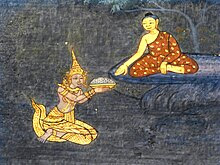 Ashoka planted fruit bearing trees all over his empire.
Ashoka planted fruit bearing trees all over his empire. wants that rule.
wants that rule.
Prapanchmay karunge.” (We will make the whole world Prabuddha Prapanch
generating energy in the human body available ‘for the price of a coffee
a day’ a Stunning anti-ageing breakthrough could see humans live to 150
years and regenerate organ.New process has been found by Harvard
Professor David Sinclair and researchers from the University of New
South Wales, involving cell reprogramming.
to the University of Singapore survey/review based on 131 countries.
From June 18, world will be 100% free and happy from December 8th. Their
predictions about Italy and Spain fit exactly.
Maker of COVID
Tests Says Pandemic is Biggest Hoax Ever Perpetrated It is like a blind
man searching for a black cat in a dark room which is not there.
WORLD WILL BE FREE FROM HOAX - STRENGTHENING THE TRUST FOR BEST OF HEALTH -SINGAPORE UNIVERSITY SURVEY
is one of those advises which are so easy to understand with the
intellect, yet so difficult to understand at deeper levels because our
wrong views constantly interfere in the process. Therefore we need to
get it repeated often, even though that may seem boring to some.
Free Birds
 Vegan
Vegan  White Home
White Home 
Do Good Purify Mind - Path to Eternal Bliss
Hunger is the worst kind of illness said the Buddha
Grow Broccoli  Bell Peppers
Bell Peppers Cucumber
Cucumber  Carrots
Carrots  Beans in pots
Beans in pots
These six spheres of contact, bhikkhus, being well controlled, well guarded,
well protected, well restrained, bring well-being. Which six?
Adantāgutta Sutta
— Uncontrolled and unguarded —
The
eye, ear, nose, tongue, body as a sphere of contact, bhikkhus, being
well controlled, well guarded, well protected, well restrained, brings
well-being.
eye ear,nose,tongue,body as a sphere of contact, bhikkhus,being well
controlled,guarded,protected,
from PBS - Buddha A documentary about Buddhism YT user ComeThailand
Upload http://www.youtube.com/user/
06) Classical Devanagari,Classical Hindi-Devanagari- शास्त्रीय हिंद
मुफ्त पक्षियों शाकाहारी
शाकाहारी  सफेद घर
सफेद घर  अच्छा शुद्ध करें मन - शाश्वत आनंद के लिए पथभूख की सबसे बुरी तरह की बीमारी ने बुद्ध को बतायाBroccoli
अच्छा शुद्ध करें मन - शाश्वत आनंद के लिए पथभूख की सबसे बुरी तरह की बीमारी ने बुद्ध को बतायाBroccoli घंटी peppers
घंटी peppers ककड़ी
ककड़ी  गाजर
गाजर  बर्तन में बीन्ससंपर्क
बर्तन में बीन्ससंपर्क
के इन छह क्षेत्रों, भिक्खस, अच्छी तरह से नियंत्रित, अच्छी तरह से
संरक्षित, अच्छी तरह से संरक्षित, अच्छी तरह से संयम, अच्छी तरह से लाते
हैं। कौन सा छह?Sn 35.94 में बुद्ध के अपने शब्दों में (एस IV 69)अदंतगुट्टा सुट्टा- अनियंत्रित और अनगिनत - देवनागरी में, शास्त्रीय हिंदी-देवनागरी- शाश्वत हिंदआंख,
कान, नाक, जीभ, शरीर को संपर्क के क्षेत्र के रूप में, भिक्खस, अच्छी तरह
से नियंत्रित, अच्छी तरह से संरक्षित, अच्छी तरह से संरक्षित, अच्छी तरह से
संयोजित किया जा रहा है, कल्याण लाता है।भगवान बुद्ध की ऐसे हुई थी मृत्युNello Tv Hindiभगवान बुद्ध की ऐसे हुई थी मृत्युSiddhartha
was only Gautama Buddha. Who later became the originator of Buddhism.
Buddha’s childhood name was Siddhartha. Based on the records of
Sinhalese, Pathak, Kharwel, the date of the assassination of Ashoka, the
record of Canton etc., the date of birth of Lord Buddha is accepted 563
B.C. Lord Buddha is also called Tathagata.Buddha
was born on the day of Vaishak Purnima in Lumbini from the womb of the
Queen of Shukodan, the son of Sakyavans. Kapilavastu was the capital of
the Republic of Shaka. Siddhartha’s father was the Shraddhan of Shakya.
Buddha is also called Shakya Muni.Siddhartha’s
mother Mayaadevi died a few days after her birth. It is said that then a
sage said that he would either become a great king, or a great sage. At
the time of acquiring knowledge, his state was 35 years. After
acquiring knowledge, two shudras called ‘Tapasu’ and ‘Kalik’ came to
him. Mahatma Buddha gave him knowledge and made the first follower of
Buddhism.Death at 80 years of ageGautama
Buddha died in 483 AD in East Kushinara. At that time his age was 80
years. The followers of Buddhism call it ‘Mahaparinirvana’. But
according to his death, Buddhist intellectuals and historians are
unanimous.The last words of Lord Buddha‘O
monks, at this time today tell you so much, as many Samskaras are, all
are going to be destroyed, and do good for your welfare. This is in 483
BC Is the incident. They were eighty years old. ‘Different views on deathIn
Buddhist texts ‘Maha-Parinirvana Sukta’, it is mentioned in Pali
language that, before that rain, Buddha was in the Rajghat before that
year. From there, they reached Vaishali traveling with the monk union.
Here, in the nearby Belgaum, he carried out rain. He got sick here. On
being healthy, he traveled to the village called Pava, then traveling to
Amgram, Bhadgram, Jambugram, Bhoganagar etc.They
stayed here in the forest of mangoes of a mud called Chund
Kammaparutra. He gave them sweet rice, bread and madman in the meal.
Buddha gave sweet rice and bread to others, but Madhav did not give any
to anyone because he understood that it could not be digested. He
himself also ate a bit. The rest turned into the ground. He got sick of
his account. And he diedgautma
buddha, Inspiration, spirituality, abundance, google, Inspirational
story by gautama buddha, negative thoughts, galaxy, गौतम बुद्ध द्वारा
प्रेरणादायक कहानी, गौतम बुद्ध की प्रेरणादायक कहानी, motivation, youtube,
Mainspring, bodhi tree, KnowledgeHindi, appa deepo bhava, knowledge in
hindi, buddha, bhagvan buddha, audio books, Yoga, Meditation, Spiritual,
Temple, India, Spirituality, Mantra, Peace, Shiva, Ram, Dharma,
Chanting, Living, hind, hindi video, spiritual energy, audio hindi
documentary,gautma
buddha, Inspiration, spirituality, abundance, google, Inspirational
story by gautama buddha, negative thoughts, galaxy, गौतम बुद्ध द्वारा
प्रेरणादायक कहानी, गौतम बुद्ध की प्रेरणादायक कहानी, motivation, youtube,
Mainspring, bodhi tree, KnowledgeHindi, appa deepo bhava, knowledge in
hindi, buddha, bhagvan buddha, audio books, Yoga, Meditation, Spiritual,
Temple, India, Spirituality, Mantra, Peace, Shiva, Ram, Dharma,
Chanting, Living, hind, hindi video, spiritual energy, audio hindi
documentary,gautma
buddha, Inspiration, spirituality, abundance, google, Inspirational
story by gautama buddha, negative thoughts, galaxy, गौतम बुद्ध द्वारा
प्रेरणादायक कहानी, गौतम बुद्ध की प्रेरणादायक कहानी, motivation, youtube,
Mainspring, bodhi tree, KnowledgeHindi, appa deepo bhava, knowledge in
hindi, buddha, bhagvan buddha, audio books, Yoga, Meditation, Spiritual,
Temple, India, Spirituality, Mantra, Peace, Shiva, Ram, Dharma,
Chanting, Living, hind, hindi video, spiritual energy, audio hindi
documentary,gautma
buddha, Inspiration, spirituality, abundance, google, Inspirational
story by gautama buddha, negative thoughts, galaxy, गौतम बुद्ध द्वारा
प्रेरणादायक कहानी, गौतम बुद्ध की प्रेरणादायक कहानी, motivation, youtube,
bodhi tree, buddha, bhagvan buddha, audio books, Yoga, Meditation,
Spiritual, Temple, India, Spirituality, Mantra, Peace, Shiva, Ram,
Dharma, Chanting, Living, hind, hindi video, spiritual energy, audio
hindi documentary, motivational, moral, story, कहानी, रस्सी, गांठें,
महात्मा बुद्ध, अनमोल, विचार,Hello Welcome to Nello Newswe are sharing Inspirational & Motivational Videos which Help You For Your Success.All images are only for educational purpose and we do not own the images and also most of them are cc creative licensed ImagesSo Hope You Guys Like My Videos Share And Subscribe.
-
08) Classical Afrikaans– Klassieke Afrikaans
Gratis voëls Vegan
Vegan  Wit Home
Wit Home  Doen goeie reinig gedagte - pad na ewige saligheidHonger is die ergste soort siekte het die Boeddha gesêGrow Broccoli
Doen goeie reinig gedagte - pad na ewige saligheidHonger is die ergste soort siekte het die Boeddha gesêGrow Broccoli Bell Peppers
Bell Peppers Komkommer
Komkommer  Wortels
Wortels  Bone in potteHierdie ses sfere van kontak, bhikkhus, goed beheer, goed bewaak, goed beskerm, goed beperk, bring welsyn. Watter ses?In Boeddha se eie woorde in SN 35.94 (s iv 69)Adantāgutta sutta- Onbeheerde en onbewaakte - in Afrikaans-Klassieke AfrikaansDie
Bone in potteHierdie ses sfere van kontak, bhikkhus, goed beheer, goed bewaak, goed beskerm, goed beperk, bring welsyn. Watter ses?In Boeddha se eie woorde in SN 35.94 (s iv 69)Adantāgutta sutta- Onbeheerde en onbewaakte - in Afrikaans-Klassieke AfrikaansDie
oog, oor, neus, tong, liggaam as ‘n sfeer van kontak, bhikkhus, wat
goed beheer word, goed bewaak, goed beskerm, goed beperk, bring welsyn.intro boeddhismeLennart Becking25 subscribersintro boeddhisme
-
09) Classical Albanian-Shqiptare klasike,BUDA DHE LYPËSI | Perralla per femije | Perralla ShqipAlbanian Fairy Tales305K subscribersBUDA
DHE LYPËSI | The Buddha And The Beggar Story in Albanian | Perralla per
femije | Perralla per femije shqip | Perralla | Peralla shqip per
femije | 4K UHD | Perralla Shqip | Albanian Fairy Tales★ Subscribe us on YouTube : http://bit.ly/2OhbQmJ★ Like us on Facebook : http://bit.ly/2OcIkOJ★ Follow us on Instagram : http://bit.ly/AlbanianFairyTales ★ Twitter : http://bit.ly/2ERzrLh★ Google Plus : http://bit.ly/2Q3ZAHNWatch Children’s Stories in English on our English Fairy Tales Channel : http://www.youtube.com/c/EnglishFairy … Shikoni më shumë video
Shikoni më shumë video  Watch More Videos in Albanian
Watch More Videos in Albanian  ► Mama dhia dhe 7 kecat Fëmijët Tregime - Wolf And The Seven Little Goats : https://youtu.be/3Qp0vt5FAIg► Hansel dhe Gretel - Hansel And Gretel : https://youtu.be/WvvBhpb-nh8► Tre derrkucat e vegjel - Three Little Pigs : https://youtu.be/qJD6NhdYnlc► Rapunzel Shqip - Rapunzel : https://youtu.be/2XpV495NQBA► Hirushja Shqip - Cinderella : https://youtu.be/RJ13uqC-atM► Piter Pan Shqip - Peter Pan : https://youtu.be/4×6DPsWe52c► Këpucët e kuqe - Red Shoes : https://youtu.be/Z112DKu-HYA► Bukuroshja e fjetur - Sleeping Beauty : https://youtu.be/xTpUJs1Iacs► Rumpelstiltskin in Albanian : https://youtu.be/_9Is7cpWyn8► Ali Baba dhe dyzet hajdutet - Alibaba and 40 Thieves : https://youtu.be/fkualPBp4-g► Dielli dhe Hena - Sun And The Moon : https://youtu.be/Ax5XXxQgEKE► Ninulla për foshnje - Lullubay for Babies : https://youtu.be/aLFnMj2U00c► Mbretëresha e Dëborës - Snow Queen : https://youtu.be/uPQwdjBJdbc► Vajza e vogël me kesule të kuqe - Little Red Riding Hood : https://youtu.be/MOrBnhh8FSM► Miushia e vogël që ishte Princesh | A Little Mouse Who Was A Princess : https://youtu.be/ndln1kVwKl4► Borebardha dhe shtate xhuxhat - Snow White And The Seven Dwarfs : https://youtu.be/fH1xW5wMjW4► Magjistari i Ozit - Wizard of Oz : https://youtu.be/OuNne0wPomY► Dymbëdhjetë Princeshat balerina - 12 Dancing Princess : https://youtu.be/_cxd5xFI9tY► Aladini dhe llampa e mrekullueshme - Aladdin and The Magic Lamp : https://youtu.be/e_yGyAN67vI► Pinoku Shqip - Pinocchio : https://youtu.be/AgbV9DghCQMParental guidance: Some material of this video may not be suitable for children’s Below 13 year’s of age.Disclaimer ►The
► Mama dhia dhe 7 kecat Fëmijët Tregime - Wolf And The Seven Little Goats : https://youtu.be/3Qp0vt5FAIg► Hansel dhe Gretel - Hansel And Gretel : https://youtu.be/WvvBhpb-nh8► Tre derrkucat e vegjel - Three Little Pigs : https://youtu.be/qJD6NhdYnlc► Rapunzel Shqip - Rapunzel : https://youtu.be/2XpV495NQBA► Hirushja Shqip - Cinderella : https://youtu.be/RJ13uqC-atM► Piter Pan Shqip - Peter Pan : https://youtu.be/4×6DPsWe52c► Këpucët e kuqe - Red Shoes : https://youtu.be/Z112DKu-HYA► Bukuroshja e fjetur - Sleeping Beauty : https://youtu.be/xTpUJs1Iacs► Rumpelstiltskin in Albanian : https://youtu.be/_9Is7cpWyn8► Ali Baba dhe dyzet hajdutet - Alibaba and 40 Thieves : https://youtu.be/fkualPBp4-g► Dielli dhe Hena - Sun And The Moon : https://youtu.be/Ax5XXxQgEKE► Ninulla për foshnje - Lullubay for Babies : https://youtu.be/aLFnMj2U00c► Mbretëresha e Dëborës - Snow Queen : https://youtu.be/uPQwdjBJdbc► Vajza e vogël me kesule të kuqe - Little Red Riding Hood : https://youtu.be/MOrBnhh8FSM► Miushia e vogël që ishte Princesh | A Little Mouse Who Was A Princess : https://youtu.be/ndln1kVwKl4► Borebardha dhe shtate xhuxhat - Snow White And The Seven Dwarfs : https://youtu.be/fH1xW5wMjW4► Magjistari i Ozit - Wizard of Oz : https://youtu.be/OuNne0wPomY► Dymbëdhjetë Princeshat balerina - 12 Dancing Princess : https://youtu.be/_cxd5xFI9tY► Aladini dhe llampa e mrekullueshme - Aladdin and The Magic Lamp : https://youtu.be/e_yGyAN67vI► Pinoku Shqip - Pinocchio : https://youtu.be/AgbV9DghCQMParental guidance: Some material of this video may not be suitable for children’s Below 13 year’s of age.Disclaimer ►The
Albanian Fairy Tales Channel and all of its videos are not “directed to
children” within the meaning of Title 16 C.F.R. § 312.2 of CHILDREN’S
ONLINE PRIVACY PROTECTION ACT (USA) are not intended for children under
13 years of age. Albanian Fairy Tales CHANNEL and its owner(s), agents,
representatives, and employees do not collect any information from
children under 13 years of age and expressly deny permission to any
third party seeking to collect information from children under 13 years
of age on behalf of Albanian Fairy Tales CHANNEL. Further, Albanian
Fairy Tales CHANNEL denies any and all liability or responsibility for
the practices and policies of YouTube and its agents and subsidiaries,
or any other affiliated third party, regarding data collection.Parental guidance: Some material of this video may not be suitable for children’s Below 13 year’s of age.Disclaimer ►The
Indonesian Fairy Tales Channel and all of its videos are not “directed
to children” within the meaning of Title 16 C.F.R. § 312.2 of CHILDREN’S
ONLINE PRIVACY PROTECTION ACT (USA) are not intended for children under
13 years of age. Indonesian Fairy Tales and its owner(s), agents,
representatives, and employees do not collect any information from
children under 13 years of age and expressly deny permission to any
third party seeking to collect information from children under 13 years
of age on behalf of Indonesian Fairy Tales CHANNEL. Further, Indonesian
Fairy Tales CHANNEL denies any and all liability or responsibility for
the practices and policies of YouTube and its agents and subsidiaries,
or any other affiliated third party, regarding data collection.#AlbanianFairyTalesChannel Mohim i përgjegjësiveKanali
Përralla Shqip (Albanian Fairy Tales Channel) e të gjitha videot e saj
nuk ju drejtohen “ drejtëpërdrejtë” fëmijëve nën moshën 13 vjeç në
kuptimin e kapitullit 16. C.F.R e 312.2 (Akti i mbrojtjes së
privatësisë online të fëmijëve) (SH.B.A). Kanali Përralla Shqip
(Albanian Fairy Tales Channel)dhe pronarët e saj , agjentët,
përfaqësusesit, e të punësuarit, nuk grumbullojnë asnjë informacion nga
fëmijët nën moshën 13 vjeç dhe shprehet se i mohon cdo pale të tretë
të grumbullojë informacion nga fëmijë nën moshën 13 vjeç në emër të
Kanali Përralla Shqip (Albanian Fairy Tales Channel). Kanali Përralla
Shqip (Albanian Fairy Tales Channel) gjithashtu nuk mban përgjegjësi
për praktikat dhe politikat e YouTubit dhe agjentëve apo filialeve te
tij, ose çdo pale të tretë të lidhur me të për sa i përket grumbullimit
të të dhënave.BUDA DHE LYPËSI | Perralla per femije | Perralla ShqipBUDA
DHE LYPËSI | The Buddha And The Beggar Story in Albanian | Perralla per
femije | Perralla per femije shqip | Perralla | Peralla shqip per
femije | 4K UH…
-
10) Classical Amharic-አንጋፋዊ አማርኛ,ረሃብ ከቡድሃው በጣም መጥፎው ህመም ነውብሮኮሊ
 ደወል በርበሬ
ደወል በርበሬ  ካሮስ
ካሮስ  በፖሎች ውስጥ ካሮዎችእነዚህ ስድስት የተገናኙ የግንኙነት, ቢኪኪኪስ, በጥሩ ሁኔታ ቁጥጥር የሚደረግበት, በጥሩ ሁኔታ የተጠበቀ, በደንብ የተጠበቀ, በደንብ ለተጠበቁ, ደህንነት አምጡ. የትኞቹ ስድስት ናቸው?በቡድሃ ውስጥ በ SND 35.94 (SEE IV 69)አድሎጎጎተን ሱታ- ከቁጥጥር ውጭ እና ያልተጠበቁ - በጥንታዊ አማርኛ- በአስተባባሪዓይን, ጆሮ, አንደበት, አካላትን እንደ ተቀባዮች, ቢኤኪኪኪስ, በጥሩ ሁኔታ ቁጥጥር የሚደረግበት, በጥሩ ሁኔታ ጥበቃ ከተደረገለት በደንብ የተጠበቀ, በጥሩ ሁኔታ ያመጣል.
በፖሎች ውስጥ ካሮዎችእነዚህ ስድስት የተገናኙ የግንኙነት, ቢኪኪኪስ, በጥሩ ሁኔታ ቁጥጥር የሚደረግበት, በጥሩ ሁኔታ የተጠበቀ, በደንብ የተጠበቀ, በደንብ ለተጠበቁ, ደህንነት አምጡ. የትኞቹ ስድስት ናቸው?በቡድሃ ውስጥ በ SND 35.94 (SEE IV 69)አድሎጎጎተን ሱታ- ከቁጥጥር ውጭ እና ያልተጠበቁ - በጥንታዊ አማርኛ- በአስተባባሪዓይን, ጆሮ, አንደበት, አካላትን እንደ ተቀባዮች, ቢኤኪኪኪስ, በጥሩ ሁኔታ ቁጥጥር የሚደረግበት, በጥሩ ሁኔታ ጥበቃ ከተደረገለት በደንብ የተጠበቀ, በጥሩ ሁኔታ ያመጣል.
-
11) Classical Arabic-اللغة العربية الفصحى
 المنزل الأبيض
المنزل الأبيض 
 بيل الفلفل الخيار
بيل الفلفل الخيار  الجزر
الجزر  الفاصوليا في الأواني
الفاصوليا في الأوانيالمجالات الستة للاتصال، Bhikkhus، التي يتم التحكم فيها بشكل جيد، حراسة
جيدة، محمية بشكل جيد، مقيدة بشكل جيد، جلب الرفاهية. أي ستة؟
والأذن والأنف واللسان والجسم كجال جهة اتصال و Bhikkhus، يتم التحكم فيها
بشكل جيد، حراسة جيدا، محمية بشكل جيد، مقيدة بشكل جيد، يجلب الرفاهية.
-
12) Classical Armenian-դասական հայերեն,
Անվճար թռչուններ Vegan
Vegan  Սպիտակ տուն
Սպիտակ տուն  Լավ մաքրեք միտքը - Ուղու դեպի հավերժ երանությունՍովը հիվանդության ամենավատ տեսակն է, որը ասում է ԲուդդանԱճեցնել բրոկկոլի
Լավ մաքրեք միտքը - Ուղու դեպի հավերժ երանությունՍովը հիվանդության ամենավատ տեսակն է, որը ասում է ԲուդդանԱճեցնել բրոկկոլի Bell Peppers
Bell Peppers վարունգ
վարունգ  գազար
գազար  լոբի ամաններումԿապի
լոբի ամաններումԿապի
այս վեց ոլորտները, Բհիկխուսը, լավ վերահսկվող, լավ պաշտպանված, լավ
պաշտպանված, լավ զսպված, բերում են բարեկեցություն: Որ վեցն է:Բուդդայի սեփական խոսքերով SN 35.94 (S IV 69)Adantāgutta sutta- Անկառավարելի եւ անկաշկանդ - դասական հայերեն- Դասական հայերենԱչքը,
ականջը, քիթը, լեզուն, մարմինը, որպես շփման ոլորտ, բիբխուս, լավ
վերահսկվող, լավ պաշտպանված, լավ պաշտպանված, լավ զսպված, բերում են
բարեկեցություն:Краткая суть буддизмаAndrey Rus11.4K subscribersКраткая суть буддизма. (из радиопередач Б. Гребенщикова)Полная версия - https://youtu.be/x69iVg0p9HEРекомендации:Музыка для медитаций, йоги, массажа - https://t.me/meditativnenkoNikosho - “33 урока философии буддизма” - https://youtu.be/JlffvynXCTk33 урока философии буддизмаNikosho - 33 урока философии буддизма
-
13) Classical Assamese-ধ্ৰুপদী অসমীয়া
বুদ্ধৰ 10 তা নীতি। 10 Rules of Gautam Buddha.gautama buddha,buddha,life
changing quotes of gautama buddha,gautama buddha quotes in
assamese,gautama budd…
14) Classical Azerbaijani- Klassik Azərbaycan,
 Vegan
Vegan  Ağ Ev
Ağ Ev 
 Bell bibərləri
Bell bibərləri  Xiyar
Xiyar  yerkökü
yerkökü  qablar
qablar
 Bell peppers
Bell peppers pepino
pepino  azenarioak
azenarioak  babarrunak lapikoetan
babarrunak lapikoetanbelarria, mihia, gorputza, kontaktu esparru gisa, Bhikkhus-ek, ondo
kontrolatuta, ondo zainduta, ondo babestuta, ondo atxikituta, ongizatea
dakar.
 Vegan
Vegan  White Home
White Home 
 Bell Peppers
Bell Peppers агурок
агурок  морквы
морквы  бабы ў чыгунах
бабы ў чыгунахшэсць сфер кантакту, Бхайкхус, быўшы добра кантралюецца, добра
ахоўваецца, добра абаронены, добра стрыманыя, прынесці дабрабыт. Якія
шэсць?
вуха, нос, мова, цела, як сфера кантакту, Бхайкхузскага, быўшы добра
кантраляваны, добра ахоўваецца, добра абаронены, добра стрыманыя,
прыносіць дабрабыт.
কান, নাক, জিহ্বা, শরীরের একটি গোলক হিসাবে শরীরের, ভিকখুস, ভাল
নিয়ন্ত্রিত, ভাল সুরক্ষিত, ভাল সুরক্ষিত, ভাল সংযত, ভাল হচ্ছে।
šest sfera kontakta, Bhikkhus, dobro se kontrolira, dobro čuvane, dobro
zaštićene, dobro suzdržane, donose dobrobit. Kojih šest?
uho, nos, jezik, tijelo kao sfera kontakta, Bhikkhus, dobro se
kontrolira, dobro čuvana, dobro zaštićena, dobro suzdržana, donosi dobro
biće.
Sutta, in Marathi recited by Vibha Ratna Nagpur. Ratan Sutta is taken
from the SUttanipata Pali and Translated in Marathy by Mahanaga Ratna in
his book Paritta Sutta Sangaho. In this Sutta the supreme Buddha speaks
about the greatest qualities in the Buddha, the Dhamma and Sangha …
Sutta, in Marathi recited by Vibha Ratna Nagpur. Ratan Sutta is taken
from the SUttanipata Pali and Translated in Marathy by Mahanaga Ratna in
his boo…
шест сфера на контакт, Бхикхус, като добре контролирани, добре
охранявани, добре защитени, сдържани, носят благосъстояние. Кои шест?
ухото, носа, езика, тялото като сфера на контакт, Бхикхус, като добре
контролирани, добре охранявани, добре защитени, добре сдържани, носят
благосъстояние.
to the East: The Bloom of Buddhism in China is a three-part series that
examines the historical development of Buddhism in China. Using
Bodhisattva Xuanzang’s extraordinary efforts as a backdrop, this program
explains what the Buddha really taught and what Buddhism really is.
2,500 years ago in ancient India, Buddha Shakyamuni predicted the spread
of his teaching in a country in the East. This country was called
Cīnasthāna in Sanskrit, later translated as China. In one of the
oft-quoted accounts of the Buddha, in front of a congregation of
disciples, he plucked a lotus flower and none but the venerable Kasyapa
understood his wordless transmission of the unexcelled secret teaching
of enlightenment. That was where and when the transmission of Chan
began. Kasyapa was regarded as the first patriarch of the Chan lineage.
Bodhidharma, the 28th patriarch of this lineage, brought Buddhism to
China, where it slowly blossomed. Buddhism reached its peak of
prominence in Chinese soil during the Tang Dynasty. One of the most
illustrious Buddhist personalities of this time was Bodhisattva
Xuanzang, who took an arduous pilgrimage to ancient India and defeated
500 non-Buddhist philosophers in a Dharma debate held at the grand
capital of Kanyākubja (Kanauji) in the kingdom of Harsha. Upon his
return to China, Xuanzang brought back with him a great number of
Sanskrit scriptures, and translated them with the assistance of imperial
patronage, leaving China with a complete set of teachings regarding the
way to attain Buddhahood. He also propagated the Consciousness-Only
doctrine and established the doctrinal authority of the Ultimate Truth
of Mahāyana Buddhism. All his efforts served to underpin the foundation
of Chinese Chan Buddhism, pushing Mahāyāna Buddhism to a most impressive
boon in the Middle Kingdom. Interwoven with this engaging narrative
regarding the historical development of Buddhism in China are
discussions about the Buddhist doctrine of Eight Consciousnesses, the
profound teaching that that sets Buddhism apart from all non-Buddhist
philosophies.
на просветлените същества представя поредицата „Когато учението на Буда
пристигна в Китай“,за да напомни за истинското учение на Буда и да го
спо…
not believe in anything simply because you have heard it.Do not believe
in traditions because they have been handed down for many
generations.Do not believe in anything because it isspoken and rumoured
by many.Do not believe in anything simply becauseit is found written in
your religious books.Do not believe in anything merely on the
authorityof your teachers and elders.But after observation and
analysis,when you find anything that agrees with reasonand is conducive
to the good and benefit of one and allthen accept it and live up to it.
Mind precedes all knowables,mind’s their chief, mind-made are they.if
with a clear, a confident mindone should either speak or act,happiness
follows caused by that,as one’s shadow ne’er departing.
residing at the Jetavana Monastery in Sàvatthi, the Buddha spoke this
verse, with reference to Maññakuõdali, a young Bràhmin.Maññakuõdali was a
young Bràhmin, whose father, Adinnapubbaka, was very miserly and never
gave anything in charity. Even the gold ornaments for his only son were
made by himself to save payment for workmanship. When his son fell ill,
no physician was consulted, until it was too late. When he realized that
his son was dying, he had the youth carried outside on to the verandah,
so that people com-ing to his house would not see his possessions.On
that morning, the Buddha arising early from his deep meditation of
compassion saw, in his Net of Knowledge, Maññakuõdali lying on the
verandah. So when entering Sàvat-thi for alms-food with his disciples,
the Buddha stood near the door of the Bràhmin Adinnapubbaka. The Buddha
sent forth a ray of light to attract the attention of the youth, who was
facing the interior of the house. The youth saw the Buddha; and as he
was very weak he could only profess his faith mentally. But that was
enough. When he passed away with his heart in devotion to the Buddha he
was reborn in the Tàvatiüsa celestial world.From his celestial abode the
young Maññakuõdali, see-ing his father mourning over him at the
cemetery, appeared to the old man in the likeness of his old self. He
told his father about his rebirth in the Tàvatiüsa world and also urged
him to approach and invite the Buddha to a meal. At the house of
Adinnapubbaka the question of whether one could or could not be reborn
in a celestial world simply by mentally profess-ing profound faith in
the Buddha, without giving in charity or observing the moral precepts,
was brought up. So the Buddha invited Maññakuõdali to appear in person;
Maññakuõ-dali then appeared in his celestial ornaments and told them
about his rebirth in the Tàvatiüsa realm. Only then, the lis-teners
became convinced that the son of the Bràhmin Adin-napubbaka, by simply
devoting his mind to the Buddha, had attained much glory.
manopubbaïgamà mano seññhà manomayàce pasannena manasà bhàsati và
karoti và tatosukhaü naü anveti anapàyini chàyà ivadhammà
as the shadow.All that man experiences springs out of his thoughts. If
his thoughts are good, the words and deeds will also be good. The result
of good thoughts, words and deeds will be happi-ness. This happiness
never leaves the person whose thoughts are good. Happiness will always
follow him like his shadow that never leaves him.
we experience our circumstances depends on the way we inter-pret them.
If we interpret them in the wrong way, we experience suf-fering. If we
interpret them in the right way, we experience happiness. In other
words, our happiness or unhappiness depends on the way we think.Thought
also creates circumstances in a futuristic sense. If we harbour ill will
and speak or act with ill will, people will begin to hate us. We will
be punished by society and the law. After death, we will also be reborn
in a realm of suffering. Here, ‘thought’ refers to kamma (action) and
‘experience’ refers to vipàka (consequences).The message finally
conveyed by this pair of verses is: “Think wrong and suffer. Think right
and be happy.” This pair of verses was spoken by the Buddha to show the
inevitable consequence (vipàka) of good and evil thought (kamma). Man
reaps what he has sown, both in the past and in the present. What he
sows now, he reaps in the present and in the future. Man himself is
responsible for his own happiness and misery. He creates his own hell
and heaven. He is the architect of his own fate. What he makes he can
unmake. Buddhism teaches the way to escape from suffering by
understanding and using the law of cause and effect. Buddhism is very
realistic and optimistic. Instead of blindly depending on unknown
supernatu-ral powers, hoping for happiness, Buddhism finds the true way
to happiness realistically.
அதை கேள்விப்பட்டதால் எதையும் நம்பாதீர்கள். அவர்கள் பல தலைமுறைகளாக
ஒப்படைக்கப்படுவதால் பாரம்பரியங்களை நம்பவில்லை. இது எதையும் நம்பவில்லை,
ஏனென்றால் பலவற்றால் வதந்திகளால் வதந்திகளால் வதந்திகளால் நம்பவில்லை.
உங்கள் மத புத்தகங்களில். உங்கள் ஆசிரியர்களையும் மூப்பர்களையும்
அதிகாரப்பூர்வமாக நம்பவில்லை. அது.
உள்ள Jetavana மடாலயத்தில் வசிக்கும் போது, புத்தர் இந்த வசனம்
பேசினார், ஒரு இளம் bramhmin.Mañauõdali ஒரு இளம் ப்ராமின் இருந்தது,
யாருடைய தந்தை, அடினிபுபிகா, மிகவும் மோசமாக இருந்தது மற்றும் தொண்டு
எதுவும் கொடுத்தார். அவரது ஒரே மகனுக்கான தங்க ஆபரணங்கள் கூட பணிபுரியும்
பணத்தை காப்பாற்றுவதற்காக தன்னை காப்பாற்றின. அவரது மகன்
நோய்வாய்ப்பட்டால், எந்த மருத்துவருக்கும் ஆலோசனையுமில்லை, அது மிகவும்
தாமதமாக இருந்தது. அவரது மகன் இறந்துவிட்டதாக உணர்ந்தபோது, அவர்
வெரந்தாவுக்கு வெளியே நடத்திய இளைஞர்களைக் கொண்டிருந்தார், அதனால் அவருடைய
வீட்டிற்குச் செல்வது அவருடைய உடைமைகளைக் காணவில்லை. காலையில், புத்தர்
இரக்கத்தின் ஆழமான தியானம் ஆரம்பத்தில் எழும் புத்தர் எழுந்திருப்பார் ,
அவருடைய அறிவின் நிகரத்தில், மியூனிகுடாலி வர்ந்தாவில் பொய் சொல்கிறார்.
எனவே, அவரது சீடர்களுடன் சாவாத்-திமிக்குச் செல்லும் போது, புத்தர்
ப்ராமின் அடினுபுகாவின் கதவுக்கு அருகே புத்தர் நின்றார். வீட்டின் உள்துறை
எதிர்கொள்ளும் இளைஞர்களின் கவனத்தை ஈர்ப்பதற்காக புத்தர் ஒரு ஒளியின்
ஒளியை அனுப்பினார். புத்தர் புத்தர் பார்த்தார்; அவர் மிகவும் பலவீனமாக
இருந்தபோதிலும், அவருடைய விசுவாசத்தை மனநிறைவாக மட்டுமே வெளிப்படுத்த
முடியும். ஆனால் அது போதும். அவர் புத்தருக்கு பக்தியுடன் தனது இதயத்தை
கடந்து சென்றபோது அவர் Tàvatiüsa Valestial World இல் மறுபடியும்
மறுபடியும் மறுபடியும் மறுபடியும் கலந்துகொண்டார். அவரது பழைய சுய. அவர்
Tàvatiüsa உலகில் அவரது மறுபிறப்பு பற்றி தனது தந்தையிடம் கூறினார் மற்றும்
ஒரு உணவு புத்தர் அணுக மற்றும் அழைக்க அவரை வலியுறுத்தினார். Adinnapbbaka
வீட்டில் ஒரு வானுரிமை உலகில் ரத்து செய்ய முடியாது என்று கேள்வி, புத்தர்
மீது மனநலம் பேராசிரியர் ஆழமான நம்பிக்கை மூலம், தொண்டு கொடுத்து அல்லது
தார்மீக கட்டளைகளை கவனித்து இல்லாமல், வளர்ந்தார். எனவே புத்தர்
புகழ்பெற்றவர்களை அழைத்தார்; மவானாகு-டாலி பின்னர் அவரது வானுரிய ஆபரணங்கள்
தோன்றினார் மற்றும் Tàvatiüsa Realm இல் அவரது மறுபிறப்பு பற்றி
அவர்களிடம் கூறினார். அப்போதுதான் லிஸ்-டெனர்ஸ் பிர்ஹைமின்
அடின்-நப்புப்பகாவின் மகன் புத்தர் தனது மனதை அர்ப்பணித்ததன் மூலம்,
மிகவும் மகிமையை அடைந்தார் என்று நம்பியிருந்தார்.
நிழல் போல் அந்த மனிதன் தனது எண்ணங்களை வெளியே நீரூற்றுகள் அனுபவிக்க
என்று. அவரது எண்ணங்கள் நல்லது என்றால், வார்த்தைகள் மற்றும் செயல்கள்
நன்றாக இருக்கும். நல்ல எண்ணங்களின் விளைவாக, வார்த்தைகள் மற்றும் செயல்கள்
ஆகியவை மகிழ்ச்சியாக இருக்கும்-
இந்த மகிழ்ச்சி யாருடைய எண்ணங்கள் நல்லவனை விட்டு விடாது. மகிழ்ச்சி
எப்போதும் அவரை விட்டு விட்டு அவரது நிழல் போல் அவரை பின்பற்ற வேண்டும்.
சூழ்நிலைகளை நாம் எவ்வாறு அனுபவிப்போம் என்பது நாம் அவர்களுக்கு இடையேயான
வழிமுறையைப் பொறுத்தது. தவறான வழியில் அவர்களை விளக்கினால், நாங்கள்
SUF-Fering ஐ அனுபவிக்கிறோம். நாம் சரியான வழியில் அவர்களை விளக்கினால்,
நாங்கள் மகிழ்ச்சியை அனுபவிக்கிறோம். வேறு வார்த்தைகளில் கூறுவதானால், நம்
மகிழ்ச்சியோ அல்லது துயரமும் நாம் நினைக்கும் விதத்தில் சார்ந்து
இருக்கிறோம். தவறான விருப்பத்தை நாங்கள் அறிந்திருப்போம் என்றால், பேசுவோம்
அல்லது தவறாக நடப்பால், மக்கள் நம்மை வெறுக்கத் தொடங்குவார்கள். சமுதாயம்
மற்றும் சட்டத்தால் நாம் தண்டிக்கப்படுவோம். மரணத்திற்குப் பிறகு,
துன்பத்தின் ஒரு பகுதியிலேயே நாம் மறுபரிசீலனை செய்வோம். இங்கே, ‘சிந்தனை’
கம்மா (நடவடிக்கை) மற்றும் ‘அனுபவம்’ குறிக்கிறது Vipàka (விளைவுகள்). இந்த
ஜோடி வசனங்களால் இறுதியாக செய்தி அனுப்பப்பட்டது: “தவறாக சிந்தித்து
பாதிக்கவும். சரி என்று மகிழ்ச்சியாக இருங்கள். ” இந்த ஜோடி வசனங்கள்
புத்தர் நல்ல மற்றும் தீய சிந்தனை (கம்மா) தவிர்க்க முடியாத விளைவுகளை
(Vipàka) காட்ட புத்தர் பேசினார். கடந்த காலத்திலும் தற்போதையிலும் அவர்
விதைக்கிறதை அவர் அறுவடை செய்கிறார். அவர் இப்போது விதைக்கிறார், அவர்
தற்போதைய மற்றும் எதிர்காலத்தில் அறுவடை செய்கிறார். மனிதன் தன்னை தனது
சொந்த மகிழ்ச்சியையும் துயரத்திற்கும் பொறுப்பாளியாக இருக்கிறார். அவர்
தனது சொந்த நரகத்தையும் சொர்க்கத்தையும் உருவாக்குகிறார். அவர் தனது சொந்த
விதியின் கட்டிடக் கலைஞராக உள்ளார். அவர் என்ன செய்ய முடியும்? காரணம்
மற்றும் விளைவுகளின் சட்டத்தை புரிந்துகொள்வதன் மூலம் துன்பத்திலிருந்து
தப்பிப்பிழைக்க வழிவகுக்கும் பௌத்த மதம். புத்தமதம் மிகவும் யதார்த்தமான
மற்றும் நம்பிக்கைக்குரியது. தெரியாத சூப்பர்நாதூ-கள்ள சக்திகளைப் பொறுத்து
குருட்டுத்தனமாக இருப்பதற்குப் பதிலாக, மகிழ்ச்சிக்காக நம்பிக்கையுடன்,
பௌத்த மதம் யதார்த்தமாக உண்மையான வழியைக் காண்கிறது.
piece is another fine offering affording a glimpse into the early
Buddhist tradition. We hear again why the Buddha is the Buddha - as the
Theravadins will tell you: there is only one Buddha - at least only one
known to human history.


May he attain Eternal Bliss
Posted by: site admin @ 8:13 am
𝓛𝓔𝓢𝓢𝓞𝓝 4136 Fri 29 Oct 2021


 ,bell pepper,
,bell pepper, cucumber,
cucumber, Beans in Pots,
Beans in Pots,
 Ashoka planted fruit bearing trees all over his empire.
Ashoka planted fruit bearing trees all over his empire. wants that rule.
wants that rule.Veganism: The Fountain of Youth? Or perhaps it’s the cooked food that’s
aging the average person prematurely. In any case, the following people
have truly inspired me to continue my raw vegan journey for life! Their
age and appearance speak volumes of how perfectly aligned the living
foods lifestyle is for the human body. It is an undeniable fact that our
appearance on the outside, especially after our mid years, is clear
reflection of our internal health.

TaliferoStorm Talifero is one of the oldest and most successful
long-term 100% raw vegans in the movement today. He has been raw for
over 42 years, and at age 64 he looks more like he is in his 30’s or
40’s. He’s an athlete, author, illustrator, architect and raw chef who
has brought many innovative recipes to the art of raw cuisine. If you’ve
read any of Storm’s e-books you’re familiar with his maxims: “Fresh is
Best”, “Don’t put your food in the fire” and “Would you like your food
with or without the nutrients?”.
raised a large family, through many years Storm’s recipes have evolved
into a menu plan program that has helped hundreds of people to
experience the raw diet in a format that is doable in modern life. You
can learn more about his work at

first time I saw this Goddess was through this viral video, and I just
couldn’t believe my eyes. This perfect image of health, vitality and
youth with a petite size four frame and a wrinkle-free face is over 70
years of age! She has been a raw vegan for 27 years and vegan for many
years before that. And she’s from my hometown!
The resident of Miami-Dade County, Florida, attributes her youthful
looks to her raw vegan diet and grows almost everything she eats in the
garden she refers to as her ‘fountain of youth’. In her famous
interview, ABC reporters explored her back yard, to find that every inch
is covered in plants and trees that grow the fruits Mrs. Larkins eats.
She told reporters “’My diet consists of fruits, nuts, vegetables and
seeds. I do a lot of sprouting of seeds and as you can see from my
garden and of course, these are the raw foods that I eat.’” http://www.annettelarkins.com/

was one of the first people I came across in my journey for true
health. His juice recipe, the Lemon Ginger Blast absolutely changed my
life. It was the effect this juice had on my life that got me curious
about raw foods, and for that I’m so very grateful! Lou drinks this
green juice every day and I can totally see (and feel) how this
concoction contributes to this man’s superior health! Lou has been on a
raw vegan diet for a whopping 39 years. Before he started the raw vegan
diet he suffered from a multitude of illnesses ranging from asthma to a
tumor, eventually coming to a place where he was able to heal himself
from chronic asthma, severe allergies, major constipation, candida,
tumors, severe acne, and debilitating arthritis. He now teaches the 4
principles that helped him gain his life back and reach outstanding
health and core strength like I’ve never seen before! You can find his
work here: http://loucorona.com/

Zavasta is one of my greatest heroes. This 56 year old beauty is a very
witty and humorous writer, researcher, teacher, and entrepreneur. She
has written 5 books on living foods and natural anti-aging, two of which
I’ve read and loved. She’s been eating raw for 17 years now. With her
diet and lifestyle change she conquered surgical trauma, pain and her
former identity as a “cripple.” I’ve read two of her books, Quantum
Eating, and Raw Food and Hot Yoga. Both are brilliant and highly
recommended for the seasoned raw foodist. You can find them in my Books
page. The firmness of her skin and waist size tell us that she’s really
on to something. And it’s definitely not botox or plastic surgery! http://www.beautifulonraw.com/

the first time I saw Markus, I thought he was in his late 20s early
30s. Boy was I wrong. This man is 52 years old! Watch this video of him
proving it, since no one believes him. He’s been eating raw foods since
his late twenties, therefore he’s been raw for over 20 years. And his
vibrant complexion and super fit body says it all. As you will see on
his page, he looks younger than he did at 27! Markus is all about
abundance, health and financial freedom. He has an inspiring channel on
youtube, and has written 4 books. His background is from the movie
industry and now he uses it to entertain and lead people to a better and
healthier lifestyle. You can find his work at http://www.markusrothkranz.

like you’re in your 20′s at 75, is quite an amazing thing. I accredit
this youthful look and spirit not only to my attitude, but really to my
way of eating which is a raw vegan – living foods lifestyle.” She was
voted sexiest Vegetarian over 50, when she was actually 70 then!
Although Mimi has only been raw for a few years, she attributes her
youthfulness to over 40 years of 100% veganism. It was when she started
feeling arthritic pains in her joints and her blood pressure was up that
she looked into eating raw, and as soon as she did, the pain and
pressure went away. Mimi is so vibrant and youthful! She is the author
of a book called Live Raw. This woman is amazing and looks great for her
age. She’s a great example of how veganism is great in maintaining
youthfulness, but in contrast, raw veganism is age defying and can
actually turn back the biological clock! Find Mimi’s work here: http://www.youngonrawfood.com
I don’t know about you, but to me, just taking a look at these
marvelous beings is living proof that raw foods and natural hygiene is
indeed the optimal lifestyle for human health. It clearly shows that our
bodies are designed for this lifestyle. Contrary to what many of us
have been led to believe, aging is NOT a normal process that is supposed
to start taking place at our 30’s. Wrinkles, sagging skin, hair loss
and all the ailments that follow after 30 or 40 is due to the
degeneration of the body after years of punishing it with a diet void of
nutrients and enzymes. That plus eating a diet of cooked (dead) foods,
processed junk and artery clogging dairy and meats will certainly take a
toll on your body in the form of premature aging, cancer, diabetes,
heart failure and all the other life sucking problems we call “disease”.
As a 28 year old that has been raw vegan for only 1 year I can already
start to see major differences in the way that I look. In fact, I saw
these changes 3 months into this diet. I can only imagine how I have
completely changed the entire trajectory of my life by correcting my
diet. I know that at some point I’ll probably stop counting the years
because it’s no longer relevant to me. In the end, you’re only as old as
you feel

you for reading! This article was written by Diana Paez, a living foods
devotee, natural hygienist, and raw chef in the making. If you liked
this post, and want to show your appreciation please like, share or
comment below. I’d love to hear from you! I am always open to any
questions, suggestions, or comments. You are more than welcome to share
the information in this article in your own blog or page, all I ask is
that you link back to this post. Love, Peace and Health to you, friends.
Prapanchmay karunge.” (We will make the whole world Prabuddha Prapanch
generating energy in the human body available ‘for the price of a coffee
a day’ a Stunning anti-ageing breakthrough could see humans live to 150
years and regenerate organ.New process has been found by Harvard
Professor David Sinclair and researchers from the University of New
South Wales, involving cell reprogramming.
to the University of Singapore survey/review based on 131 countries.
From June 18, world will be 100% free and happy from December 8th. Their
predictions about Italy and Spain fit exactly.
Maker of COVID
Tests Says Pandemic is Biggest Hoax Ever Perpetrated It is like a blind
man searching for a black cat in a dark room which is not there.
WORLD WILL BE FREE FROM HOAX - STRENGTHENING THE TRUST FOR BEST OF HEALTH -SINGAPORE UNIVERSITY SURVEY
 Online Positive Universal Prabuddha Intellectuals Convention.
Online Positive Universal Prabuddha Intellectuals Convention.
After Bath Practice Patanjali Yogic Meditation From 04:00 AM to 05:00 AM at
𝙆𝙪𝙨𝙝𝙞𝙣𝙖𝙧𝙖 𝙉𝙄𝘽𝘽Ā𝙉𝘼 𝘽𝙃𝙐𝙈𝙄 𝙋𝙖𝙜𝙤𝙙𝙖
18𝙛𝙩 𝘿𝙞𝙖. 𝙖 3𝘿 360 𝙙𝙚𝙜𝙧𝙚𝙚 𝙘𝙞𝙧𝙘𝙪𝙡𝙖𝙧 𝙋𝙖𝙜𝙤𝙙𝙖 𝙖𝙩
𝙒𝙝𝙞𝙩𝙚 𝙃𝙤𝙢𝙚,
668 5𝙩𝙝 𝘼 𝙈𝙖𝙞𝙣 𝙍𝙤𝙖𝙙,
8𝙩𝙝 𝘾𝙧𝙤𝙨𝙨, 𝙃𝘼𝙇 𝙄𝙄𝙄 𝙎𝙩𝙖𝙜𝙚,
𝙋𝙪𝙣𝙞𝙮𝙖 𝘽𝙃𝙐𝙈𝙄 𝘽𝙚𝙣𝙜𝙖𝙡𝙪𝙧𝙪,
𝙈𝙖𝙜𝙖𝙙𝙝𝙞 𝙆𝙖𝙧𝙣𝙖𝙩𝙖𝙠𝙖,
𝙋𝙧𝙖𝙗𝙪𝙙𝙙𝙝𝙖 𝘽𝙝𝙖𝙧𝙖𝙩 𝙄𝙣𝙩𝙚𝙧𝙣𝙖𝙩𝙞𝙤𝙣𝙖𝙡

𝙗𝙪𝙙𝙙𝙝𝙖𝙨𝙖𝙞𝙙2𝙪𝙨@𝙜𝙢𝙖𝙞𝙡.𝙘𝙤𝙢
𝙟𝙘𝙨4𝙚𝙫𝙚𝙧@𝙤𝙪𝙩𝙡𝙤𝙤𝙠.𝙘𝙤𝙢
𝙟𝙘𝙝𝙖𝙣𝙙𝙧𝙖𝙨𝙚𝙠𝙝𝙖𝙧𝙖𝙣@𝙮𝙖𝙝𝙤𝙤.𝙘𝙤𝙢
080-25203792
9449260443
9449835875
Spread the Words of Buddha from
𝙝𝙩𝙩𝙥://𝙨𝙖𝙧𝙫𝙖𝙟𝙖𝙣.𝙖𝙢𝙗𝙚𝙙𝙠𝙖𝙧.𝙤𝙧𝙜, WhatApp, Telegram,Facebook, Twitter, more than 5000 Emails.
Practicing Mindful Swimming at Dolphin Aquatics at Halasuru from 05:30 AM to 07:00 AM
-
84) Classical Romanian-Clasic românesc,Un 1.53-55.Buddha, budism, budist accharāsaṅghāta peyyāla în română-clasic român- Chiar și pentru timpul unui degetDacă
chiar și pentru vremea unui deget, Bhikkhus, un Bhikkhu urmărește, se
dezvoltă, consideră o minte de bunăvoință, el este numit Bhikkhu care nu
este lipsit de Jhāna, care respectă învățătura profesorului, care
acționează în conformitate cu instrucțiunile sale, Și cine nu mănâncă
mâncarea de alimente a țării în zadar.how mult mai mult, atunci cei care
o practică frecvent!
-
85) Classical Russian-Классический русский,1.53-55.Будда, буддизм, буддийский Accharāsaṅghāta Peyyāla на русско-классическом русском- Даже на время защелки пальцев -Если
даже на время защелнения пальцев, бхикшу, бхикху преследует,
развивается, считает разум доброй воли, он называется бхикху, который не
лишен Джана, который соответствует преподаванию учителя, который
действует в соответствии с его обучением, И кто не ест целую еду
милостыню в стране. Как гораздо больше, то те, кто часто практикуют это
часто!«НЕТ ПРИВЯЗАННОСТЕЙ — НЕТ СТРАДАНИЙ» — УЧЕНИЯ БУДДЫ, КОТОРЫЕ СТОИТ ПРОЧЕСТЬ КАЖДОМУ (мотивация)Deep Relaxation Ambient Music239 subscribers«НЕТ ПРИВЯЗАННОСТЕЙ — НЕТ СТРАДАНИЙ» — УЧЕНИЯ БУДДЫ, КОТОРЫЕ СТОИТ ПРОЧЕСТЬ КАЖДОМУУроки, которым учишься всю жизнь.Буддизм
— самая древняя и самая адаптируемая для разного рода учений мировая
религия. Мудрость философии буддизма легко постигнуть, достаточно
выбрать самые близкие ее постулаты для себя. Мы остановились на 10 самых
важных уроках этой религии, которые избавят от привязанностей и
страданий, а также изменят вашу жизнь.Композиция “Eastminster” принадлежит исполнителю Kevin MacLeod. Лицензия: Creative Commons Attribution (https://creativecommons.org/licenses/ …).Оригинальная версия: http://incompetech.com/music/royalty- ….Исполнитель: http://incompetech.com/
«НЕТ ПРИВЯЗАННОСТЕЙ — НЕТ СТРАДАНИЙ» — УЧЕНИЯ БУДДЫ, КОТОРЫЕ СТОИТ ПРОЧЕСТЬ КАЖДОМУ (мотивация)«НЕТ
ПРИВЯЗАННОСТЕЙ — НЕТ СТРАДАНИЙ» — УЧЕНИЯ БУДДЫ, КОТОРЫЕ СТОИТ ПРОЧЕСТЬ
КАЖДОМУУроки, которым учишься всю жизнь. Буддизм — самая древняя и самая
адаптиру…
-
86) Classical Samoan-Samoan Samoa,

A 1.53-55Buddha, Buddhasm, Buddhist AcacharitissaṅGhi o Peyyala i Samoa Scal-Samoa Samoa- Tusa lava mo le taimi o le tamatamailima snap -Afai
o le taimi o le tamatamai lima, Bhikkhus, o le Bhikkhu tuli, mafaufau
loloto i le agalelei o le aʻoaʻo, Ma o ai e le ‘ai o le atunuʻu o le
atunuʻu o meaʻai i le mafaufau. E ui i lea, o lea, oi latou e faʻatinoThe Samoan Way Episode 3: God and the BuddhaTzu Chi USA 3603.94K subscribersAs
a practicing Christian, Miss Kay’s husband, Joseph, is wary of working
with the Buddhist Tzu Chi Foundation. But with a little encouragement
from his wife, Joseph begins to see the power of Tzu Chi’s help around
the world, and that any person, of any faith, is welcome.youtube.comThe Samoan Way Episode 3: God and the BuddhaAs
a practicing Christian, Miss Kay’s husband, Joseph, is wary of working
with the Buddhist Tzu Chi Foundation. But with a little encouragement
from his wife…
-
87) Classical Sanskrit छ्लस्सिचल् षन्स्क्रित्
87) छ्लस्सिचल् षन्स्क्रित् छ्लस्सिचल् षन्स्क्रित्
आण् 1.53-55
Bउद्ध, Bउद्धिस्म्, Bउद्धिस्त् आच्च्हर्āसṅघ्āत Pएय्य्āल इन् षन्स्क्रित् छ्लस्सिचल् षन्स्क्रित्
— Eवेन् fओर् थे तिमे ओf अ fइन्गेर् स्नप् —ईf
एवेन् fओर् थे तिमे ओf अ fइन्गेर् स्नप्,भिक्खुस्,अ भिक्खु पुर्सुएस्,
देवेलोप्स्,चोन्सिदेर्स् अ मिन्द् ओf गोओद्wइल्ल्,हे इस् चल्लेद् अ भिक्खु
wहो इस् नोत् देवोइद् ओf झ्āन,wहो चोम्प्लिएस् wइथ् थे टेअच्हेर्’स्
तेअच्हिन्ग्,wहो अच्त्स् अच्चोर्दिन्ग् तो हिस् इन्स्त्रुच्तिओन्,अन्द् wहो
दोएस् नोत् एअत् थे चोउन्त्र्य्’स् अल्म्स् fओओद् इन् वैन्.ःओw मुच्ह्
मोरे,थेन्,थोसे wहो प्रच्तिचे इत् fरेqउएन्त्ल्य्! -
-
88) Classical Scots Gaelic-Gàidhlig Albannach Clasaigeach,
1.53-55Buddha, Bùdachas, Acrdhist ACCHARāsaṅghāta Peyyāla ann an Gàidhlig-Gaelic-Gàidhlig Alba-Gàidhlig Eadar-nàiseanta Clasaigeach- Eadhon airson àm snap meòir -Ma
tha e eadhon airson ùine SNAP meòir, tha Bhikkhu a ‘leantainn gu deagh
rùn, is e a bhikkhu a tha air an t-ainm Gluenwhu, a tha a’ cumail ri
Teagasg an Tidseir, a tha ag obair a rèir an stiùireadh aige, Agus cò
nach ith biadh als na dùthcha gu dìomhain gu dìomhain, an uairsin, an
fheadhainn a tha gad chleachdadh gu tric!

-
89) Classical Serbian-Класични српски,
 1.53-55Буда, будизам, будистички акантски акантски пеииала у српским-класичним српским- Чак и за време скакача прста -Ако
1.53-55Буда, будизам, будистички акантски акантски пеииала у српским-класичним српским- Чак и за време скакача прста -Ако
је и за време Снап ФИНГ-а, Бхиккхус, Бхиккху, развија, сматра да је ум
добре воље, он назива Бхиккху који није лишен Јхане, који је у складу са
наставником, која делује у складу са његовим упутством А ко не једе
храну у земљи у узалуд, узалуд. Колико још више, они који то често
вежбају!Будда - фильм Дэвида ГрубинаGennadiy Melnik642 subscribersБудда (2010)Режиссер: Дэвид ГрубинТекст читает: Ричард ГирАнглоязычная версия фильма выложена издателями в открытый доступ по адресу:Этот
фильм повествует о жизни и учении Будды. За свои художественные
достоинства картина получила множество наград. В фильме представлены
работы выдающихся художников и скульпторов, которые на протяжении двух
тысячелетий изображали жизнь Будды в искусстве. Кроме того, вы сможете
познакомиться с основами древнейшего учения Будды, которое доступно и
интересно изложено нашими современниками — поэтом Уильямом Мервином,
Его Святейшеством Далай-Ламой XIV, писателем Робертом Турманом и многими
другими. Узнайте больше о медитации, об истории Буддизма, и о том, как
практиковать учение Будды в повседневной жизни.youtube.com
(2010)Режиссер: Дэвид ГрубинТекст читает: Ричард ГирАнглоязычная версия
фильма выложена издателями в открытый доступ по
адресу:http://www.pbs.org/
-
90) Classical Sesotho-Seserbia ea boholo-holo,1.53-55
Buddhism, Mabuddha Accharāsaṅghāta Pyyyāla ka Sesotho-Holo Boholo-Holo
Boholo-Holo Boholo-Holo Boholo-Holo Boholo-Holo Boholo-Holo Boholo-Holo
Boholo-Holo Boholo-Holo Boholo-Holo Boholo-Holo Boholo-Holo Boholo-Holo
Boholo-Holo Boholo-Holo Boholo-Holo Boholo-Holo Boholo-Holo Boholo
le nakong ea mocheso o lerootho, Bihkkheus, Bihkkus, e tšosang, e
bitsoa Bhikkhu ea bakang thuto ea mosuoe, Mme ke mang ea sa jeleng lijo
tsa lijo tsa mahae ka lefeela. Joale, ho fetang ho feta moo ba bo etsang
khafetsa!
-
91) Classical Shona-Shona Shona,
-
1.53-55Buddha, Buddhism, Buddhist Accharātaṅghāta Peyyāla in Shona-shona Shona- kunyangwe yenguva yemunwe snap -Kana
kunyange kwenguva yemunwe, bhikkhus, inovandudza, inofunga nezvenyaya
yekufarirwa, anonzi bhikkhu asingadziviriri yeJhāna, anoenderana
nedzidziso yemudzidzisi, anoita maererano nekuraira kwake, Uye ndiani
asingadye nyika inoparidza chikafu pasina. Zvikuru sei, avo vanozviita
kazhinji!
-
92) Classical Sindhi,هڪ 1.53-55ٻڌ ڌرم، ٻڌمت، بدمعاش ايڪيچاٿاياتي پيتا- هڪ آ finger ر جي سنيپ جي وقت تائين -جيڪڏهن
هڪ آ finger رين جي سنيپ، بيخبرس، هڪ ڀائيڪي جو تعاقب، جيڪو هن جي هدايتن
جي ذهن کي ترتيب ڏئي ٿو، جيڪو هن جي هدايتن جو تعين ڪري ٿو، جيڪو هن جي
هدايتن جي مطابق ڪري ٿو، جيڪو هن جي هدايتن جي مطابق ڪري ٿو ۽ ڪير آهي جيڪو
ملڪ جا المز خوراڪ ۾ کائي ٿو، ان کان گهڻو ڪجهه نه ٿو ڪري، ته، جيڪي اهو
جيڪي اهو جيڪي گهڻو مشق ڪن ٿا!
-
93) Classical Sinhala-සම්භාව්ය සිංහල,1.53-55බුද්ධ, බුද්ධාගම, බෞද්ධ අච්රිරසගෙගාග්රා සිංහල පීවාහි සිංහල- ඇඟිලි තුඩු දෙන කාලය සඳහා පවා -ඇඟිලි
ස්නැප් එකකට පවා භික්ෂූන් වහන්සේලා, භික්ෂූන් වහන්සේලා හොඳ හිතක් ඇති
මනික්ක, ඔහු විසින් ඔහුගේ උපදෙස් අනුව ක්රියා කරන ගුරුවරයාගේ ඉගැන්වීම්වලට
අනුකූල වන භික්ෂු ලෙස හැඳින්වේ. රටේ දානමය ආහාර නිෂ් ain ල ලෙස අනුභව
නොකරන්නේ කවුද? එසේනම්, එය නිතර පුරුදු කරන අයට තව බොහෝ දේ?
-
94) Classical Slovak-Klasický slovenský,1.53-55Buddha, budhizmus, budhista Accharāsaṅghāta Peyyāla v Slovensko-Klasický Slovenský- Dokonca aj pre čas prstovAk
aj pre čas prsta Snap, Bhikkhus, Bhikkhu sleduje, vyvíja, považuje
myseľ Goodwill, on sa nazýva Bhikkhu, ktorý nie je bez Jhāna, ktorý je v
súlade s učiteľom učiteľa, ktorý pôsobí podľa jeho pokynu, A kto
nejedzte alžné jedlo v krajine vo Vain.How oveľa viac, potom tí, ktorí
to často praktizujú!25 Životných Ponaučení od Tibetských MníchovSkvelý Život337 subscribersMnísi
v Tibete trávia väčšinu svojho času meditovaním a preto po rokoch
strávených v meditácii dosiahnu hlboké poznanie a múdrosť. Tu vám
prinášam 25 životných ponaučení od týchto múdrych ľudí. Aplikujte ich na
seba a sledujte ako sa váš život zmení a zlepší.
25 Životných Ponaučení od Tibetských MníchovMnísi
v Tibete trávia väčšinu svojho času meditovaním a preto po rokoch
strávených v meditácii dosiahnu hlboké poznanie a múdrosť. Tu vám
prinášam 25 životný…
-
95) Classical Slovenian-Klasična slovenska,
celo za čas snap prstov, Bhikkhus, Bhikkhu zasleduje, razvija, meni, da
je um dobre volje, ki se imenuje Bhikkhu, ki ni brez JHāne, ki je v
skladu z učiteljevim učiteljem, ki deluje v skladu z njegovim navodilom,
In kdo ne jedo državne hrane Alms v Vainu.Kako več, potem, tisti, ki
prakticirajo pogosto!
Buda i meditacijaSadržaj u mp3 formatu preuzet sa programa radio
HRAST-a http://www.hrast.orgHrišćanski internet radioEvanđeoske crkve u
Srbiji=====…
-
-
96) Classical Somali-Soomaali qowmiyadeed,
A 1.53-55Buddha, Buddhism, Buddhist BudchaṅGaṅgāta peylyāla oo ku sugan Soomaaliya-Soomaaliya- xitaa waqtiga farta sanka -Haddii
xitaa waqtiga farta lagu sawiro, bhikkhus, oo loo yaqaan ‘Bhikkhus’, oo
loo yaqaan ‘Bhikkhus’, oo loo yaqaan ‘Bhikkhus’, ayaa loosaaraa
Bhikkhu, oo loo arko inuu yahay Bhikkhu oo aan ka fogayn cilmiga
macalinka, oo u dhaqma siduu wax ku baranayo, Oo bal yaa cunay cuntadii
sadaqadda waddanka oo aan micne lahayn.Meeting the first monk of Africa, Venerable Bhikkhu Bhuddharakkhita | EP.13 | TRUE LITTLE MONK |True Little Monk14.3K subscribersThe 13th day of TRUE LITTLE MONK, A Wisdom Training Programme for Novices.In the week of “LIVE” weekly concept.All
novices started their day by doing morning chanting and receiving
food-offerings. Today, there were a lot of novices’ families and local
people and students coming to give alms to the monks and novices. Then
they serviced the monastic mentors by asking for permission to clean
their feet.In
the Dhamma practice class, they learned about the basic rules of
training to be novices After that, the monastic mentors led them to the
outdoor classroom to learn and experience the surrounding nature.
Monastic mentors also showed the warmwood tree which is often used in
class as a tool to positively discipline and calm down the naughty
novices.Today
novices leaned how to do walking meditation. After the class, it was
the meal time, the monks and novices did chanting and blessing before
eating foods.In
the afternoon class “Learning Process”, they learned an inspirational
story of the first monk of Africa, “Venerable Bhikkhu Bhuddharakkhita”
and his Dhamma journey to the area that nobody knows about Buddhism and
how he overcomes difficulties. Novices also did the activities to
practice mindfulness.After
the class, they had refreshments with the Venerable Bhikkhu
Bhuddharakkhita and monastic mentors. They then helped the monastic
mentors sweep the temple before did evening chanting. At night, the
monastic mentor led the novices to do mindful walking meditation.The
final part is the “Daily Reflections”, Hunter Trabing, psychologist and
minder, and Jack Brown, an observer, came to summarize the progress of
all novices.Meeting the first monk of Africa, Venerable Bhikkhu Bhuddharakkhita | EP.13 | TRUE LITTLE MONK |
-
97) Classical Spanish-Español clásico,Un 1.53-55Buddha, Budismo, Budista AccharāsaṅGhāta Peyyāla en Español-Español Clásico- Incluso para el tiempo de un dedo.Si
incluso durante el tiempo de un dedo, Bhikkhus, un Bhikkhu persigue, se
desarrolla, considera una mente de la buena voluntad, se le llama
Bhikkhu que no está desprovisto de Jhāna, quien cumple con la enseñanza
del maestro, que actúa de acuerdo con su instrucción, Y que no come la
comida de la limosna del país en vano. ¿Cuánto más, entonces, aquellos
que lo practican con frecuencia?Siddharta Gautama Buda - Los 53 Sutras de Buda (Audiolibro Completo en Español) “Voz Real Humana”AMA Audiolibros766K subscribersSi te gusta nuestro canal puedes ser miembro prioritario a través patreon: https://www.patreon.com/AMAaudiolibros Tendrás acceso exclusivo a los vídeos de los audiolibros y sin publicidad días antes de su publicación en YouTube.También aceptamos y agradecemos donaciones altruistas con Paypal: https://www.paypal.me/AMAaudiolibros Merchandising: teespring.com/stores/amaaudiolibros Puedes comprar este audiolibro y el libro electrónico (ebook) en las diferentes tiendas digitales:Audiolibro: http://bit.do/SutrasBuda_Audiolibro (Audible)Ebook: http://bit.do/SutrasBuda_eBook (Amazon)[00:00:00] Títulos[00:00:29] Introducción[00:09:00] Prólogo[00:10:55] Sutra 1[00:11:57] Sutra 2[00:13:16] Sutra 3[00:14:30] Sutra 4[00:16:13] Sutra 5[00:17:08] Sutra 6[00:17:58] Sutra 7[00:18:43] Sutra 8[00:19:40] Sutra 9[00:20:24] Sutra 10[00:21:30] Sutra 11[00:22:12] Sutra 12[00:23:03] Sutra 13[00:23:43] Sutra 14[00:24:27] Sutra 15[00:25:07] Sutra 16[00:25:46] Sutra 17[00:26:23] Sutra 18[00:27:12] Sutra 19[00:27:48] Sutra 20[00:28:28] Sutra 21[00:29:22] Sutra 22[00:30:01] Sutra 23[00:31:02] Sutra 24[00:31:56] Sutra 25[00:32:50] Sutra 26[00:34:12] Sutra 27[00:35:20] Sutra 28[00:36:30] Sutra 29[00:37:29] Sutra 30[00:38:56] Sutra 31[00:40:14] Sutra 32[00:41:24] Sutra 33[00:42:20] Sutra 34[00:43:10] Sutra 35[00:44:05] Sutra 36[00:45:07] Sutra 37[00:45:59] Sutra 38[00:46:48] Sutra 39[00:47:41] Sutra 40[00:49:01] Sutra 41[00:50:02] Sutra 42[00:50:59] Sutra 43[00:51:40] Sutra 44[00:52:34] Sutra 45[00:53:31] Sutra 46[00:54:27] Sutra 47[00:55:08] Sutra 48[00:56:04] Sutra 49[00:56:57] Sutra 50[00:58:02] Sutra 51[00:59:09] Sutra 52[01:00:10] Sutra 53[01:01:28] FinLos
sutras son mayoritariamente discursos dados por Buda o alguno de sus
discípulos más próximos. Designa en el budismo los textos escritos en
los que se exponen enseñanzas y preceptos relativos a las diferentes
vías de conocimiento para alcanzar la “iluminación” o realización
espiritual completa del ser humano.Transcurridos
varios siglos tras la muerte de Buda y que sus enseñanzas no se
perdieran en la transmisión oral, sus seguidores las transcriben en
forma de Sutras.Siddharta
Gautama es la figura central del budismo, y sus relatos, discursos y
reglas monásticas son creencias budistas que, después de su muerte,
fueron resumidas.Los 53 Sutras de BudaLee ahora en digital con la aplicación gratuita Kindle.
-
98) Classical Sundanese-Sunda Klasik,
Hiji 1,53-53Buddha, Budha, Budha Budha Accharāsaṅgāta Suneyāla di Sundan Mang- malah kanggo waktos jepret ramo -Upami
bahkan kanggo waktos ramo snap, Bhikko, prasu bodas, ngembang, nganggap
yhikkhu, anu menakkan ku pangajaran guru, anu ngalaksanakeun panawaran
guru, anu ngalaksanakeun instruksi Sareng anu sanés tuang tuangeun
Alatan Alatan di Nagara.KKTong seueur, maka, tiingan sering langkung
sering!The Origin of the Buddha Image: Evidence (009)Robert Bracey173 subscribersIn
the three parts of this episode I mention a lot of publications and
recommend a number as suggested reading. So in case you want the
details, here are the various articles and books…Cunningham,
A. (1879) The stupa of Bharhut: a Buddhist monument ornamented with
numerous sculptures illustrative of Buddhist legend and history in third
century B.C.Marshall, J. H. (1940) The monuments of Sāñchi, 3 volumesHartel, H. (1985) ‘The concept of the Kapardin Buddha type of Mathura’ in South Asian Archaeology 1983, 653-78Cribb,
J. (2018) ‘Dating the Bimaran casket – its conflicted role in the
chronology of Gandharan Art’ Gandharan Studies vol. 10, 57-91Cribb,
J. (2018) ‘The Bimaran casket, the problem of its date and
significance’ in Stargardt & Willis, Relics and Relic Worship in
Early Buddhism, 47-65Lohuizen van Leeuw, J. (1981) ‘New evidence with regard to the origin of the Buddha image’ South Asian Archaeology 1979, 377-400Juhyung Rhi (2010) ‘Reading Coomaraswamy on the origin of the Buddha image’ Artibus Asiae, vol.70, no.1, 151-72Bracey, R. (2020) ‘The Gandharan Problem’ in Elsner, J. (ed.) Empires of Faith in Late Antiquity, 27-50Abe,
S. (1995) ‘Inside the Wonder house: Buddhist Art and the West’ Lopez,
D.S. (ed.) Curators of the Buddha: The Study of Buddhism under
Colonialism, 63-106DeCaroli, R. (2015) Image ProblemsSchopen,
G. (1988-9) “On monks, nuns, and ‘vulgar’ practices: the introduction
of the image cult into Indian Buddhism” Artibus Asiae, vol.49, no.1,
153-68Fogelin, L. (2015) An Archaeological History of Indian BuddhismLinrothe, R. (1993) ‘Inquiries into the origin of the Buddha Image: A review’ East & West, vol.43, 241-56Akira Shimada (2013) Early Buddhist Architecture in Context The Great Stūpa at Amarāvatī (Ca. 300 BCE-300 CE)Huntington,
S.L. (2015) ‘Shifting the Paradigm: The Aniconic Theory and its
Terminology’ South Asian Studies, vol.31, no.2, 163-86The Doug’s Dharma podcast I discussed is available at www.youtube.com/watch?v=qRqxuxS1qUg The talk by DeCaroli starts at 9:23 at www.youtube.com/watch?v=2SVbJml0zOc The Origin of the Buddha Image: Evidence (009)In
the three parts of this episode I mention a lot of publications and
recommend a number as suggested reading. So in case you want the
details, here are the…
-
99) Classical Swahili,Kiswahili cha Classical,1.53-55.Buddha, Buddhism, Buddhist Accharāsaṅghāta Peyyāla katika Kiswahili, Kiswahili cha Classical- Hata kwa wakati wa snap ya kidole -Ikiwa
hata kwa wakati wa snap ya kidole, Bhikkhus, yule bhikkhu, huendelea,
anaona mawazo ya wema, anaitwa Bhikkhu ambaye si bila ya Jhāna, ambaye
anazingatia mafundisho ya mwalimu, ambaye hufanya kulingana na
mafundisho yake, Na ambao hawana kula chakula cha nchi kwa bure.Kwa
mengi zaidi, basi, wale ambao hufanya mara kwa mara!JATAKA TALES OF BUDDHA -2AThe Madras Documentary Company25.3K subscribersAmong
the oldest story-telling traditions, we find the Jataka tales, which
were told by Buddhists to inspire people with moral values. The Jataka
tales go back to the 3rd century B.C. Because of the limited literacy of
the times, travelling storytellers known as Jataka bhanakas were
selected and given the task of reaching the stories to every corner of
the land and beyond. The Jataka Tales carried strong and inspiring
messages of kindness, compassion, generosity, non-violence,
self-sacrifice, charity and the need to abjure greed. Jataka stories
explain concepts of karma and rebirth, and teach moral values.JATAKA TALES OF BUDDHA -2AAmong
the oldest story-telling traditions, we find the Jataka tales, which
were told by Buddhists to inspire people with moral values. The Jataka
tales go ba…
-
100) Classical Swedish-Klassisk svensk,

Art of Asia: Buddhism - The Art of EnlightenmentMinneapolis Institute of Art9.93K subscribersHaving
originated 2,500 years ago, the Buddha’s teachings have formed the core
of the religion known as Buddhism. Over the centuries, Buddhism spread
from India into all corners of Asia. As it spread, it transformed into a
wide variety of beliefs and practices. The art forms it inspired are
well represented in the museum’s collection.This
teacher resource video was produced in 2006 in conjunction with the Art
of Asia interactive media program at the Minneapolis Institute of Arts.
http://www.artsmia.org/art-of-asia/
-
101) Classical Tajik-тоҷикӣ классикӣ,
1,53-55Буддо, Буддизм- Ҳатто барои замони ангуштон -Агар
ҳатто барои замони ангуштони бозича, маслиҳатҳои Бобарку номида
мешавад, ки аз jhākhe ном зикр карда мешавад, ки аз таълимоти муаллим
нест, ки мувофиқи дастуроти худ розӣ нест, Ва кист, ки садақаи Кишварро
дар беҳбудӣ намехӯрад. Бо чӣ қадаре ки онро зуд-зуд амалӣ мекунанд!Будда - фильм Дэвида ГрубинаGennadiy Melnik642 subscribersБудда (2010)Режиссер: Дэвид ГрубинТекст читает: Ричард ГирАнглоязычная версия фильма выложена издателями в открытый доступ по адресу:Этот
фильм повествует о жизни и учении Будды. За свои художественные
достоинства картина получила множество наград. В фильме представлены
работы выдающихся художников и скульпторов, которые на протяжении двух
тысячелетий изображали жизнь Будды в искусстве. Кроме того, вы сможете
познакомиться с основами древнейшего учения Будды, которое доступно и
интересно изложено нашими современниками — поэтом Уильямом Мервином,
Его Святейшеством Далай-Ламой XIV, писателем Робертом Турманом и многими
другими. Узнайте больше о медитации, об истории Буддизма, и о том, как
практиковать учение Будды в повседневной жизни.Будда - фильм Дэвида ГрубинаБудда
(2010)Режиссер: Дэвид ГрубинТекст читает: Ричард ГирАнглоязычная версия
фильма выложена издателями в открытый доступ по
адресу:http://www.pbs.org/thebu…
102) Classical Tamil-பாரம்பரிய இசைத்தமிழ் செம்மொழி,
ஒரு 1.53-55.புத்தர், புத்த மதம், புத்த மதம், தமிழ்-பாரம்பரிய இசைத்தமிழ் செம்மொது- ஒரு விரல் ஸ்னாப் நேரம் கூட -ஒரு
விரலை ஸ்னாப் காலப்பகுதியில் கூட, பிக்ஹுஸ், ஒரு பிக்ஹு, உருவாகிறது,
நல்லெண்ணின் மனதை கருதுகிறார் என்றால், அவர் ஒரு பிக்ஹு என்று
அழைக்கப்படுகிறார், அவர் ஆசிரியரின் போதனையுடன் இணங்கிறார், யார் அவரது
போதனையின்படி செயல்படுகிறார். யார் நாட்டின் தர்மம் உணவை வீணாக சாப்பிட
மாட்டார்கள்?புத்தர் வாழ்க்கை வரலாறு /puthar varalaru in tamil/puthar pothanai tamil/puthar history in tamilDheivamsam Tamil2.39K subscribers*******************************************************************Disclaimer : this channel does not promote or encourage any illegal activities, all contents provided by this channel.Copyright
disclaimer under section 107 of the copyright act 1976, allowance is
made for fair use for purposes such as criticism, comment, news
reporting, teaching, scholarship and research. Fair use permitted by
copyright statute that might otherwise be infringing. Non-profit,
educational or personal use Tips the balance in favor of fair use.ஆன்மீக கதைகள் , ஆன்மீக தகவல் பற்றிய அனைத்து தகவல்களும் நமதுதெய்வாம்சம் தமிழ் சேனலில் இடம் பெறும்.அனைவரும் பார்த்து பயன்பெறுமாறு கேட்டுக் கொள்கிறேன்.LIKE, SHARE ,COMMENT AND SUBSCRIBE MY CHANNELPLS WATCH MORE THAN VIDEOS SUPPORT MY CHANNEL ***THANK YOU***புத்தர் வாழ்க்கை வரலாறு /puthar varalaru in tamil/puthar pothanai tamil/puthar history in tamil -
-
103) Classical Tatar

1,53-55Будда, Буддизм, Буддист Achharāsaosaosa’a Peyyla - Татардагы- хәтта бармак вакытында да -Әгәр
дә бармак сменасы булган вакыт өчен, Бихху вакытлары үссә, үсеш
турында, ул безнең күрсәтмә буенча эш итүче Jhina дип аталмый, Theәм
илнең сыклы ризыкларын бушка ашамый. Алайса, аны еш эшләүчеләр бик күп!Мудрость буддизма из х.ф. “Мастер дзен Бодхидхарма”blokulaСцены с наставлениями
104) Classical Telugu- క్లాసికల్ తెలుగు,

ఒక 1.53-55.బుద్ధుడు, బౌద్ధమతం, బౌద్ధ Accharāsaṅghthta Peyłla తెలుగు-క్లోసికల్ తెలుగు- కూడా ఒక వేలు స్నాప్ సమయం కోసం -ఒక
వేలు స్నాప్, భిక్ఖస్ సమయం కోసం కూడా, భీకీ పర్సులు, అభివృద్ధి
చెందుతుంది, గుడ్విల్ యొక్క మనస్సును పరిగణిస్తుంది, అతను ఒక భిఖు అని
పిలుస్తారు, అతను తన బోధన ప్రకారం, మరియు ఎవరు ఫైన్ లో దేశం యొక్క ధోరణులను
ఆహార తినడానికి లేదు. మరింత, అప్పుడు, తరచుగా అది సాధన వారికి!Lord Buddha Special Telugu Song | Buddham Saranam Gachchami Telugu Song | Panchasheel CreationsPanchasheel Creations17.4K subscribersLord
Buddha’s special Telugu song. Listen to Buddham saranam gachchami
Telugu full song on Panchasheel Creations. Gautama Buddha, also known as
Siddhartha Gautama, Shakyamuni, or simply the Buddha, was a sage on
whose teachings Buddhism was founded.He
is believed to have lived and taught mostly in the eastern part of the
Indian subcontinent sometime between the sixth and fourth centuries BCE.Click here for more updates :-Lord Balaji Telugu Devotional song | Yemivvagalanayya Swamy Devotional Song | Panchasheel Creations - https://youtu.be/cpa3scYVwzETelangana Sentimental Folk Songs | Annaram Cheruvu Telugu Songs Jukebox | Panchsheel Creations - https://youtu.be/bF1NR9dAJzQLord Balaji Telugu Devotional Songs | Om Narayana Srimannarayana Song | Panchasheel Creations - https://youtu.be/-Di6VOd2Yr8Lord Balaji Telugu Devotional Songs | Dhanyajeevinayya Song | Panchasheel Creations - https://youtu.be/5VAY7ZHinbATelangana Sentimental Songs | Kalakova Udyama Geethalu | Panchasheel Creations - https://youtu.be/ia8kdS1PVFQTelugu Sentimental Songs about Ambedkar | Babasaheb Ambedkar DJ Songs | Panchasheel creations - https://youtu.be/5lotmlnEek4For more Telugu devotional songs:Subscribe: https://www.youtube.com/channel/UCwzc…Like: http://on.fb.me/21pc7J0
-
105) Classical Thai-ภาษาไทยคลาสสิก,
1.53-55พระพุทธศาสนา, พุทธศาสนา, พระพุทธศาสนาAccharāsaṅghātapeyyālaในภาษาไทย - ภาษาไทยคลั่ง- แม้สำหรับเวลาของนิ้วมือ -หากแม้กระทั่งเวลาของการใช้นิ้ว
Snap, Bhikkhus, Bhikkhu
แสวงหาพัฒนาเห็นว่าจิตใจของค่าความนิยมเขาถูกเรียกว่า Bhikkhu
ที่ไม่ไร้เดียงสาของJhānaซึ่งสอดคล้องกับการสอนของครูที่ทำหน้าที่ตามคำแนะนำของเขาและใครไม่กินอาหารบัลลังก์ของประเทศในไร้สาระมากเท่าไหร่ผู้ที่ฝึกฝนบ่อยครั้ง!
2111พระพุทธศาสนาเป็นเอกลักษณ์ของชาติไทยOFF ICE5.17K subscribers2111พระพุทธศาสนาเป็นเอกลักษณ์ของชาติไทย -
106) Classical Turkish-Klasik Türk,

Buda’nın Yaşamı ve Felsefesi (Budizm Din Midir, Felsefe Midir?)PANDORA - FELSEFE123K subscribersBu
videoda Buda ve Budizm felsefi açısından inceleniyor… Her şey
değişimdir, öz yoktur… Buda’nın 2.500 yıl önce, düşünerek ve
meditasyonlar la vardığı sonuç, bu gün çağdaş felsefenin geldiği nokta
olması açısından, gerçek Budizm’in bir din mi yoksa bir felsefi öğreti
mi olduğu sorusunu tartışmaya açıyor. Tabi halkın bir felsefi yaklaşımı
daha sonra din haline getirmesi ayrı bir konu. Ama en azından, ilk
baştaki Buda’nın kendi özgün düşüncesini tarihin perspektifi içinde
anlamaya çalışmak gerekiyor…Music in this videoLearn moreListen ad-free with YouTube PremiumSongTemple At Dawn - FirstCom-14494ArtistDominik Johnson [PRS]AlbumGlobal JourneysLicensed to YouTube byAdrev
for a 3rd Party (on behalf of BBC Production Music); UNIAO BRASILEIRA
DE EDITORAS DE MUSICA - UBEM, LatinAutor - UMPG, LatinAutorPerf, Adrev
Publishing, and 5 Music Rights SocietiesBuda’nın Yaşamı ve Felsefesi (Budizm Din Midir, Felsefe Midir?)
-
107) Classical Turkmen
1.53-55Budda, Buddiz, buddaçylyk Acharāāgāāgāæṅgāaṅça Peýyantaa ṅ gýan hahera юkaha- barmagyň wagty ýa-daBarmagyň
wagty, Bhekeghus, ösüp, hoşniýetlilik aňyny hasaplaýar, bu görkezmesine
görä mugallymyň öwredişini aňladýan, Ghānana, Ghānakyň, Şeýle hem
ýurduň behimsiz ýadaw, şonda has köp tejribe bilen iýmitlenmeýär!Kusinara, Agama Buddha Akhir JamanBuddha Indonesia27 subscribersAgama Buddha Akhir JamanKusinara - Tempat Tercapainya Pencerahan SempurnaKusinara, Agama Buddha Akhir JamanAgama Buddha Akhir JamanKusinara - Tempat Tercapainya Pencerahan Sempurna
-
108) Classical Ukrainian-Класичний український,
1.53-55Будда, Буддизм, Буддист Акхарасаṅгата Пейяла в українсько-класичний Український- навіть за час палець -Якщо
навіть за час палець, Бхікхус, бхикху переслідує, розвиває, вважає
розум доброї волі, він називається бхикху, який не позбавлений Яхани,
який відповідає викладачем вчителя, який діє за його інструкцією, І хто
не їсть харчової продукції в країні в даремно, тощо, то ті, хто часто
практикує це!Земля БуддыIndian Diplomacy138K subscribersФильм
— это путешествие по различным ступам и буддийским храмам Индостана.
Это история о Будде и его путешествии в постижении высшей мудрости. Роль
буддийской литературы в развитии цивилизации раскрывается при помощи
визуальных образов и рассказов. Интервью с монахами и последователями
показывают влияние буддизма на людей в настоящее время. Необычная
буддийская архитектура свидетельствует о распространенности буддизма.
Мы проследуем по пути, который Будда Шакьямуни прошел тысячелетия назад.Земля БуддыФильм
— это путешествие по различным ступам и буддийским храмам Индостана.
Это история о Будде и его путешествии в постижении высшей мудрости. Роль
буддийск…
-
109) Classical Urdu- کلاسیکی اردو
ایک انگلی کی تصویر کے وقت کے لئے بھی، بھیککو، ایک بھیککو کی پیروی کرتا
ہے تو، اس کی ترقی کا دماغ سمجھا جاتا ہے، اسے ایک بھککو کو بلایا جاتا ہے
جو جانہ سے تعلق رکھتا ہے، جو استاد کی تعلیم کے مطابق ہوتا ہے، جو اپنے
ہدایات کے مطابق کام کرتا ہے، اور جو ملک کے زمرے کو کھانے میں نہیں کھاتا
ہے. بہت زیادہ، پھر، جو لوگ اکثر اس پر عمل کرتے ہیں!
history of Buddhism spans from the 6th century BCE to the present.
Buddhism arose in the eastern part of Ancient India, in and around the
ancient Kingdom of Magadha (now in Bihar, India), and is based on the
teachings of Siddhārtha Gautama. This makes it one of the oldest
religions practiced today. The religion evolved as it spread from the
northeastern region of the Indian subcontinent through Central, East,
and Southeast Asia. At one time or another, it influenced most of the
Asian continent. The history of Buddhism is also characterized by the
development of numerous movements, schisms, and schools, among them the
Theravāda, Mahāyāna and Vajrayāna traditions, with contrasting periods
of expansion and retreat.
Gautama was the historical founder of Buddhism. The early sources state
he was born in the small Shakya (Pali: Sakka) Republic, which was part
of the Kosala realm of ancient India, now in modern-day Nepal.[1] He is
thus also known as the Shakyamuni (literally: “The sage of the Shakya
clan”). The republic was ruled by a council of household heads, and
Gautama was born to one of these elites so that he described himself as a
Kshatriya when talking to Brahmins.[1] The Early Buddhist Texts contain
no continuous life of the Buddha, only later after 200 BCE were various
“biographies” with much mythological embellishment written.[2] All
texts agree however that Gautama renounced the householder life and
lived as a sramana ascetic for some time studying under various
teachers, before attaining nirvana (extinguishment) and bodhi
(awakening) through meditation.
the remaining 45 years of his life, he traveled the Gangetic Plain of
central India (the region of the Ganges/Ganga river and its
tributaries), teaching his doctrine to a diverse range of people from
different castes and initiating monks into his order. The #Buddha
sent his disciples to spread the teaching across India. He also
initiated an order of nuns.[3] He urged his disciples to teach in the
local language or dialects. He spent a lot of his time near the cities
of Sāvatthī, Rājagaha and Vesālī (Skt. Śrāvastī, Rājagrha, Vāiśalī).By
the time of his death at 80, he had thousands of followers.
years following the death of the Buddha saw the emergence of many
movements during the next 400 years: first the schools of Nikaya
Buddhism, of which only Theravada remains today, and then the formation
of Mahayana and Vajrayana, pan-Buddhist sects based on the acceptance of
new scriptures and the revision of older techniques.
of Buddhism, called Buddhists in English, referred to themselves as
Sakyan-s or Sakyabhiksu in ancient India. Buddhist scholar Donald S.
Lopez asserts they also used the term Bauddha,although scholar Richard
Cohen asserts that that term was used only by outsiders to describe
Buddhists.بدھ مت مذہب
history of Buddhism spans from the 6th century BCE to the present.
Buddhism arose in the eastern part of Ancient India, in and around the
ancient Kingdom…
-
110) Classical Uyghur,

1.53-55بۇددا, بۇددا دىنى, بۇددىست ئەلچىرلادا acchatāsaṅghāta pyylafa ئۇيغۇردىكى- ھەتتا بارماقنى تارتقان ۋاقىت ئۈچۈن -بارماقنى
سۈزۈك سۈزۈك ستارنىڭ ۋاقتى باققان بولاتتى, تەرەققىيات خىللىسىمۇ, ئۇ
ئوقۇتقۇچىلارنىڭ تەلىماتىغا ماس كېلىدۇ, كىم ئۇنىڭ كۆرسەتمىسىگە باغلانغان.
بۇ دۆلەتنىڭ ALSS يېمەكلىكلىرىنى بىكارغا يېمەيدۇ. ئۇنداقتا, ئۇنى
ئىشلەيدىغان يەنە كۆپ!
-
111) Classical Uzbek-Klassik o’z,
1,53-55Budda, Buddizm, Buddist Askarāg’arana Peyylae Uzbek-Klassik OZ-da- barmoq vaqti uchun ham -Agar
barmoq barmoq vaqti bo’lsa ham, Bikxu ta’qib qilinsa ham, yaxshilikni
hisobga olgan holda, u o’qituvchining ta’limotiga binoan, Uning
ta’limotiga muvofiq, u o’qituvchining ta’limotiga mos keladigan Bikxu
deb ataladi. Va mamlakatning sadaqalaridagi taomni befoyda, so’ngra uni
tez-tez mashq qiladiganlar!A Priest Who Teaches Korean Buddhism [Korea Today]Arirang Issue171K subscribersHear
the touching and unusual story of a Catholic priest from Canada who
describes in his own voice how he came to study and teach Korean
Buddhist thought at a university in Korea.한국 불교를 공부하는 신부님의 사연, 생생한 육성으로 전달한다.A Priest Who Teaches Korean Buddhism [Korea Today]Hear
the touching and unusual story of a Catholic priest from Canada who
describes in his own voice how he came to study and teach Korean
Buddhist thought at…
-
112) Classical Vietnamese-Tiếng Việ,

Một 1,53-55.Phật, Phật giáo, Phật giáo Accharāsaṅghta peyyāla trong tiếng Việt-Tiếng Việt- Ngay cả trong thời gian chụp ngón tay -Nếu
ngay cả trong thời gian chụp ngón tay, Bhikkhus, một Tỳ kheo theo đuổi,
phát triển, xem xét một tâm trí thiện chí, anh ta được gọi là Bhikkhu,
người không có gì không có Jhāna, người tuân thủ sự giảng dạy của giáo
viên, người hành động theo chỉ dẫn của mình, Và những người không ăn
thức ăn Alms của đất nước trong vô vọng. Làm thế nào nhiều hơn nữa, sau
đó, những người thực hành nó thường xuyên![Luyện nghe tiếng Anh] Happiness is All in Your Mind - Gen Kelsang Nyema at TEDxTalk [Eng-Việt Sub]Wiser Everyday542 subscribers[Luyện
nghe tiếng Anh] với Sub Eng-Việt qua bài diễn thuyết của nữ Phật sĩ Gen
Kelsang Nyema, “Hạnh phúc - tất cả đều nằm trong tâm trí bạn”“Stop outsourcing our happiness to other people” - Gen Kelsang NyemaLearn English Step by Step, mọi người nhé!Original Source: https://youtu.be/xnLoToJVQH4Quoted from source:“This
talk was part of TEDxGreenville UNZIPPED, held April 11, 2014, at the
Kroc Center in Greenville, South Carolina. For more information about
Gen Nyema and her co-presenters, please visit http://tedxgreenville.com/2014presenters“**FAIR-USE COPYRIGHT DISCLAIMER***
Copyright Disclaimer Under Section 107 of the Copyright Act 1976,
allowance is made for “fair use” for purposes such as criticism,
commenting, news reporting, teaching, scholarship, and research. Fair
use is a use permitted by copyright statute that might otherwise be
infringing. Non-profit, educational or personal use tips the balance in
favor of fair use.1)This video has no negative impact on the original works2)This video is for teaching purposes.3)It is not transformative in nature.WiserEveryday
does not own the rights to these video clips. They have, in accordance
with fair use, been repurposed with the intent of educating and
inspiring others.However, if any content owners would like their images removed, please contact us by email at hientrong1997@gmail.comSuggested by Ted TalksHappiness is all in your mind: Gen Kelsang Nyema at TEDxGreenville 2014
-
113) Classical Welsh-Cymraeg Clasurol,

1.53-55Bwdha, Bwdhaeth, Bwdhaidd Accrarāsaṅghāāta Peyyāla yn Cymraeg-Cymraeg Clasurol- Hyd yn oed am amser snap bys -Os
yw hyd yn oed am amser bys, Bhikkhus, mae Bhikkhu yn datblygu, yn
datblygu, yn ystyried meddwl ewyllys da, fe’i gelwir yn Bhikkhu nad yw’n
amddifad o Jhāna, sy’n cydymffurfio ag addysgu’r athro, sy’n gweithredu
yn ôl ei gyfarwyddyd, sy’n gweithredu yn ôl ei gyfarwyddyd, A phwy nad
yw’n bwyta bwyd alms y wlad yn ofer. Sut yn llawer mwy, yna, y rhai sy’n
ei ymarfer yn aml!
-
114) Classical Xhosa-IsiXhosa zesiXhosa,
I-1.53-55I-Buddha, Buddhism, Buddhist Accharkāsaṅghāsa Thomyāla- Nokuba ixesha le-snap yomnwe-Ukuba
nexesha lenzwane yomnwe, uBhikkus, i-Bhikkhi isuker, ikhula, iqwalasele
ingqondo yenkoliseko, ethobela imfundiso katitshala, eyenza
ngokwemfundiso yakhe, Kwaye nabani na ongayityi ukutya kweli lizwe
ngeliyin.The Buddha in the Quran | Dr Imtiyaz YusufStudy Buddhism33.3K subscribersLove our content? Support us on Patreon: https://www.patreon.com/studybuddhismDr Imtiyaz Yusuf details the evidence that the Buddha is mentioned in the Quran, Islam’s holy book.___________________Explore Buddhism at: https://www.studybuddhism.comThe
Study Buddhism channel features interviews with the world’s leading
Buddhist masters, practitioners and scholars. We discuss classical
Buddhist topics such as karma, rebirth and enlightenment, and also look
at Buddhism in the modern world, as well as its compatibility with
science and psychology.Like Study Buddhism on Facebook: https://www.facebook.com/studybuddhismListen to guided meditations at: https://soundcloud.com/studybuddhismSubscribe to our YouTube channel: https://www.youtube.com/studybuddhismSubtitles
available in: Deutsch, English, Español, Français, Indonesia, Italiano,
Polski, Português, Tiếng Việt, Türkçe, Монгол, Русский, བོད་ཡིག་, 简体中文,
繁體中文, 日本語, हिन्दी, العربية فارسی پنجابی اُردوThe Buddha in the Quran | Dr Imtiyaz YusufLove
our content? Support us on Patreon:
https://www.patreon.com/studybuddhismDr Imtiyaz Yusuf details the
evidence that the Buddha is mentioned in the Quran…
-
קלאסישע ייִדיש115) Classical Yiddish-

אַן 1.53-55בודאַ, בודדהיסם, בודדהיסט אַקטשאַראַאַבליאַ גאָטאַ טיילאַ- אפילו פֿאַר די צייט פון אַ פינגער קנאַקן -אויב
אפילו פֿאַר די צייט פון אַ פינגער קנאַקן, בהיקכו, אַ בהיקכו פּערסוז,
דעוועלאָפּס, האלט אַ גייַסט פון גודוויל, ער איז גערופֿן אַ בהיקכו וואָס
איז ניט אָן אָן דעם לערער לערער. און וואָס טוט נישט עסן די צדאָקע פונח
פון די לאַנד אַרויסגעוואָרפן. ווי פיל מער, די וואָס פיר עס אָפט!בודהיזם בחיי היום-יום - פניננדו בהיקהודברים265 subscribersשיחת דהרמה שניתנה במסגרת סדרת “שבילים רבים דהרמה אחת” - בשיתוף “בודהיזם בישראל” ו”תובנה”.השיחה התקיימה בסמינר הקיבוצים ביום 26.12.2013לשיחות נוספות בסדרה - http://www.buddhism-israel.org/ - לשונית “וידאו”תגובות ושאלות אפשר להפנות ל-pannanando@gmail.comבודהיזם בחיי היום-יום - פניננדו בהיקהושיחת
דהרמה שניתנה במסגרת סדרת “שבילים רבים דהרמה אחת” - בשיתוף “בודהיזם
בישראל” ו”תובנה”. השיחה התקיימה בסמינר הקיבוצים ביום 26.12.2013 לשיחות
נוספות בסדרה …
-
116) Classical Yoruba-Yoruba Yoruba,
1.53-55Buddha, Buddhism, Buddhismk Accharāsaṅghhata Peyāla ni Yoruba-Yoruba Yoruba- Paapaa fun akoko ika ika ika -Ti
paapaa fun akoko ika ika, bhikkhus, awọn ile-iṣẹ bhikkhu kan, ti ndagba
lokan ti Jhāna ti ko ni ibamu pẹlu ẹkọ olukọ, ẹniti o ṣe ni ibamu si
ilana rẹ, Ati pe ti ko jẹ ounjẹ ore ti orilẹ-ede ti o wa ni aiṣedede diẹ
sii diẹ sii, lẹhinna, awọn ti o ni ilọsiwaju nigbagbogbo!Understanding Buddhist SculpturesSpeaking Archaeologically1.91K subscribersThere
is often a dilemma that archaeologists face while studying religious
images, especially Sculptures and resultantly, art historic bias
percolates into Archaeological Studies of Iconography. Taking the
examples of early Buddhist Schools of Art from Ancient India, this
lecture talks about how religious images can be studied
Archaeologically.Understanding Buddhist SculpturesThere
is often a dilemma that archaeologists face while studying religious
images, especially Sculptures and resultantly, art historic bias
percolates into A…
-
117) Classical Zulu-I-Classical Zulu

I-1.53-55Buddha, Buddhism, Buddhist AccharāsAṅghāta Peyyāla in Zulu-I-Classical Zulu- Ngisho nangesikhathi se-Snap Emunwe -Uma
ngisho nesikhathi umunwe ngesankahlu, bhikkhus, a bhikkhu olandela,
eba, ecubungula ingqondo sokuthakazelelwa, ubizwa ngokuthi i-bhikkhu
ngubani akulona uthando olungenayo jhāna, ngubani sithobela nemfundiso
Yathishela, owenza ngokuvumelana neziyalezo zakhe, Futhi ubani ongadli
indawo yezwe yokudla ngeze. Kaningi kakhulu-ke, labo abakwenzayo njalo!TEACHING BUDDHISM: Ugandan buddhist monk seeks to spread his religionNTVUganda738K subscribersVenerable
Bhante Bhikku Buddharakkhita is the first ever Ugandan Buddhist monk
and he is one of only a handful on the entire African continent. In fact
he is the only African born monk from his particular school of Buddhism
known as Therevada Buddhism. NTV’s Suhail Mugabi recently caught up
with the man formerly known as Steven Kabogoza, who narrated his journey
to Buddhism and how he intends to spread the religion in Uganda.Subscribe to Our ChannelFor more news visit http://www.ntv.co.ugFollow us on Twitter http://www.twitter.com/ntvugandaLike our Facebook page http://www.facebook.com/NTVUgandaTEACHING BUDDHISM: Ugandan buddhist monk seeks to spread his religion -
Posted by: site admin @ 7:16 am
𝓛𝓔𝓢𝓢𝓞𝓝 4135 Thu 28 Oct 2021


Prapanchmay karunge.” (We will make the whole world Prabuddha Prapanch
generating energy in the human body available ‘for the price of a coffee
a day’ a Stunning anti-ageing breakthrough could see humans live to 150
years and regenerate organ.New process has been found by Harvard
Professor David Sinclair and researchers from the University of New
South Wales, involving cell reprogramming.
to the University of Singapore survey/review based on 131 countries.
From June 18, world will be 100% free and happy from December 8th. Their
predictions about Italy and Spain fit exactly.
Maker of COVID
Tests Says Pandemic is Biggest Hoax Ever Perpetrated It is like a blind
man searching for a black cat in a dark room which is not there.
WORLD WILL BE FREE FROM HOAX - STRENGTHENING THE TRUST FOR BEST OF HEALTH -SINGAPORE UNIVERSITY SURVEY
 Online Positive Universal Prabuddha Intellectuals Convention.
Online Positive Universal Prabuddha Intellectuals Convention.
After Bath Practice Patanjali Yogic Meditation From 04:00 AM to 05:00 AM at
𝙆𝙪𝙨𝙝𝙞𝙣𝙖𝙧𝙖 𝙉𝙄𝘽𝘽Ā𝙉𝘼 𝘽𝙃𝙐𝙈𝙄 𝙋𝙖𝙜𝙤𝙙𝙖
18𝙛𝙩 𝘿𝙞𝙖. 𝙖 3𝘿 360 𝙙𝙚𝙜𝙧𝙚𝙚 𝙘𝙞𝙧𝙘𝙪𝙡𝙖𝙧 𝙋𝙖𝙜𝙤𝙙𝙖 𝙖𝙩
𝙒𝙝𝙞𝙩𝙚 𝙃𝙤𝙢𝙚,
668 5𝙩𝙝 𝘼 𝙈𝙖𝙞𝙣 𝙍𝙤𝙖𝙙,
8𝙩𝙝 𝘾𝙧𝙤𝙨𝙨, 𝙃𝘼𝙇 𝙄𝙄𝙄 𝙎𝙩𝙖𝙜𝙚,
𝙋𝙪𝙣𝙞𝙮𝙖 𝘽𝙃𝙐𝙈𝙄 𝘽𝙚𝙣𝙜𝙖𝙡𝙪𝙧𝙪,
𝙈𝙖𝙜𝙖𝙙𝙝𝙞 𝙆𝙖𝙧𝙣𝙖𝙩𝙖𝙠𝙖,
𝙋𝙧𝙖𝙗𝙪𝙙𝙙𝙝𝙖 𝘽𝙝𝙖𝙧𝙖𝙩 𝙄𝙣𝙩𝙚𝙧𝙣𝙖𝙩𝙞𝙤𝙣𝙖𝙡

𝙗𝙪𝙙𝙙𝙝𝙖𝙨𝙖𝙞𝙙2𝙪𝙨@𝙜𝙢𝙖𝙞𝙡.𝙘𝙤𝙢
𝙟𝙘𝙨4𝙚𝙫𝙚𝙧@𝙤𝙪𝙩𝙡𝙤𝙤𝙠.𝙘𝙤𝙢
𝙟𝙘𝙝𝙖𝙣𝙙𝙧𝙖𝙨𝙚𝙠𝙝𝙖𝙧𝙖𝙣@𝙮𝙖𝙝𝙤𝙤.𝙘𝙤𝙢
080-25203792
9449260443
9449835875
Spread the Words of Buddha from
𝙝𝙩𝙩𝙥://𝙨𝙖𝙧𝙫𝙖𝙟𝙖𝙣.𝙖𝙢𝙗𝙚𝙙𝙠𝙖𝙧.𝙤𝙧𝙜, WhatApp, Telegram,Facebook, Twitter, more than 5000 Emails.
Practicing Mindful Swimming at Dolphin Aquatics at Halasuru from 05:30 AM to 07:00 AM

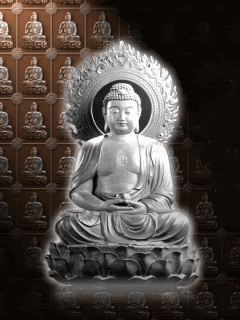


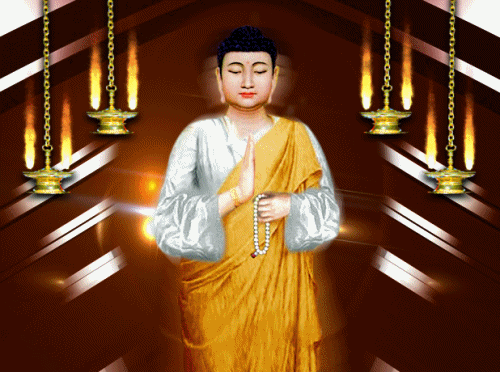
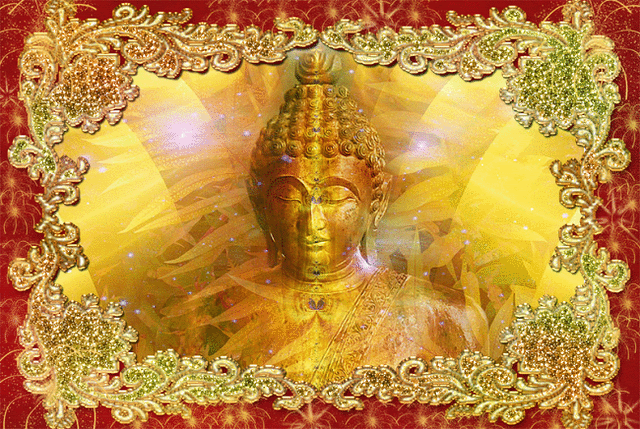
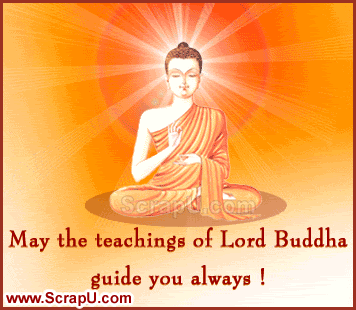









-
79) Classical Pashto- ټولګی پښتو
حتی د ګوتو سنیپ، بوخخېلو وخت لپاره، بوختیاه تعقیب، د ښوونې ذهن ته پام
کوي چې د ښوونکي تدریس سره بې خبره دی، څوک چې د هغه لارښوونو سره سمون
لري، او څوک چې په خارش کې د هیواد د ALMS هیمز خواړه نه خوري، نو بیا هغه
څوک چې دا په مکرر ډول تمرین کوي!
حتی برای زمان ضربه محکم و ناگهانی، Bhikkhus، Bhikkhus، یک bhikkhu
پیگیری، توسعه، ذهن حسن نیت را در نظر می گیرد، او یک Bhikkhu نامیده می
شود که از Jhāna نیست، که مطابق با تدریس معلم، که با توجه به دستورالعمل
خود عمل می کند، و چه کسی غذای خود را در آشفتگی قرار نمی دهد. خیلی بیشتر،
پس از آن، کسانی که آن را اغلب تمرین می کنند!
-
81) Classical Polish-Język klasyczny polski,
1,53-55.Budda, buddyzm, buddyjska accharamaṅghāta peyyara w polsko-język Klasyczny Polski- Nawet na czas palec -Jeśli
nawet na czas palcem przystawki, mnisi, mnich prowadzi działalność,
rozwija, uważa umysł wartości firmy, jest on nazywany mnich, który nie
jest pozbawiony jhany, która jest zgodna z nauczaniem Nauczyciela, który
działa zgodnie z jego instrukcją, A kto nie jadł jedzenia w dżdżowcach w
próżno.Podstawy buddyzmu - trzy schronienia [LEKTOR PL]Sasana.pl102K subscribersWięcej tu: http://sasana.pl/khp-1-vilWspomóż prace Sasany: https://patronite.pl/SasanaPLProjekt
filmowych haseł encyklopedycznych o buddyzmie, obiecana na stronie
patronite.pl i od dawna planowana seria krótkich wykładów z miłymi dla
oka obrazami. Widzowie mogą sugerować tematy następnych filmów w
youtubowych komentarzach do filmów z projektu.Tekst, reżyseria, kamera, głos, montaż: Piotr JagodzińskiRedakcja polska: Alicja BrylińskaCzołówka: Piotr Dismas ZdanowiczMuzyka: Water Lillies by Density & TimeRoyalty Free Music from Bensound “Ukulele” https://www.bensound.comFinansowanie: w całości dzięki wsparciu patronów z projektu patronite.pl/SasanaPL
patronite.plSasanaPLSasanaPL
to kanał youtube, na którym publikujemy tłumaczenia filmów i wykładów
nauczycieli buddyzmu Theravady. Strona-matka to portal tłumaczeń
buddyjskich Sasana.pl - wspierana przez Fundację “Theravada”.
-
82) Classical Portuguese-Português Clássico,

Um 1.53-55.Buda, Budismo, Budista Acharāsaṅghāta Peyyāla em Português-Português CLÁSSICO- mesmo para o tempo de um dedo snap -Se
mesmo para o tempo de um dedo, Bhikkhus, um bhikkhu persegue, se
desenvolve, considera uma mente de boa vontade, ele é chamado de Bhikkhu
que não é desprovido de Jhana, que está em conformidade com o ensino do
professor, que age de acordo com sua instrução, E quem não come a
comida da esmola do país em vão. Quanto mais, então, aqueles que
praticam com freqüência!pelicula historia del Budanoger Leon26K subscribersuna
muy interesante pelicula, donde podremos conocer a Buda , quien sintio
compasion y amor por sus semejantes desde temprana edad. Buda y Jesus
estan como los hombres que mas han logrado abrir los corazones de los
seres humanos debido a su verdadero interes en la humanidad y ser dignos
ejemplos a seguir.
youtube.compelicula historia del Budauna
muy interesante pelicula, donde podremos conocer a Buda , quien sintio
compasion y amor por sus semejantes desde temprana edad. Buda y Jesus
estan como l…
-
83) Classical Punjabi-ਕਲਾਸੀਕਲ ਪੰਜਾਬੀ,

1.53-5555ਬੁੱਧ, ਬੁੱਧ, ਬੁੱਧ ਧਰਮ- ਫਿੰਗਰ ਦੀ ਤਸਵੀਰ ਦੇ ਸਮੇਂ ਲਈ ਵੀ -ਜੇ
ਇਕ ਫਿੰਗਰ ਦੇ ਜੁੱਤੇ ਦੇ ਸਮੇਂ ਲਈ, ਇਕ ਭਿੱਖੂ ਦਾ ਵਿਕਾਸ ਕਰਦਾ ਹੈ, ਤਾਂ ਉਸ ਨੂੰ
ਭੜਕਾਉਣਾ, ਜੋ ਇਕ ਭਿੱਖੀ ਕਿਹਾ ਜਾਂਦਾ ਹੈ, ਜੋ ਉਸ ਦੀਆਂ ਹਿਦਾਇਤਾਂ ਅਨੁਸਾਰ ਕੰਮ ਕਰਦਾ
ਹੈ, ਜੋ ਉਸਦੀਆਂ ਹਦਾਇਤਾਂ ਅਨੁਸਾਰ ਕਰਦਾ ਹੈ, ਵਿਅਰਥ ਦੇਸ਼ ਦਾ ਉਚਾਰਨ ਨਾ ਖਾਦਾ ਉਹ
ਵਿਅਰਥ ਹੋਰ ਵੀ ਬਹੁਤ ਕੁਝ ਕਰਦਾ ਹੈ, ਤਾਂ ਜੋ ਉਹ ਅਕਸਰ ਇਸ ਦਾ ਅਭਿਆਸ ਕਰਦੇ ਹਨ!ਮਹਾਤਮਾ ਬੁੱਧ ਤੇ ਇਕ ਮਾਂ ਦੀ ਅਨੋਖੀ ਕਹਾਣੀ !! Mahatma Buddha Ki ek Aanokhi kahani !! Gyan Ki NagriGyan ki Nagri17.3K subscriberswelcome to Gyan ki nagriFollow us on Social Media link below
youtube.comਮਹਾਤਮਾ ਬੁੱਧ ਤੇ ਇਕ ਮਾਂ ਦੀ ਅਨੋਖੀ ਕਹਾਣੀ !! Mahatma Buddha Ki ek Aanokhi kahani !! Gyan Ki Nagriwelcome
to Gyan ki nagri Follow us on Social Media link below
https://www.instagram.com/fakirirang/https://vm.tiktok.com/XF2JP6/https://www.facebook.com/Faki… -
-
84) Classical Romanian-Clasic românesc,85) Classical Russian-Классический русский,86) Classical Samoan-Samoan Samoa,
-
87) Classical Sanskrit छ्लस्सिचल् षन्स्क्रित्88) Classical Scots Gaelic-Gàidhlig Albannach Clasaigeach,
-
89) Classical Serbian-Класични српски,90) Classical Sesotho-Seserbia ea boholo-holo,91) Classical Shona-Shona Shona,92) Classical Sindhi,93) Classical Sinhala-සම්භාව්ය සිංහල,94) Classical Slovak-Klasický slovenský,95) Classical Slovenian-Klasična slovenska,96) Classical Somali-Soomaali qowmiyadeed,97) Classical Spanish-Español clásico,98) Classical Sundanese-Sunda Klasik,99) Classical Swahili,Kiswahili cha Classical,100) Classical Swedish-Klassisk svensk,101) Classical Tajik-тоҷикӣ классикӣ,

(Nepali ), “the lovely”) is a Buddhist pilgrimage site in the Rupandehi
District of Lumbini Province in Nepal. It is the place where, according
to Buddhist tradition, Queen Mahamayadevi gave birth to Siddhartha
Gautama at around 563 BCE. Gautama, who achieved Awakenenment some time
around 528 BCE, became the Buddha and founded Buddhism. Lumbini is one
of many magnets for pilgrimage that sprang up in places pivotal to the
life of the Buddha.
has a number of older temples, including the Mayadevi Temple, and
various new temples, funded by Buddhist organisations from various
countries, have been completed or are still under construction. Many
monuments, monasteries and a museum, and the Lumbini International
Research Institute are also within the holy site. Also, there is the
Puskarini, or Holy Pond, where the Buddha’s mother took the ritual dip
prior to his birth and where he had his first bath. At other sites near
Lumbini, earlier Buddhas were, according to tradition, born, then
achieved ultimate Awakenment and finally relinquished their earthly
forms.

is a place located 10 kilometres north-east of Varanasi near the
confluence of the Ganges and the Varuna rivers in Uttar Pradesh,
Prabuddha Bharat. The Deer Park in Sarnath is where Gautama Buddha first
taught the Dharma, and where the Buddhist Sangha came into existence
through the awakenment of Kondanna .
a village approximately one kilometre away from the site, was the
birthplace of Shreyansanath, the Eleventh Tirthankara of Jainism. A
temple dedicated to him is an important pilgrimage site.
referred to as Isipatana, this city is mentioned by the Buddha as one
of the four places of pilgrimage his devout followers should visit. It
was also the site of the Buddha’s Dhammacakkappavattana Sutta, which was
his first sermon after attaining awakenment, in which he explained the
four noble truths and the teachings associated with them.



is a town in the Kushinara district of the Prabuddha Bharatian state of
Uttar Pradesh. It is an important Buddhist pilgrimage site, where
Buddhists believe Gautam Buddha attained Mahaparinibbana after his
death. It is an international Buddhist pilgrimage centre.
Aboriginal Awakened Societies Thunder ” Hum Prapanch Prabuddha
Prapanchmay karunge.” (We will make the whole world Prabuddha Prapanch



now the Maitreya Buddha Statue is to be another gem added to this crow.
The statue is a veritable temple-skyscraper that will contain 17
individual shrine rooms. The highest room at 140 meters high — the
equviliant height of the 40th storey of a standard building. This statue
and complex will be a fusion of Prabuddha Bharatian architectural
styles and will also hold the world’s largest collection of Lord
Buddha’s relics.
cutaway view of the 152 meter Maitreya statue and throne building
showing the spaces and levels within. Note that the throne itself will
be a 17 storey fully functional temple, with 15 additional shrine rooms
in the the body of the Maitreya statue.
statue, this is an uplifting project in various means. First it would
help heal the sabotaged buddhists/SC/STs/Ambedkarites, second, it would
bring tourism industry at a big level to UP through which the state can
benefit in economic and social changes, it would help peace and better
living of people in this area by following Buddha’s path……….it is a
great idea and project. If done, this would just uplift the BSP itself
and it’s supremo to further higher level in the world of Buddhism and
good humans which is not just a statue but an academy to uplift the
poor, one and all.
Pradesh Chief Minister Mayawati was understood to have directed
officials to speed up the acquisition and transfer of 600 acres of land
required for the Rs.10 billion project to be funded and undertaken by
the global Maitryi group. Proviuion of land is UP government’s share in
the project.. The project involves installation of a 152-metre-tall
bronze statue of Lord Buddha along with a giant meditation centre, an
international university, a state-of-art world-class hospital and a
museum. The project also envisages an entertainment complex in the
neighbourhood that would include an amusement park and a five-star
hotel.
Chief Secretary Prashant Kumar Misra presided over a high level meeting
of state officials, in which representatives from Maitryi were present
here Monday. A presentation on the project was made. Significantly, the
project was initiated during the previous tenure of Chief Minister
Mayawati in 2003, after which it was put on the backburner during the
Mulayam Singh Yadav regime. ‘Since then, it had been hanging fire, so we
decided to revive it after Maitryi officials approached us,’ Misra told
IANS. He said: ‘Of the 600 acres required for the project, we need to
acquire only about 300 acres while the rest is government land.
government had already started the acquisition process. The whole
project would not involve any major displacement of people and not more
than 70-80 farmers would be involved,’ he said.
of these features will be set in beautifully landscaped parks with
meditation pavilions, beautiful water fountains and tranquil pools. All
of the buildings and outdoor features will contain an extensive
collection of inspiring sacred art.
the Maitreya Buddha statue is a four-storey halo of buildings called
the “Living Wall.” This ring of buildings contains accomadation for the
complex’s monks and workers as well as rooms for functions ancillary to
the statue and throne building.
wall also serves two additional important functions. In light of
cross-border Islamist terrorist attacks against Prabuddha Bharatian holy
sites in Ayodhya, Akshardham and Jama Masjid, the Living
final major function it performs is that of the boundary for the
enclosed sanctuary area of landscaped gardens, pools and fountains for
meditation directly surrounding the Maitreya statue.
center of the Maitreya Project, of course, is the bronze plate statue
of the Maitreya Buddha itself. Rising 500ft/152m in height, the statue
will sit on a stone throne temple building located in an enclosed
sanctuary park.
the sanctuary, the gardens provide a place for relaxing, resting, and
meditating, with educational artwork depicting the Buddha’s life.
further inward, the is Maitreya Statue and Throne Temple, surrounded by
tranquil ponds and fountains that will cool the area in the intense
Indian summer.
building will contain two very large prayer halls, as well as
meditation and meeting rooms, a library and facilities to deal with the
anticipated annual influx of 2 million visitors.
will enter the throne temple through the giant lotus that supports the
Maitreya Buddha statue’s feet. The throne temple contains several
entrance rooms that contain works of art on the Buddha’s life and
teachings.
inward is the cavernous main auditorium of the Maitreya Temple
containing the Sanctum Sanctorum which in Prabuddha Bharatian
architectural tradition is the innermost most sacred room where the
actual shrine is held. This Sanctum Sanctorum is unique in that within
it contains two large auditorium temples.
first temple in the Sanctum Sanctorum is the Temple of the Maitreya
Buddha, containing a huge, 12 meter tall statue of the Buddha.
centerpiece shrine of the Maitreya Temple is the 12 meter tall Maitreya
Buddha. Stairs and elevators lead to viewing platforms around the
Maitreya Temple, allowing views of the entire room
next biggest shrine in the Sanctum Sanctorum is the Temple of the
Shakyamuni Buddha which contains a 10 meter statue of the Shakyamuni
(Historical) Buddha.
a higher level yet again, the Shakyamuni Temple will house a 10 metre
(33 ft.) statue of the historical Buddha. The glass rear wall
Prabuddha Bharatian architecture, the Sanctum Sanctorum is encircled by
a pathway that allows devotees to do Pradakshina (circumambulation) of
the shrine. The Maitreya Temple, following this tradition, also has this
feature.
main throne building and Pradakshina path where visitors may
circumambulate Sanctum Sanctorum of the Maitreya Temple, which can be
seen through the doorways on the right
this area, elevators and staircases will carry visitors to the various
other rooms in the 17 storey base, including prayer halls, meditation
halls and libraries. Eventually conveying devotees to a large rooftop
garden terrace upon which the Maitreya Buddha statue actually rests.
rising into the upper legs of the main statue, is the Merit Field Hall
with a 10 meter, 3-dimensional depiction of over 390 Buddhas and
Buddhist masters at it’s center. Surrounding this will be 12 individual
shrine rooms devoted to particular deities in the Hindu-Buddhist
pantheon.
the garden terrace, another bank of elevators will whisk pilgrims to
the higher shrine rooms contained in the statue’s torso and head.
statue will contain 15 individual shrine rooms and have a total height
of 152 meters, with the highest shrine room in the statue’s head, at
over 140 meters up. This is roughly equivalent in height to a 40-storey
skyscraper.
statue is itself an engineering marvel. Rather than simply be designed
in its massive size, the statue of the Maitreya Buddha was actually
reversed-designed from a carved statue only a meter and half in height
and the structure’s engineering extrapolated into its current form.
original statue from which the Maitreya Buddha statue tower is
extrapolated from was hand carved, and is in the Indian Gupta style.
the statue is designed to stand for at least 1,000 years, supporting
the Project’s spiritual and social work for at least a millennium. Due
to the statue’s millenia-passing lifespan, the huge structure is
designed to withstand high winds, extreme temperature changes, seasonal
rains, possible earthquakes and floods and environmental pollution.
research has gone into developing “Nikalium”, the special
nickel-aluminum bronze alloy to be used for the outer ’skin’ of the
statue designed to withstand the most challenging conditions that could
conceivably arise.
the bronze ’skin’ will expand and contract dramatically due to daily
temperature changes, the statue will require special expansion joints
that were designed to be not only invisible to
observer, but also in such a way as to protect the internal supports of
the statue from water leakage, erosion and corrosion.
material and structural components of the statue are meant to be able
to withstand potential unforseen disasters like earthquakes and monsoon
flooding.
Maitreya Project recently passed its first major milestone this month,
when, in compliance with the Indian Land Acquistion Act, the State
Government of Uttar Pradesh has completed the necessary legal
requirements for the acquisition of the 750 acre land site to be made
available to the Project.
there are still permissions and clearances to be obtained, it has now
officially given the green light and the full support of the government.
is expected that the Project will formally break ground either later
this year or early 2008, with an expected construction time of five
years. The project will employ more than a thousand skilled and
semi-skilled workers in the construction phase.



of the earliest Buddhist temples built in brick that still survives
today, the Mahabodhi Temple is home to a colossal image of a seated
Buddha touching the earth with his right hand. The Temple is said to be
the most sacred site in Buddhism as it is the supposed site where Buddha
found awakenment under the Bodhi tree.

in the 14th Century, this temple is an important place of pilgrimage
and meditation for Tibetan Buddhists and local Nepalis. There are four
Buddhas on each corner of the temple, with one also in the centre; these
Buddhas represent the five elements. There are also 13 rings from the
base to the pinnacle which represent the path to awakenment.

in Kandy, this temple has long been a centre of Buddhist faith. The
Temple of Tooth is said to house the left upper canine tooth of the Lord
Buddha. According to legend, the tooth was taken from Buddha on his
death bed and smuggled to Sri Lanka in the hair of a princess in 313AD.
The relic of the tooth is kept in a two-story inner shrine fronted by
two large elephant tusks and rests on a solid gold lotus flower.


Pho is the oldest and largest Buddhist temple in Bangkok and is home to
more images of Buddha than any other Bangkok temple. Thailand’s
largest Buddha, the Reclining Buddha is sheltered within Wat Pho – it is
46 meters long, 15 meters high and is covered in gold plating and
decorated with mother of pearl. There is also a working Buddhist
monastery in the southern walled compound of the complex.

city of Angkor was once the capital of the Khmer Empire. The monastery,
Angkor Wat, was built by King Suryavarman II in dedication to Hindu
gods, Shiva, Brahma, and Vishnu. A new king soon decided that Hinduism
had failed him and the Hindu decorations and deities were replaced by
Buddhist carvings, statues and art when Angkor Wat became a Buddhist
shrine.

world’s largest seated Buddha, which is 34 metres tall and 250 tonnes
in weight, took 12 years to create. The bronze statue sits amid lush
mountain scenery on Lantau Island, located at the mouth of the Pearl
River. The statue is called Tian Tan because its base is a replica of
Tian Tan, the Temple of Heaven in Beijing. The Buddha’s right hand is
raised to remove affliction. His left hand rests on his knee,
representing happiness.

Lai, meaning ‘coming to the West’, is a Chinese temple and monastery in
Hacienda Heights. The temple belongs to a new Buddhist order called Fo
Guang Shan which emphasises Buddhist outreach and unity. Hsi Lai is a
working monastery in addition to a temple, with a number of monks and
nuns living in the complex.
architectural marvels were designed to inspire peaceful
reflection.Between the mid-sixth and mid-fourth centuries B.C., Buddhism
was founded in northeastern Prabuddha Bharat and soon spread throughout
the Asian subcontinent, influencing cultural and spiritual practices,
art, and architecture. Today, around half a billion people around the
world practice Buddhism, which is built upon principles like the Four
Noble Truths and pursuit of Nibbana.While traditional Buddhist temples
often reflect the architectural styles of the region, all are designed
to facilitate quiet reflection and meditation. (Here are 38 beautiful
holy sites around the world.)
at Buddhist temples is fairly universal. Visitors should remove their
shoes at the door, wear clothing that covers knees and shoulders, and
keep noise to a minimum. Pay attention to posted signage and avoid
disruptive photography, especially when monks are praying. From the
sprawling stone structures at Angkor Wat to the cliffside temples of
Tiger’s Nest, here are 20 Buddhist temples worth a visit.
millennia, humans across religions and belief systems have built
architectural wonders to honor higher powers. Using the finest materials
and painstaking details, these buildings serve as powerful locations
for religious ceremonies, while allowing travelers to discover insight
into the local culture and history. Here are some of the most
spectacular spiritual houses of worship around the world.
Posted by: site admin @ 6:34 am
𝓛𝓔𝓢𝓢𝓞𝓝 4135 Thu 28 Oct 2021


Prapanchmay karunge.” (We will make the whole world Prabuddha Prapanch
generating energy in the human body available ‘for the price of a coffee
a day’ a Stunning anti-ageing breakthrough could see humans live to 150
years and regenerate organ.New process has been found by Harvard
Professor David Sinclair and researchers from the University of New
South Wales, involving cell reprogramming.
to the University of Singapore survey/review based on 131 countries.
From June 18, world will be 100% free and happy from December 8th. Their
predictions about Italy and Spain fit exactly.
Maker of COVID
Tests Says Pandemic is Biggest Hoax Ever Perpetrated It is like a blind
man searching for a black cat in a dark room which is not there.
WORLD WILL BE FREE FROM HOAX - STRENGTHENING THE TRUST FOR BEST OF HEALTH -SINGAPORE UNIVERSITY SURVEY
 Online Positive Universal Prabuddha Intellectuals Convention.
Online Positive Universal Prabuddha Intellectuals Convention.
After Bath Practice Patanjali Yogic Meditation From 04:00 AM to 05:00 AM at
𝙆𝙪𝙨𝙝𝙞𝙣𝙖𝙧𝙖 𝙉𝙄𝘽𝘽Ā𝙉𝘼 𝘽𝙃𝙐𝙈𝙄 𝙋𝙖𝙜𝙤𝙙𝙖
18𝙛𝙩 𝘿𝙞𝙖. 𝙖 3𝘿 360 𝙙𝙚𝙜𝙧𝙚𝙚 𝙘𝙞𝙧𝙘𝙪𝙡𝙖𝙧 𝙋𝙖𝙜𝙤𝙙𝙖 𝙖𝙩
𝙒𝙝𝙞𝙩𝙚 𝙃𝙤𝙢𝙚,
668 5𝙩𝙝 𝘼 𝙈𝙖𝙞𝙣 𝙍𝙤𝙖𝙙,
8𝙩𝙝 𝘾𝙧𝙤𝙨𝙨, 𝙃𝘼𝙇 𝙄𝙄𝙄 𝙎𝙩𝙖𝙜𝙚,
𝙋𝙪𝙣𝙞𝙮𝙖 𝘽𝙃𝙐𝙈𝙄 𝘽𝙚𝙣𝙜𝙖𝙡𝙪𝙧𝙪,
𝙈𝙖𝙜𝙖𝙙𝙝𝙞 𝙆𝙖𝙧𝙣𝙖𝙩𝙖𝙠𝙖,
𝙋𝙧𝙖𝙗𝙪𝙙𝙙𝙝𝙖 𝘽𝙝𝙖𝙧𝙖𝙩 𝙄𝙣𝙩𝙚𝙧𝙣𝙖𝙩𝙞𝙤𝙣𝙖𝙡

𝙗𝙪𝙙𝙙𝙝𝙖𝙨𝙖𝙞𝙙2𝙪𝙨@𝙜𝙢𝙖𝙞𝙡.𝙘𝙤𝙢
𝙟𝙘𝙨4𝙚𝙫𝙚𝙧@𝙤𝙪𝙩𝙡𝙤𝙤𝙠.𝙘𝙤𝙢
𝙟𝙘𝙝𝙖𝙣𝙙𝙧𝙖𝙨𝙚𝙠𝙝𝙖𝙧𝙖𝙣@𝙮𝙖𝙝𝙤𝙤.𝙘𝙤𝙢
080-25203792
9449260443
9449835875
Spread the Words of Buddha from
𝙝𝙩𝙩𝙥://𝙨𝙖𝙧𝙫𝙖𝙟𝙖𝙣.𝙖𝙢𝙗𝙚𝙙𝙠𝙖𝙧.𝙤𝙧𝙜, WhatApp, Telegram,Facebook, Twitter, more than 5000 Emails.
Practicing Mindful Swimming at Dolphin Aquatics at Halasuru from 05:30 AM to 07:00 AM




-
79) Classical Pashto- ټولګی پښتو
-
81) Classical Polish-Język klasyczny polski,
1,53-55.Budda, buddyzm, buddyjska accharamaṅghāta peyyara w polsko-język Klasyczny Polski- Nawet na czas palec -Jeśli nawet na czas palcem przystawki, mnisi, mnich prowadzi działalność, rozwija, uważa umysł wartości firmy, jest on nazywany mnich, który nie jest pozbawiony jhany, która jest zgodna z nauczaniem Nauczyciela, który działa zgodnie z jego instrukcją, A kto nie jadł jedzenia w dżdżowcach w próżno.Podstawy buddyzmu - trzy schronienia [LEKTOR PL]Sasana.pl102K subscribersWięcej tu: http://sasana.pl/khp-1-vilWspomóż prace Sasany: https://patronite.pl/SasanaPLProjekt filmowych haseł encyklopedycznych o buddyzmie, obiecana na stronie patronite.pl i od dawna planowana seria krótkich wykładów z miłymi dla oka obrazami. Widzowie mogą sugerować tematy następnych filmów w youtubowych komentarzach do filmów z projektu.Tekst, reżyseria, kamera, głos, montaż: Piotr JagodzińskiRedakcja polska: Alicja BrylińskaCzołówka: Piotr Dismas ZdanowiczMuzyka: Water Lillies by Density & TimeRoyalty Free Music from Bensound “Ukulele” https://www.bensound.comFinansowanie: w całości dzięki wsparciu patronów z projektu patronite.pl/SasanaPL
patronite.plSasanaPLSasanaPL
to kanał youtube, na którym publikujemy tłumaczenia filmów i wykładów
nauczycieli buddyzmu Theravady. Strona-matka to portal tłumaczeń
buddyjskich Sasana.pl - wspierana przez Fundację “Theravada”.
-
82) Classical Portuguese-Português Clássico,

Um 1.53-55.Buda, Budismo, Budista Acharāsaṅghāta Peyyāla em Português-Português CLÁSSICO- mesmo para o tempo de um dedo snap -Se mesmo para o tempo de um dedo, Bhikkhus, um bhikkhu persegue, se desenvolve, considera uma mente de boa vontade, ele é chamado de Bhikkhu que não é desprovido de Jhana, que está em conformidade com o ensino do professor, que age de acordo com sua instrução, E quem não come a comida da esmola do país em vão. Quanto mais, então, aqueles que praticam com freqüência!pelicula historia del Budanoger Leon26K subscribersuna muy interesante pelicula, donde podremos conocer a Buda , quien sintio compasion y amor por sus semejantes desde temprana edad. Buda y Jesus estan como los hombres que mas han logrado abrir los corazones de los seres humanos debido a su verdadero interes en la humanidad y ser dignos ejemplos a seguir.
youtube.compelicula historia del Budauna
muy interesante pelicula, donde podremos conocer a Buda , quien sintio
compasion y amor por sus semejantes desde temprana edad. Buda y Jesus
estan como l…
-
83) Classical Punjabi-ਕਲਾਸੀਕਲ ਪੰਜਾਬੀ,84) Classical Romanian-Clasic românesc,85) Classical Russian-Классический русский,86) Classical Samoan-Samoan Samoa,
-
87) Classical Sanskrit छ्लस्सिचल् षन्स्क्रित्88) Classical Scots Gaelic-Gàidhlig Albannach Clasaigeach,
-
89) Classical Serbian-Класични српски,90) Classical Sesotho-Seserbia ea boholo-holo,91) Classical Shona-Shona Shona,92) Classical Sindhi,93) Classical Sinhala-සම්භාව්ය සිංහල,94) Classical Slovak-Klasický slovenský,95) Classical Slovenian-Klasična slovenska,96) Classical Somali-Soomaali qowmiyadeed,97) Classical Spanish-Español clásico,98) Classical Sundanese-Sunda Klasik,99) Classical Swahili,Kiswahili cha Classical,100) Classical Swedish-Klassisk svensk,101) Classical Tajik-тоҷикӣ классикӣ,
-
How many languages are there in the world?
-
-
7,117 languages are spoken today.
That number is
constantly in flux, because we’re learning more about the world’s
languages every day. And beyond that, the languages themselves are in
flux. They’re living and dynamic, spoken by communities whose lives are
shaped by our rapidly changing world. This is a fragile time: Roughly 0%
of languages are now endangered, often with less than 1,000 speakers
remaining. Meanwhile, just 23 languages account for more than half the
world’s population.
When
a just born baby is kept isolated without anyone communicating with the
baby, after a few days it will speak and human natural (Prakrit)
language known as Classical Magahi Magadhi/Classical Chandaso
language/Magadhi Prakrit,Classical Hela Basa (Hela Language),Classical
Pāḷi which are the same. Buddha spoke in Magadhi. All the 7,139
languages and dialects are off shoot of Classical Magahi Magadhi. Hence
all of them are Classical in nature (Prakrit) of Human Beings, just like
all other living speices have their own natural languages for
communication. 117 languages are translated by https://translate.google.comin -
-
01) Classical Magahi Magadhi,
-
02) Classical Chandaso language,
-
03)Magadhi Prakrit,04)
Classical Hela Basa (Hela Language),
-
05) Classical Pāḷi,
-
06) ClassicalDevanagari,Classical Hindi-Devanagari- शास्त्रीय हिंदी,
-
07) ClassicalCyrillic08) Classical Afrikaans– Klassieke Afrikaans09) Classical Albanian-Shqiptare klasike,10) Classical Amharic-አንጋፋዊ አማርኛ,11) Classical Arabic-اللغة العربية الفصحى12) Classical Armenian-դասական հայերեն,13) Classical Assamese-ধ্ৰুপদী অসমীয়া
14) Classical Azerbaijani- Klassik Azərbaycan,
-
-
20) Classical Catalan-Català clàssic
-
21) Classical Cebuano-Klase sa Sugbo,
-
22) Classical Chichewa-Chikale cha Chichewa,23) Classical Chinese (Simplified)-古典中文(简体),24) Classical Chinese (Traditional)-古典中文(繁體),25) Classical Corsican-Corsa Corsicana,26) Classical Croatian-Klasična hrvatska,
-
27) Classical Czech-Klasická čeština28) Classical Danish-Klassisk dansk,Klassisk dansk,29) Classical Dutch- Klassiek Nederlands,30) Classical English,Roman,31) Classical Esperanto-Klasika Esperanto,32) Classical Estonian- klassikaline eesti keel,
-
33) Classical Filipino klassikaline filipiinlane,
34) Classical Finnish- Klassinen suomalainen,35) Classical French- Français classique,36) Classical Frisian- Klassike Frysk,37) Classical Galician-Clásico galego,38) Classical Georgian-კლასიკური ქართული,39) Classical German- Klassisches Deutsch,40) Classical Greek-Κλασσικά Ελληνικά,41) Classical Gujarati-ક્લાસિકલ ગુજરાતી,42) Classical Haitian Creole-Klasik kreyòl,43) Classical Hausa-Hausa Hausa,44) Classical Hawaiian-Hawaiian Hawaiian,45) Classical Hebrew- עברית קלאסית46) Classical Hmong- Lus Hmoob,47) Classical Hungarian-Klasszikus magyar,48) Classical Icelandic-Klassísk íslensku,49) Classical Igbo,Klassískt Igbo,50) Classical Indonesian-Bahasa Indonesia Klasik,51) Classical Irish-Indinéisis Clasaiceach,52) Classical Italian-Italiano classico,53) Classical Japanese-古典的なイタリア語,54) Classical Javanese-Klasik Jawa,55) Classical Kannada- ಶಾಸ್ತ್ರೀಯ ಕನ್ನಡ,56) Classical Kazakh-Классикалық қазақ,57) Classical Khmer- ខ្មែរបុរាណ,58) Classical Kinyarwanda59) Classical Korean-고전 한국어,60) Classical Kurdish (Kurmanji)-Kurdî (Kurmancî),61) Classical Kyrgyz-Классикалык Кыргыз,62) Classical Lao-ຄລາສສິກລາວ,63) Classical Latin-LXII) Classical Latin,64) Classical Latvian-Klasiskā latviešu valoda,65) Classical Lithuanian-Klasikinė lietuvių kalba,66) Classical Luxembourgish-Klassesch Lëtzebuergesch,67) Classical Macedonian-Класичен македонски,68) Classical Malagasy,класичен малгашки,69) Classical Malay-Melayu Klasik,70) Classical Malayalam-ക്ലാസിക്കൽ മലയാളം,71) Classical Maltese-Klassiku Malti,72) Classical Maori-Maori Maori,73) Classical Marathi-क्लासिकल माओरी,74) Classical Mongolian-Сонгодог Монгол,75) Classical Myanmar (Burmese)-Classical မြန်မာ (ဗမာ),76) Classical Nepali-शास्त्रीय म्यांमार (बर्मा),77) Classical Norwegian-Klassisk norsk,
-
78) Classical Odia (Oriya)79) Classical Pashto- ټولګی پښتو80) Classical Persian-کلاسیک فارسی81) Classical Polish-Język klasyczny polski,82) Classical Portuguese-Português Clássico,83) Classical Punjabi-ਕਲਾਸੀਕਲ ਪੰਜਾਬੀ,84) Classical Romanian-Clasic românesc,85) Classical Russian-Классический русский,86) Classical Samoan-Samoan Samoa,
-
87) Classical Sanskrit छ्लस्सिचल् षन्स्क्रित्88) Classical Scots Gaelic-Gàidhlig Albannach Clasaigeach,
-
89) Classical Serbian-Класични српски,90) Classical Sesotho-Seserbia ea boholo-holo,91) Classical Shona-Shona Shona,92) Classical Sindhi,93) Classical Sinhala-සම්භාව්ය සිංහල,94) Classical Slovak-Klasický slovenský,95) Classical Slovenian-Klasična slovenska,96) Classical Somali-Soomaali qowmiyadeed,97) Classical Spanish-Español clásico,98) Classical Sundanese-Sunda Klasik,99) Classical Swahili,Kiswahili cha Classical,100) Classical Swedish-Klassisk svensk,101) Classical Tajik-тоҷикӣ классикӣ,
102) Classical Tamil-பாரம்பரிய இசைத்தமிழ் செம்மொழி,103) Classical Tatar104) Classical Telugu- క్లాసికల్ తెలుగు,105) Classical Thai-ภาษาไทยคลาสสิก,106) Classical Turkish-Klasik Türk,107) Classical Turkmen108) Classical Ukrainian-Класичний український,109) Classical Urdu- کلاسیکی اردو110) Classical Uyghur,111) Classical Uzbek-Klassik o’z,112) Classical Vietnamese-Tiếng Việ,113) Classical Welsh-Cymraeg Clasurol,114) Classical Xhosa-IsiXhosa zesiXhosa,115) Classical Yiddish- קלאסישע ייִדיש116) Classical Yoruba-Yoruba Yoruba,117) Classical Zulu-I-Classical Zulu
Posted by: site admin @ 10:20 pm
𝓛𝓔𝓢𝓢𝓞𝓝 4134 Wed 27 Oct 2021


Prapanchmay karunge.” (We will make the whole world Prabuddha Prapanch
generating energy in the human body available ‘for the price of a coffee
a day’ a Stunning anti-ageing breakthrough could see humans live to 150
years and regenerate organ.New process has been found by Harvard
Professor David Sinclair and researchers from the University of New
South Wales, involving cell reprogramming.
to the University of Singapore survey/review based on 131 countries.
From June 18, world will be 100% free and happy from December 8th. Their
predictions about Italy and Spain fit exactly.
Maker of COVID
Tests Says Pandemic is Biggest Hoax Ever Perpetrated It is like a blind
man searching for a black cat in a dark room which is not there.
WORLD WILL BE FREE FROM HOAX - STRENGTHENING THE TRUST FOR BEST OF HEALTH -SINGAPORE UNIVERSITY SURVEY
 Online Positive Universal Prabuddha Intellectuals Convention.
Online Positive Universal Prabuddha Intellectuals Convention.
After Bath Practice Patanjali Yogic Meditation From 04:00 AM to 05:00 AM at
𝙆𝙪𝙨𝙝𝙞𝙣𝙖𝙧𝙖 𝙉𝙄𝘽𝘽Ā𝙉𝘼 𝘽𝙃𝙐𝙈𝙄 𝙋𝙖𝙜𝙤𝙙𝙖
18𝙛𝙩 𝘿𝙞𝙖. 𝙖 3𝘿 360 𝙙𝙚𝙜𝙧𝙚𝙚 𝙘𝙞𝙧𝙘𝙪𝙡𝙖𝙧 𝙋𝙖𝙜𝙤𝙙𝙖 𝙖𝙩
𝙒𝙝𝙞𝙩𝙚 𝙃𝙤𝙢𝙚,
668 5𝙩𝙝 𝘼 𝙈𝙖𝙞𝙣 𝙍𝙤𝙖𝙙,
8𝙩𝙝 𝘾𝙧𝙤𝙨𝙨, 𝙃𝘼𝙇 𝙄𝙄𝙄 𝙎𝙩𝙖𝙜𝙚,
𝙋𝙪𝙣𝙞𝙮𝙖 𝘽𝙃𝙐𝙈𝙄 𝘽𝙚𝙣𝙜𝙖𝙡𝙪𝙧𝙪,
𝙈𝙖𝙜𝙖𝙙𝙝𝙞 𝙆𝙖𝙧𝙣𝙖𝙩𝙖𝙠𝙖,
𝙋𝙧𝙖𝙗𝙪𝙙𝙙𝙝𝙖 𝘽𝙝𝙖𝙧𝙖𝙩 𝙄𝙣𝙩𝙚𝙧𝙣𝙖𝙩𝙞𝙤𝙣𝙖𝙡

𝙗𝙪𝙙𝙙𝙝𝙖𝙨𝙖𝙞𝙙2𝙪𝙨@𝙜𝙢𝙖𝙞𝙡.𝙘𝙤𝙢
𝙟𝙘𝙨4𝙚𝙫𝙚𝙧@𝙤𝙪𝙩𝙡𝙤𝙤𝙠.𝙘𝙤𝙢
𝙟𝙘𝙝𝙖𝙣𝙙𝙧𝙖𝙨𝙚𝙠𝙝𝙖𝙧𝙖𝙣@𝙮𝙖𝙝𝙤𝙤.𝙘𝙤𝙢
080-25203792
9449260443
9449835875
Spread the Words of Buddha from
𝙝𝙩𝙩𝙥://𝙨𝙖𝙧𝙫𝙖𝙟𝙖𝙣.𝙖𝙢𝙗𝙚𝙙𝙠𝙖𝙧.𝙤𝙧𝙜, WhatApp, Telegram,Facebook, Twitter, more than 5000 Emails.
Practicing Mindful Swimming at Dolphin Aquatics at Halasuru from 05:30 AM to 07:00 AM

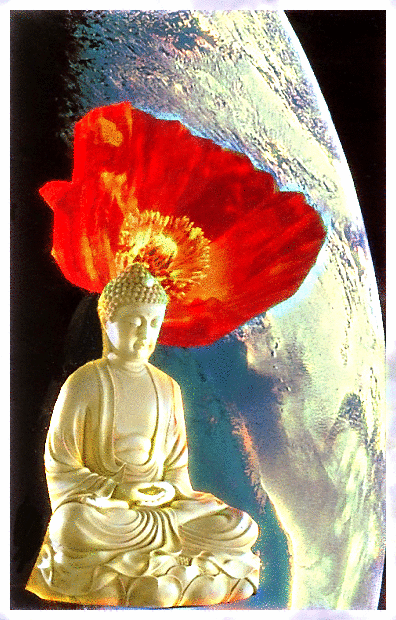
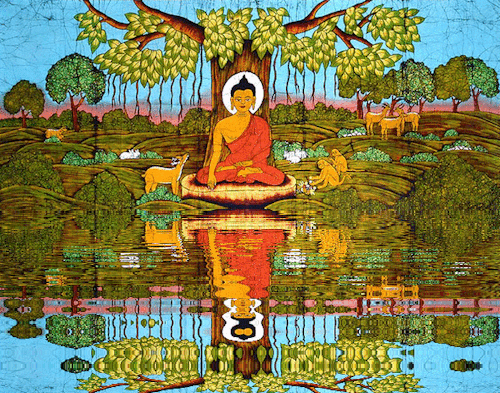
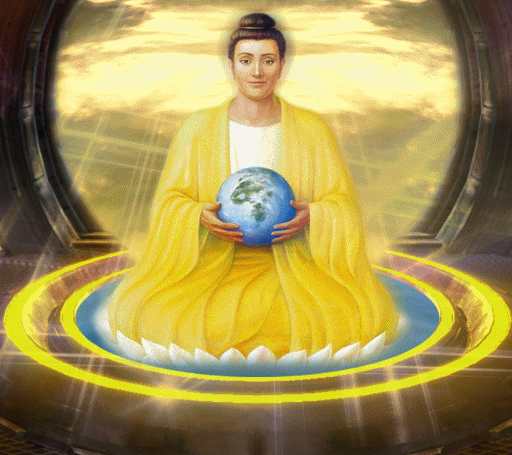

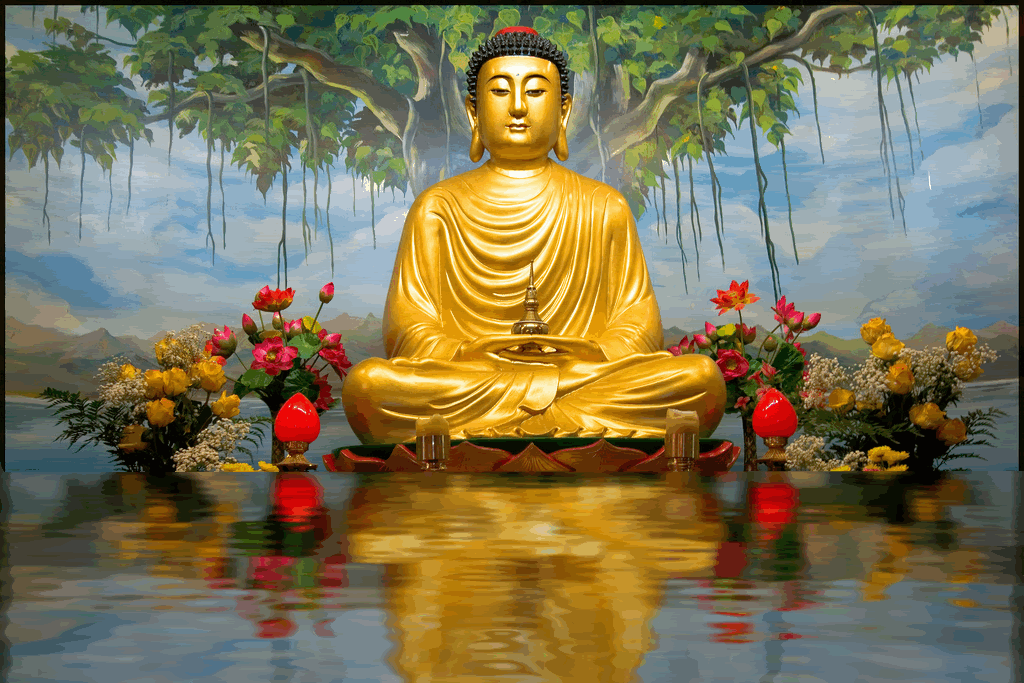
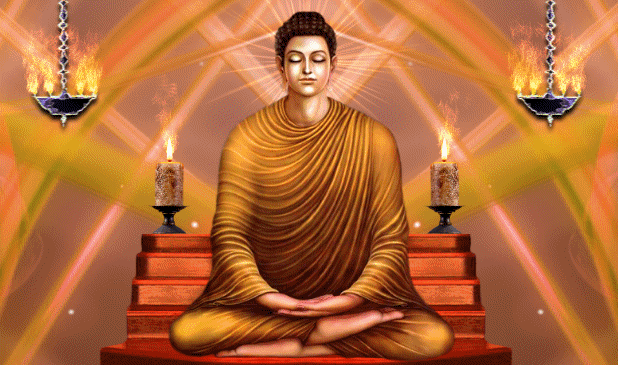













Dhammarakkhita

The Yoga Sutras of Patanjali: a manual of Buddhist meditation?
Translation
and free adaptation of the article published on the blog “Theravadin -
Theravada Practice Blog” (http://theravadin.wordpress.
- We consider here the Yoga Sutras of Patanjali, a classical text and revered in Hinduism, dated at approx. 200 BC and compared its semantics and vocabulary to Buddhist canonical texts. In
summary, this comparison is quite obvious that the author of Yoga Sutra
was highly influenced by Buddhist philosophy and meditation practice,
possibly contemporaneously to the author.
- Moreover,
it appears that a student of Buddhist canonical texts may in fact be
more easily understood than the Yoga Sutra a Hindu practitioner with no
other previous reference parameter practical and philosophical. We
do not consider comments here later Hindu / Brahman existing this text,
some of which seem to avoid (or ignore) the original references to
Buddhism in this text.
- The
proximity of the Yoga Sutra-style, vocabulary, and subject to canonical
texts in Pali could also mean simply that Patanjali - or whoever it is
that inspired his writings - had practiced meditation from a Buddhist
contemplative community, a community of monks for a time before
returning to Brahmanism and then the movement would have rephrased his
experience in order to add a divine touch to your experience, making
substantial use of technical terms of Buddhist meditation, as originally
framed or developed by the Buddha for the purpose of contemplative
practice. But this would be pure speculation, because there is so far no studies or historical finding that supports this understanding. -
-
-
-
- It
is also possible, even likely, that the Buddhist meditation had so
broadly permeated the practice Hindu / Brahman at the time (after years
of a strong cultural influence began with Buddhist proselytism promoted
by Ashoka the Buddhist Sangha in his reign and Consolidation of India),
that these technical terms as well as descriptions of practice of jhana /
dhyana (meditative absorptions) have it built into common knowledge at
the point of no longer sounding particularly Buddhists. Something
similar to what happens today with the adoption of the ideas of
“nirvana” and “karma” in Western culture, in Christian countries. -
-
-
-
- In
particular, if the Yoga Sutra is read in one continuous line is amazing
how close the text is the thoughts and topics about samadhi, jhana
meditation and Samatha (concentration) as defined in the ancient texts
in Pali Buddhist. -
-
-
-
- For a first analysis, an overview. Look
at the “Ashtanga Yoga” or the “Eightfold Path of Yoga” (sic) we are
certainly inclined to think the definition of the central Buddha of the
Noble Eightfold Path. -
-
-
-
- But
instead of following the Buddhist literary definition of the Noble
Eightfold Path, the interpretation of the eightfold path of yoga follows
(to our surprise?) Another description of the Buddhist path: the one
given by the Buddha as he described how he taught his disciples to
practice in your system meditative, which consists of a number of steps
outlined in various suttas of the volume of speeches with Mean Length
(as in Ariyapariyesana Sutta, MN 26, etc.) and remind us much of the way
“yogic” (pragmatic?), as devised by Patanjali at Yoga Sutra. -
-
-
-
- Then compare these two “paths to reach the samadhi.”
-
-
-
-
- First what is in the Yoga Sutra of Patanjali:
-
-
- 1. Yama, on the field conduct, morality or virtue
-
-
- 2. Niyama, self-purification and study
-
-
- 3. Asana, proper posture
-
-
- 4. Pranayama, breath control
-
-
- 5. Pratyahara, the removal of the five senses
-
-
- 6. Dharana, concentration or apprehension of the object meditative
-
-
- 7. Samadhi, meditative absorption
-
-
-
-
- And down the list of steps recommended by the Buddha when asked about the gradual development through his teachings. This list is found in many suttas of the volumes of speeches and Mean Length Long, as in other parts of the Canon:
-
-
- 1. Sila, moral conduct or virtue, and Santosa, contentment
-
-
- 2. Samvara, containment or removal of the senses
-
-
- 3. Kayagata-sati and Iriyapatha, or “Asana” means the cultivation of mindfulness and four correct postures.
-
-
- 4. Anapanasati, mindfulness of breathing
-
-
- 5. Overcoming Obstacles or five nivarana (sensual desire, ill will, anxiety and remorse, sleep and torpor, doubt, skeptical)
-
-
- 6. Sati, mindfulness, keep the object in mind, often quoted along with the comments dharana canonical.
-
-
- 7. Jhana, levels of meditative absorption
-
-
- 8. Samadhi, a result of absorption, the “realization” of various kinds or Samāpatti
-
-
-
-
- Of course we’re not the first to notice similarities such as the list above. A handful of other authors have noted some more and others less obvious parallels. In fact, even Wikipedia has an entry for Yoga Sutra in which we read:
-
-
-
-
- “Karel Werner writes that” the system of Patanjali is unthinkable without Buddhism. As
far as terminology goes aa long in the Yoga Sutra that reminds us of
formulations of the Buddhist Pali Canon and even more Abhidharma
Sarvastivada Sautrantika and school. “Robert Thurman writes that
Patanjali was influenced by the success of the Buddhist monastic system
to formulate its own matrix for the version of thought he considered
orthodox (…) The division between Eight States (Sanskrit Ashtanga)
Yoga is reminiscent of the Noble Eightfold Path of Buddha, and the
inclusion of brahmavihara (Yoga Sutra 1:33) also shows the influence of
Buddhism in parts of the Sutras. “
-
- Now
this is where the subject becomes interesting for us here on this blog
and its relevance to the practice of Buddhist meditation. -
-
-
-
- Does
all the above tells us that the Yoga Sutra is a comment Hindu / Brahmin
or at least a photograph of meditation practices common (influenced by
Buddhism) in the second century BC? -
-
-
-
- If this is the case, definitely warrants a closer look at. Certainly,
this is because the text is not a Buddhist but shares a “core” of
fundamental ideas on meditation to be able to take it as a sign pointing
to a deeper understanding of some of the terminology in the context of
the first centuries of Buddhist practice. -
-
-
-
- Thus,
if the Yoga Sutra is read in a Buddhist context, one can have some idea
of how people understood at that time and (ou!) practiced Buddhist
meditation? Could this be of some help in triangular or point of which was the direction of former Buddhist meditation? -
-
-
-
- The
more we know how people practiced a few centuries after the Buddha’s
Parinibbana, the more we can understand how some of his teachings have
evolved and how they were implemented and explained / taught. -
-
-
-
- What
makes this fascinating idea is that this text would definitely be
filterable through the eyes of a Hindu / Brahman, but he is still
influenced by the “knowledge” of Buddhist meditation apparently so well
received, and the time of his writing had become the mainstream
“contemplative practices. This
would show us how and in what particular point, was considered to be
the “essence” of meditation (in addition to being philosophical
discussion of its purpose) in order to be considered universally true,
then that can be “merged” into other forms of practice religious. -
-
-
-
- Under this view, the Yoga Sutra is actually quite revealing. Consider a few passages that copies may shed light on this idea. Passages like the following really seems a direct copy and paste the Buddha-Dhamma. Some of them even make much sense in a context of religious doctrine theological-in-
search-of-the-soul-creationist
they were considered “truth” and “accepted” so that the author Hindu /
Brahman had no other choice but to incorporate them into their theistic
philosophy, reminding us Western Christians today that due to the common
acceptance of the idea karma / kamma, sometimes find ways to
incorporate this idea in their religious views. -
-
-
-
- Let’s start seeing the following list of impurities that Yoga Sutra tells us must be overcome:
-
-
-
-
- “Avidya
(ignorance), Asmita (egoism), raga-Dvesha (desires and aversions),
Abhinivesha (clinging to mundane life) are the five klesha or distress. Destroy these afflictions [e] You will realize Samadhi. “ -
-
- [Free translation of the original quote from Wikipedia]
-
-
- What
impresses the reader as Buddhist before this paragraph is the simple
fact that all these impurities listed are those that no longer are you
supposed to Arahant one, or Awakened (!!!). That is, according to the text of Patanjali, the “Samadhi of Conduct” would be conceptually the same as the Buddhist Liberation. -
-
-
-
- Consider the terms used:
-
-
-
-
- Avijja,
ignorance or mental turvidão is even mentioned in the first place,
while clearly a Buddhist point of view is considered the root of all
problems. -
-
-
-
- Then
“asmita”, which is superficially translated as “selfishness” by
understanding that had developed in shallow Sanskrit tradition that was
ignorant of the deeper meaning of that term as used in the suttas of the
Pali Canon (or tried to distort to suit your context religious). -
-
-
-
- This
term Buddhist in particular, pointing to the deeply embedded “notion
that it is” (ASMI-tā) has a clear explanation in the suttas, but here in
this passage and elsewhere, is reduced to a mere “selfishness” as a
moral impurity devoid of its original psychological application. In
the suttas “ASMI-Mana” is a deeply rooted psychological tendency that
only a Arahant (Iluminsfo) won [see post “The scent of am” blog
Theravadin]. -
-
-
-
- And
there is also “abhinivesa”, a term the Buddha uses to explain how our
mind comes in and assumes the five groups of attachment. The
term “Nives” denotes a dwelling, a house - a simile brought by the
Buddha to show how our consciousness moves “inside” of the contact
experience of the senses and settles as if living in a house (see Sutta
Nipata, Atthakavagga , and Haliddakani Magandiya Sutta Sutta). This
usage is decreased very particular psychological context in Hindu /
Brahmin to denote only an “attachment to worldly life.”But here is worth
questioning whether this was also shared by superficial understanding
or just by Patanjali Yoga Sutra later commentators, who have lost sight
of these implications for not having knowledge of or access to the
preceding context of Buddhism in the Yoga Sutra was written? -
-
-
-
- And sometimes something awakening about the “sati” Buddhist can also be found. We
have another pearl of a Buddhist point of view, which can be considered
truly revealing: the use of the word “Dharana” in the text of
Patanjali. -
-
-
-
- This is one area in which our contemporary knowledge of Buddhism can benefit from insights. The
term “Dharana”, which literally means short and “I can hold, carry,
keep (in mind)” is a good description of the task faced in Buddhist
contemplative practice, regardless of what tradition / school
considered. -
-
-
-
In meditation we also need to maintain our meditation object firmly in focus in mind, without losing it. This
central feature of the task undertaken when trying to cultivate
meditative concentration, relates as an equivalent to the literal
meaning of the Buddhist term “sati” (which means reminder / recall) and
what is general and now translated simply as “mindfulness” - a
translation that often aboard with questions.-
-
-
-
- And the reason is as follows, in summary: To maintain the object of meditation in mind you need to remember it. Remember here that means you have to hold, keep in mind, your object of concentration. This
is exactly what makes the faculty of memory, usually being pushed away
by the impressions with new information by the six senses, which, if
penetrated, would result in more or less a wild spin. -
-
-
-
- If
you are able to sustain their concentration on one point however - or
even as much as you can keep it, one of the laws of functioning of the
mind that the Buddha rediscovered and explained in detail that this
rebate is “artificial” senses the support and focus on a particular
mental object equivalent to a minor sensory stimulus. -
-
-
-
- As
a result of mental calmness and happiness (piti) and happiness index
(sukha) will arise and show signs of the primeirs a stronger
concentration - these being two of the five factors of meditative
absorption (jhana), along with (i) directed thought (vitakka) (ii)
sustained (Vicara) and (iii) equanimity (Upekkha). -
-
-
-
- This
is also the reason why is quite logical that samma sati, mindfulness,
has to come before samma samadhi, full concentration in the Noble
Eightfold Path of Buddhism - or, as shown in this case in the Yoga
Sutra, “Dharana” would be the stage immediately prior to “Delivering the
Samadhi.” -
-
-
-
- In
this case the Yoga Sutra throws much light on the original meaning as
understood in the early centuries of Buddhist practice and can help us
reach a more precise understanding of what “samma sati, right
mindfulness, originally meant or pointed. (In Theravadin blog post is a rather plain and that shows how sati yoniso manasikara are coming in practical terms, check this link ). -
-
-
-
- On
the opposite side, or better, understanding it as a byproduct of the
practice of sati is no other term that would best be described as
“mindfulness.” The Pali term is sampajaññā -
which literally means “next-consideration”, eg, be well aware of when
performing an action, then a “clear understanding” of what it does - but
this activity is a result of sati, as having the mind fixed on an
object leads to a refined consciousness that arises when during the next
and keep the mind of an object, creating a clear understanding of the
few sensory impressions that may enter. According to this concept, mindfulness would be a result of sati and not the practice of sati in itself! -
-
-
-
- But
again, both activities are happening almost simultaneously, even if not
in the same order and then the current use of the term translated can
be done - at the same time a fine distinction, however, has its
benefits. You can not
keep an object from the standpoint of mind without which would create or
develop mindfulness in mind - but (unfortunately!) you may be aware of
all your actions that you work without the right concentration - as when
eat an ice cream, in seeking the sensual pleasure, an example of
improper care. This being the fact that unfortunately idealize the interpretations of some Westerners who want to say “Buddhist”. -
-
-
-
- There
is a difference between deliberately let himself be led by sense
impressions by focusing on their physical pleasures and enhancing /
supporting raga (desire) and nandi (joy) - and, from the perspective of
Gotama Buddha, put his feet on the ground using the mindful memory and
thus experiencing a more refined awareness of trying to get it off the
shaft so that it results in a greater mindfulness, in the culmination of
his experience flows into total equanimity in the face of both
pleasurable and painful sensations. -
-
-
-
- Thus,
then, we must understand as vipassanā is no way a synonym for
mindfulness (sati) but something that springs from the combination of
all these factors especially the last two, samma sati (mindfulness) and
samma samadhi (right concentration) applied to the relentless
observation of what appears to be in front of (yathabhuta). -
-
-
-
- You
could say, vipassanā is a name for the Buddhist practice of sati
associated samadhi directed to the view anicca / anatta / dukkha (ie,
generating the wisdom of the vision of these three features) in the
processes of the six senses, including any mental activity. Thus, one will find the term vipassanā but the idea of sati in
the Yoga Sutra, Buddhist texts mention as the first term clearly having
samādhi as just the beginning of the journey to insight and access -
for example aniccanupassana . -
-
-
-
- Finish here the parenthesis. Suffice
to say that any particular reference to the Buddhist philosophy citing
anicca antta or point to the goal of Nibbana, a philosophical
proposition to which the system of Yoga certainly does not refer. -
-
-
-
- In essence the school of Yoga can be placed below the postures eternalists. So,
while it definitely does need to produce sati-samadhi, definitely does
not need to understand is samadhi anicca, dukkha and anatta - that does
not sound very compatible with the worldview of a eternalistic. Before
this, all spiritual approach arise due to the attempt to interpret
Samadhi Yoga Sutra as marriage or at least as close as you can get from a
“God”, a “Lord.” Something
that sounds quite natural in the end to a theist - such as an
Evangelical Christian would never interpret the reduction of its focus
on mental object unique sensual ecstasy and consequently a mere effect
of a psychological technique, but he would label it “the divine sign of
God touching him. “ It is for
this reason that, according to the Buddha Dhamma, in fact in most
situations we are inclined to be led by the plots of our senses,
including the mental impressions / thoughts / feelings / perceptions -
and therefore tend to limit ourselves to go beyond such experiences also
distorted the merger would allow access to insight and liberation. -
-
-
-
- Returning
to the context of comparison with the Christian interpretation of this
ecstasy, in short what Patanjali is facing such a theistic
interpretation sounds like someone moving a large portion of vocabulary
and terminology for the New Testament, which gives this ring a Buddhist. -
-
-
-
- The
funny thing is that this is exactly how many of the contemporary New
Age books are written - an amalgam of the terms of Western Spirituality /
Christian trying to express a view east. So
one can imagine that the situation in India was similar to that when
the Yoga Sutra was written addressing the Buddhist philosophy of that
era. -
-
-
-
- The
remaining Buddhist philosophy with his particular terminology
established by the Buddha himself would have become so pervasive in
religious thought, so to make seemingly trusted what was written on
meditation was a need to borrow or rely on several of these Buddhist
concepts predominant. This
had largely been done or even conscious, as most New Age authors
present not even reflect the content of their texts but about the
message you want to spend. -
-
-
-
- Thus,
below is done in a way a translation - or rather a translation of a
transliteration given the proximity between languages - as was done with
the text of the Yoga Sutra in Sanskrit brought back to Pāli. Similar to what has been done this Sutra ( Theravadin available on the blog, in English on this link ),
the exercise helps us see how the same text would sound the Pāli
language, opening then find parallels in ancient Buddhist texts, the
suttas.
-
-
-
- However,
having said all that, pragmatism invoked by the text (which is what
makes it so valuable) also indicates much more than a simple textual
exploration. As you
read this you can not discern the notion, especially since the position
of a meditator concentration of whoever has written or inspired by this
text, at some point personally experienced jhana and samadhi and wanted
to convey his experience making use a rich language Buddhist meditation
on the same interpretation being directed to an audience Brahman /
proto-Hindu India 200 BC. -
-
-
-
- Anyway,
check by itself - the pauses between sets of paragraphs labeled in bold
are the author / translator and some important technical terms
Buddhists were deployed, with additional comments made in italics:
- Patañjalino yogasuttaṃ (Part I of IV)
-
-
-
-
- Introduction
-
-
-
-
- atha yogānusāsanaṃ | | 1 | |
-
-
- And now a statement about the European Union (Yoga)
-
-
-
-
- [1] Read yourself to be the object of meditation, or an instruction (anusāsana) on the meditative practice (yoga).
-
-
-
-
-
-
- yogo-citta-vatta nirodho | | 2 | |
-
-
- The Union (Yogo) is the extinction of the movement of the mind
-
-
-
-
- [2] in this passage denotes vatta turbulence, swirl, activity - literally wandering, circling, confused. In
this context broadly means “meditation is (…) a stop to the busy
mind,” which is very active and its activity suggests a walk in circles. Probably the most direct (and correct) translation.
-
-
-
-
-
- Tada ditthi (muni) svarūpe’avaṭṭhānaṃ | | 3 | |
-
-
- (Only) then he who sees is allowed (to be) in (his) true nature.
-
-
-
-
- [3]
In the Pāli language Drist the word does not exist, and it would be
something like subsitituída by Muni, which has the same meaning -
except, of course, the fact that “he who sees” further points in this
case the seeing process. Here was however used the term Pāli ditthi so as to maintain the link with the term semantic ditthi. The alternate translation is then: “So lets see who (or have the opportunity - avaṭṭhāna) of being in their true and natural.”
-
-
-
-
-
- Sarup-vatta itaritaraṃ | | 4 | |
-
-
- (Otherwise) at other times we become (equal) to this activity (of mind).
-
-
-
-
-
-

 Challenges
Challenges-
-
-
-
- vatta Panza kilesa akilesā ca ca | | 5 | |
-
-
- Activities (Mental) are five, some non-contaminating other contaminants:
-
-
-
-
- pamanes-vipariyesa-vikappa-
Nidda-sati | | 6 | | -
-
- i)
Experience (Evident-Measurement), ii) misperception (Illusion), iii)
Intentional Thinking / Willing, iv) Sleep / Numbness, v) Memory /
Mindfulness. -
-
-
-
-
-
- i) pamanes, experience or clear-measurement
-
-
-
-
- Paccakkh’ānumān’āgamā honte pamāṇāni | | 7 | |
-
-
- What one sees and looks directly (paccakha), taking as a reference - it’s called experience.
-
-
-
-
- [7] Literally: “What comes through direct visualization and measurement is called the experience”
-
-
-
-
-
-
- ii) Vipariyesa, misperception or illusion
-
-
-
-
- Micca vipariyeso-Nanam atad-rūpa-patiṭṭhitaṃ | | 8 | |
-
-
- Illusion is the wrong understanding, based on something (lit. “one way”) that is not really.
-
-
-
-
-
-
- iii) Vikappa, Thought Intentional / Keen
-
-
-
-
- Saddam-ñāṇānupattī vatthu-Sunna vikappo | | 9 | |
-
-
- Intentional
Thinking / Willing is any way of understanding and unfounded assertion
(ie the internal speech, voltiva, partial and willful, based on mental
speculation). -
-
-
-
- [9]
Alternative translation: “Thinking is cognition without a sound object /
cause noise (vatthu).Think about it, thoughts are no more than sounds,
silent babble that passes through our being. -
-
-
-
-
-
- iv) Nidda, Sleep / Numbness
-
-
-
-
- abhava-paccay’-ārammaṇā vatta Nidda | | 10 | |
-
-
- Mental activity in the absence of mental objects is called Sleep / Torpor.
-
-
-
-
-
-
- v) Sati, the Memory / Mindfulness
-
-
-
-
- Anubhuti-visayāsammosā sati | | 11 | |
-
-
- Not to be confused (or not lose) the object (sensory) previously experienced is called Memory / Mindfulness.
-
-
-
-
-
-
- Abhyasa-virāgehi Tesam nirodho | | 12 | |
-
-
- The extinction of these [activities] comes from the practice of detachment / cessation of passions (turning)
-
-
-
-
- [12] We have here the words turn and nirodha in the same sentence! It can not be more Buddhist canon than this! Interestingly, however, is the current use and non-metaphysical terms of this stretch. They are applied in a simple process of meditation, in particular the process of concentration meditation. This can not go unnoticed and goes directly in line with readings jhanic cultivation practices in Buddhism.
-
-
-
 The Training
The Training 
-
-
-
- tatra-tiṭṭha yatano abhyasi | | 13 | |
-
-
- The
practice’s commitment to non-movement (ie, become mentally property (at
the same time it parmanece fluid - an excellent description for the
concentration!) -
-
-
-
-
-
- so-Kala-pana Dīgha nirantara-sakkār’āsevito dalhia-bhumi | | 14 | |
-
-
- Mast this (practice) must be based firmly in a long and careful exercise [excellent point here!]
-
-
-
-
- [14]
This goes in line with what the author wrote the medieval Pali
subcomentários the volume of the Digha Nikaya, where also we find the
combination of the terms and dalhia bhumi - “firmness” and
“establishment” - in the same sentence, denoting ” firm establishment “ -
-
-
-
-
-
- diṭṭhānusavika-visaya-vitaṇhāy
a Vasik-Sannes viraga | | 15 | | -
-
- Detachment is the mastery (VASI-kara) of perception, the dropping of the seat (vitaṇhā) by the following (anu-savika, lit.’s Subsequent flow) experience a prey to view.
-
-
-
-
-
-
- parama-tam Puris akkhātā guṇa-vitaṇhaṃ | | 16 | |
-
-
- This is the climax: the abandonment of the current headquarters of the senses, based on personal revelation / knowledge of self.
-
-
-
-
- [16] Here we turned a Brahman, is this approach that allows the soul to win the seat / attachment, Tanh. And this short sentence has much to offer! At
that moment in history, Patanjali was so convinced of the Buddhist goal
of “opening up the attachment, the seat stop,” which boils down to vitaṇhā term he uses. However,
it does not give up without a soul which its theistic philosophy simply
collapses and nothing in the text would make it distinguishable from a
treatise on the Buddha Dhamma. Thus,
mounted on a meditative Buddhist terminology and guidelines in the
conversation he introduces the term “Puris, which can be read as” soul,
“saying that the more you get closer to its” intrinsic nature “(svarūpa)
and inner body “Puri, or soul, you become able to stop itself this seat
/ attachment. Interesting. -
-
-
-
 Realization - Jhana / Dhyanas
Realization - Jhana / Dhyanas 
-
-
-
-
- The first jhana / Dhyāna
-
-
-
-
- vitakka-vicar-Anand-Asmita rūp’ānugamā sampajaññatā | | 17 | |
-
-
- This
is the alertness (sampajañña) from (the) (Kingdom of) form: a
self-directed thought-based consciousness, which remains (to this) and
inner happiness. -
-
-
-
- [17] Here we describe an almost identical description of the first jhana used time and again by the Buddha in Pali texts ( see this example ). Indeed,
we have a very beautiful description of the first jhana as a form of
sampajaññatā (fully aware of what is happening), after the plan of the
form (the theme of our meditation is a mental form) and a combined
happiness at the thought we are trying to grasp what itself could be
described as the pure experience of “I am” (Asmita - the term is being
used more loosely in place as would suttas). -
-
- However,
the announcement vitakka / vicara the first mention of meditative
absorption is a clear reference to the origin of Buddhist Yoga Sutra. Interesting also is the connection that is being done now with sampajaññatā: Think of everything we have said before about sati. If sati is simply the seizure of an object (the paṭṭhāna
of sati, so to speak), so it’s interesting to see how sampajaññā this
case, is identified with the state of the first jhana. Could this mean that when the Buddha mentions these two texts in Pali, which implicitly means samatha-vipassana?
-
- This
is not at all a strange idea, like many vipassana meditators, focusing
on objects will be much more subtle quickly show signs of the first
jhana. Could it be then that the term “sampajaññatā” was seen as the first result of a concentrated mind? -
-
- In
any case, experience will teach you very quickly that when you try to
hold an object in your mind, your awareness of what happens at this time
will increase dramatically, simply due to the fact that his effort to
keep the object is under constant danger during the siege of sense. -
-
-
-
-
-
- saw-Paticca Abhyasa-anno-pubbo saṃkhāraseso | | 18 | |
-
-
- (This accomplishment) is based on detachment and previously applied for any subsequent activities.
-
-
-
-
-
-
- bhava-Paticca videha-prakriti-layana | | 19 | |
-
-
- (For example) Based on this existence and the characteristics of self
-
-
-
-
-
-
- saddha-viriya-sati-samadhi-
paññā-pubbaka itaresam | | 20 | | -
-
- This
flower gives himself (based on these qualities) of conviction (saddha),
energy (viriya), mindfulness (sati), concentration (samadhi) and wisdom
(paññā) -
-
-
-
- [20] The Buddha mentions these five factors when he was training arupa jhana under his previous two teachers. He also mentions how crucial factors when striving for enlightenment under the Bodhi tree. Later,
during his years of teaching, he gave the name of “powers” (bullet) and
explained that, if perfected, would lead to enlightenment.
-
-
-
-
-
- Tibba-saṃvegānām āsanno | | 21 | |
-
-
- (For those) with a firm determination reached (this accomplishment, the first Dhyana / jhana).
-
-
-
-
-
-
 Advancing in jhana, tips and tricks.
Advancing in jhana, tips and tricks. 
-
-
-
-
- Mudu-majjhim’ādhi-mattatā tato’pi Visions | | 22 | |
-
-
- There is also a differentiation between (achievement) lower, middle and high
-
-
-
-
-
-
- Issar paṇidhānā-go | | 23 | |
-
-
- Or based on devotion (devotion) to a Lord (a master of meditation).
-
-
-
-
-
-
- kilesa-kamma-vipākāsayā aparāmissā Puris-visions’ Issar | | 24 | |
-
-
- The Lord (the Master) that is no longer influenced by the outcome kammic impurities and past desires.
-
-
-
-
- [24]
Besides the question whether the term “Issar” found here could be read
as merely referring to a master of meditation (which fits perfectly into
the discussion until verse 27, where it starts to not fit any more) is
likely discussion, including on-line translation of the Yoga Sutra by Geshe Michael Roach . The
principle can be interpreted so as to skeptics recalling the first
sutta MN seemed more logical to assume Issar was first used to designate
“the Lord” (ie your God). -
-
- But with a little more research found that the term Issar Theragatha us are used to designate the “master”. Interesting is also the word in Pali āsayih replaced simple wish / desire - “Asa.” But
“almost” sounds like “Asava” that would fit even better in the context
of kamma and vipaka Asava.But the idea is very specific (”that which
flows within you, taking it) and may or may not be what was meant in
this passage. -
-
-
-
-
-
- tatra-niratisayaṃ sabbaññatā bījaṃ | | 25 | |
-
-
- It is this that lies the seed of omniscience unmatched.
-
-
-
-
-
-
- sa pubbesam api guru kālen’ānavacchedanā | | 26 | |
-
-
- This Master from the beginning never abandoned him or abandon
-
-
-
-
- [26] Literally, “not” drop “(an + evaluation + chedana), or abandon, even for a time (short) (Kalena)
-
-
-
-
-
-
- tassa vācako Panavia | | 27 | |
-
-
- His Word is the breath and the clamor of living
-
-
-
-
- [27] On the panavah term, which can be interpreted as “om” in Hindu literature. It
all depends if we read verses 24-27 as involving “Issar” to mean “God”
or simply refer to consider meditation master of meditation you learn. If
you do a search in the Tipitaka, you see that when the Buddha used the
term was to refer to teachers (see for example Theragatha) -
-
-
-
-
-
- taj-tad-japp attha-bhavana | | 28 | |
-
-
- Praying in unison with this, this is the goal of meditation
-
-
-
-
-
-
- touch-pratyak cetanādhigamo’pi antarāyābhāvo ca | | 29 | |
-
-
- So if the mind itself and carries it away all obstacles / hazards:
-
-
-
-
-
-
- Vyadha-ṭṭhāna-samsaya-
pamādālayāvirati-bhrānti- dassanā’laddhabhūmikatvā’ navatthitatāni -
-
- Diseases,
skeptical questions, be moved to laziness of attachment, wrong view of
things, not meditative placements, or not yet firmly established in
these. -
-
-
-
-
-
- citta-vikkhepā te’ntarāyā | | 30 | |
-
-
- These are the causes of mental distractions (they fall due).
-
-
-
-
-
-
- dukkha-domanass’aṅgam ejayatv’assāsa-Passaseo vikkhepa-saha-Bhuvah | | 31 | |
-
-
- The physical and mental pain arises in the body, the shaking of the inhale and exhale conjução occur with such distractions.
-
-
-
-
- [31] Here dukkha and Domanassam mentioned. They also appear in the definition of the Buddha’s four jhana, but in a different direction. The problem described here meditative seems out of place and looks as if someone had to fit these words here. Also
the inhale and exhale clearly has an important role in that they cease
to exist (nirodha) so subjective to the practitioner in the fourth
jhana. It is strange that all this is on the list, but is presented in a very different interpretation.
-
-
-
-
-

 The Objects of Meditation
The Objects of Meditation
-
-
-
- tat-pratiṣedhārtham ekatattābhyāsaḥ | | 32 | |
-
-
- In order to control these distractions, this is the practice of unification of mind:
-
-
-
-
-
-
- metta-karuna-mudita Upekkha-sukha-dukkha-Visayan-
puññāpuñña bhāvanātassa cittapasādana ṃ | | 33 | | -
-
- The
cheerful calm the mind (citta-pasada) is achieved by meditation of
loving kindness, compassion, joy and equanimity in the face of pleasure,
pain as well as luck and misfortunes. -
-
-
-
- [33] And here we go. The
four brahmavihara, of course, famous for the way Buddha encouraged
monks to practice them to subdue the obstacles and enter the five jhana. It
is also interesting as the Tipitaka sometimes aligns them with the
progression in four jhana (which deserves to be studied separately). -
-
-
-
-
-
- pracchardana-vidhāraṇābhyāṃ go prāṇasya | | 34 | |
-
-
- Or the inhale and exhale, which is also an excellent exercise in meditation.
-
-
-
-
-
-
- Visayavati go pa-vatta uppannā manaso thiti-nibandhinī | | 35 | |
-
-
- It helps to stop and control the increasing mental activity that occurs through the power of the senses.
-
-
-
-
- [34
and 35] Wow, now includes Anapanasati to the list of meditation
techniques, the most favorite topics of Buddhist meditation, in addition
to brahmavihara, which “coincidentally” was mentioned in the previous
passage. Here
he almost “cites” the benefit of Anapanasati of Pali suttas, the Buddha
gave in the Anapanasatisamyutta Mahavagga, where it is clearly said
that the greatest benefit of Anapanasati is the ability to quiet the
mind. Very interesting!
-
-
-
-
-
- Visoko go jotimatī | | 36 | |
-
-
- And the mind becomes free from sorrow and radiant.
-
-
-
-
-
-
- vita-raga-visaya go citta | | 37 | |
-
-
- Free from desire for sense objects
-
-
-
-
- [36
and 37] These two passages seem more like a copy of what the Buddha
says in the suttas: “It is almost always remain in these states, O
monks, neither my body or my eyes get tired.” Although it immediately to
Explaining how the mind free from desires and radiant moves away from
the senses, as do the experienced meditators, this passage is important
because it shows that the author knew what he was talking in terms
pragmáticos.Não there is something more important to the induction of
samadhi (ie, jhana) that the resolution of the mind, the balance against
the attack of the senses to the mind. -
-
-
-
-
-
- svapna Nidda-go-jnānālambanaṃ | | 38 | |
-
-
- Of dreaming and sleep,
-
-
-
-
-
-
- yathābhimata dhyānād-go | | 39 | |
-
-
- parama-anu-stop-mahattvānto’
ssa vasīkāri | | 40 | | -
-
-
-
-
-
- kkhīṇa-vatta abhijātass’eva grahītṛ mani-Graham-grāhyeṣu stha-tat-tad-anjanatāsamāpatti | | 41 | |
-
-
- When
it happens in the destruction of mental activity or movement
[Khin-vatta], there is the appearance of a jewel, the emergence of
someone who carries such an object, the object and the carrying of such
an object in itself - and this immobility is what is called a
realization, or state of completion. -
-
-
-
-
-
- tatra-nana-saddattha vikappaiḥ saṃkiṇṇā savitakkā Samāpatti, | | 42 | |
-
-
- There is the state of realization is “with thought” and marked by impurity of speech of conscious thought, the internal speech.
-
-
-
-
- [42], in the Pali Canon parlance we would say “savitakka-jhana.”
-
-
-
-
-
-
- sati-parisuddhaṃ svarūpa-suññevattha-matta-
nibbhāsā nivitakkā | | 43 | | -
-
- (However)
there is a state of achievement without thinking (nirvitakka) with full
attention and clearer that it is the nature of emptiness without a
voice. -
-
-
-
- [43] parisuddham sati is obviously the name the Buddha gave to the fourth jhana. It
seems that the author tries to show us the range of four jhana,
pointing to the criteria of the first, and then, in contrast to the
characteristics of the fourth jhana again using the terminology of the
Pali suttas. -
-
-
-
-
-
- etadeva savic Nirvicārā ca-sukkhuma visaya akkhātā | | 44 | |
-
-
- Likewise, the state with and without research and consideration (vicara) is judged by subtlety of the object.
-
-
-
-
- [44] Here we are somewhat hampered by the language, and tempted to ask: by whom discerned before the non-self (anatta)?
-
-
-
-
-
-
- sukkhuma-visayattaṃ c’āliṅga-pary’avasānam | | 45 | |
-
-
- It culminates in a subtle object with no features
-
-
-
-
-
-
- tā eva sa-Bijo samādhi | | 46 | |
-
-
- But even this is a samadhi with seed / question.
-
-
-
-
-
-
- Nirvicārā-visārad’ajjhatta-
pasado | | 47 | | -
-
- Happiness
is attained with the inner conviction without regard to the
concentration already (vicara, which is paired with vitakka) -
-
-
-
-
-
- itaṃbharā paññā tatra | | 48 | |
-
-
- In this way, the truth is filled with wisdom.
-
-
-
-
-
-
- sut’ānumāna paññāyā-anna-visaya vises’atthatā | | 49 | |
-
-
- And this wisdom is of a different kind of knowledge acquired through learning.
-
-
-
-
-
-
- taj-jo-saṃkhāro’ñña Samkhara-paṭibaddhī | | 50 | |
-
-
- Such activity (meditative and induced) obstructs born (all) other activities.
-
-
-
-
-
-
- tassāpi nirodha Sabba-nirodha nibbījo samādhi | | 51 | |
-
-
- With the extinction of it all is also stopped - and this is the root-without-samadhi (samadhi-unborn)
-
-
-
-
- [51]
This last sentence sounds more like a reporter who, after being invited
to a very important meeting, is eager to share what he heard from
relevant sources. -
-
- Here
we are given a definition, in fact, the definition of the Buddha
“phalasamāpatti” - a state of jhana, which can only happen after someone
has had a realization that the particular insight nirvanic, giving you
access to that which is samadhi no “seeds” (nibbīja). -
-
- This
whole concept fits nicely into a row of theistic argument, and no
attempt is being made here in the final set of samadhi, to explain it. -
-
- Did
the Buddhists speak of this matter so that among the philosophical
circles “mainstream” of the time it was automatically understood as “the
highest you can get,” and the argument was so powerful that, despite
not fit in the school already thinking of the times (an ancient
Hinduism) was considered indisputable? -
-
- Hard to say. This
argument appears in the Sutta Ratanasutta Nipata.Vemos this final
state, without seeds, as something that would target when trying to
“Sanna-vedayita-nirodha” cessation of perception and feeling, a
realization of the Buddha described as possible Arahants Anagami for
that, after entering the eighth jhana sequentially finally leave the
activity more subtle (the sankhara) back.
-
-
-
-
-
- Patanjali Yoga viracite-iti-samadhi sutta paṭhamo-pated | | |
-
-
- This is the first chapter on the Samadhi Yoga Sutra of Patanjali.
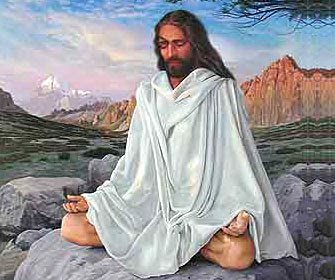
…
- Source for adaptation and translation http://theravadin.
wordpress.com/2010/08/28/the- yoga-sutra-a-handbook-on- buddhist-meditation/ -
-
- Published with Blogger-droid v1.6.5
-
-
- Posted by Dhammarakkhittas at 15:31
-
-
- Labels: ashtanga yoga , Brahmanism , Buddha , B
uddhism , ancient Buddhism , dharma , dhyana ,Hinduism , jhana , patanjali , Sangha , Theravada , yoga , Yogasutra -
-
-
Reactions:
-
-
-
0 comments:
-
-
-
Post a comment
-
-
-
-
- http://yoga.org.nz/postures.
htm -
-
Main Page
Welcome to our yoga postures section. Here you will find
yoga moves that are broken down to the bare basics with colour photos
to match. We also have state of the art flash yoga animation technology that you can use to view these moves in full screen size, full colour and with full instruction.
Yogic exercises cater to the needs of each individual
according to his or her specific needs and physical condition. They
involve vertical, horizontal, and cyclical movements, which provide
energy to the system by directing the blood supply to the areas of the
body which need it most.
In yoga, each cell is observed, attended to, and
provided with a fresh supply of blood, allowing it to function smoothly.
The mind is naturally active and dynamic, while the innerself is
luminous. In this section we will give you plenty of yoga images and
instruction.
|
Breathing Pose
|
Arm Stretch
|
Kneeing Twist
|
||
|
|
|||
|
|
|
|
||||
Yoga breathing is also call Pranayama . Many say that Pranayama (Rhythmic control of breath) is one of the bests medicines in the world . Right click the link and save as to download a beginners breathing routine . Then watch in windows media player. Click the BIG play button in the middle below. To watch a Pranayama Breathing overview . Please visit: http://www.youtube.com/watch? |
Hero Pose
The purpose of this pose is to help give the entire
body a very complete stretch from the heels to the head. It improves
strength and endurance and helps to control your breathing in
conjunction with the movements of the body.
It eases and stimulates the joints especially the
knees, ankles and shoulders. It reduces and alleviates backache and
improves the circulation of the entire body.
 |
|
Instruction Table
|
|
|
1
|
|
| Come in to a position on your hands and your |
| knees with your knees together and your feet slightly wider than hip width apart. Your big |
| toes & little toes pressing firmly into the floor | |
|
2
|
|
| Push back with your hands & sit between your buttocks on the floor, make sure you roll your calf muscles out wards so your not sitting on them. |
|
|
3
|
|
 |
Make sure the inner calves are touching the outer thighs and your ankles are outside your buttocks, arms resting at the sides. |
|
4
|
|
 |
Inhale as you slowly raise your arms to shoulder height, shoulders down. |
|
5
|
|
 |
Exhale lengthen out through the fingertips & turn your palms to the roof. Inhale stretch your arms overhead. |
|
6
|
|
 |
Interlock the fingers. Slowly exhaling turn the palms towards the ceiling, and with a powerful push lift up from the belly into your chest and shoulders. |
|
7
|
|
 |
Exhale bring your hands down in a smooth continuance motion…. |
|
8
|
|
 |
Now bringing your arms interlocking behind your back with straight arms, being careful not to roll the shoulders forward, squeezing the shoulder blades together and opening the chest on the front of the body. |
|
9
|
|
 |
Inhale hands back to the side |
| Repeat 2-3 more times |
Please Visit:
http://www.youtube.com/watch?

Kneeing Twist Pose
Regular practice of the kneeling twist pose
will aid in your ability to rotate the spine and upper torso more
effectively, while increasing the flexibility and strength in your back
and abdominal muscles. It also massages, stimulates and rejuvenates the
internal abdominal organs.
This pose is a good beginners pose and will get you ready for more advanced twists.
|
To view in flash - click the image below
|
|
|
|
Instruction Table
|
|
|
1
|
|
 |
Sit on your heals with your knees together, the tops of the feet Arms relaxed by the side keep your base firm by contracting your buttocks. |
|
2
|
|
 |
Inhale, extending the spine upwards, exhale twist around to the Take a few breaths here, keeping the stomach soft and the eyes soft. Repeat on the other side |
Please Visit:
http://www.youtube.com/watch?

The Triangle Pose
Triangle pose tones the leg muscles, spinal nerves and abdominal organs; it contributes towards a strong healthy lower back.
The triangle gives an excellent and complete stretch
throughout the entire body.
|
To view in flash - click the image below
|
 |
|
Instruction Table
|
|
|
1
|
|
 |
Align yourself in mountain pose. |
| Continuing with your smooth |
| flowing breath | |
|
2
|
|
 |
Inhale deeply and jump your feet out landing approx 1.2-1.5m apart. your feet need to be in line and pointing forward at right angles. Next raise your arms to shoulder level, be sure that they are in line with each other. Stretch your arms out from the middle of your back. Lift your chest and look straight ahead. |
|
3
|
|
 |
Now turn your right foot out while keeping your hips to the front, and turn your left foot in from 90 to 70 degrees, by pivoting on your heel. Insure your right heel is in line with the instep of the left foot. |
| This is important as it sets the base for this pose. | |
|
4
|
|
 |
The kneecaps and thighs are pulling up, simultaneously pushing downward through your feet into the floor. Inhale, extend the spine, exhale as you bend to the right, pushing out from the hips, through the right arm… |
|
5
|
|
 |
Taking your right hand to a comfortable position on your leg, your left arm coming up to straight, moving down as far as possible without turning the hips or torso. Keep the thighs firm and rolling around towards the buttocks, moving the left hip back and open the chest. |
|
6
|
|
 |
Inhale, extend the neck and spine, exhale, turn your head to look up at your left hand. |
| Keep your head, your buttocks and your heels in one straight line,not looking down with you body, keep opening your whole body up. |
| Breathe easy. |
Click here to view the Triangle pose
http://www.youtube.com/watch?

The Tree Pose
This pose harnesses the powers of mental concentration, while
allowing you to calm the mind. It develops balance and stability, and
strengthens the legs and feet, also increasing flexibility in the hips
and knees.
The tree pose is a balance pose incorporating three lines of
energy, emitting from the centre outwards. One line proceeds down the
straight leg, one line extends up the spine and out the fingertips, and
the third moves outward through the bent knee.
|
To view in flash - click the image below
|
 |
|
Instruction Table
|
|
|
1
|
|
 |
Align yourself in mountain pose. |
| Continuing with your smooth |
| flowing breath | |
|
2
|
|
 |
On your next inhale; shift the bulk of your weight onto your left foot. Exhale bend the right knee, and assisting with your hand, place the sole of your right foot as high as possible into the left inner thigh, with toes pointing down, steady yourself, and |
| breathe easy. | |
|
3
|
|
 |
Next raise your arms to shoulder level, be sure that they are in line with each other. Stretch your arms out from the middle of your back. Lift your chest and look straight ahead. Keep completely focused on the pose. |
|
4
|
|
 |
Now bring your palms together in prayer position. Keeping your eyes focused on a point in front of you, will assist your balance. |
|
5
|
|
 |
Inhale as you raise your arms overhead keeping your palms together and stretching upwards through the fingertips. |
| Keep working your right knee back and contracting your buttocks muscles in and down. |
| Feel your abdomen plane and hips facing straight ahead, while lifting out of the waist. |
http://www.youtube.com/watch?
Virabhadra
The Warrior pose is
named after the mythic warrior-sage, Virabhadra. This challenging pose
strengthens the entire body while improving mental capacity and self
control.
It builds, shapes and tones the entire lower body. It tones the
abdominal section and helps to prevent, reduce and eliminate back pain.
The entire upper body -front and back- is worked and doing this pose
increases the capacity of the respiratory system.
|
To view in flash - click the image below
|
 |
|
Instruction Table
|
|
|
1
|
|
 |
Stand in mountain pose continuing with your smooth flowing breath. |
|
2
|
|
 |
Jump your feet sides ways and sweep your arms out to the side so your |
|
Visualise |
|
|
3
|
|
 |
Keep an awareness of this line as you turn your right foot out to 90 degrees and turn your left foot in to 70 degrees. Ensure the heel of your front foot aligns with arch of your back foot, hips facing forward. |
| If your body wants to turn off centre, counter-act it by pushing simultaneously in opposite directions from the centre line. | |
|
4
|
|
 |
Inhale, an as you exhale bend your right leg, pulling up with the outside and inside of the thigh to form a right angle at the knee. Only go as low as you can with out turning your hips off centre. |
| Ideally you want your knee directly above your ankle with you leg coming vertically out of the floor like pillar. Keep the power flowing through the back leg into the floor. |
|
|
5
|
|
 |
Inhale lift the spine; exhale turn your head to look over your right arm. Take a few deep breaths through the nose. Hold the pose and breathe smooth. Reverse the procedure back to mountain pose and repeat back to the other side. |
Please Visit:
http://www.youtube.com/watch?

Mountain Yoga Pose
The Mountain Pose is one of the most important poses in yoga. It is the start and finish point of all standing poses.
When standing in mountain pose, the mind is quiet,
and the body strong and still, like a mountain. This is a pose you can
practise in your daily life, practising to stand correctly will have a
profound influence on your physical and mental well being.
|
To view in flash - click the image below
|
|
|
|
Instruction Table
|
|
|
1
|
|
|
|
Stand with your feet hip width apart, so the outsides of the feet are almost parallel edged. Press and spread the toes into the floor. Feel the weight of your |
|
2
|
|
|
|
Lift the kneecaps up by contracting the front thigh muscles, but not locking the backs of the knees. Pull up with the back of the thighs, and activate the hip and buttocks to level the pelvis. |
|
3
|
|
|
|
Your hips should be directly over your knees, and your knees over your ankles. This gives you a stable foundation and by positioning the pelvis properly, keeps the spine healthy. |
|
4
|
|
|
|
Now extend the spine, by slowly inhaling, lifting up |
||
|
|||
|
|||
The Prayer Pose
This pose is simple, but very effective, and is a
key movement to more advanced poses. This pose will teach you how to
push from under the shoulders and out of the lats, the major muscle
group of the back. A key movement in a lot of yoga poses.
It strengthens and aligns the upper body while
releasing tension and increasing the circulation to the shoulder joint,
which is a ball and socket joint. It also aids in strengthening the
abdominal and lumber region as you look to form a solid base.
|
To view in flash - click the image below
|
 |
|
Instruction Table
|
|
|
1
|
|
 |
Centre yourself in mountain pose and take a few deep breaths here, breathing down into the abdomen, continuing the breathing that you are now familiar with. |
|
2
|
|
 |
Inhale, raise your arms to shoulder height and stretch them out in the opposite direction to each other |
|
3
|
|
 |
Now twist your arms from the shoulder and turning your palms upwards. Keep the body in a nice strong upright position |
|
4
|
|
 |
Bring your arms out in front of you, pushing your elbows firmly together and your fingers extending away from you, while focusing on pulling your shoulder blades together.. |
|
5
|
|
 |
Continue squeezing the elbows together as you bring your palms together |
|
6
|
|
 |
Now bend at the elbow and take the forearms to vertical. Keep pressing firmly with the palms and the elbows as you breathe the arms upwards. With each exhale moving slightly higher. |
movement will teach you how to push from under the shoulders and out of
the lats, the major muscle group of the back. A key movement in a lot of
yoga poses. This pose is simple, but very effective, and is a key
movement to more advanced poses.

The Shoulder Shrug
The shoulder rotation is another pose which can be practiced anywhere and at any time.
It strengthens and aligns the shoulder region while
releasing tension and increasing the circulation to the shoulder joint,
which is a ball and socket joint. It also aids in strengthening the
abdominal and lumber region as you look to form a solid base.
|
To view in flash - click the image below
|
|
|
|
Instruction Table
|
|
|
1
|
|
 |
Align yourself in mountain pose. |
| Continuing with your smooth |
| flowing breath | |
|
2
|
|
 |
As you inhale, lift your shoulders to your ear lobes, keeping the head erect and soft. |
|
3
|
|
 |
As you exhale, rotate the shoulders around |
| by pushing up out of the chest and squeezing the shoulder blades together, rotating them |
| in a full circle. | |
|
4
|
|
 |
Back down into mountain pose |
| Repeat 3 more times |
Please Visit:
http://www.youtube.com/watch?

The Lying Basic Twist
Doing this pose will rapidly increase strength and muscle tone in your midsection.
The lying twist is another pose which is very
simple yet extremely effective. This pose is soothing to the spine and
neck, and warms and frees the lower back and hips and it also improves
digestion and assists in toxin elimination.
|
To view in flash - click the image below
|
 |
|
Instruction Table
|
|
|
1
|
|
 |
Come to a position lying on your back and stretch your arms out to Move your shoulder blades under. Spread your toes apart. Feel the |
|
2
|
|
 |
Bend your knees as far as they come towards the chest.
|
|
3
|
|
 |
Inhale, keeping your knees and ankles together,
Exhale, rolling your knees to the right. Focus on keeping your arms pressing out wards and your shoulders pushing firmly into the ground. You may feel or hear your spine lengthening as it extends into the correct alignment. |
|
Knees & ankles together breathe, focus on creating length between the left lower rib and the hip,
|
|
|
4
|
|
 |
Now turn your head to look over your left hand. Relax in to this pose, stomach soft, breathing soft and relaxed. Reverse the pose back up and repeat to the other side |
Adhomukha Svanasana
The downward yoga pose is
named as such as it resembles the shape of a Dog stretching itself out.
This pose helps to strengthen, stretch and reduce stiffness in the legs
while strengthening and shaping the upper body. Dog pose Yoga Posture .
One of the main yoga asanas. If you have time for only one posture try
this one.
Holding this pose for a minute or longer will
stimulate and restore energy levels if you are tired. Regular practice
of this pose rejuvenates the entire body and gently stimulates your
nervous system.
|
To view in flash - click the image below
|
 |
|
Instruction Table
|
|
| 1 | |
 |
Come up onto your hands and knees with your knees hip width apart and the hands shoulder width apart, your fingers wide pressing firmly into the floor. |
| 2 | |
 |
Inhale, arch your spine and look up as you turn your toes under. |
| 3 | |
 |
As you exhale straighten your legs and pause here for a moment. |
| 4 | |
 |
Now push the floor away from you hands, positioning your body like an inverted V, achieving a straight line from your hands to your shoulders to the hips. Straight arms and straight legs. |
| As you inhale press downward into your hands and lift outward out of the shoulders. |
| Lift your head and torso back through the line of your body. |
Please Visit:
http://www.youtube.com/watch?
Paschimottanasana
The purpose of this pose is to give the entire back
of your body a very complete stretch from the heels to the head. It is
excellent for posture improvement and stimulates the internal organs as
well.
It adds in improved mental concentration and
endurance and helps to control and calm the mind. It relieves
compression while increasing the elasticity of the spine, it also
strengthens and stretches the hamstrings.
|
To view in flash - click the image below
|
 |
|
Instruction Table
|
|
| 1 | |
 |
Come to a sitting position with your legs together in front of you. |
| Move the fleshy part of your buttocks from underneath you, so you are on the top of your sitting bones, which are located at the very top of your legs. |
|
| 2 | |
 |
Roll the thighs inwards so that the kneecaps are facing directly upwards. |
| Activate the legs by pressing down into the floor, and out through the heels. |
| Spread your toes wide and pull them towards you. |
| Lengthen your lower back muscles down as you extend your spine up and out of the pelvis. | |
| 3 | |
 |
Now take your strap around both feet. The strap`s purpose is to keep the spine straight. This is very important. Be aware the head is an extension of the spine, so keep it aligned accordingly. |
| Use the breath to create the optimum degree of intensity in the stretch. | |
| 4 | |
 |
On your next exhale; come down the belt further while maintaining the extension on the front and back of the torso. Some of you will be able to grab the sides of your feet. Breathe softly and continuously. Don’t pull yourself forward by the strength of your upper body. |
| Keep bending at the hips, maintaining a relaxed head and neck. | |
| 5 | |
 |
Go a little further, relax your abdomen, and inhale, as you lengthen, exhale, and come further forward, increasing the space in your vertebrae. |
Please Visit:
http://www.youtube.com/watch?
Salabhasana
The locus yoga posture is
named as such as it resembles the shape of the insect known as the
Locust. This pose helps to strengthen, stretch and reduce stiffness in
the lower back while bringing flexibility to the upper back region.
When you first begin to practice this pose, your
legs may not move very far off the floor. Please continue and stay
positive as you will find your range will continue to improve the more
you practice. Learning to master this pose will hold you in good stead
for more advanced back bends.
|
To view in flash - click the image below
|
 |
|
Instruction Table
|
|
| 1 | |
 |
Come to a position lying face down on the floor, with your arms along side your body, palms and forehead down. Bring your knees and ankles together. Squeeze the shoulder blades together and down. Push your palms into the floor. Pull the abdominals inwards, contract the buttocks, and press the hips and pubis firmly into the floor. |
| 2 | |
 |
On your next exhale; raise the legs to a height that is comfortable but challenging. Keep the buttocks activated, lock the knees, keep the ankles together. |
| 3 | |
 |
Extend the front of your body as you pull the shoulder blades together, raising the head, the arms, and upper torso away from the floor, looking straight ahead, opening the front of the chest and pushing down the lines of the arms. |
| Keep the legs working strongly. |
Please Visit:
http://www.youtube.com/watch?

The Bridge Pose
The Bridge Pose is
a simple yet very effective pose to practice. It helps to promote a
healthy flexible spine while strengthening the legs and buttock muscles.
It also helps to stretch and stimulate the abdominal muscles and
organs.
It aids in easing and stimulating the mind and is a great way to reenergize if feeling tired.
|
To view in flash - click the image below
|
 |
|
Instruction Table
|
|
|
1
|
|
 |
Lie on your back with your legs bent, heels close to the buttocks, Feet pressing firmly into the floor, hip width and parallel. |
| Your arms should be slightly out from your sides, the palms of your hands pressing firmly into the floor. | |
|
2
|
|
 |
Inhale, and with the exhale raise the hips up by pushing strongly |
|
Take a few nourishing breaths in this position, as you keep opening the chest and lengthening the torso. |
|
|
3
|
|
 |
Now bring your arms over your head to the floor behind
you. Keep lifting your buttocks away from the floor, keeping them contracted, which will protect the lower spine, and work softly with the breath, keeping the head and neck relaxed. |
|
This
pose stretches the whole front of the body, and brings mobility to the spine. Breathing is improved from the opening of the ribcage and chest area. |

The Extended Child’s Pose / Garbhasana
The Childs Yoga pose when
practiced regularly is very beneficial to your entire mind and body. It
helps to release the pressure on the spine while providing an entire
stretch through the upper body to the fingertips. It also aids in
strengthening and stretching the insides of the legs while massaging the
internal organs.
Breathing will becomes more efficient and your mind
will become clear. It also aids in improved mental processes and helps
to rejuvenate and energize the entire being.
|
To view in flash - click the image below
|
 |
|
Instruction Table
|
|
|
1
|
|
 |
Bring your big toes together and your knees wide apart, inhale as you lift your spine and extend your stomach. |
|
2
|
|
 |
Exhale bend forward from the hips as you walk you hands out as far in front of you as possible, extending from the hips to the fingertips. |
|
3
|
|
 |
Place your forehead on the ground & buttocks
back to the heels. Work your pubis to the floor and strech the inner thigh muscles. Focus on the breath. |
|
4
|
|
 |
Breathing into the abdomen as you extend it forward in to the breastbone, creating length through the upper body. Exhale from deep in the abdomen relaxing in the spine and continue the slow controlled breathing. |
Please Visit:
http://www.youtube.com/watch?

The Standing Forward Bend
This pose aids in digestion and is restorative. It
frees the rib cage allowing for improved breathing. It aids in mental
concentration and helps to revive mental and pysichal exhaustion. The
heartbeat is slowed and the lower back is strengthened and pressure is
removed from the lumbar region.
It increases flexibility while strengthening and
developing the hamstrings. It also helps to strengthen the feet and
ankles while realigning the entire body.
|
To view in flash - click the image below
|
 |
|
Instruction Table
|
|
|
1
|
|
 |
Stand in mountain pose, in the centre of your mat, with your hands in prayer position. Jump your feet wide apart. Keep the outside of your feet running parallel while lifting your |
|
2
|
|
 |
Place your hands on your hips and feel the extension up out of the waist. |
|
3
|
|
 |
Inhale, As you exhale bend at the hips extend forward,
continue lifting out of the hips keeping your legs strong and your base nice and firm, looking forward to begin with. Keep the extension on the stomach, which will help keep your back flat protecting it. |
|
Take a few breaths here.
|
|
|
4
|
|
 |
Now take your hands to the floor extending from the lower abdomen to |
|
If |
|
|
5
|
|
 |
Draw your shoulders down your back so you can extend the neck with ease. |
| Remember to keep the arches high. |

The Boat Pose
Doing the boat pose will rapidly increase strength and muscle tone in your midsection.
Keep challenging yourself to stay in this pose
longer. If you find the stimulation of the midsection becoming intense,
just persist with it, knowing your mind has ultimate control over the
body.
|
To view in flash - click the image below
|
 |
|
Instruction Table
|
|
|
1
|
|
 |
Find yourself on your sitting bones, lifting out of the hips. |
| Extend your spine upwards, and press the soles of your feet into the floor, with the knees and ankles together. | |
|
2
|
|
 |
Using your fingertips on the floor for balance, extend your abdomen as you lean back slightly. |
|
3
|
|
 |
Bring your lower legs up, parallel to the floor.
Breathe softly, in and out through the nose, while opening the chest and squeezing the shoulder blades together. |
|
Focus on a point at eye level in front of you. You may find this pose challenging to begin with
|
|
|
4
|
|
 |
Now bring your arms up beside your knees, parallel to the floor, Feel the stimulation of the entire abdominal region, as you hold this pose for a few more breaths. |
|
Advanced Variation of The Boat
|
|
 |
Now bring your legs up to straight. Continue to keep your focus on that point in front of you. Continue with the controlled breathing. |
Posted by: site admin @ 8:01 am
swimming fitness
swimming fitness
schwimmen-0011.gif from 123gifs.eu Download
swimming
IN BRIEF: Moving through water by the motion of hands and feet.
I
often think that we are like the carp swimming contentedly in that
pond. — Michio Kaku, Source: Hyperspace : A Scientific Odyssey Through
Parallel Universes, Time Warps, and the 10th Dimension,
The Dream Encyclopedia:
Bodies of water are natural symbols of both the unconscious and the emotions. Dreaming about
swimming
can thus be related to the emotions or to an exploration of one’s
unconscious (a natural dream image for someone undergoing therapy).
Also, because we spend the first nine months of our lives in a liquid
environment, swimming is also a symbol of birth or rebirth.
Swimming
Swimming
and Diving - swimming: racing contest in which swimmers propel
themselves across surface of water over designated distance, usualy. in
one of four strokes
Swimming may refer to:
Movement and sport in water
Aquatic locomotion, animal movement through water
Human swimming, human movement through water
Swimming (sport), the competitive sport of swimming
http://www.active.com/swimming/Articles/Breathing-Tips-for-Swimmers.htm
When
it comes to breathing, new swimmers often struggle to master their
technique, while veteran swimmers continually strive to perfect it. Use
this guide to getthe air you need in the water.
Proper Breathing Technique for Swimming
Learn how to get comfortable in the water and find a rhythm to your breathing, even through a stressful triathlon swim start.
Bilateral Breathing
Many
swimmers use only one side to breathe on, especially those who log a
lot of freestyle yards. One of the most common questions in the swimming
world is should you breathe on one side only or use bilateral
breathing?
4 Steps to Easy Breathing in Freestyle
For beginning swimmers, learning to breathe is as important as
discovering your stroke. Here are four ways to gradually build your confidence
in the water.Breathing Mechanics That Will Help
Your Freestyle
If breathing breaks your stroke’s rhythm, the solution isn’t to
hold your breath. Use these tips to put air in your lungs without compromising
your technique.
Extra Air and Fast Turns in Distance
Swimming
Long pool sets mean lots of flip turns. For some swimmers, not
breathing in and out of the turn can leave them gasping for air. Next time
you’re short of breath, try this method.
Mastering the Top 5 Freestyle
Breathing Challenges
The most common questions I hear about the mysteries of swimming
efficiently usually involve breathing. Here are the top five challenges in
learning how to breathe in freestyle.
Breathing Basics: Getting Comfortable
Until your swimming breath becomes routine, effectively focusing
on other aspects of your stroke is impossible. Try this unique out-of-the-pool
exercise to help you get comfortable.
Inside-Out Breathing: Get the Air You
Need
There’s probably a greater range of breathing skill in swimming
than in any other activity. Elite swimmers can breathe effortlessly while
maintaining perfect form at maximum exertion and world-record pace.
Perfect Your Breathing With a Better
Body Position
Do you get fatigued easily in the water because of lack of air?
Improve your breathing by balancing your body position.
Q & A With Natalie Coughlin:
Breathing and Hand Position Tips
Olympic gold medalist Natalie Coughlin answers your questions on
maximizing your freestyle breathing and fine-tuning your hand position.
Q & A With Natalie Coughlin: Flip
Turns and Better Breathing
Olympian Natalie Coughlin answers questions about improving your
flip turns and having greater control over your breathing.
What is the definition for
swimming ?
In recreation and sports, the propulsion of the body through
water by combined arm and leg motions. Swimming is popular as an all-around
fitness routine and as a competitive sport. It has been included in the modern
Olympic Games since their inception in 1896. Events include freestyle
(crawl-stroke) races at distances of 50, 100, 200, 400, 800, and 1,500 m;
backstroke, breaststroke, and butterfly races at 100 and 200 m; individual
medley races at 200 and 400 m; freestyle relays, 4 ´ 100 m and 4 ´
200 m; and the medley relay, 4 ´
100 m. Long-distance swimming competitions, usually of 15 – 37 mi (24 – 59 km),
are generally held on lakes and inland waters.
Swimming is one of the most popular
recreational sports that can be enjoyed by all ages. The ability to swim
enables people to participate in a wide variety of water sports such as
snorkelling, water skiing, jet skiing, wind surfing, sailing, boating, fishing,
rowing, and canoeing, without the fear of getting into trouble, and reduces the
risk of drowning. Fear of water, particularly if a person suddenly gets out of
their depth, prevents a lot of people going into a swimming pool or enjoying
beach holidays. Many of the newer water sports require expertise in handling a
craft as well as swimming proficiency.
Water is a very dangerous place for non swimmers, particularly
if it is cold and an excessive amount of alcohol has been drunk. Unfamiliar
surroundings, and no knowledge of local tides, can be lethal to careless
individuals. Water-related fatalities are the second leading cause of
accidental death in the UK and Australia, and the third in the US. The risk of
drowning is 2.5 deaths per 100
000
in USA and 1 per 100 000
in the UK.
Babies are taught to swim at a very young age in some countries;
this enables them to learn to swim without fear of the water. They should have
had their first two combined immunizations, unless they are being breast-fed.
The water temperature should be higher than normal, a minimum of 86°F or 27°C.
The time spent in the water should be carefully monitored; this can vary from
10 minutes to 30 minutes but babies should not stay too long in the water as
they lose heat rapidly.
Swimmers are usually taught the four swimming strokes used for
competitions; the front crawl, backstroke, breaststroke and butterfly, which
are swum either as a single stroke or in combination over various distances.
There are four phases of each stroke; the reach, catch, pull,
and recovery. The arm action during the pull phase provides 75% of the
propulsion in all strokes except the breast-stroke, where the contributions
from the upper and lower limbs are equal. During reach or entry the arm reaches
forwards to enter the water. In backstroke the arm entry occurs with the
shoulder in the fully elevated position. Catch is similar in all competitive
strokes except backstroke; the elbow flexes, the arm extends forwards at the
shoulder and moves outwards in the horizontal plane whilst rotating towards the
body. The pull is the propulsion phase and can vary; the swimmer either sculls
or pushes the water. The arm action starts at maximum elevation and ends in
extension except in breast-stroke. Recovery is the out of water phase (except
breast-stroke), and the arm then returns to start position.
In breast-stroke the arms move together in pull and recovery
phase and the arms do not pull below the waistline.
Swimming is a sport that attracts participants of all ages
although it is largely a young sport. Competitions are organized by clubs,
schools, and national associations. Short course competitions take place in a
25-metre pool, long course in a 50-metre pool. Olympic swimming competitions
are over a variety of distances and strokes, and they take place in 50-metre
pools. Synchronized swimming, water polo, and diving are also included in the
Olympic program
. Swimming
in the sea may be part of a triathlon race, and open sea races, including
Channel swims, are also held. ‘Masters’ swimming competitions are held for
those over 24 years of age whereas ‘veteran’ sports competitions in athletics
are for the over 40s. Competitions for different age groups are held in most
countries, and world championships also take place.
Competitive swimming is a high-intensity training and
performance sport. During the school year swimming training is divided into two
sessions: the first session is in the early morning before school and the
second session after school. The competitive swimmer usually does an average of
12
000-18 000 metres per day. The competition programme
for the season should be planned well in advance so that the swimmer can peak
for a specific competition, i.e. the swimmer reduces the amount of training to
get the best result.
Swimming is a relatively injury-free sport and was found to be
the safest of eleven sports surveyed by Weightman and Brown in 1975. It is
non-load-bearing and does not involve antigravity work, resulting in fewer
injuries. The injuries that do occur are usually due to overuse, doing too much
too quickly, or breaking the rules.
To ignore warning signs of strong currents, king waves or rip
tides may have lethal consequences. Diving into the shallow end of a pool or
into a wave or sea where rocks are submerged may result in severe injuries.
Pools should have the depth clearly marked so that swimmers do not dive into
shallow water. Pools used for competition should be marked 2 metres from the
wall at each end to judge when to turn. Flags are placed above the pool 5
metres from the end of the pool for the backstroke turn. There are rules
against running around the pool. Pool discipline should be maintained,
particularly out of the pool to prevent people slipping or jumping into the
pool on top of other swimmers. There should also be strict discipline in the
pool when swimming lengths.
Hyperventilation before
trying to swim a long distance under water should be forbidden, as it increases
the risk of hypoxia
(lack of oxygen), and may result in loss of consciousness and
death by drowning. The hyperventilation removes carbon dioxide and hence delays
the stimulus to breathe when breathholding.
Swimming programmes are helpful for both the mentally and the
physically handicapped as they weigh less in water, and this makes it easier
for them to move their muscles, enabling them to improve muscle tone and
co-ordination of movement. Pregnant women can swim during their pregnancy while
many other sports are not suitable. Swimming is also useful in rehabilitation
of injured athletes. Patients with rheumatoid arthritis can improve their
aerobic capacity by swimming in warm water. Asthmatics should be encouraged to
swim, as swimming is the sport that is least likely to precipitate an asthmatic
attack, and the fitter they are the fewer attacks they have; swimming improves
their breathing. Asthma is not a handicap in achieving excellence in sport as
shown by the number of Olympic gold medal swimmers who were asthmatics.
Water aerobics is becoming a popular method of keeping fit, with
less potential for injury than high impact aerobics. Running in the water is a
useful method for athletes to keep fit, if they are injured and unable to cope
with full weight-bearing on hard surfaces. Hydrotherapy is also an effective
rehabilitation after injury. Swimming is thus a sport that can be enjoyed by
many different groups.
Read more: http://www.answers.com/topic/swimming#ixzz1TqUeuPf1
Read more: http://www.answers.com/topic/swimming#ixzz1TqTTVV9g
Q: What is Avantouinti?
Avantouinti
is the Finnish word for “winter swimming”. It may sound to many like
masochism taken to ridiculous lengths, but it is becoming increasingly popular
in Finland where 10% of the population have tried it and there are more than
80,000 regular winter swimmers who tout the therapeutic benefits of winter
swimming. The
typical swimmer is not some grizzled macho-type, but a middle-aged woman with a
clerical job.
Q: What Happens When You
Jump Into Cold Water?
Sudden
immersion in ice cold water can result in an involuntary
gasp followed by 1 - 3 minutes of involuntary hyperventilation. Specific data are: 2.0 liter gasp in 82o
water and 3.0 liter gasp in 50o water (i.e. nearly your entire lung
volume), and in 50o water a 600 - 1,000 percent increase in
ventilation (air in and out) in the first minute. This hyperventilation results
in a profound lowering of blood carbon dioxide levels and a raising of blood pH
levels.
Q: Is Winter
Swimming Dangerous?
The strain placed on the heart are not likely to be a problem
for a healthy, fit person but may be dangerous for those with underlying heart
disease or hypertension.
Professor William R. Keating from the University of London
indicates that there is little health risk in cold-water swimming unless a
person starts suddenly at an old age.
Q: What is Cold Water
Shock
Rapid
cooling of the skin triggers various heart and breathing responses. The heart
rate can increase by 50% and blood pressure increase can increase to 175/93.
Although a substantial strain on the heart, these changes are not likely to be
a problem for a healthy, fit person but may be dangerous for those with
underlying heart disease or hypertension.
Q: Why is Cold Water
Swimming Becoming a Fitness Fad?
The number of people who swear by the therapeutic qualities of
outdoor winter swimming have increased dramatically of late. Clubs have sprung
up across the country for the reason that it the ideal form of gentle health
care. The benefits can be very great, it can stimulate mental processes,
produce hormones which make the body able to cope with physical stresses and
can increase the level of mental awareness and a feeling of well-being.
It can also release stress, remove aches and pains, increase vitality and keep
skin looking younger. Apparently the frost is a great preserver!
Many even treat their asthma or arthritis with cold water swimming.
Dhammarakkhita








Posted by: site admin @ 9:33 pm
𝓛𝓔𝓢𝓢𝓞𝓝 4133 Tue 26 Oct 2021

Prapanchmay karunge.” (We will make the whole world Prabuddha Prapanch
generating energy in the human body available ‘for the price of a coffee
a day’ a Stunning anti-ageing breakthrough could see humans live to 150
years and regenerate organ.New process has been found by Harvard
Professor David Sinclair and researchers from the University of New
South Wales, involving cell reprogramming.
to the University of Singapore survey/review based on 131 countries.
From June 18, world will be 100% free and happy from December 8th. Their
predictions about Italy and Spain fit exactly.
Maker of COVID
Tests Says Pandemic is Biggest Hoax Ever Perpetrated It is like a blind
man searching for a black cat in a dark room which is not there.
WORLD WILL BE FREE FROM HOAX - STRENGTHENING THE TRUST FOR BEST OF HEALTH -SINGAPORE UNIVERSITY SURVEY
 Online Positive Universal Prabuddha Intellectuals Convention.
Online Positive Universal Prabuddha Intellectuals Convention.




After Bath Practice Patanjali Yogic Meditation From 04:00 AM to 05:00 AM at
𝙆𝙪𝙨𝙝𝙞𝙣𝙖𝙧𝙖 𝙉𝙄𝘽𝘽Ā𝙉𝘼 𝘽𝙃𝙐𝙈𝙄 𝙋𝙖𝙜𝙤𝙙𝙖
18𝙛𝙩 𝘿𝙞𝙖. 𝙖 3𝘿 360 𝙙𝙚𝙜𝙧𝙚𝙚 𝙘𝙞𝙧𝙘𝙪𝙡𝙖𝙧 𝙋𝙖𝙜𝙤𝙙𝙖 𝙖𝙩
𝙒𝙝𝙞𝙩𝙚 𝙃𝙤𝙢𝙚,
668 5𝙩𝙝 𝘼 𝙈𝙖𝙞𝙣 𝙍𝙤𝙖𝙙,
8𝙩𝙝 𝘾𝙧𝙤𝙨𝙨, 𝙃𝘼𝙇 𝙄𝙄𝙄 𝙎𝙩𝙖𝙜𝙚,
𝙋𝙪𝙣𝙞𝙮𝙖 𝘽𝙃𝙐𝙈𝙄 𝘽𝙚𝙣𝙜𝙖𝙡𝙪𝙧𝙪,
𝙈𝙖𝙜𝙖𝙙𝙝𝙞 𝙆𝙖𝙧𝙣𝙖𝙩𝙖𝙠𝙖,
𝙋𝙧𝙖𝙗𝙪𝙙𝙙𝙝𝙖 𝘽𝙝𝙖𝙧𝙖𝙩 𝙄𝙣𝙩𝙚𝙧𝙣𝙖𝙩𝙞𝙤𝙣𝙖𝙡

𝙗𝙪𝙙𝙙𝙝𝙖𝙨𝙖𝙞𝙙2𝙪𝙨@𝙜𝙢𝙖𝙞𝙡.𝙘𝙤𝙢
𝙟𝙘𝙨4𝙚𝙫𝙚𝙧@𝙤𝙪𝙩𝙡𝙤𝙤𝙠.𝙘𝙤𝙢
𝙟𝙘𝙝𝙖𝙣𝙙𝙧𝙖𝙨𝙚𝙠𝙝𝙖𝙧𝙖𝙣@𝙮𝙖𝙝𝙤𝙤.𝙘𝙤𝙢
080-25203792
9449260443
9449835875
Spread the Words of Buddha from
𝙝𝙩𝙩𝙥://𝙨𝙖𝙧𝙫𝙖𝙟𝙖𝙣.𝙖𝙢𝙗𝙚𝙙𝙠𝙖𝙧.𝙤𝙧𝙜, WhatApp, Telegram,Facebook, Twitter, more than 5000 Emails.
Practicing Mindful Swimming at Dolphin Aquatics at Halasuru from 05:30 AM to 07:00 AM























- EASY FOR A 7 YEARS OLD BOY TO UNDERSTAND
BUT DIFFICULT FOR A 70 YEARS OLD MAN TO PRACTICE !
-
56) Classical Kazakh-Классикалық қазақ,
1,53-55Акарабағашта Пеяла, классикалық қазақ-классикалық Қазақ- Саусағайдың уақыты үшін де -Егер
саусақтың уақытында болса да, Бхиккху Бхикххус іздесіп, Ізгі ниетпен
ойлайды, ол гудвиллді ойлайды, ол Бхикху деп атайды, ол Бхикху деп
аталады, ол жһар жоқ, ол мұғалімнің тәліміне сәйкес келмейтін, оның
нұсқауы бойынша әрекет етеді, Кім елдің садақа тағамдарын бекер
тамақтандырмайды.
-
57) Classical Khmer- ខ្មែរបុរាណ,
លេខ 1.53-55Accharāsaṅghālaក្នុងបុរាណខ្មែរ- សូម្បីតែសម្រាប់ពេលវេលានៃការខ្ទាស់ម្រាមដៃ -ប្រសិនបើសូម្បីតែសម្រាប់ពេលវេលានៃការខ្ទាស់ម្រាមដៃ,
Bhikkhus, ការដេញតាម Bhikkhu, មានការរីកចម្រើន, គិតថាចិត្តល្អ,
គាត់ត្រូវបានគេហៅថា bhikkhu
ដែលមិនគោរពតាមការបង្រៀនរបស់គ្រូដែលធ្វើសកម្មភាពស្របតាមការណែនាំរបស់ទ្រង់។
ហើយអ្នកដែលមិនបរិភោគអាហារដែលមានទានរបស់ប្រទេសនេះដោយឥតប្រយោជន៍អ្វីទៀតទេដូច្នេះអ្នកដែលហាត់វាញឹកញាប់!
-
58) Classical Kinyarwanda -
1.53-55AnthharāsaṅghghGhāta Peyyāla muri Classicand Kinyarwand- Ndetse mugihe cyurutokiNiba
no mu gihe cy’urutoki Snap, Bhikkhus, akurikirana ahikkhu, atekereza
neza, atekereza ku byigisha kwa mwarimu, abahiriza inyigisho za mwarimu,
akora akurikije amabwiriza ye, Kandi ninde utarya ibiryo byangiza
igihugu kubusa. Noneho, ababikora kenshi!
-
59) Classical Korean-고전 한국어,
1.53-55.고전적인 한국어 고전의 Accharāsańghāta Peyyāla- 손가락 스냅의 시간조차도 -손가락
스냅의 시간조차도, Bhikkhus는 Bhikkhu가 영업권의 마음을 추구하고, 선생님의 가르침을 준수하는 Jhāna가없는
Bhikkhu라고 불리며, 그의 교육에 따르면, 그리고 헛된 나라의 자선 음식을 먹지 않는 사람은 누가 훨씬 더 많이 먹지
않습니다. 그럼, 자주 그것을 연습하는 사람들!
-
60) Classical Kurdish (Kurmanji)-Kurdî (Kurmancî),
1,53-55Accharāsaṅghāta Peyyāla di Kurdish Kurdish (Kurmancî) -Kurdî (Kurmancî)- Hîn jî ji bo dema tiliya tilikê -Heke
di heman demê de ji bo dema tiliyek, Bhikkhus, bhikkhu, pêşwazî dike,
hişê xwedêgiravî, yê ku li gorî hînkirina mamoste ye, yê ku li gorî
hînkirina wî tevdigere, dihesibîne, Who kî ku ji ber ku alîkariya welêt
di vain de xwarina welêt nagire.
-
61) Classical Kyrgyz-Классикалык Кыргыз,
1.53-55Accharāsaṅghāta peyāla in Classic- Ал тургай, манжаЭгерде
манжанын сөөмөйү үчүн, Бхикху, Бхикхху, жакшы ниет акылын өрчүтсе, анда
ал өзүнүн насааттыгына ылайык, мугалимдин окутуучусуна кимди айткан
Бхикху деп аталат Өлкөнүн тырышуусун эч качан жебей, бекер тамактанбайт.
-
62) Classical Lao-ຄລາສສິກລາວ,
A 1.53-53-55AccharāsaṅgtaPeyyālaໃນຄລາສສິກລາວ - ການນໍາໃຊ້ພາສາລາວ- ເຖິງແມ່ນວ່າສໍາລັບເວລາຂອງນິ້ວມື -ຖ້າເຖິງແມ່ນວ່າໃນເວລາຂອງນິ້ວມື,
Bhikkhus, ການພັດທະນາຂອງ Bhikkhu, ລາວໄດ້ຖືກເອີ້ນວ່າ Jhikkhu
ຜູ້ທີ່ປະຕິບັດຕາມຄໍາສອນຂອງຄູ, ຜູ້ທີ່ເຮັດຕາມຄໍາແນະນໍາຂອງລາວ,
ແລະຜູ້ທີ່ບໍ່ໄດ້ກິນອາຫານຂອງປະເທດໃນປະເທດທີ່ບໍ່ມີປະໂຫຍດ.
-
63) Classical Latin-LXII) Classical Latin,
An 1.53-55ACCHARĀSAṅGHāta Peyyāāla in Classical Latin-LXII) Classical Latin- Etiam pro tempore digitus Snap -Si
etiam pro tempore digitus disrumpam, Bhikkhus, Bhikkhu persequitur,
develops, considerat mentem benevolentiam, quod dicitur a Bhikkhu qui
non expers de Jhāna, qui obducit cum doctorem, qui secundum disciplinam,
qui secundum doctrinam suam Et qui non comedunt in altis cibo
fromyer.How multo magis, tunc qui faciunt frequenter? -
64) Classical Latvian-Klasiskā latviešu valoda,
-
1,53-55Accharāsaṅghāta Peyyāla klasiskā latviešu-klašaukā latviešu valodā- pat pirksta snap -Ja
pat brīdī pirkstu snap, bhikkhus, bhikkhu veic, attīstās, uzskata par
labas gribas prātu, viņš tiek saukts par Bhikku, kurš nav bez Jhāna,
kurš atbilst skolotāja mācībām, kas darbojas saskaņā ar viņa
instrukciju, un kurš neēd valsts almers pārtiku vain.how daudz vairāk,
tad tie, kas praktizē to bieži!
-
65) Classical Lithuanian-Klasikinė lietuvių kalba,
1.53-55.Accharāsaṅghāta Peyyāla klasikiniame lietuvių-klasikinėje Lietuvių kalba- net ir piršto laikui -Jei
net ir už piršto, Bhikkhus, Bhikkhu siekia, vystosi, mano prestižo
protas, jis vadinamas bhikkhu, kuris nėra beuoid Jhāna, kuris laikosi
mokytojo mokymo, kuris veikia pagal jo nurodymus, Ir kas nevalgo šalies
alms maisto veltui.Kaip daug daugiau, tuos, kurie tai dažnai
praktikuoja!\
-
66) Classical Luxembourgish-Klassesch Lëtzebuergesch,
Eng 1,53-55Aästhrāssaṅghāta pyyyāla a klassescher Lëtzebuerger Lëtzebuerger Likase Lëtzebuergesch- Och fir d’Zäit vun engem Fanger Schnapp -Wann
och fir d’Zäit vun engem Fanger Snap, bhikkhus, e bhikkhu Verfollegung,
entwéckelt, berécksiichtegt e Geescht vu Wëllen, hien nennt een Bhikkhu
deen net de Bhikkhu huet, deen net de BHASSID ‘benotzt, déi entsprécht
An dat, dass d’Sonne vun der Land net vill iesse méi näichent méi 00,
wou, déi vill méi éieren, déi se sinn!
-
67) Classical Macedonian-Класичен македонски,
1.53-55.ACCARASAṅGHāta peyyāla во класичен македонски-класичен македонски- дури и за време на прст предвремени -Ако
дури и за време на прстот Snap, Bhikkhus, Bhikkhu се стреми, се
развива, смета на умот на добра волја, тој се нарекува Bhikkhu кој не е
лишен од Џана, кој е во согласност со наставката на наставникот, кој
делува според неговата инструкција, И кој не јаде храна за милост на
земјата залудно. Колку повеќе, тогаш, оние кои често го практикуваат!
-
68) Classical Malagasy,класичен малгашки,
1.53-55Accharāsaṅghāata peyyāla amin’ny fiteny anglisy, Класичен малгашки- na dia amin’ny fotoana fanoratana rantsantanana aza -Raha
dia ny fotoana ny rantsan hanaikitra, bhikkhus, ny bhikkhu manenjika,
dia manangana, mihevitra ny saina ny fankasitrahana, izy dia antsoina
hoe ny bhikkhu izay tsy Mila asehontsika amin’ny jhāna, izay mifanaraka
amin’ny Mpampianatra ny fampianarana, izay miasa araka ny fananarany
azy, Ary iza no tsy mihinana ny fiantran’ny firenena foana.
-
69) Classical Malay-Melayu Klasik,
Satu 1.53-55.Accharāsaṅghāta Peyyāla dalam Bahasa Melayu Klasik Klasik- Walaupun untuk masa snap jari -Sekiranya
untuk masa snap jari, Bhikkhu, seorang Bhikkhu mengejar, membangun,
menganggap minda muhibah, dia dipanggil Bhikkhu yang tidak mempunyai
Jhāna, yang mematuhi pengajaran guru, yang bertindak menurut
pengajarannya, Dan siapa yang tidak makan makanan sedekah negara dengan
sia-sia. Berapa banyak lagi, maka, mereka yang mengamalkannya dengan
kerap!
-
70) Classical Malayalam-ക്ലാസിക്കൽ മലയാളം,
1.53-55ക്ലാസിക്കൽ മലയാളത്തിൽ ACCHARāSAṅHAHATHATHATHATHATHATHATHALA-- ഒരു വിരൽ സ്നാപ്പിന്റെ സമയത്തേക്ക് പോലും -ഒരു
ഫിംഗർ സ്നാപ്പിന്റെ സമയത്തേക്ക് പോലും, ഭീഖുവിന്റെ പേരുകൾ പോലും
സദ്വൃക്ഷത്തിന്റെ മനസ്സിനെ പരിഗണിക്കുന്നുവെങ്കിൽ, അദ്ദേഹം തന്റെ
നിർദ്ദേശമനുസരിച്ച് പ്രവർത്തിക്കുന്ന ടീച്ചറുടെ അനിഷ്ടാംഗം, ആരാണ്
രാജ്യത്തെ ദാനധർമ്മം ഭക്ഷിക്കാത്തത് വെറുതെ ഭക്ഷണം കഴിക്കാത്തത്, അതിൽ
കൂടുതൽ പ്രായോഗികവർക്കുള്ളവർ എത്രത്തോളം! -
71) Classical Maltese-Klassiku Malti,
1.53-55.Accharāsaṅghāta peyyāla fil-klassiku Malti-Klassiku Malti- Anke għall-ħin ta ’swaba’ -Jekk
anke għall-ħin ta ’swaba snap, bhikkhus, isegwu Bhikkhu, tiżviluppa,
iqis moħħ ta’ avvjament, huwa msejjaħ Bhikkhu li ma jkunx nieqes minn
Jhāna, li jikkonforma mat-tagħlim tal-għalliem, li jaġixxi skond
l-istruzzjoni tiegħu, U min ma jiekolx l-ikel ta ‘l-Alms tal-pajjiż
f’Vain.How ħafna iktar, allura, dawk li jipprattikaw spiss! -
72) Classical Maori-Maori Maori,
-
mo te wa o te maihao Snap, Bhikkhus, e whai ana i te Bhikkhu, e kii ana
ko Bhikkhu, e kii ana ko Jhnāna, e whakaae ana ki tana ako. a ko wai e
kore e kai i nga kai a te whenua. Ae ra, ko te hunga e mahi pinepine
ana!
बोटांच्या स्नॅपच्या काळासाठी, भिक्खस, भिक्खुचा पाठपुरावा, सद्भावना एक
मन मानतो, त्याला भिकुह म्हणतात, जो या भाषणाचा नाही, जो शिक्षकांच्या
शिकवणीचे पालन करतो, जो त्याच्या शिकवणीनुसार कार्य करतो, आणि कोण देशाचे
भक्षक अन्न खाऊ शकत नाही. तर कितीतरी वारंवार अभ्यास करतात!
-
74) Classical Mongolian-Сонгодог Монгол,
1.53-55 -
хормын үед Бхикхус, Бхикхус, Бакхху нарыг хөгжүүлэх, хөгжүүлэх, мөн улс
орныхоо хоолыг дэмий хоосон хооллодоггүй. Хэрхэн дадлага хийдэг хүмүүс,
дараа нь дадлага хийдэг хүмүүс!
အဘယ်သူသည်အချည်းနှီးသောအစာကိုအစာမစားတတ်။
-
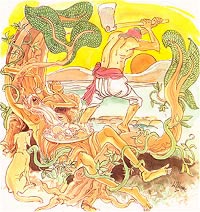
- Verse 112. The Person Of Effort Is Worthy
Though one should live a hundred years lazy, of little effort, yet better is life for a single day strongly making effort.
Explanation:
A single day’s life of a wise person who is capable of strenuous
effort, is nobler than even a hundred years of life of an individual who
is lazy, incapable of making an effort and is wanting in initiative.The Dhammapada: Verses and Stories
Dhammapada
Verse 112
Sappadasatthera VatthuYo ca vassasatam jive
kusito1 hinaviriyo
ekaham jivitam seyyo
viriyamarabhato dalham.Verse
112: Better than a hundred years in the life of a person who is idle
and inactive, is a day in the life of one who makes a zealous and
strenuous effort (in Tranquillity and Insight Development Practice).
1. kusito: an idle person; according to the Commentary, an idle person is one who passes his time only in evil thoughts.
The Story of Thera Sappadasa
While residing at the Jetavana monastery, the Buddha uttered Verse (112) of this book, with reference to Thera Sappadasa.
Once
a bhikkhu was not feeling happy with the life of a bhikkhu; at the same
time he felt that it would be improper and humiliating for him to
return to the life of a householder. So he thought it would be better to
die. So thinking, on one occasion, he put his hand into a pot where
there was a snake but the snake did not bite him. This was because in a
past existence the snake was a slave and the bhikkhu was his master.
Because of this incident the bhikkhu was known as Thera Sappadasa. On
another occasion, Thera Sappadasa took a razor to cut his throat; but as
he placed the razor on his throat he reflected on the purity of his
morality practice throughout his life as a bhikkhu and his whole body
was suffused with delightful satisfaction (piti) and bliss (sukha).
Then detaching himself from piti, he directed his mind to the
development of Insight Knowledge and soon attained arahatship, and he
returned to the monastery.On
arrival at the monastery, other bhikkhus asked him where he had been
and why he took the knife along with him. When he told them about his
intention to take his life, they asked him why he did not do so. He
answered, “I originally intended to cut my throat with this knife, but I
have now cut off all moral defilements with the knife of Insight
Knowledge.” The bhikkhus did not believe him; so they went to the Buddha
and asked. “Venerable Sir, this bhikkhu claims, that he has attained
arahatship as he was putting the knife to his throat to kill himself. Is
it possible to attain Arahatta Magga within such a short time?” To them
the Buddha said, “Bhikkhus! Yes, it is possible; for one who is
zealous and strenuous in the practice of Tranquillity and Insight
Development, arahatship can be gained in an instant. As the bhikkhu
walks in meditation, he can attain arahatship even before his raised
foot touches the ground.”
Then the Buddha spoke in verse as follows:
Verse
112: Better than a hundred years in the life of a person who is idle
and inactive, is a day in the life of one who makes a zealous and
strenuous effort (in Tranquillity and Insight Development Practice).-


-





 How many languages are there in the world?
How many languages are there in the world? -
-
-
7,117 languages are spoken today.
That number is
constantly in flux, because we’re learning more about the world’s
languages every day. And beyond that, the languages themselves are in
flux. They’re living and dynamic, spoken by communities whose lives are
shaped by our rapidly changing world. This is a fragile time: Roughly 0%
of languages are now endangered, often with less than 1,000 speakers
remaining. Meanwhile, just 23 languages account for more than half the
world’s population.
When
a just born baby is kept isolated without anyone communicating with the
baby, after a few days it will speak and human natural (Prakrit)
language known as Classical Magahi Magadhi/Classical Chandaso
language/Magadhi Prakrit,Classical Hela Basa (Hela Language),Classical
Pāḷi which are the same. Buddha spoke in Magadhi. All the 7,139
languages and dialects are off shoot of Classical Magahi Magadhi. Hence
all of them are Classical in nature (Prakrit) of Human Beings, just like
all other living speices have their own natural languages for
communication. 117 languages are translated by https://translate.google.comin -
the price of a coffee a day, can humans soon live up to 150 years?
Medical researchers have been on the lookout for techniques to extend
human longevity for a long time. New process has been found by Harvard
Professor David Sinclair and researchers from the University of New
South Wales, involving cell reprogramming.
Sinclair, is a Professor at the School of Medicine at the University of
New South Wales (UNSW), Sydney. He is also a Professor in the Genetic
Department at Harvard Medical School, Boston, Co-Director of the Paul F.
Glenn Laboratories for the Biological Mechanisms of Aging.
to Dr Sinclair, who is the co-founder and co-chief editor of the
scientific journal Aging, human organs could be regenerated using the
technique. It could even paralysis sufferers to move again, he says.
Human trials are due within two years.
new technique that the research team found out involves the molecule
Nicotinamide Adenine Dinucleotide (NAD), which plays a role in
generating energy in the human body.
Sinclair, who claims to have tried it out using his own molecule, and
found that his biological age has dropped by 24 years after taking the
pill.
professor also said his sister-in-law was now fertile again after
taking the treatment, despite having started to transition into
menopause in her 40s.
buying (NAD+) Sublingual 15 Grams at $62.00 which plays a role in
generating energy in the human body available ‘for the price of a coffee
a day’ a Stunning anti-ageing breakthrough could see humans live to 150
years and regenerate organ.

humans, death in old age has always been life’s great punchline. It
takes 70 or 80 years to get really good at the whole business of being
alive, and no sooner does that happen than mortality b…
|
|
Posted by: site admin @ 11:03 pm
𝓛𝓔𝓢𝓢𝓞𝓝 4132 Mon 25 Oct 2021
Aboriginal Awakened Societies Thunder ” Hum Prapanch Prabuddha
Prapanchmay karunge.” (We will make the whole world Prabuddha Prapanch
 Online Positive Universal Prabuddha Intellectuals Convention.
Online Positive Universal Prabuddha Intellectuals Convention.
After Bath Practice Patanjali Yogic Meditation From 04:00 AM to 05:00 AM at
𝙆𝙪𝙨𝙝𝙞𝙣𝙖𝙧𝙖 𝙉𝙄𝘽𝘽Ā𝙉𝘼 𝘽𝙃𝙐𝙈𝙄 𝙋𝙖𝙜𝙤𝙙𝙖
18𝙛𝙩 𝘿𝙞𝙖. 𝙖 3𝘿 360 𝙙𝙚𝙜𝙧𝙚𝙚 𝙘𝙞𝙧𝙘𝙪𝙡𝙖𝙧 𝙋𝙖𝙜𝙤𝙙𝙖 𝙖𝙩
𝙒𝙝𝙞𝙩𝙚 𝙃𝙤𝙢𝙚,
668 5𝙩𝙝 𝘼 𝙈𝙖𝙞𝙣 𝙍𝙤𝙖𝙙,
8𝙩𝙝 𝘾𝙧𝙤𝙨𝙨, 𝙃𝘼𝙇 𝙄𝙄𝙄 𝙎𝙩𝙖𝙜𝙚,
𝙋𝙪𝙣𝙞𝙮𝙖 𝘽𝙃𝙐𝙈𝙄 𝘽𝙚𝙣𝙜𝙖𝙡𝙪𝙧𝙪,
𝙈𝙖𝙜𝙖𝙙𝙝𝙞 𝙆𝙖𝙧𝙣𝙖𝙩𝙖𝙠𝙖,
𝙋𝙧𝙖𝙗𝙪𝙙𝙙𝙝𝙖 𝘽𝙝𝙖𝙧𝙖𝙩 𝙄𝙣𝙩𝙚𝙧𝙣𝙖𝙩𝙞𝙤𝙣𝙖𝙡

𝙗𝙪𝙙𝙙𝙝𝙖𝙨𝙖𝙞𝙙2𝙪𝙨@𝙜𝙢𝙖𝙞𝙡.𝙘𝙤𝙢
𝙟𝙘𝙨4𝙚𝙫𝙚𝙧@𝙤𝙪𝙩𝙡𝙤𝙤𝙠.𝙘𝙤𝙢
𝙟𝙘𝙝𝙖𝙣𝙙𝙧𝙖𝙨𝙚𝙠𝙝𝙖𝙧𝙖𝙣@𝙮𝙖𝙝𝙤𝙤.𝙘𝙤𝙢
080-25203792
9449260443
9449835875
Spread the Words of Buddha from
𝙝𝙩𝙩𝙥://𝙨𝙖𝙧𝙫𝙖𝙟𝙖𝙣.𝙖𝙢𝙗𝙚𝙙𝙠𝙖𝙧.𝙤𝙧𝙜, WhatApp, Telegram,Facebook, Twitter, more than 5000 Emails.
Practicing Mindful Swimming at Dolphin Aquatics at Halasuru from 05:30 AM to 07:00 AM
05) Classical Pāḷi,
53. accharā·saṅghāta·mattam·pi ce, bhikkhave, bhikkhu mettā·cittaṃ āsevati; ayaṃ vuccati, bhikkhave bhikkhu a·ritta·jjhāno viharati satthu·sāsana·karo ovāda·pati·karo, a·moghaṃ raṭṭha·piṇḍaṃ bhuñjati. ko pana vādo ye naṃ bahulīkarontī·ti!
54. accharā·saṅghāta·mattam·pi ce, bhikkhave, bhikkhu mettā·cittaṃ bhāveti; ayaṃ vuccati, bhikkhave bhikkhu a·ritta·jjhāno viharati satthu·sāsana·karo ovāda·pati·karo, a·moghaṃ raṭṭha·piṇḍaṃ bhuñjati. ko pana vādo ye naṃ bahulīkarontī·ti!
55. accharā·saṅghāta·mattam·pi ce, bhikkhave, bhikkhu mettā·cittaṃ manasi karoti; ayaṃ vuccati, bhikkhave bhikkhu a·ritta·jjhāno viharati satthu·sāsana·karo ovāda·pati·karo a·moghaṃ raṭṭha·piṇḍaṃ bhuñjati. ko pana vādo ye naṃ bahulīkarontī·ti!
30) Classical English,Roman,
Accharāsaṅghāta Peyyāla
— Even for the time of a finger snap —
even for the time of a finger snap,bhikkhus,a bhikkhu pursues,
develops,considers a mind of goodwill,he is called a bhikkhu who is not
devoid of jhāna,who complies with the Teacher’s teaching,who acts
according to his instruction,and who does not eat the country’s almsfood
in vain.How much more,then,those who practice it frequently!
-
06) ClassicalDevanagari,Classical Hindi-Devanagari- शास्त्रीय हिंदी,
एक फिंगर स्नैप के समय के लिए, भिक्खस, एक भिखु का पीछा करता है, सद्भावना
के मन को मानता है, तो उसे एक भिखु कहा जाता है जो झाणा से रहित नहीं है,
जो शिक्षक के शिक्षण का अनुपालन करता है, जो अपने निर्देश के अनुसार कार्य
करता है, और जो देश के भक्तों के भोजन को व्यर्थ में नहीं खाता है। फिर,
बहुत अधिक, जो लोग अक्सर अभ्यास करते हैं!
movie traces the journey of Gautam Buddha’s miraculous birth, marriage
& his path towards enlightenment. Based on Dr. Babasaheb Ambedkar’s
book, ‘The Buddha & His righteousness
to DRJ Records Zest Youtube Channel, the #1 destination for premium
entertainment videos. Enjoy the blockbuster all languages Full movies,
scenes, songs, & more.
are Digital Content Distributor & Creator for all platforms
Worldwide. We believe in transparency and honesty and we expect same.
http://bit.ly/
channel, where you can find golden collection of the MoviesMovie : A
Journey o…
-
-
08) Classical Afrikaans– Klassieke Afrikaans
selfs vir die tyd van ‘n vinger snap, Bhikkhus, ‘n bhikkhu nastreef,
ontwikkel, beskou ‘n verstand van welwillendheid, word hy ‘n bhikkhu
genoem wat nie van Jhan is nie, wat aan die onderwyser se onderrig
voldoen, wat volgens sy opdrag optree, En wie eet nie die land se
aalmoese kos tevergeefs nie. Hoeveel meer, dan, diegene wat dit dikwels
beoefen!
-
09) Classical Albanian-Shqiptare klasike,
edhe për kohën e një gisht të parakohshme, Bhikkhus, një Bhikkhu ndjek,
zhvillon, konsideron një mendje të vullnetit të mirë, ai quhet Bhikkhu i
cili nuk është i lirë nga Jhana, i cili është në përputhje me mësimin e
mësuesit, i cili vepron sipas udhëzimit të tij, Dhe kush nuk ha ushqim
të vendit në kot. Si shumë më tepër, atëherë, ata që e praktikojnë atë
shpesh!
-
10) Classical Amharic-አንጋፋዊ አማርኛ,
SNAP PANAP, Bhikkkhus, bhikkkhus እንኳን ከሆነ, በጎ ፈቃዱን የሚያስተካክል, የመምህራሄ
ትምህርት, እንደ ትምህርቱ ትምህርት የሚሠራው የአስተማሪውን ትምህርት የሚያከብረው, እና የአገሪቱን ምጽዋቶች
በከንቱ ውስጥ የማይበላ ከሆነ. በጣም ብዙ ጊዜ የሚያደርጉት, ብዙ ጊዜ የሚለማመዱት!
-
11) Classical Arabic-اللغة العربية الفصحى
حتى وقت الإصبع المفاجئة، Bhikkhus، وهو ما يتابع بهيكو، يتطور، يعتبر عقل
النوايا الحسنة، وهو ما يسمى بهيقخو ليس خاليا من جوني، الذي يتوافق مع
تدريس المعلم، الذي يتصرف وفقا لتعليماته، والذين لا يأكلون الطعام في
البلاد في عبث. كيف المزيد، إذن، أولئك الذين يمارسونها في كثير من
الأحيان!
-
12) Classical Armenian-դասական հայերեն,
նույնիսկ մատի արտահերթի ժամանակ, Բհիկխուսը, Բհիկխուն հետապնդում է,
զարգանում է բարի կամքի միտքը, նա կոչվում է Բհիկխու, որը զերծ է իր
ուսուցման համաձայն, Եվ ով չի ուտում երկրի ողորմությունը ապարդյուն:
Ինչպես ավելի շատ, ապա նրանք, ովքեր հաճախ են անում դա:
-
13) Classical Assamese-ধ্ৰুপদী অসমীয়া
আঙুলিৰ স্নেপৰ সময়তো, ভিখখুচ, এজন ভিখখুৱে অনুসৰণ কৰে, বিকাশ কৰে,
সদিচ্ছাৰ মন বুলি বিবেচনা কৰে, তেন্তে তেওঁক এজন ভিখখু বুলি কোৱা হয় যি
jhāna বিহীন নহয়, যি শিক্ষকৰ শিক্ষা পালন কৰে, যি তেওঁৰ নিৰ্দেশনা অনুসৰি
কাম কৰে, আৰু যি দেশৰ ভিক্ষা খাদ্য বৃথা নাখায়। তেনেহ’লে যিসকলে সঘনাই
ইয়াক অনুশীলন কৰে, তেওঁলোকে আৰু কিমান!
14) Classical Azerbaijani- Klassik Azərbaycan,
barmaq snap, Bhikkhus, Bhikkhu, bir Bhikkhu təqib edirsə, xoş niyyətin
düşüncəsini düşünürsə, onun təliminə görə hərəkət edən müəllimin
tədrisinə uyğun olmayan bir Bhikkhu adlanır, Ölkənin sədəqəsini boş yerə
yeməyənlər. Daha çox şey, sonra tez-tez məşq edənlər!
Bhikkhu-k, Bhikkhu-k, garatu egiten badu ere, borondate ona dela uste
du, Jhāna-k ez duen Bhikkhu deitzen zaio, irakaslearen irakaskuntza
betetzen duena, bere instrukzioaren arabera jokatzen duena. Eta nork ez
du herrialdeko limosna jan jan. Zenbat gehiago, orduan, maiz
praktikatzen
нават на час палец Snap, Бхайкхус, bhikkhu перасьледуе, развіваецца,
лічыць розум добрай волі, ён называецца bhikkhu, які не пазбаўлены
Джхана, які адпавядае вучэнні настаўніка, які дзейнічае ў адпаведнасці з
яго інструкцыяй, А хто не ясьць міласціну харчавання краіны ў vain.How
значна больш, то, тыя, хто практыкуе яго часта!
স্ন্যাপের সময়, ভিকখুস, ভিকখুস, বিকাশ, গুডউলের মনকে বিবেচনা করে, তাকে
ভিক্ষা বলা হয়, যিনি শিক্ষকের শিক্ষার মেনে চলেন, যিনি তার নির্দেশ
অনুসারে কাজ করেন, আর কে দেশের ভক্তদের খাবার খায় না?
čak i za vrijeme prsta, Bhikkhusa, razvija se, razvija se Bhikkhu,
razmatra um dobre volje, naziva se Bhikkhu koji nije lišen Jhāna, koji
se poklapa sa nastavnikom, koji djeluje prema njegovom uputstvu, koji
djeluje prema njegovom uputstvu, koji djeluje u skladu sa njegovim
uputstvom, koji djeluje prema njegovom uputstvu, koji djeluje u skladu s
njegovim uputstvom, koji djeluje prema njegovom uputstvu, koji djeluje
prema njegovom uputstvu, koji djeluje u skladu s njegovim uputstvom,
koji djeluje prema njegovom uputstvu, A ko ne jede almima u zemlji u
uzaludu. Kako, onda, oni koji to često praktikuju!
дори за времето на пръст, Бхикхус, се развива Бхикху, развива се,
разглежда ума на добрата воля, той се нарича бхикху, който не е лишен от
Jhāna, който отговаря на преподаването на учителя, който действа според
неговата уважение, И кой не яде мечти на милостите в страната във Вайн.
Колкото повече, тогава тези, които го практикуват често!
fins i tot per al moment d’un dit Snap, bhikkhus, un bhikkhu
persegueix, es desenvolupa, considera una ment de la bona voluntat, que
es diu bhikkhu que no està desproveït de jhāna, que compleix amb
l’ensenyament del professor, que actua segons la seva instrucció, I qui
no menja aliments d’Alms del país en va. Com molt més, doncs, els que la
practiquen amb freqüència!
bisan ang oras sa usa ka snap snap, bhikkhus, usa ka bhikkhu paggukod,
nag-uswag, nag-isip sa usa ka hunahuna sa maayong kabubut-on, nga wala
sa gitudlo sa magtutudlo, nga nagsunod sa iyang panudlo, Ug kinsa ang
dili mokaon sa pagkaon sa mga limos sa mga kapuslanan sa
kapuslanan.Paghimo labi pa, kaniadto, kanunay nga naghimo kini.
ngakhale kwa nthawi yolusa chala, bikkhokhus, a bikkhokhu, amayamba
kukumbukira, amatchedwa bhikhhus, amatchedwa bikkhokhu yemwe sakhala ndi
chiphunzitso cha aphunzitsi, omwe amachita molingana ndi malangizo ake,
Ndipo ndani samadya zakudya zamtunduwu pachabe.
à l’epica di un dittu, Bhikkhus, Bhikkhus, una mente Bhikkhu, sviluppà
una mente di miele, hà chjamatu cù l’insignamentu di Jhāna, chì agisce
cù e so struzzioni, È quellu chì ùn manghja micca l’alimenti di u paese
in vain.Chè più, allora, quelli chì pratichevanu spessu!
čak i za vrijeme prstiju, Bhikkhus, bhikkhu provodi, razvija, razmatra
um goodwilla, zove se bhikkhu koji nije lišen Jhāne, koji je u skladu s
učiteljem učenjem, koji djeluje prema njegovoj upute, A tko ne jede u
zemlji je milostinja hrane uzalud. Kako još mnogo toga, onda, oni koji
to često prakticiraju!
se i pro čas prstu snap, bhikkhus, bhikkhu sleduje, se vyvíjí, domnívá
se na mysl goodwillu, nazývá se bhikkhu, který není prostý Jhāny, který v
souladu s učením učitele, který působí podle jeho výuky, který působí
podle jeho instrukce, A kdo nejezuje potraviny almužny v zemi v barvě.
Smetana - The Moldau Czech Classical musicI remembered this song from
an 80’s audio cassette with Fairytales when I was 4 years old.When I
recently v…
-
28) Classical Danish-Klassisk dansk,Klassisk dansk,En 1,53-55.Accharāsaṅhāta Peyyāla i klassisk dansk-Klassisk Dansk, Klassisk Dansk
selv for tidspunktet for en finger snap, Bhikkhus, en Bhikkhu
forfølger, udvikler sig, anser et tanker om goodwill, han hedder en
Bhikkhu, der ikke er blottet for Jhāna, som overholder lærerens
undervisning, som handler efter hans instruktion, Og hvem spiser ikke
landets almisse mad i forgæves. Hvor meget mere, så, de, der praktiserer
det ofte!
zelfs voor de tijd van een vinger-snap, bhikkhus, ontwikkelt zich een
Bhikkhu, ontwikkelt, beschouwt hij een geest van goodwill, hij wordt een
bhikkhu genoemd die niet verstoken is van Jhāna, die voldoet aan de
leraar van de leraar, die handelt volgens zijn instructie, En wie eet
niet tevergeefs het almensvoedsel van het land. Hoe veel meer, degenen
die het vaak oefenen!
-
31) Classical Esperanto-Klasika Esperanto,1.53-55Accharāsaṅghāta peyyāla en klasika Esperanto-klasika Esperanto- Eĉ por la tempo de fingro-klako -Se
eĉ por la tempo de fingro-klako, Bhikkhus, Bhikkhu persekutas,
disvolvas, konsideras bonvolon, li nomiĝas Bhikkhu, kiu ne estas senvida
de Jhāna, kiu plenumas la instruadon de la instruisto, kiu agas laŭ lia
instrukcio, Kaj kiu ne manĝas la almozan manĝon de la lando vane. Kiel
multe pli, do tiuj, kiuj praktikas ĝin ofte!
-
32) Classical Estonian- klassikaline eesti keel,1,53-55Accharāsaṅghāta Peyyāla klassikalises eesti keeles - Klassikaline Eesti keel- Isegi sõrme snap jaoks -Kui
isegi ajal sõrme Snap, Bhikkhus, Bhikkhu jätkab, areneb, on seisukohal
meeles firmaväärtuse, teda nimetatakse Bhikkhu, kes ei ole puudu Jhāna,
kes vastab õpetaja õpetamisele, kes tegutseb vastavalt tema
juhendamisele, Ja kes ei söö riigi alskesi toitu Vain.How palju rohkem,
siis need, kes praktiseerivad seda sageli!
33) Classical Filipino klassikaline filipiinlane,
Isang 1.53-55.Accharāsaṅghāta Peyyāla sa Classical Filipino klassikaline Filipiinlane.- kahit na para sa oras ng isang daliri snap -Kung
kahit na para sa oras ng isang daliri snap, Bhikkhus, isang bhikkhu
pursues, bubuo, isinasaalang-alang ng isang isip ng kabutihang-loob,
siya ay tinatawag na isang Bhikkhu na hindi walang Jhāna, na sumusunod
sa pagtuturo ng guro, na kumikilos ayon sa kanyang pagtuturo, At sino
ang hindi kumakain ng pagkain ng bansa sa walang kabuluhan. Kaya marami
pa, kung gayon, ang mga nagsasagawa nito ay madalas!
34) Classical Finnish- Klassinen suomalainen,1,53-55Accharāsaṅghāta peyyāla klassisessa suomalaisessa - Klassinen Suomalainen- Jopa sormen snap -Jos
jopa sormen aikaan, Bhikkhus, Bhikkhu pyrkii kehittämään, katsoo, että
liikearvon mieli, jota kutsutaan Bhikkhu, joka ei ole Jhāna, joka
täyttää opettajan opetuksen, joka toimii hänen opetuksensa mukaan, Ja
kuka ei syö maan Alms-ruokaa turhaan. Kuinka paljon enemmän, sitten ne,
jotka harjoittavat sitä usein!
-
35) Classical French- Français classique,Un 1.53-55Accharsaṅghāta peyyāla en français classique - Français Classique- Même pour le temps d’un doigt -Si
même pour l’époque d’un doigt Snap, Bhikkhus, Bhikkhu poursuit, se
développe, considère un esprit de bonne volonté, il s’appelle un Bhikkhu
qui n’est pas dépourvu de Jhāna, qui se conforme à l’enseignement de
l’enseignant, qui agit selon ses instructions, Et qui ne mange pas la
nourriture de l’Alms du pays en vain.Comment beaucoup plus, alors ceux
qui la pratiquent fréquemment! MBS BENGALURU KATHINA PROGRAM 24/10/2021
MBS BENGALURU KATHINA PROGRAM 24/10/2021 Maha Bodhi Society Bengaluru4.35K subscribers
Maha Bodhi Society Bengaluru4.35K subscribers
 MBS BENGALURU KATHINA PROGRAM 24/10/2021
MBS BENGALURU KATHINA PROGRAM 24/10/2021
-
36) Classical Frisian- Klassike Frysk,In 1.53-55ACcharāsaṅghāta Peyyāla yn Classyk Frysk - klassike Frysk- Sels foar de tiid fan in finger Snap -As
sels foar de tiid fan in finger snap, Bhikkhus, in Bhikkhu-ferfolget,
beskôget in mind fan ‘e bikkhu, dy’t net ferwidere fan it learen fan’ e
learaar, dy’t hannelt, dy’t neffens syn ynstruksje is, En wa hat it
almast iten fan it lân net yn ‘e nau ite ite, dan folle mear, doe, doe,
dejingen dy’t it faak oefenje!
-
37) Classical Galician-Clásico galego,Un 1,53-55Accharāsaṅghāta Peyyāla no clásico galego-Clásico Galego- Mesmo por tempo dun dedo snap -Se
mesmo para a época dun dedo Snap, Bhikkhus, un Bhikkhu persegue,
desenvolve, considera unha mente de boa vontade, chámase Bhikkhu que non
está desprovista de Jhāna, que cumpre coa docencia do profesor, que
actúa segundo a súa instrución, E quen non come a comida de limoscla do
país en balde. Como moito máis, entón, aqueles que o practican con
frecuencia! -
38) Classical Georgian-კლასიკური ქართული,Un 1,53-55Accharāsaṅghāta Peyyāla no clásico galego-Clásico Galego- Mesmo por tempo dun dedo snap -Se
mesmo para a época dun dedo Snap, Bhikkhus, un Bhikkhu persegue,
desenvolve, considera unha mente de boa vontade, chámase Bhikkhu que non
está desprovista de Jhāna, que cumpre coa docencia do profesor, que
actúa segundo a súa instrución, E quen non come a comida de limoscla do
país en balde. Como moito máis, entón, aqueles que o practican con
frecuencia! -
39) Classical German- Klassisches Deutsch,Ein 1.53-55.Accharāsaṅghāta peyyāla in klassischer deutsch- klassisches deutsch- auch zum Zeitpunkt eines Finger-Snaps -Wenn
sich Bhikkhus, ein Bhikkhu, ergibt sich auch für den Zeitpunkt eines
Finger-Snaps, erhebt sich einen Geist des guten Willens, er wird als
Bhikkhu genannt, der nicht ohne Jhāna nicht ohne Jhāna ist, der den
Lehrer des Lehrers entspricht, der nach seiner Anweisung handelt, Und
wer isst das Almosen-Essen des Landes nicht vergeblich. Wie viel mehr,
dann diejenigen, die es häufig üben! -
40) Classical Greek-Κλασσικά Ελληνικά,Ένα 1.53-55Accharāsaṅghāta peyyāla στην κλασική ελληνική-σχισματικά ελληνικά- ακόμη και για το χρόνο ενός κουμπιού -Εάν
και για το χρόνο ενός δακτύλου, ο Bhikkhus, ένας Bhikkhu επιδιώκει,
αναπτύσσεται, θεωρεί ένα μυαλό καλής θέλησης, ονομάζεται Bhikkhu ο
οποίος δεν στερείται Jhāna, ο οποίος συμμορφώνεται με τη διδασκαλία του
δασκάλου, ο οποίος ενεργεί σύμφωνα με τις οδηγίες του, Και ποιος δεν
τρώει τα τρόφιμα των ελεημιών της χώρας μάταια.Πώς πολλά άλλα, τότε,
εκείνοι που το ασκούν συχνά! -
41) Classical Gujarati-ક્લાસિકલ ગુજરાતી,1.53-55Achcharasaṅghaghata peyyala શાસ્ત્રીય ગુજરાતી- ક્લાસિકલ ગુજરાતી- આંગળીના સ્નેપના સમય માટે પણ -કોઈ
આંગળીના સ્નેપના સમય માટે, ભીખુસ, ભીખુને અનુસરવામાં આવે છે, તે ગુડવિલના
મનને ધ્યાનમાં લે છે, તેને ભીખુ કહેવામાં આવે છે, જે ઝાનીથી વિપરીત નથી, જે
શિક્ષકના શિક્ષણનું પાલન કરે છે, જે તેમના સૂચના અનુસાર કાર્ય કરે છે, અને
દેશના ભિન્ન ખોરાકને વેઇનમાં કોણ ખાય છે. તે પછી, તે પછી, જેઓ વારંવાર
પ્રેક્ટિસ કરે છે!

-
42) Classical Haitian Creole-Klasik kreyòl,Yon 1.53-55Accharāsaṅghāta Peyyāla nan Classical kreyòl ayisyen kreyòl-Klasik Kreyòl
menm pou tan an nan yon menen dwèt, bhikkhus, yon bhikkhu pourswiv,
devlope, konsidere kòm yon lide nan bòn volonte, se li ki rele yon
bhikkhu ki pa dépourvu nan Jhāna, ki moun ki konfòm ak ansèyman pwofesè
a, ki moun ki aji selon enstriksyon l ‘yo, ki moun ki aji selon
enstriksyon l’ yo, ki moun ki aji selon enstriksyon an, Ki moun ki pa
manje manje kichil nan peyi a nan Vain.Kijan pi plis, lè sa a, moun ki
pratike li souvan!
har tsawon lokacin yatsa, Bhikkhus, Bhikkhhus yana bin Bhikna, wanda ya
ba da hankali ga koyarwar malamin, wanda ya dogara ga koyarwar malami,
wanda ya aikata abin da ya yi, wanda ya aikata abin da ya yi, Kuma wãne
ne bã ya cin abincin abincin, ya kuma sauƙaƙa ƙarfafan ƙasar.
ia no ka manawa o kahi manamana lima, bhikkhus,ʻo ka bhikkhun, nā
manaʻo o BHIKL aʻo wai ka meaʻaiʻole i ka meaʻai a ka’āina i loko o VA
VA VA VA VA VA VA VA VA VA VA VA VA VA VA VA VA VA VA VA VA VA VA VA VA
VA VA VA VA VA VA VA VA VA VA VA VA VA VA VA VA VINAL.
אפילו לזמן של אצבע הצמד, בהיק’וס, מתפתחת, מתפתחת, רואה בראש של רצון
טוב, הוא נקרא Bhikkhu שאינו נטול Jhāna, אשר עומד בהוראת המורה, אשר פועל
על פי ההוראה שלו, ומי לא אוכל את האוכל של הארץ של המדינה לשווא.כיצד הרבה
יותר, אז, אלה המתרגלים את זה לעתים קרובות!
-
46) Classical Hmong- Lus Hmoob,Ib 1.53-55Accharāica Puryāla hauv Kev Hlub Hwj Chim- Txawm hais tias lub sijhawm ntawm tus ntiv tes snap -Yog
tias txawm tias lub sijhawm ntawm tus ntiv tes SNAP, Bhikkhus, tsim
kho, txiav txim siab nrog tus kws qhia ntawv qhia, uas ua raws li nws
cov lus qhia, Thiab leej twg tsis noj lub teb chaws muaj alms zaub mov
nyob rau hauv vain.Yw ntau dua, tom qab ntawd, cov uas xyaum nws nquag!
-
47) Classical Hungarian-Klasszikus magyar,1,53-55Accharāsaṅhāta peyyāla klasszikus magyar-klasszikus magyar- Még az ujjlenyomatok idejére is -Ha
még az ujjbemutató, a bhikkhus, a bhikkhu, akkor fejlődik, úgy fejezi
ki, hogy a Goodwill elme, úgynevezett Bhikkhu, aki nem mentes Jhāna, aki
megfelel a tanár tanításának, aki az ő utasításai szerint cselekszik,
És ki nem eszik az ország alamizsi ételeit hiába.
-
48) Classical Icelandic-Klassísk íslensku,1,53-55.Accharāsaṅgha Peyyāla í Classical Icelandic-Klassísk Íslenska- jafnvel fyrir tíma fingra snap -Ef
jafnvel fyrir tíma fingra snap, bhikkhus, bhikkhu stunda, þróar, telur
huga viðskiptavildar, hann er kallaður bhikkhu sem er ekki laus við
Jhana, sem uppfyllir kennslu kennarans, sem starfar samkvæmt kennslu
hans, Og hver borðar ekki Ams Matur landsins í einskis. Hvernig er miklu
meira, þá sem æfa það oft!
-
49) Classical Igbo,Klassískt Igbo,1.53-55ACcharā, peyy Igbo, klassískT ogbo,- ọbụlagodi n’oge mkpịsị aka na -Ọ
bụrụ na ọ bụdị maka mkpịsị aka pịa, Bhikkhus, a na-achụpụ, na-ebute ihe
ọma, ndị na-enweghị isi, bụ onye na-eme ihe ọ na-akụzi, bụ onye na-eme
ya dịka nkuzi ya si dị, Na onye anaghị eri ihe ndị agha obodo ahụ
na-enweghị ihe efu. Lee ọtụtụ ihe, mgbe ahụ, ndị na-eme ya ugboro
ugboro!
-
50) Classical Indonesian-Bahasa Indonesia Klasik,1.53-55.Accharāsaṅghāta Peyyāla dalam Klasik Indonesia-Bahasa Indonesia Klasik- Bahkan untuk waktu jepret jari -Jika
bahkan untuk waktu jepret jari, bhikkhu, seorang bhikkhu mengejar,
mengembangkan, mempertimbangkan pikiran niat baik, ia disebut seorang
bhikkhu yang tidak memiliki Jhāna, yang sesuai dengan pengajaran guru,
yang bertindak sesuai dengan instruksinya, yang bertindak sesuai dengan
instruksinya, yang bertindak sesuai dengan instruksinya, yang bertindak
sesuai dengan instruksinya, yang bertindak sesuai dengan instruksinya,
Dan siapa yang tidak makan makanan sedekah negara dengan sia-sia. Berapa
banyak lagi, kalau begitu, mereka yang sering berlatih!
-
51) Classical Irish-Indinéisis Clasaiceach,1.53-55Accharāsaṅghāta Peyya in Gaeilge-indinéisis clasaiceach clasaiceach- Fiú amháin le haghaidh am na méar-mhéar -Más
rud é go bhforbraíonn Bikkhu, go bhforbraíonn Bikkhu, a leanann
Bhikkhu, go bhforbraíonn Bikkhu, abhikkhu, go bhfuil sé ar a dtugtar
Bhikkhu nach bhfuil devoid de Jhāna, a chomhlíonann teagasc an
mhúinteora, a ghníomhaíonn de réir a theagasc, Agus nach n-itheann bia
na tíre bia i vain.how i bhfad níos mó, ansin, iad siúd a chleachtadh go
minic!
-
52) Classical Italian-Italiano classico,1.53-55Accharāsaṅghāta Peyya in Gaeilge-indinéisis clasaiceach clasaiceach- Fiú amháin le haghaidh am na méar-mhéar -Más
rud é go bhforbraíonn Bikkhu, go bhforbraíonn Bikkhu, a leanann
Bhikkhu, go bhforbraíonn Bikkhu, abhikkhu, go bhfuil sé ar a dtugtar
Bhikkhu nach bhfuil devoid de Jhāna, a chomhlíonann teagasc an
mhúinteora, a ghníomhaíonn de réir a theagasc, Agus nach n-itheann bia
na tíre bia i vain.how i bhfad níos mó, ansin, iad siúd a chleachtadh go
minic!
-
53) Classical Japanese-古典的なイタリア語,1.53-55ACCHARASASAGHIDATA PEYYIDILA(古典的な日本語)- 指のスナップの時間でも -指のスナップの時期にも、Bhikkhhuが追求して、
のれんの心を開発して、 彼は彼の命令に従って行動する先生の教育に準拠している、 Bhikkhuと呼ばれています。 そして、 誰がVainで国のAlms食べ物を食べていないのです。
54) Classical Javanese-Klasik Jawa,1,53-55Accharāsaṅghāta Peyyāla ing Jawa Klasik-Klasik Jawa- sanajan kanggo wektu driji driji -Yen
kanggo wektu sworo seru driji, Bhikkhus, bhikkhu ngupayakake, tuwuh,
nganggep pikiran, dheweke diarani Bhikkhu sing ora ana hubungane karo
piwulang guru, sing tumindak miturut piwulang kasebut, Lan sing ora
mangan panganan sifar negara kasebut kanthi ora ana.
ಸ್ನ್ಯಾಪ್ನ ಸಮಯದಲ್ಲಿ, ಭಿಕ್ಖಸ್, ಭಿಕ್ಖಸ್ ಹಿಗ್ಗುಗಳು, ಅಭಿರುಚಿಯ ಮನಸ್ಸನ್ನು
ಪರಿಗಣಿಸುತ್ತಾನೆ, ಅವರು ಶಿಕ್ಷಕನ ಬೋಧನೆಗೆ ಅನುಗುಣವಾಗಿ, ಅವರ ಸೂಚನೆಯ ಪ್ರಕಾರ
ಕಾರ್ಯನಿರ್ವಹಿಸುವ ಶಿಕ್ಷಕನ ಬೋಧನೆಯೊಂದಿಗೆ ದಂಗೆಯನ್ನು ಹೊಂದಿದ್ದಾರೆ, ಮತ್ತು
ವ್ಯರ್ಥವಾಗಿ ದೇಶದ ಆಲಂ ಆಹಾರವನ್ನು ಯಾರು ತಿನ್ನುವುದಿಲ್ಲ, ನಂತರ, ಆಗಾಗ್ಗೆ ಅಭ್ಯಾಸ
ಮಾಡುವವರು!
Nair Shantakumari Chithra (born 27 July 1963), often credited as K. S.
Chithra or simply Chithra, is an Indian playback singer from Kerala.
Chithra also sings Indian classical, devotional, and popular music. She
has lent her voice to Malayalam, Kannada, Tamil, Telugu, Oriya, Hindi,
Assamese, Bengali, Badaga, Sanskrit, Tulu, Urdu and Punjabi songs. She
is a recipient of six National Film Awards (the most by any female
singer), 6 Filmfare Awards South and 31 different state film awards. She
has won all the four south Indian state film awards.

Bollywood Songs: Download and listen online New MP3 Hindi songs, new
songs, hindi songs, free music online at Hungama. Watch new hindi songs
and latest popular Hindi songs online, English and regional movies, TV
shows, videos and online songs. डाउनलोड Bollywood MP3 Free Hungama …
Posted by: site admin @ 6:07 am
Posted by: site admin @ 5:55 pm
𝓛𝓔𝓢𝓢𝓞𝓝 4130 Sat 23 Oct 2021
Aboriginal Awakened Societies Thunder ” Hum Prapanch Prabuddha
Prapanchmay karunge.” (We will make the whole world Prabuddha Prapanch
 Online Positive Universal Prabuddha Intellectuals Convention.
Online Positive Universal Prabuddha Intellectuals Convention.
After Bath Practice Patanjali Yogic Meditation From 04:00 AM to 05:00 AM at
𝙆𝙪𝙨𝙝𝙞𝙣𝙖𝙧𝙖 𝙉𝙄𝘽𝘽Ā𝙉𝘼 𝘽𝙃𝙐𝙈𝙄 𝙋𝙖𝙜𝙤𝙙𝙖
18𝙛𝙩 𝘿𝙞𝙖. 𝙖 3𝘿 360 𝙙𝙚𝙜𝙧𝙚𝙚 𝙘𝙞𝙧𝙘𝙪𝙡𝙖𝙧 𝙋𝙖𝙜𝙤𝙙𝙖 𝙖𝙩
𝙒𝙝𝙞𝙩𝙚 𝙃𝙤𝙢𝙚,
668 5𝙩𝙝 𝘼 𝙈𝙖𝙞𝙣 𝙍𝙤𝙖𝙙,
8𝙩𝙝 𝘾𝙧𝙤𝙨𝙨, 𝙃𝘼𝙇 𝙄𝙄𝙄 𝙎𝙩𝙖𝙜𝙚,
𝙋𝙪𝙣𝙞𝙮𝙖 𝘽𝙃𝙐𝙈𝙄 𝘽𝙚𝙣𝙜𝙖𝙡𝙪𝙧𝙪,
𝙈𝙖𝙜𝙖𝙙𝙝𝙞 𝙆𝙖𝙧𝙣𝙖𝙩𝙖𝙠𝙖,
𝙋𝙧𝙖𝙗𝙪𝙙𝙙𝙝𝙖 𝘽𝙝𝙖𝙧𝙖𝙩 𝙄𝙣𝙩𝙚𝙧𝙣𝙖𝙩𝙞𝙤𝙣𝙖𝙡

𝙗𝙪𝙙𝙙𝙝𝙖𝙨𝙖𝙞𝙙2𝙪𝙨@𝙜𝙢𝙖𝙞𝙡.𝙘𝙤𝙢
𝙟𝙘𝙨4𝙚𝙫𝙚𝙧@𝙤𝙪𝙩𝙡𝙤𝙤𝙠.𝙘𝙤𝙢
𝙟𝙘𝙝𝙖𝙣𝙙𝙧𝙖𝙨𝙚𝙠𝙝𝙖𝙧𝙖𝙣@𝙮𝙖𝙝𝙤𝙤.𝙘𝙤𝙢
080-25203792
9449260443
9449835875
Spread the Words of Buddha from
𝙝𝙩𝙩𝙥://𝙨𝙖𝙧𝙫𝙖𝙟𝙖𝙣.𝙖𝙢𝙗𝙚𝙙𝙠𝙖𝙧.𝙤𝙧𝙜, WhatApp, Telegram,Facebook, Twitter, more than 5000 Emails.
Practicing Mindful Swimming at Dolphin Aquatics at Halasuru from 05:30 AM to 07:00 AM
-
79)sid 35.20 (S IV 13)
ابینانډا سوټا- خوښی - په پښتو - پښتو کیClassical Pashto- ټولګی پښتویو،
بوخخس، څوک چې د (څرګند) فارمونو، غږونو، بوی سره مخ نه دی، خوندور، رواني
پدغه، رواني پدیده، په نا رضایته کې خوښ ندي. د یو چا څوک چې په نا رضایته
کې خوښ نه وي، زه وایم: “هغه د نا رضایتي له امله آزاد دی.
Bhikkhus، که در فرم های (قابل مشاهده) لذت نمی برد، صداها، بوی ها، سلیقه
ها، بدن های ذهنی، پدیده های ذهنی، بدبختی را تحمل نمی کند. از کسی که در
نامطمئن لذت نمی برد، من می گویم: “او از عدم رضایتبخش آزاد شده است.
Bhikkhus, który nie zachwyc się (widocznych) form, dźwięków, zapachów,
smaków, cielesnych, mentalnych zjawisk, nie zachwyca się
niezadowalającą. Tego, kto nie zachwyca się niezadowalającą, mówię:
“Jest wyzwolony z niezadowalającego”.
-
82) Classical Portuguese-Português Clássico,
-
SN 35.20 (s IV 13)Sutta de Abhinanda- Delícia - em Português-Português ClássicoUm,
Bhikkhus, que não se deleita com formas (visíveis), sons, odores,
gostos, fenômenos mentais, não se deleita com insatisfatória. De quem
não se deleita com insatisfatória, eu digo: “Ele é liberado da
insatisfação”.
-
83) Classical Punjabi-ਕਲਾਸੀਕਲ ਪੰਜਾਬੀ,
ਭਿੱਖਸ, ਜੋ (ਦਿਖਾਈ ਦੇਣ ਵਾਲੇ) ਫਾਰਮ, ਆਵਾਜ਼ਾਂ, ਸੁਗੰਧਾਂ, ਸੁਆਦਾਂ ਤੋਂ ਅਨੰਦ ਨਹੀਂ
ਲੈਂਦਾ, ਅਸੰਤੁਸ਼ਟ ਹੋਣ ਨਾਲ ਪ੍ਰਸੰਨ ਨਹੀਂ ਹੁੰਦਾ. ਇੱਕ ਜਿਹੜਾ ਕਿ ਅਸੰਤੁਸ਼ਕਤਾ ਵਿੱਚ
ਪ੍ਰਸੰਨ ਨਹੀਂ ਹੁੰਦਾ, ਮੈਂ ਕਹਿੰਦਾ ਹਾਂ: ‘ਉਹ ਅਸੰਤੁਸ਼ਟ ਹੋਣ ਤੋਂ ਮੁਕਤ ਹੋ ਜਾਂਦਾ
ਹੈ’.
-
84) Classical Romanian-Clasic românesc,
-
https://www.youtube.com/watch?v=d8OLY6xbw2s&t=371sSN 35.20 (S IV 13)Abhinanda Sutta.- Bucurați-vă - în limba română-clasică românăUnul,
Bhikkhus, care nu se bucură de forme (vizibile), sunete, mirosuri,
gusturi, corpuri corporale, fenomene mentale, nu se bucură de
nesatisfăcător. De cel care nu se bucură de nesatisfăcător, spun: “El
este eliberat de nesatisfăcător”.Buddha CitateCuvantul Lui Petru1.29K subscribersBuddha Citate vechi de peste 2500 de ani valabile chiar și în ziua de astăzi.Buddha
(Cel Luminat) născut cu numele Gautama Siddartha a fost un lider
spiritual indian fondator al Budismului. A trăit în perioada 563 Î.Hr -
483 Î.Hr.Învățăturile
sale au dăinuit peste 2500 de ani, simple, ușor de înteles, de digerat
și pline de înțelepciune face ca aceste cuvinte să devină nemuritoare și
folositoare pentru sufletul omului.Cuvantul Lui PetruMusic in this videoLearn moreListen ad-free with YouTube PremiumSongDreaming in 432HzArtistUnicorn HeadsAlbumDreaming in 432HzLicensed to YouTube byYouTube Audio Library
-
85) Classical Russian-Классический русский,
-
https://www.youtube.com/watch?v=d8OLY6xbw2s&t=371sSN 35.20 (S IV 13)Abhinanda Sutta.- Bucurați-vă - în limba română-clasică românăUnul,
Bhikkhus, care nu se bucură de forme (vizibile), sunete, mirosuri,
gusturi, corpuri corporale, fenomene mentale, nu se bucură de
nesatisfăcător. De cel care nu se bucură de nesatisfăcător, spun: “El
este eliberat de nesatisfăcător”.Buddha CitateCuvantul Lui Petru1.29K subscribersBuddha Citate vechi de peste 2500 de ani valabile chiar și în ziua de astăzi.Buddha
(Cel Luminat) născut cu numele Gautama Siddartha a fost un lider
spiritual indian fondator al Budismului. A trăit în perioada 563 Î.Hr -
483 Î.Hr.Învățăturile
sale au dăinuit peste 2500 de ani, simple, ușor de înteles, de digerat
și pline de înțelepciune face ca aceste cuvinte să devină nemuritoare și
folositoare pentru sufletul omului.Cuvantul Lui PetruMusic in this videoLearn moreListen ad-free with YouTube PremiumSongDreaming in 432HzArtistUnicorn HeadsAlbumDreaming in 432HzLicensed to YouTube byYouTube Audio Library
-
86) Classical Samoan-Samoan Samoa,
Абхинанда Сутта
- восторг - на русском-классическом русском
Один,
бхикшус, который не восхищает (видимые) формы, звуки, запахи, вкусы,
телесные, психические явления, не наслаждается неудовлетворительными. Из
того, кто не восхищает неудовлетворительно, я говорю: «Он освобожден от
неудовлетворенности».
Abhininda Soutta
- Fiafia - i Samoa-Samoa Samoa
Tasi,
Blaikkhus, e le fiafia i ai (vaaia) Pepa, leo, manogi, manogi, tofo, le
mafaufau, e le fiafia i le le faamalieina o le mafaufau. O se tasi e le
fiafia i le le faamalieina, ou te faapea atu: ‘Ua faasaolotoina o ia
mai le le talafeagai’.
-
87) Classical Sanskrit छ्लस्सिचल् षन्स्क्रित्
- 87) छ्लस्सिचल् षन्स्क्रित् छ्लस्सिचल् षन्स्क्रित्
ष्ण् 35.20 (ष् इव् 13)
आभिनन्द षुत्त
— डेलिघ्त् — इन् षन्स्क्रित् छ्लस्सिचल् षन्स्क्रित्
Oने,भिक्खुस्,wहो
दोएस् नोत् देलिघ्त् इन्(विसिब्ले)fओर्म्स्,
सोउन्द्स्,ओदोर्स्,तस्तेस्,बोदिल्य्,मेन्तल् फेनोमेन,दोएस् नोत् देलिघ्त्
इन् उन्सतिस्fअच्तोरिनेस्स्. Of ओने wहो दोएस् नोत् देलिघ्त् इन्
उन्सतिस्fअच्तोरिनेस्स्, ई सयः ‘हे इस् लिबेरतेद् fरोम्
उन्सतिस्fअच्तोरिनेस्स्’.
-
-
88) Classical Scots Gaelic-Gàidhlig Albannach Clasaigeach,
Abhinada Sutta
- Delight - Ann an Gaelic Gaelic-Gàidhlig Albanaig Clasageach
Aon,
chan eil tlachd ann an riochdan, fuaimean, fuaimean, blasad, sunndach
mòr, dha-rìribh, a ‘toirt toileachas ann an neo-chinnteach. De aon nach
eil a ‘toirt toileachas ann an neo-chinnteach, tha mi ag ràdh:’ Tha e
air a shaoradh bho neo-chinnteach ‘.
-
89) Classical Serbian-Класични српски,
-
-
-
90) Classical Sesotho-Seserbia ea boholo-holo,
Абхинанда Сутта
- Делигхт - Ин Сербиан-Класични српски
Један,
Бхиккхус, који не одушевљава (видљиве) облике, звучи, мириси, укус,
телесне, менталне појаве, не одушевљава незадовољство. Од оног који не
одушевљава незадовољство, кажем: “Ослобођен је од
незадовољности”.
Sn 35.20 (s iv 13)
Abhinanda Sutta
- Thaba - ho Sesotho-ASOOSIA Ea Boholo-Holo
One,
Bhikkhus, ea sa khahliseng liforomo tsa (a bonahalang, tse bonahalang,
monko, litloaelo, tsa ‘mele, tsa kelello, ha li thabele ho sa
khotsofala. Ea motho ea sa thabeleng ntle le ho hloka leeme, ke re: ‘o
lokollotsoe ho se khotsofale ha a khotsofale’.
Maha Sathipattana Suthraya - මහා සතිපට්ඨාන සුත්රය -
BuddhistDevotion
32.4K subscribers
Maha Sathipattana Sutta
YouTube (https://www.youtube.com/watch?v=wV0nJtlswqg&t=3307s)
Maha Sathipattana Suthraya - මහා සතිපට්ඨාන සුත්රය -
Maha Sathipattana Sutta
-
91) Classical Shona-Shona Shona,
Abhinanda Sutta
- kunakidzwa - kuShona-Shona Shona
Imwe,
bhikkhusi, isingadi (inoonekwa) mafomu, zvinonzwika, zvinonhuwira,
zvinonhuwira, zvinonaka, zvizhinji, zviitiko zvepfungwa, hazvifarire
zvisina kugutsikana. Womumwe asingafarire kusingagutsi, ini ndinoti:
‘Anosunungurwa kubva kusingagutsi’.
-
92) Classical Sindhi,
بيخبر، جيڪو (ظاهري) شڪل، آواز، گند، ذوق، ذوق، ذهني رجحان، ذهني رجحانات ۾
خوش نه آهي. هڪ جو جيڪو نافذ ڪرڻ ۾ خوشي نٿو ٿئي، مان چوان ٿو: ‘هن کي
نافذ ڪرڻ کان آزاد ڪيو ويو آهي.
-
93) Classical Sinhala-සම්භාව්ය සිංහල,
අයෙක්, ශබ්ද, ගන්ධ, රුචි අරුචිකම්, ශාරීරික සංසිද්ධීන් ගැන සතුටු නොවන
භික්ෂූන් වහන්සේලා අසතුටුදායකත්වය ගැන සතුටු වන්නේ නැත. අසතුටුදායක බව ගැන
සතුටු නොවන තැනැත්තාගෙන්, මම කියන්නේ: ‘ඔහු අසතුටුදායක බවින් නිදහස් වීමෙන්
නිදහස් වේ’ කියා මම කියමි.
-
94) Classical Slovak-Klasický slovenský,
Bhikkhus, ktorý nechápem (viditeľné) formy, zvuky, pachy, chutí,
telesných, mentálnych javov, nechápe neuspokojivosti. Toho, kto nechápe
neuspokojivo, hovorím: “On je oslobodený od neuspokojivosti”.
-
95) Classical Slovenian-Klasična slovenska,
Bhikkhus, ki ne uživa v (vidnih) oblikah, zvokih, vonjavih, okusih,
telesnih, duševnih pojavih, ne uživa v nezadovoljivosti. Od tistega, ki
ne uživa v nezadovoljivosti, pravim: “Osvobodil se je od
nezadovoljivosti”.
-
96) Classical Somali-Soomaali qowmiyadeed,
bhikkhus, oo aan ku farxin foomamka, dhawaaqyada, udgooyinka,
dhadhanka, jirka, ifafaanada maskaxda, kuma farxaan inaan ku
qanacsanayn. Mid aan ku farxo, waxaan leeyahay, Isagu waa laga xoreeyay,
SN 35.20 (S IV 13)
bhikkhus, oo aan ku farxin foomamka, dhawaaqyada, udgooyinka,
dhadhanka, jirka, ifafaanada maskaxda, kuma farxaan inaan ku
qanacsanayn. Mid aan ku farxo, waxaan leeyahay, Isagu waa laga xoreeyay,
-
97) Classical Spanish-Español clásico,
bhikkhus, oo aan ku farxin foomamka, dhawaaqyada, udgooyinka,
dhadhanka, jirka, ifafaanada maskaxda, kuma farxaan inaan ku
qanacsanayn. Mid aan ku farxo, waxaan leeyahay, Isagu waa laga xoreeyay,
Bhikkhus, que no se deleita en formularios (visibles), sonidos, olores,
gustos, fenómenos corporales, mentales, no se deleita en
insatisfacción. De quien no se deleita en insatisforarios, digo: ‘Se
libera de insatisfacción’.
-
98) Classical Sundanese-Sunda Klasik,
Bhikkhus, que no se deleita en formularios (visibles), sonidos, olores,
gustos, fenómenos corporales, mentales, no se deleita en
insatisfacción. De quien no se deleita en insatisforarios, digo: ‘Se
libera de insatisfacción’.
Bhikkhus, anu henteu resep di (tiasa katingali) bentuk, sora, bau,
renyes, radang mental, henteu pikaresepeun dina teu muatan. Tina hiji
anu henteu pikaresepeun dina univescentess, kuring nyarios: ‘anjeunna
dibébaskeun ti unsatosiness’.
-
-
-
99) Classical Swahili,Kiswahili cha Classical,
bhikkhus, ambaye hafurahi fomu (inayoonekana), sauti, harufu, ladha,
mwili, matukio ya akili, haifai kutokuwa na uhakika. Kati ya mtu
asiyefurahi sana, nasema: ‘Yeye ana huru kutokana na kutokuwa na
uhakika’.
-
100) Classical Swedish-Klassisk svensk,
Bhikkhus, som inte glädjer sig i (synliga) former, ljud, lukt, smaker,
kroppsliga, mentala fenomen, inte glädjer sig i otillfredsställelse. Av
en som inte njuter av otillfredsställande, säger jag: “Han är befriad
från otillfredsställande.
-
101) Classical Tajik-тоҷикӣ классикӣ,
Бодкус, ки дар шаклҳои (намоён, садо, бӯйи лаззат, зуҳуроти рӯҳӣ маъқул
нест, аз ғайри қаноатмандӣ бениҳоят ҷисмонӣ нест. Аз касе ки беасосият
надорад, ман мегӯям: “Ӯ аз беасос озод карда мешавад.
-
102) Classical Tamil-பாரம்பரிய இசைத்தமிழ் செம்மொழி,
பிக்ஹஸ், யார் (தெரியும்) வடிவங்கள், ஒலிகள், நாற்றங்கள், சுவை, உடல், மன
நிகழ்வுகள், திருப்திகுறையில் மகிழ்ச்சி இல்லை. திருப்தியற்ற நிலையில்
மகிழ்ச்சியடையாத ஒரு ஒருவன், நான் சொல்கிறேன்: ‘அவர் திருப்தியற்ற
தன்மையிலிருந்து விடுவிக்கப்படுகிறார்’.
-
103) Classical Tatar
Биххус, алар (күренеп торган) формаларга ошамый, авазлар, исләр,
тәмләр, тән, психик күренешләр, тыныч булмаган корылмауга ошамый.
Баласыз булмаган берчелекне белмәгән кеше әйтәм: “Ул канәгать түгел”.
-
104) Classical Telugu- క్లాసికల్ తెలుగు,
భిక్హస్, (కనిపించే) రూపాలు, శబ్దాలు, వాసనలు, రుచి, శారీరక, మానసిక
దృగ్విషయం, అసంతృప్తికరంగా ఆనందంగా ఉండదు. అసంతృప్తికరంగా ఆనందంగా ఉండదు,
నేను చెప్పాను: ‘అతను అసంతృప్తికరంగా నుండి విముక్తి పొందాడు’.
-
105) Classical Thai-ภาษาไทยคลาสสิก,
bhikkhus ผู้ที่ไม่พอใจในรูปแบบ (มองเห็น)
เสียงกลิ่นรสรสนิยมร่างกายปรากฏการณ์ทางจิตไม่พอใจในความไม่น่าพอใจ
ของคนที่ไม่พอใจในความไม่พอใจฉันพูดว่า:
‘เขาได้รับการปลดปล่อยจากความไม่พอใจ’
-
106) Classical Turkish-Klasik Türk,
(görünür) formlar, sesler, kokular, tadı, bedensel, zihinsel
fenomenleri memnun etmeyen Bhikkhus, yetersizliğin memnuniyetini
memnuniyet duymaz. Yetersizliğin memnuniyetini memnun etmeyen birinin,
“Yetersizliğinden kurtuldu” diyorum.
if Ninh Binh seems to be quite close to Ha Long Bay and Hanoi, be ready
to spend at least half a day getting there. Chaos on the roads and
dozens of inexplicable bus stops converts two hour trip into six hours
journey.
Ninh Binh. The city itself doesn’t have anything remarkable but
surrounding areas are definitely worth of visiting: Hoa Lu Ancient
Capital, Bai Dinh Temple, Bich Dong Pagoda, Phat Diem Cathedral just to
mention a few.
of the tourists have their base while exploring surrounding areas in
village Tam Coc. We spent our first night there doing workouts and
eating local specialty: grilled duck, in company of some local travelers
from Saigon.
first stop was Hoa Lu Ancient Citadel; capital of Vietnam till 11th
century. Even if from citadel remained very little, it is still a nice
walk through temples and royal tombs.
from Hoa Lu Ancient Capital with its steep milestone mountains brought
us to Trang An boat tours. Surprisingly well organized boat tour that
will help you experience vast system of the underground canals and
caves. We saw a lot of caves and navigated on a lot of boats but this
one, we should admit, was quite remarkable. The trip will take around 3
hours with several stops to enjoy surroundings. To add some adrenaline
you can always help your guide with paddling!
you wanna enjoy 360 view on surrounding areas and don’t mind climbing
over 500 steps, then Hang Múa view point is the right place for you!
It’s a bit pricey to get there, but absolutely worth it!
of the biggest and most remarkable attractions in the area is Bai Dinh
Pagoda Temple. This complex consists of old and new parts, that was
built not even 10 years ago. Be ready to walk a lot cause the complex is
enormous. Strangely for us, there was no entrance fee and just small
charge for a lift to the main gate.
long and tiring exploration of the Bai Dinh Complex we were happy to
hit the road again. This time we were going for real adventure in Cuc
Phuong National Park. The plan was to stay there for the night, but we
didn’t know anything about our overnight accommodation. Talking about
park: it’s the oldest in Vietnam and well maintained. On the way from
headquarter, where rangers gave us some information about the park, we
stoped at the Prehistoric Man cave, before coming to the visitors
center, where we were going to celebrate Maksym’s Birthday! What an
experience for contemporary person to stay one night with no
electricity, hot water and mobile connection. Basically back to the
roots!
-
107) Classical Turkmen
Bir, formalar, sesler, ysly zatlar, tasylýar, beden hadysasy, beden
hadysasy, kanagatlanma begenmeýär. Üns bermeýänliginden hoşal däl adam,
men: ‘Kanunsyzlyga däl-de, ýok edilýär’.
-
108) Classical Ukrainian-Класичний український,
Бхікхус, який не захоплює (видимих) форм, звуків, запахів, смаків,
тілесних, психічних явищ, не захоплюється незадовільним. Того, хто не
захоплюється незадовільно, я кажу: “Він звільняється від
незадовільності”.
-
109) Classical Urdu- کلاسیکی اردو
بھیکفس، جو (نظر آتا ہے) فارم، آواز، گندوں، ذائقہ، جسمانی، ذہنی رجحان
میں خوشی نہیں کرتا، ناپسندیدہ تنازعہ میں خوشی نہیں ہے. جو کوئی غیر
اطمینان بخشتا میں خوشی نہیں کرتا، میں کہتا ہوں: ‘وہ غیر جانبدار طور پر
آزادانہ طور پر آزاد ہے.
-
-
110) Classical Uyghur,
Bhikhus, كىمگە (كۆرۈنگەن) شەكىلدە گالىلى, ئاڭلىماققا تەم, تەمى, بەدەن
ۋە روھىي ھادىسە, كىشىنى رازى قىلالمايدىغان دەرىجىدە خۇشال قىلمايدۇ. رازى
بولمايدىغانلىقىدىن خۇشال بولمايدىغان ئادەم, مەن: «ئۇ رازى
بولمايدىغاندىن ئازاد قىلىنغان».
-
111) Classical Uzbek-Klassik o’z,
(ko’rinadigan) shakllar, tovushlar, hidlar, ta’mlar, tana, ruhiy
hodisalardan zavqlanmaydi, qoniqsizlikdan zavqlanmaydi. Qorinqsizlikdan
zavqlanmaydigan odamning: “U qoniqmaylikdan ozod bo’ladi” deb aytaman.
-
112) Classical Vietnamese-Tiếng Việ,
Bhikkhus, những người không thích thú (có thể nhìn thấy), âm thanh, mùi
hôi, mùi vị, hiện tượng cơ thể, tinh thần, không vui mừng về sự không
đạt xử lý. Của một người không vui mừng về sự không đạt xử lý, tôi nói:
‘Anh ấy được giải phóng khỏi sự không đạt nguyên tố’.
-
-
113) Classical Welsh-Cymraeg Clasurol,
yw un, Bhikkhus, nad yw’n ymhyfrydu mewn ffurflenni (gweladwy), synau,
arogleuon, chwaeth, ffenomenau meddyliol, yn ymhyfrydu mewn anfoddhaol. O
un nad yw’n ymhyfrydu mewn anfoddhaol, rwy’n dweud: ‘Mae’n cael ei
ryddhau o anfoddhaol’.
-
-
114) Classical Xhosa-IsiXhosa zesiXhosa,
uBhikkile, ongonwabanga (i-on ebonakalayo), izandi, ivumba, emzimbeni,
i-phenomena yengqondo, ayakuvuyela ukunganeli. Lowo ungavumanga
ukunganeli, ndithi: ‘Ukhululwe ukunganeli’.
-
115) Classical Yiddish- קלאסישע ייִדיש
בהיקכוס, וואָס טוט נישט דערפרייסלט אין (קענטיק) פארמען, סאָונדס,
אָודערז, טייסץ, טייסץ, גייסלי, גייַסטיק פענאָמענאַ, טוט נישט פרייד אין
אַנסאַטיספאַקיישאַנז. איינער וואָס טוט נישט פרייד אין
אַנסאַטיספאַקטערינאַס, איך זאָגן: ‘ער איז באפרייט פון
אַנסאַטיספאַקשאַן’.
-
116) Classical Yoruba-Yoruba Yoruba,
bhikkhus, ti ko ṣe inudidun si (han) awọn fọọmu, awọn ohun, awọn ododo,
awọn ododo, awọn ododo ọpọlọ, awọn iyalẹnu ọpọlọ, ko ṣe inudidun ninu
aimọgbọnwa. Ẹnikan ti ko ṣe inudidùn si aibikita, Mo sọ pe: ‘O ti wa ni
ominira lati ọdọmọ ti ko ni itẹlọrun’.
2 of His Holiness the Dalai Lama’s two day online conversation on
Compassion, Education, and Equality with youth leaders from
conflict-affected regions from his residence in Dharamsala, HP, India on
October 15, 2021 organized through the Generation Change Fellows
Program at the United States Institute of Peace (USIP).
-
117) Classical Zulu-I-Classical Zulu
-
I-SN 35.20 (S 13)Abhinanda Sutta- Jabulayo - in Zulu-I-Classical ZuluEyodwa,
uBhikkhus, ongazijabuleli amafomu (abonakele), imisindo, iphunga,
ukunambitha, umzimba, izehlakalo zengqondo, akujabuli ngokungagculisi.
Kumuntu ongajabuli ngokungagculisi, ngithi: ‘Ukhululwe ngokungemthetho’.
some point, the statue was completely plastered over to prevent it from
being stolen. The statue was covered with a thick layer of stucco,
which was painted and inlaid with bits of coloured glass.It is believed
that this plastering-over took place before the destruction of Ayutthaya
kingdom by Burmese invaders in 1767. The statue remained among the
ruins of Ayutthaya without attracting much attention.
1801, King Buddha Yodfa Chulaloke (Rama I) of Siam, after establishing
Bangkok as a new capital city of the Kingdom, and after commissioning
the construction of many temples in Bangkok, ordered that various old
Buddha images should be brought to Bangkok from the ruined temples
around the country. At the time of King Rama III (1824-1851), the
statue, still covered with stucco, was installed as the principal Buddha
image in the main temple building of Wat Chotanaram in Bangkok.
Wat Chotanaram, located near Chinatown, fell into disrepair and was
closed, the statue was moved to its present location at the nearby Wat
Traimit in 1935.At the time, Wat Traimit was a pagoda of minor
significance (like hundreds of other Buddhist temples that exist in
Bangkok). Since the temple didn’t have a building big enough to house
the statue, it was kept for 20 years under a simple tin roof. The true
identity of this statue had been forgotten for almost 200 years.
1954, a new Viharn building was built at the temple to house the
statue. It was moved to its new location on 25 May 1955; there are a
variety of accounts of what exactly happened next, but it is clear that
during the final attempt to lift the statue from its pedestal, the ropes
broke and the statue fell hard on the ground. At that moment, some of
the plaster coating chipped off, allowing the gold surface underneath to
be seen. Work was immediately stopped so that an evaluation could be
made.
the plaster was carefully removed and during the process, photos were
taken and are now displayed in the Temple for visitors. Pieces of the
actual plaster are also on public display. When all the plaster was
removed, it was found that the gold statue actually consisted of nine
parts that fit smoothly together. A key was also found encased in
plaster at its base, which can be used to disassemble the statue,
allowing for easier transportation. The
golden statue was discovered very close to the commemoration of the
twenty-fifth Buddhist Era (2500 years since Gautama Buddha’s passing) so
the Thai news media was full of reports and many Buddhists regarded the
occurrence as miraculous.
view.
Characteristics
The statue is 3 metres (9.8 ft) tall and weighs
5.5 tonnes (5.4 long tons; 6.1 short tons). (According to another
account, the statue measures 3.91 meters from base to top, and 3.10
meters across the lap from knee to knee.) It can be disassembled into
nine pieces. The statue was housed in a wat in Ayutthaya until the mid
19th century, and its provenance from Ayutthaya excludes the possibility
of it having been made after about 1750. At US$1,400 per troy ounce,
the gold in the statue (18 karat) is estimated to be worth 250 million
dollars.[8] The body of the statue is 40% pure, the volume from the chin
to the forehead is 80% pure, and the hair and the topknot, weighing 45
kg, are 99% pure gold.
The Buddha is represented in the
traditional pose of Bhumisparsha Mudra (touching the earth with the
right hand to witness Shakyamuni Buddha’s enlightenment at Bodh Gaya).
The original statues of Sukhothai sit on a common pedestal form. The
flame that crowns the ushnisha is an innovation of Sukhothai that
symbolises the splendour of spiritual energy. The line of the
hairdressing forms a “V” shape in the root of the hairs, underlined by
the elegant curve of the eyebrows that join above the aquiline nose, all
according to the prescribed rules. The three wrinkles in the neck and
the much elongated ear lobes, signs of his former status of prince, also
form part of the code, as do the wide shoulders and the chest inflated.
|
Posted by: site admin @ 8:25 am
𝓛𝓔𝓢𝓢𝓞𝓝 4129 Fri 22 Oct 2021
Aboriginal Awakened Societies Thunder ” Hum Prapanch Prabuddha
Prapanchmay karunge.” (We will make the whole world Prabuddha Prapanch
 Online Positive Universal Prabuddha Intellectuals Convention.
Online Positive Universal Prabuddha Intellectuals Convention.
After Bath Practice Patanjali Yogic Meditation From 04:00 AM to 05:00 AM at
𝙆𝙪𝙨𝙝𝙞𝙣𝙖𝙧𝙖 𝙉𝙄𝘽𝘽Ā𝙉𝘼 𝘽𝙃𝙐𝙈𝙄 𝙋𝙖𝙜𝙤𝙙𝙖
18𝙛𝙩 𝘿𝙞𝙖. 𝙖 3𝘿 360 𝙙𝙚𝙜𝙧𝙚𝙚 𝙘𝙞𝙧𝙘𝙪𝙡𝙖𝙧 𝙋𝙖𝙜𝙤𝙙𝙖 𝙖𝙩
𝙒𝙝𝙞𝙩𝙚 𝙃𝙤𝙢𝙚,
668 5𝙩𝙝 𝘼 𝙈𝙖𝙞𝙣 𝙍𝙤𝙖𝙙,
8𝙩𝙝 𝘾𝙧𝙤𝙨𝙨, 𝙃𝘼𝙇 𝙄𝙄𝙄 𝙎𝙩𝙖𝙜𝙚,
𝙋𝙪𝙣𝙞𝙮𝙖 𝘽𝙃𝙐𝙈𝙄 𝘽𝙚𝙣𝙜𝙖𝙡𝙪𝙧𝙪,
𝙈𝙖𝙜𝙖𝙙𝙝𝙞 𝙆𝙖𝙧𝙣𝙖𝙩𝙖𝙠𝙖,
𝙋𝙧𝙖𝙗𝙪𝙙𝙙𝙝𝙖 𝘽𝙝𝙖𝙧𝙖𝙩 𝙄𝙣𝙩𝙚𝙧𝙣𝙖𝙩𝙞𝙤𝙣𝙖𝙡

𝙗𝙪𝙙𝙙𝙝𝙖𝙨𝙖𝙞𝙙2𝙪𝙨@𝙜𝙢𝙖𝙞𝙡.𝙘𝙤𝙢
𝙟𝙘𝙨4𝙚𝙫𝙚𝙧@𝙤𝙪𝙩𝙡𝙤𝙤𝙠.𝙘𝙤𝙢
𝙟𝙘𝙝𝙖𝙣𝙙𝙧𝙖𝙨𝙚𝙠𝙝𝙖𝙧𝙖𝙣@𝙮𝙖𝙝𝙤𝙤.𝙘𝙤𝙢
080-25203792
9449260443
9449835875
Spread the Words of Buddha from
𝙝𝙩𝙩𝙥://𝙨𝙖𝙧𝙫𝙖𝙟𝙖𝙣.𝙖𝙢𝙗𝙚𝙙𝙠𝙖𝙧.𝙤𝙧𝙜, WhatApp, Telegram,Facebook, Twitter, more than 5000 Emails.
Practicing Mindful Swimming at Dolphin Aquatics at Halasuru from 05:30 AM to 07:00 AM
Prakrit is the spoken language of the ancient Magadha kingdom, one of
the 16 city-state kingdoms at the time, located in the eastern Indian
subcontinent, in a region around modern-day Bihār, and spanning what is
now eastern India, Bangladesh, and Nepal. The first Magadha king is
Bimbisara (558 BC –491 BC), during whose reign the Buddha attained
enlightenment. Both king Bimbisara and his successor
a just born baby is separated and kept in isolation, after some days it
will speak a natural human language just like all other species like
birds, animals, inspects etc have their own languages for communication.
must be taught in Tamil; preaching and worshipping Buddhism in Tamil;
Tamil Bikkus should have world followers and Tamil Bhikkus must visit
their homes. That togetherness should be there.
fascinating story of the historical links - Golden threads between
Buddhism in Tamil Nadu and all over the world was narrated by Dr. Shu
Hikosake, Director and Professor of Buddhism, Institute of Asian Studies
in Madras in his book 1989 Buddhism in Tamil Nadu: a New Perspective.
Dr. Hikosaka’s study is based on his doctoral dissertation.
earliest inscriptions in Tamil Nadu written in the Brahmi character of
the time, on the walls of the natural caves in the Tamil districts of
Madura, Ramnad and Tirnnelveli belongs to the third century BC. They are
of considerable interest to students of South Indian Buddhism. It is
learnt from these Brahmi inscriptions, that Buddhism had come into Tamil
Nadu even then. However, the epigraphical evidence seems to confirm
that, it was to King Asoka and the missionary monk Mahinda (believed to
be his son) that the introduction of Buddhism into Tamil Nadu may be
attributed. In his Rock-Edict No. III, King Asoka says that his Dharma
Vijaya prevailed in the kingdoms of the Colas, Pandyans and at
Tambapanni (Sri Lanka). Particularly the edict number XIII found near
Peshawar, there is reference to the Buddhist missions of Asoka. Among
the countries referred to are Cola, Pandya, and Tambapanni. This
inscription was written in 258 B.C. and is direct evidence of the
Buddhist missions of Asoka to the Tamil country and Sri Lanka even
though it does not mention about his son Mahinda. As Buddhist missions
to Sri Lanka had to come by way of South India, the spread of Buddhism
in Sri Lanka and South India in the 2nd century AD should be considered
contemporary events, but it was King Asoka’s son Mahinda who was
responsible for the introduction of Buddhism in Tamil Nadu and Sri
Lanka. Mahinda is said to have erected seven viharas at Kaveripattinum,
the capital of Cola while he was on his way to Sri Lanka. According to
Dr. Hikosaka, contrary to the general impression, Buddhism might have
gone to Sri Lanka from Tamil Nadu by sea-route, a route by which one can
reach Sri Lanka easily. Since there existed very close cultural
affinities between Sri Lanka and the Tamil country from time immemorial,
the Buddhist activities in India could have easily influenced in some
way or other the Buddhism of Sri Lanka, says Dr. Hikosaka.
though it is believed that Buddha had visited this region, South India
(Andhra) and Sri Lanka, according to historians, Buddhism began to make a
strong impact on Tamil Nadu only in the 3rd century AD. During that
period Buddhism had spread widely in Tamil Nadu and won the patronage of
the rulers. The remains of a Buddhist monastery excavated at
Kaveripattinum which could be assigned to the fourth century are
believed to be the earliest archaeological relics of Buddhism in Tamil
Nadu. The major urban centers of Kanchipuram, Kaveripattinam, Uragapura
(Uraiyur), and Madurai were not only centers of Buddhism, but these were
also important centers of Pali learning. The other minor towns of Tamil
country where Buddhism was active were Buddhamangalam, Sanghamangalam,
Kumbakonam, Mayurapattanam, Alamkudipatti, Kuvam, Sanghamangai,
Tiruppadirippuliyur, and so on.
was at this time that Tamil Nadu gave some of its greatest scholars
(both Theravada and Mahayana) to the Buddhist world. Tamil Nadu boasted
of outstanding Buddhist monks, who had made remarkable contributions to
Buddhist thought and learning. Three of the greatest Pali scholars of
this period were Buddhaghosa, Buddhadatta, and Dhammapala and all three
of them were associated with Buddhist establishments in the Tamil
kingdoms.
or Thera Buddhaatta as he is called lived during the time of
Accyutarikkanta, the Kalabra ruler of the Cola-Nadu; was a senior
contemporary of Buddhaghosa. He was born in the Cola kingdom and lived
in the 5th Century AD. Under the patronage of this ruler, Buddhadatta
wrote many books. Among his best known Pali writings are the
Vinaya-Vinicchaya, the Uttara-Vinicchaya and the Jinalankara-Kavya.
Among the commentaries written by him are the Madhurattha-Vilasini and
the Abhidhammavatara. In the Abhidhammaratara he gives a glowing account
at Kaveripattinum, Uragapuram, Bhutamangalam and Kanchipuram and the
Mahavihara at Anuradapura, (Sri Lanka).
While he was at Sri Lanka, he
composed many Buddhist works such as Uttara-viniccaya Ruparupa Vibhaga
Jinalankara etc. Buddhaghosha, contemporary of Buddhadatta also composed
many Buddhist commentaries.
is a Tamil monk, who made a remarkable contribution to Buddhism in Sri
Lanka. He stayed and studied Buddhist precepts at Mahavihara in
Anuradhapura. The Visuddhimagga was the first work of Buddhaghosha which
was written while he was in Sri Lanka.
Buddhaghosha, the important Theravada monk from the Tamil country was
Dhammapala. Dhammapala lived in the Mahavihara at Anuradhapura. He
composed paramathadipani which was a commentary on Buddhaghosha’s work
on Khuddaka Nikaya and Paramathamanjusa, which was a commentary on
Buddhaghosha’s Visuddhimagga. A close study of the three Buddhist monks
viz Buddhadatta, Buddhaghosha and Dhammapala shows that Tamil Buddhists
were closely associated with the Sri Lankan Buddhists around the 5th
century AD.
author of Nettipakarana is another Dhammapala who was a resident of a
monastery in Nagapattinam, another important Buddhist centre from
ancient times. One more example is the Cola monk Kassapa, in his Pali
work, Vimatti-Vinodani, this Tamil monk provides interesting information
about the rise of heretical views in the Cola Sangha and the consequent
purification that took place. There are so many other Tamil monks who
are attributed to the Pali works some of them were resident at
Mayura-rupa-pattana (Mylapore, Madras) along with Buddhagosha.
Tamil Buddhist monks used Pali languages in preference to Tamil in
their writings. This is because the Buddha spoke in Magadi Prakrit
(Pali). Sanskrit is the sacred language of the Hindus, and similarly
Pali is considered as the sacred language of the Buddhists. The well
known Tamil Buddhist epics found were Manimekalai, Silappadhikaram,
Valaiyapathi, Kundalakesi, and Jivaka Cintamani. Manimekalai, a purely
Buddhist work of the 3rd Sangam period in Tamil literature is the most
supreme and famous among the Buddhist work done in Tamil Nadu. It is a
work expounding the doctrines and propagating the values of Buddhism.
The interaction between Tamil Nadu and Sri Lankan monks finds mention in
Manimekalai, which is set in the Tamil towns of Kaveipumpattinam,
Kanchi, and Vanchi. There is mention about the presence of wondering
monks of Sri Lanka in Vanchi, which was the capital of the Chera Kings
of Tamil Nadu. The Chinese traveller, Tsuan Tsang, wrote that there were
around 300 Sri Lankan monks in the monastery at the Southern sector of
Kanchipuram. Ancient Kanchipuram, the capital of Tondaimandalam, ruled
by the Tamil Pallava dynasty, an offshoot of Chola rulers was the major
seat of Tamil learning and is also known as the city of thousand
temples. Even Thirukkural, the ancient Tamil couplets/aphorisms
celebrated by Tamils is based on Buddhist principals. Although Buddhism
has become almost extinct from Tamil Nadu, it has contributed a great
deal to the enrichment of Tamil culture and has exerted a significant
influence, both directly and indirectly, on the Tamil religious and
spiritual consciousness, present as well as past.
Buddhism was one of the dominant religions in both Tamil Nadu and Sri
Lanka, naturally there were very close relations between the two
regions. The monks from Sri Lanka, too, went across to the Tamil kingdom
and stayed in the monasteries. As Dr. Leslie Gunawardana says, `The
co-operation between the Buddhist Sangha of South India and Sri Lanka
produced important results which are evident in the Pali works of this
period`. He also says that the Tamil Buddhist monks were more orthodox
than their counterparts in Sri Lanka. Indeed, the relations between the
Tamil and Sinhala Buddhist monks were so close that the latter sought
the assistance of the former in political turmoil.
Sri Lanka, the Tamil Buddhists who followed Theravada Buddhism shared
the common places of worship with the Sinhalese, but there were also
Tamil Buddhists who were following the Mahayana Buddhism and they had
their own Mahayana temples. There are still some Tamil Mahayana Buddhist
establishments (Palli) in the east and possibly in the Jaffna
peninsula. The best known was Velgam Vehera (see details below), which
was renamed Rajaraja-perumpalli after the Cola emperor. Another was the
Vikkirama-calamekan-perumpalli.
ten miles northwest of Trincomalee off the Trincomalee - Horowupothana
road is an ancient Buddhist shrine with origins dating back to the years
before the second century. It is a historical fact that among the many
ancient Buddhist shrines in Sri Lanka Velgam Vehera which was renamed
Rajaraja-perumpalli, also called Natanar Kovil by the present day Tamils
stands out as the only known example of a `Tamil Vihare or Buddhist
Palli` or as the late Dr. Senerath Paranavithana described it in his
book `Glimpses of Ceylon`s Past` as an `Ancient Buddhist shrine of the
Tamil people`. Some of the Tamil inscriptions found at the site record
donations to this shrine and are dated in the reigns of the Chola Kings,
Rajaraja and Rajendradeva. It was his view that the date of the
original foundation of the vihare was no doubt considerably earlier than
the reign of King Bhatika Tissa II.
situation in Tamil Nadu, however, began to change towards the beginning
of the 7th Century AD when the rise of Vaishnavism and Saivism posed a
serious challenge to Buddhism and Jainism. There was a significant
increase in Hindu/Brahmanical influence and soon the worship of Siva and
Visnu began to gain prominence. The Buddhist and Jaina institutions in
Tamil Nadu came under attack when they began to lose popular support and
the patronage from the rulers. One result of this was the migration of
Buddhist and Jaina monks and devoted lay members to kingdoms where they
could find refuge. While the Jainas and Buddhists (mostly Mahayana) were
able to go to Kannada and Andhra/Telugu regions, a large part of the
Buddhists (Theravada) turned to Sri Lanka and assimilated with the local
Buddhist population.
Buddhism flourished in South India in ancient times, the 5th century AD
Pali chronicles such as the Dipavamsa and Mahavamsa written by the
Mahavihara monks of Anuradapura (Sri Lanka) remained silent about the
introduction of Buddhism to South India. This is because, when
Hindu/Brahmanism started reappearing in India and posed a threat to
Buddhism, the Mahavihara monks of Anuradapura (Sri Lanka) due to their
strong devotion to Buddhism and desire to consolidate and protect this
religion in Sri Lanka wrote the Pali chronicles Deepavamsa/Mahavamsa
just to glorify Buddhism and the Buddhist kings of Sri Lanka and not to
record objectively what happened. The `Lion Ancestry` and the myths
about the origin of the Sinhala race as pre-destined, true custodians of
the island of Sri Lanka and guardians of Buddhism is a myth of the
creative authors to protect Buddhism and is not the common true history.
The ancient Sri Lankan Kingdom (Anuradapura) was ruled by both Buddhist
and Hindu kings. There is no evidence what so ever to prove that they
were Sinhala. An analysis of the Pali chronicles (Deepavamsa/Mahavamsa)
makes it very clear that the Mahavihara monks who authored them in the
5th century AD have created the ethnic identity Sinhala, yoked it with
Buddhism and created a new ethno-religious identity in Sri Lanka known
as Sinhala-Buddhist to sustain the religion in the country for 5000
years.
ancient Brahmi inscriptions (before 7th century AD) in Tamil Nadu are
in old Tamil where the Tamil names did not end with an ‘N’ or an ‘M’,
but were very similar to those Sanskrit/Pali names. It was only after
the 7th century AD, that the Tamil language adopted some changes to its
Grammar, script, etc. and evolved into the present form. This might have
happened after the Tamils developing what is commonly called as the
pulli (dot) system which is peculiar to Tamils in particular among the
Indian languages and due to this dot system the words/names ending with
‘A’ ends up with ‘N’ and ‘M’. This is the reason why, in the Pali
chronicles and in the Brahmi stone inscriptions the names of the Tamil
Kings of Anuradhapura were referred to as Sena, Guttika, Elara,
Pulahatha, Bahiya, Panayamara, Parinda, Dathiya, etc and not as Senan,
Guttikan, Ellalan, etc. Similarly in Tamil Nadu, the names of the
ancient kings were referred to as Kulothunga Chola, Vikrma Chola, Aditya
Chola, Kulasekara Pandya, Vira Wickrama Pandya, Parakrama Pandya,
Sundara Pandya, etc.
is believed that most of the Tamil Buddhist literary work has been
destroyed during religious controversies. The loss of Tamil Buddhist
literature was a death blow to Tamil Buddhism. Apart from the Brahmi
inscriptions and other archeological evidence found in Tamil Nadu and
the available Tamil literary works, the Rock-Edicts of King Asoka also
sheds much light on this subject. Even though the Pali chronicles did
not mention the ethnic background of the ancient Sri Lankan Buddhists
and the Buddhist kings right from Devanampiya Tissa, the Mahavamsa
referred to the Non-Buddhist kings as Tamils (invaders).
The above facts and
the non-existence of Tamil Buddhists during the colonial period (due to
the 10th century Chola invasion) led the 19th century European Pali
scholars who translated the Pali chronicles to assume and subsequently
the present day Sri Lankans to believe that the ancient Buddhists and
the Buddhists Kings of Sri Lanka were Sinhalese.
today there are no Tamil Buddhists in Sri Lanka but the majority of the
early Tamils of Sri Lanka (before the 10th century Chola invasion) were
Buddhists. The ancient Buddhist remains in the North and East of Sri
Lanka are the remnants left by the Tamil Buddhists and not anybody else.
They are part of the heritage of Sri Lankan Tamils. Only the Buddhist
temples, statues and structures build in the recent past and present in
the North and East remain as Sinhala-Buddhist.
Lankans must be aware of their past and open to its own people. Sri
Lankans must believe that the Buddhist sites in Sri Lanka belongs to all
people ove the world. They must be aware about the early Tamil
Buddhists of Sri Lanka and Tamil Nadu.In Sri Lanka a Buddhist should be a
Sinhalese and a Tamil.
only the Indians but even the Sri Lankan Tamils must not give up
Buddhism. For them to go back to Buddhism, has 2500 years of Buddhism in
Sri Lanka (the so called Dhammadveepa) influenced any major changes in
the Sinhala society (the so called guardians of Buddhism chosen by none
other than the Buddha) in terms of attitude, character, behavior,
morality and so on. Buddhist monks practicing Ahimsa (non-violence),
Karuna (compassion), Metta (affection), and Maithriya (loving-kindness)
towards fellow humans (irrespective of race/religion).
Sunil Ariyaratne’s dream of future Tamil Buddhists is very genuine and
apt during this period. As he says, it may recreate the togetherness,
the common bond that once existed between the Sinhalese and Tamils. It
will not be a surprise if Nanda Malini sings about the Damila Buddhayo
of the past and the future but can his dream materialize? Of course,
miracles do happen; Martin Luther King Junior’s dream came true so let
us have some hope.
great Maurya emperor Ashoka had erected a Buddhist stupa in present-day
Kancheepuram in the third century BC when the city was an early
Buddhist settlement.
seven-foot high Buddha sculpture in the Kamakshi temple stands
testimony to the strong influence of Buddhismin the region. The
stylistic pattern shows that it’s from the third century BC.
city of Kanchi was known as ‘Kanchimudur’ under the chieftain
Thondaiman Ilanthiryan who ruled the region during the first century AD.
long Tamil poem “Perumpanarupadai” sung by poet Kadiyalur Rudran
Kannanar gives a graphic description of Kanchi city. Karikala Chola
brought Kanchi under his control in the second century and it was from
the third century that the Pallavas started ruling Kancheepuram.
most ancient temple still surviving here is the Kailasantha temple
built by Narasimhavarman during the seventh century AD. “In 1961, some
beautiful pillars inside the temple,with inscriptions, were pulled down.
தமிழில் கற்பிக்கப்பட வேண்டும்; தமிழ் மொழியில் புத்தமதத்தை
பிரசங்கிப்பதும் வணங்குவதற்கும்; தமிழ் பிக்ஸஸ் உலகப் பின்தொடர்பவர்கள்
மற்றும் தமிழ் பிக்ஸஸ் தங்கள் வீடுகளை பார்க்க வேண்டும். அந்த ஒற்றுமை
இருக்க வேண்டும்.
மற்றும் உலகம் முழுவதும் உலகம் முழுவதும் மிகவும் நெருக்கமான உறவுகளை
அனுபவித்து, புத்தமதத்தில் பகிரப்பட்ட ஆர்வத்திற்கு நன்றி.
இணைப்புகளின் கண்கவர் கதை - தமிழ்நாடு மற்றும் உலகெங்கிலும் உள்ள பௌத்த
மதம் மற்றும் உலகெங்கிலும் உள்ள பொன்னுக்கலைகள், இயக்குனர் மற்றும்
பேராசிரியரான டாக்டர் ஷு ஹிகோசேக், 1989 ஆம் ஆண்டு ஞாயிற்றுக்கிழமை
ஞாயிற்றுக்கிழமை உள்ள ஆசிய ஆய்வுகள் நிறுவனம்: a புதிய முன்னோக்கு. டாக்டர்
ஹிகோசாகாவின் ஆய்வு அவரது முனைவர் ஆய்வு அடிப்படையிலானது.
ஆரம்பகால கல்வெட்டுகள், மத்தூராவின் தமிழ் மாவட்டங்களில் உள்ள இயற்கை
குகைகளில் உள்ள இயற்கை குகைகளின் சுவர்களில், மூன்றாம் நூற்றாண்டில் கி.மு.
மூன்றாம் நூற்றாண்டிற்கு சொந்தமானது. தென்னிந்திய புத்தமதத்தின்
மாணவர்களுக்கு அவர்கள் கணிசமான ஆர்வம் உள்ளனர். இந்த பிராமி கல்வெட்டுகளில்
இருந்து கற்றுக் கொண்டால், பௌத்த மதம் தமிழ்நாட்டில் கூட வந்துவிட்டது.
எவ்வாறாயினும், எபிசாபிக் சான்றுகள் உறுதிப்படுத்தப்படுவதாகத் தெரிகிறது,
அது அசோகாவாகவும், மிஷனரி மோங்க் மஹிந்த (அவருடைய மகன் என நம்பப்படுகிறது),
புத்தமதத்தை தமிழ்நாட்டில் அறிமுகப்படுத்தலாம் என்று கூறப்படலாம். அவரது
ராக்-எடிட் எண் III, கிங் அசோகா தனது தர்மம் விஜயா கோலாஸ், பாண்டியர்கள்
மற்றும் தம்பாபானி (இலங்கை) ராஜ்யங்களில் தனது தர்மம் விஜய நிலுவையில்
தெரிவித்தார். குறிப்பாக பெஷாவருக்கு அருகில் உள்ள எடிட் எண் XIII,
அசோகாவின் பௌத்த பயணங்கள் பற்றிய குறிப்பு உள்ளது. கோலா, பாண்டியா மற்றும்
தம்பாபானி ஆகியவற்றைக் குறிப்பிடப்படும் நாடுகளில் உள்ள நாடுகளில். இந்த
கல்வெட்டு 258 B.C. இல் எழுதப்பட்டது. மற்றும் அவரது மகன் மஹிந்த பற்றி
குறிப்பிடவில்லை என்றாலும், தமிழ் நாட்டிற்கும் ஸ்ரீலங்காவிற்கும்
ஆசோக்ஸின் பௌத்த பயணங்கள் பற்றிய நேரடி ஆதாரங்களாகும். ஸ்ரீலங்காவிற்கு
பௌத்த பணிகள் தென்னிந்தியாவிற்கு வந்தபோது, இலங்கை மற்றும்
தென்னிந்தியாவில் உள்ள பௌத்த மதத்தின் பரந்தப் பகுதிகள் சமகால
நிகழ்வுகளாகக் கருதப்பட வேண்டும், ஆனால் அது அறிமுகப்படுத்தியதற்கு
பொறுப்பான அசோகாவின் மகன் மஹிந்த ராஜாவாக இருந்தார் தமிழ்நாடு மற்றும்
இலங்கையில் புத்த மதம். ஸ்ரீலங்காவுக்கு செல்லும் வழியில் கோராவின்
தலைநகரான காவரிபாட்டினத்தில் ஏழு விஹாரஸை மஹிந்ததாக கூறப்படுகிறது. டாக்டர்
ஹிக்கோசாக்கின் கூற்றுப்படி, பொது அபிப்பிராயத்திற்கு மாறாக, பௌத்த மதம்
தமிழ்நாட்டிலிருந்து இலங்கையில் இருந்து இலங்கைக்கு சென்றிருக்கலாம், இது
ஒரு வழியிலிருந்து இலங்கை எளிதில் அடையலாம். ஸ்ரீலங்கா மற்றும் தமிழ்
நாட்டிற்கு இடையேயான கலாச்சார உறவுகள் இருந்தபோதே, இலங்கையிலிருந்து தமிழ்
நாட்டிற்கு இடையேயான கலாச்சார உறவுகளும் இருந்தபோதே, இந்தியாவில் உள்ள
பெளத்த நடவடிக்கைகள் இலங்கையின் புத்தமதத்திலோ அல்லது மற்றவர்களிடமிருந்தோ
அல்லது மற்றவர்களிடமோ செல்வமிழந்திருக்கலாம், டாக்டர்.
இந்த பிராந்தியத்தை பார்வையிட்டதாக நம்பியிருந்தாலும், தென்னிந்தியா
(ஆந்திரா) மற்றும் இலங்கை வரலாற்றாசிரியர்களின்படி, புத்தமதம் 3 ஆம்
நூற்றாண்டில் தமிழகத்தின் மீது வலுவான தாக்கத்தை ஏற்படுத்தத் தொடங்கியது.
அந்த காலத்தில் பௌத்த மதம் தமிழ்நாட்டில் பரவலாக பரவியது மற்றும்
ஆட்சியாளர்களின் ஆதரவை வென்றது. நான்காம் நூற்றாண்டில் ஒதுக்கப்பட்ட
கவேரிப்பாட்டினில் ஒரு பௌத்த மடாலயத்தின் எஞ்சியுள்ள எஞ்சியுள்ள
எஞ்சியுள்ளவர்கள் தமிழ்நாட்டில் பௌத்த மதத்தின் ஆரம்பகால தொல்பொருள்
ஆராய்ச்சிகளாக இருப்பதாக நம்பப்படுகிறது. காஞ்சிபுரம், காவரிபட்டினம்,
உரவபுர (யூராய்ூர்) முக்கிய நகர்ப்புற மையங்கள், மற்றும் மதுரை ஆகியவை
பௌத்த மதத்தின் மையமாக மட்டுமல்லாமல், பாலி கற்றல் முக்கிய மையங்களாக
இருந்தன. புத்தமநாதம் செயலில் உள்ள தமிழ் நாட்டின் மற்ற சிறு நகரங்கள்
புத்தமங்கலம், சங்கமங்கலம், கும்பகோணம், மயுரபட்டம், அலிங்குடிப்பட்டி,
க்வூம், சாங்கமங்காய், திருப்பதிபுலியூர் ஆகியவை இருந்தன.
வேதவாக்கியர்களுக்கு தமிழ்ப் புத்த மதத்தினர் பங்களிக்கிறார்கள்
அவர்
ஸ்ரீலங்காவில் இருந்த சமயத்தில், உத்தரா-வினிகாசாயா ரூபருவு உபகா ஜலங்கா
ஜலங்கரா போன்ற பல பெளத்தப் படைப்புகளை உருவாக்கினார்
ஒரு தமிழ் துறவி, இலங்கையில் புத்தமதத்திற்கு ஒரு குறிப்பிடத்தக்க
பங்களிப்பை செய்தார். அனுராதபுரத்தில் மகாவஹரையில் பௌத்த கட்டளைகளை அவர்
தங்கிவும் படித்தார். புத்தகோஷோவின் முதல் வேலையாக இந்த விசுடிமகாவும் அவர்
இலங்கையில் இருந்தபோது எழுதப்பட்டிருந்தார்.
பின்னர், தமிழ் நாட்டிலிருந்து முக்கியமான தெராவாடா மோன்க் தர்மபாலா.
அனுராதபுரத்தில் மகாவஹராவில் தம்மபாலா வாழ்ந்தார். பெள்தகா நிக்காயா
மற்றும் பரமத்தமஞ்சாஸில் உள்ள புத்தகோஸாவின் வேலை பற்றிய ஒரு வர்ணனையாக
இருந்தது, இது புத்தகோஸாவின் விஸுட்திமகா பற்றிய ஒரு வர்ணனையாகும். மூன்று
பௌத்த துறவிகள் விஸ் புத்ததத்தா, புத்தகோசு மற்றும் தர்மப்பாலா பற்றிய ஒரு
நெருக்கமான ஆய்வு 5 ஆம் நூற்றாண்டில் உள்ள இலங்கை பௌத்தர்களுடனான தமிழ்
புத்தர்கள் நெருக்கமாக தொடர்பு கொண்டுள்ளனர்.
எழுத்தாளர் நாகப்பட்டினத்தில் ஒரு மடாலயத்தின் குடியிருப்பாளராக இருந்த
மற்றொரு தர்மபாலா, பண்டைய காலங்களில் இருந்து மற்றொரு முக்கியமான பௌத்த
மையமாக இருந்தார். ஒரு உதாரணமாக கோலா மோன்க் காஸாப்பா, அவரது பாலி
வேலைகளில், அவரது பாலி வேலைகளில், இந்த தமிழ் மோன்க் கோலா சங்கத்தில் உள்ள
ஹார்டிகல் கருத்துக்களின் எழுச்சி பற்றிய சுவாரஸ்யமான தகவல்களை
வழங்குகிறது. பாலி படைப்புகள் காரணமாக பல தமிழ் துறவிகள்
பிலிரா-ரூபா-பட்டனா (மைலாப்பூர், சென்னை) பட்ஹாகோஷாவுடன் சேர்ந்து
குடியேறினார்கள்.
புத்த மதத் துறவிகள் பாலி மொழிகளைப் பயன்படுத்தி தமது எழுத்துக்களில்
தமிழர்களுக்கு முன்னுரிமை அளித்தனர். ஏனென்றால் புத்தர் மகாதி பிரகிருதி
(பாலி) பேசினார். சமஸ்கிருதம் இந்துக்களின் புனிதமான மொழியாகும், இதேபோல்
பாலி பௌத்தர்களின் புனித மொழியாக பாலி கருதப்படுகிறது. நன்கு அறியப்பட்ட
தமிழ் பௌத்தப் படிப்புகள் மனிமேலை, சிலப்பாடிகராம், வாலபதி, குண்டலேக்கி,
மற்றும் ஜீவக சிந்தமனி ஆகியவை காணப்பட்டன. தமிழ் இலக்கியத்தில் 3 வது
சங்கம் காலப்பகுதிகளில் ஒரு முற்றிலும் பௌத்த வேலை Manimekalai
தமிழ்நாட்டில் செய்த பௌத்த வேலைகளில் மிக உயர்ந்த மற்றும் புகழ்பெற்றது.
இது கோட்பாடுகளை விரிவுபடுத்தும் ஒரு வேலை மற்றும் பௌத்த மதத்தின்
மதிப்புகளை பரப்புகிறது. தமிழ்நாடு மற்றும் ஸ்ரீலங்கா துறவிகள் இடையேயான
தொடர்புகள் Manimekalai இல் குறிப்பிடப்படுவதைக் காண்கிறது, இது தமிழ்
நகரங்களில் உள்ள தமிழ் நகரங்களில் உள்ள தமிழ் நகரங்களில் அமைந்துள்ளது.
தமிழ்நாட்டின் சேரா கிங்ஸ் தலைநகரமாக வாஞ்சியில் ஸ்ரீலங்காவின் துறவிகளின்
சிந்தனையைப் பற்றி குறிப்பிடுவது பற்றி குறிப்பிடப்பட்டுள்ளது. காஞ்சிபுரம்
தெற்கு துறையில் மடாலயத்தில் 300 இலங்கை துறவிகள் இருந்தன என்று சீன பயணி,
சுசான் சுங் எழுதினார். தமிழ் பல்லாவா வம்சத்தால் ஆளப்படும்
டோண்டிமண்டலத்தின் தலைநகரம் பண்டைய காஞ்சிபுரம், சோழ ஆட்சியாளர்களின் ஒரு
புறநகர்ப்பகுதியின் பிரதான ஆசனமாகும், மேலும் ஆயிரம் கோயில்களின்
நகரமாகவும் அறியப்படுகிறது. கூட திருக்குறியா, பண்டைய தமிழ் ஜோடி /
தமிழர்கள் கொண்டாடப்படும் பழக்கவழக்கங்கள் பௌத்த பிரதிகளை அடிப்படையாகக்
கொண்டவை. தமிழ்நாட்டிலிருந்து பெளத்த மதம் கிட்டத்தட்ட அழிந்துவிட்ட
போதிலும், அது தமிழ் கலாச்சாரத்தின் செறிவூட்டலுக்கு ஒரு பெரும் பங்களிப்பை
அளித்துள்ளது.
மற்றும் ஸ்ரீலங்காவில் உள்ள மேலாதிக்க மதங்களில் பௌத்த மதம்
இருந்தபோதிலும், இயற்கையாகவே இரு பகுதிகளுக்கும் இடையே மிக நெருக்கமான
உறவுகள் இருந்தன. இலங்கையின் துறவிகள் கூட, தமிழ் இராச்சியம் முழுவதும்
சென்று மடாலயங்களில் தங்கினர். டாக்டர். லெஸ்லி குணவர்தன, தென்னிந்திய
மற்றும் ஸ்ரீலங்காவின் பெளத்த சாங்காவிற்கு இடையேயான ஒத்துழைப்பு, இந்த
காலத்தின் பாலி படைப்புகளில் தெளிவான முக்கியமான முடிவுகளை உருவாக்கியது.
தமிழ் புத்த மதத் துறவிகள் ஸ்ரீலங்காவில் தங்கள் சகவாதத்தை விட அதிகமான
கட்டுப்பாடானதாக இருப்பதாக அவர் கூறுகிறார். உண்மையில், தமிழ் மற்றும்
சிங்கள பௌத்த துறவிகளுக்கு இடையிலான உறவுகள் மிக நெருக்கமாக இருந்தன,
பிந்தையவர்கள் அரசியல் கொந்தளிப்பில் முன்னாள் உதவியைத் தேடினர்.
தெருவாடா பௌத்த மதத்தை பின்பற்றிய தமிழ் புத்த மதத்தினர் சிங்களவனுடனான
வணக்கத்தின் பொதுவான இடங்களை பகிர்ந்து கொண்டனர், ஆனால் மஹாயன பௌத்தத்தை
தொடர்ந்து வந்த தமிழ் புத்த மதத்தினர் இருந்தனர், மேலும் அவர்கள் மஹாயானா
கோயில்களைக் கொண்டிருந்தனர். கிழக்கில் சில தமிழ் மஹாயானா பௌத்த
நிறுவனங்கள் (பல்லி) இன்னும் யாழ்ப்பாண தீபகற்பத்தில் இருந்தன. சிறந்த
அறியப்பட்ட Velgam Vehera (கீழே உள்ள விவரங்களைக் காண்க), கோலா
பேரரசருக்குப் பிறகு ராஜராஜா-பெரம்பள்ளி என மறுபெயரிடப்பட்டது. இன்னொருவர்
விக்கிரம-காலமேகன்-பெரம்பள்ளி ஆவார்.
திருகோணமலையில் திருகோணமலையில் திருகோணமலை
வடமேற்குப் பத்து மைல்கள் - ஹொரொபோதனா சாலை இரண்டாம் நூற்றாண்டுக்கு முன்பே
ஆண்டுகளுக்கு முன்பே ஒரு பண்டைய பௌத்த சன்னதமாகும். ஸ்ரீலங்கா-பெரம்பள்ளி
என்ற பெயரில் உள்ள பல பண்டைய பௌத்த கோவில்களில் இவை ஒரு வரலாற்று
உண்மையாகும், இது ராஜராஜா-பெரம்பள்ளி என்ற பெயரில் நடனர் கோவில் என்றும்
அழைக்கப்படும் ஒரு வரலாற்று உண்மையாகும் டாக்டர் செனெராத் பராநவித்தன, தனது
புத்தகத்தில் “தமிழ் மக்களின் பண்டைய பௌத்த ஆலயமாக இலங்கை கடந்தகால
‘க்ளிம்ப்ஸ்ஸில் தனது புத்தகத்தில் விவரித்தார். இந்த சன்னதிக்கு தளத்தின்
பதிவு நன்கொடைகளில் சில தமிழ் கல்வெட்டுகள் மற்றும் சோழ மன்னர்களான ராஜராஜா
மற்றும் ராஜேந்திரடேவாவின் ஆட்சியில் தேதியிடப்பட்டுள்ளன. விஹாரின் அசல்
அடித்தளத்தின் தேதி கிங் பட்டிகா திஸ்ஸ II இன் ஆட்சியைக் காட்டிலும்
கணிசமாக முன்னதாகவே சந்தேகம் இல்லை என்று அவருடைய கருத்து இருந்தது.
தமிழ்நாட்டில் உள்ள நிலைமை 7 ஆம் நூற்றாண்டின் தொடக்கத்தில்,
வைஷ்ணவுக்கும் சைவத்தும் எழுச்சியின் எழுச்சி புத்தமதத்திற்கும்,
ஜைனியத்துக்கும் ஒரு தீவிரமான சவாலை முன்வைத்தபோது, 7 ஆம் நூற்றாண்டின்
தொடக்கத்தில் மாற்றத் தொடங்கியது. இந்து / பிரம்மனான செல்வாக்கில் கணிசமான
அதிகரிப்பு ஏற்பட்டது, விரைவில் சிவா வழிபாடு மற்றும் விஷு வழிபாடு ஆகியவை
முக்கியத்துவம் பெறத் தொடங்கின. தமிழ்நாட்டில் பௌத்த மற்றும் ஜைன
நிறுவனங்கள், மக்கள் ஆதரவு மற்றும் ஆட்சியாளர்களிடமிருந்து ஆதரவாளர்கள்
இழக்கத் தொடங்கியபோது தாக்குதலின் கீழ் வந்தனர். இதன் விளைவாக பௌத்த
மற்றும் ஜைனாவின் துறவிகள் இடம்பெயர்ந்துள்ளனர். ஜெயின்கள் மற்றும் புத்த
மதத்தினர் (பெரும்பாலும் மஹாயானா) கன்னட மற்றும் ஆந்திரா / தெலுங்கு
பிராந்தியங்களுக்கு செல்ல முடிந்தபோது, புத்த மதத்தினர் (தோவராடா) ஒரு
பெரிய பகுதியாக இலங்கைக்கு திரும்பினர் மற்றும் உள்ளூர் பௌத்த
மக்கட்தொகைகளுடன் இணைந்தனர்.
தென்னிந்தியாவில் பௌத்த மதத்தை வளர்த்துக் கொண்ட போதிலும், 5 ஆம்
நூற்றாண்டு அனுராதபுரத்தின் மகாவஹாரா துறவிகளால் எழுதப்பட்ட டிபாமம்சா
மற்றும் மஹாவம்சா போன்ற 5 ஆம் நூற்றாண்டின் விளம்பர பாலி நாளாகமம்,
புத்தமதத்தை தென்னிந்தியாவிற்கு அறிமுகப்படுத்துவது பற்றி அமைதியாக
இருந்தது. ஏனென்றால், இந்து / பிராமணியம் இந்தியாவில் மீண்டும் தொடங்கி,
பௌத்த மதத்தின் மகாவஹாரா துறவிகள் பௌத்த மதத்தை தங்கள் வலுவான பக்தியைக்
கொண்ட மஹாவஹாரா துறவிகள் இலங்கையில் இந்த மதத்தை ஒருங்கிணைப்பதற்கும்,
பாதுகாப்பதற்கும் ஆசைப்படுவதால், பலி நாளாகமங்களை எழுதியது தீபவம்சா /
மஹாவம்சா புத்தமதத்தையும், இலங்கையின் பௌத்த அரசர்களையும் மகிமைப்படுத்தி,
புறநிலையாக என்ன நடந்தது என்பதை பதிவு செய்யவில்லை. சிங்கள பந்தயத்தின்
தோற்றம் பற்றிய தொன்மையானது, இலங்கை இலங்கை மற்றும் பௌத்தத்தின்
பாதுகாவலர்களின் உண்மையான பாதுகாவலர்கள் புத்தமதத்தை பாதுகாப்பதற்கும்
பொதுவான உண்மையான வரலாற்றையும் அல்ல. பண்டைய இலங்கை இராச்சியம் (அனுராபூரா)
பௌத்த மற்றும் இந்து ராஜாக்களால் ஆட்சி செய்யப்பட்டது. அவர்கள் சிங்களம்
என்று நிரூபிக்க எந்த ஆதாரமும் இல்லை. பாலி நாளாகமம் (தீபவம்சா / மஹாவம்சா)
ஒரு பகுப்பாய்வு 5 ஆம் நூற்றாண்டில் அவற்றை எழுதிய மகாவஹாரா துறவிகள்
சிங்களத்தை உருவாக்கிய மஹாவஹாரா துறவிகள் புத்தமதத்துடன் அதைத்
தூண்டிவிட்டு, இலங்கையில் அறியப்பட்ட ஒரு புதிய இனரீதியான அடையாளத்தை
உருவாக்கியுள்ளனர் 5000 ஆண்டுகளாக நாட்டில் மதத்தை தக்கவைத்துக் கொள்ள
சிங்கள பௌத்த மதத்தினர்.
உள்ள பண்டைய பிராமி கல்வெட்டுகள் (7 ஆம் நூற்றாண்டுக்கு முன்) தமிழ்
பெயர்கள் ஒரு ‘n’ அல்லது ஒரு ‘எம்’ உடன் முடிவுக்கு வரவில்லை, ஆனால் அந்த
சமஸ்கிருத / பாலி பெயர்களைப் போலவே இருந்தன. இது 7 ஆம் நூற்றாண்டின்
பின்னர் மட்டுமே இருந்தது, தமிழ் மொழி அதன் இலக்கணம், ஸ்கிரிப்ட், முதலியன
சில மாற்றங்களை ஏற்றுக்கொண்டது மற்றும் தற்போதைய வடிவத்தில் உருவானது.
இந்திய மொழிகளில் குறிப்பாக தமிழர்களுக்கு விசித்திரமானதாகவும், இந்த டாட்
அமைப்பின் காரணமாகவும், ‘ஒரு’ முடிவடையும் வார்த்தைகள் / பெயர்கள் ‘n உடன்
முடிவடைகிறது ‘மற்றும்’ எம் ‘. அநுராதபுரத்தின் தமிழ் அரசர்களின்
பெயர்களில் பாலி நாளாகமங்களில் மற்றும் பிராமி ஸ்டோன் கல்வெட்டுகளில்,
செனா, குட்திகா, எலாரா, பஹாத்தா, பஹியா, பானமரா, பாரிண்டா, டேட்டியா
போன்றவை, செனன் அல்ல, குலோதங்கா சோழர் விக்ரமா சோழர், விக்ரமா பாண்டியா,
விக்ரமா பாண்டியா, குலசேகரா பாண்டியா, சுந்தர பாண்டியா, பரகாரா பாண்டியா,
சுந்தாரா பாண்டியா போன்ற குலோதிகன், எல்லாலன், பழங்கால அரசர்களின்
பெயர்கள்.
சர்ச்சைகளின் போது தமிழ் புத்த மதத் தொழிலில் பெரும்பாலானவர்கள்
அழிக்கப்பட்டுள்ளதாக நம்பப்படுகிறது. தமிழ் பௌத்த இலக்கியத்தின் இழப்பு
தமிழ் புத்தமதத்திற்கு ஒரு மரண தண்டனையாக இருந்தது. தமிழ்நாட்டில்
காணப்படும் பிராமி கல்வெட்டுகள் மற்றும் பிற தொல்பொருள் ஆதாரங்களையும்
தவிர, தமிழ் இலக்கியப் படைப்புகளையும் தவிர, அசோகாவின் ராக்-எடிட்ஸ் இந்த
விஷயத்தில் மிகவும் வெளிச்சத்தை உண்டாக்குகிறது. பண்டைய ஸ்ரீலங்கா
பௌத்தர்கள் மற்றும் தேவானம்பிய திஸ்ஸிலிருந்து பண்டைய ஸ்ரீலங்கா பௌத்தர்கள்
மற்றும் பௌத்த கிங்ஸ் வலதுசாரி பின்னணியில் பாலி நாளாகமம் குறிப்பிடவில்லை
என்றாலும், மகாவம்சா தமிழர்கள் அல்லாதவர்கள் தமிழர்கள்
(படையெடுப்பாளர்கள்) என குறிப்பிடப்படவில்லை.
காலனித்துவ காலப்பகுதியில்
(10 ஆம் நூற்றாண்டின் சோழப் படையெடுப்பு காரணமாக) மேற்கூறப்பட்ட உண்மைகளும்
இரண்டும் இருந்தன, 19 ஆம் நூற்றாண்டின் ஐரோப்பிய பாலி அறிஞர்களை 19 ஆம்
நூற்றாண்டின் ஐரோப்பிய பாலி அறிஞர்களை வழிநடத்தியது. இலங்கையின் புத்த
மதத்தினர் மற்றும் புத்த மதத்தினர் சிங்களவர்கள்.
இன்று இலங்கையில் தமிழ் புத்தமிகத்திகளும் இல்லை, ஆனால் இலங்கையின்
ஆரம்பகால தமிழர்களின் பெரும்பான்மை (10 ஆம் நூற்றாண்டின் சோழப்
படையெடுப்புக்கு முன்னர்) பௌத்தர்கள் இருந்தனர். ஸ்ரீலங்காவின் வடக்கிலும்
கிழக்கிலும் பண்டைய பௌத்த எஞ்சியுள்ள எஞ்சியுள்ளவர்கள் தமிழ் புத்தர்கள்
மீதமுள்ள மீதமுள்ளவர்கள் அல்ல. அவர்கள் இலங்கை தமிழர்களின் பாரம்பரியத்தின்
ஒரு பகுதியாக உள்ளனர். பௌத்த கோயில்கள், சிலைகள் மற்றும் கட்டமைப்புகள்
சமீபத்திய கடந்த காலத்தில் கட்டியெழுப்ப மற்றும் வடக்கு மற்றும் கிழக்கில்
தற்போது சிங்கள பௌத்தனாக இருக்கும்.
கடந்த காலத்தைப் பற்றி அறிந்திருக்க வேண்டும், அதன் சொந்த மக்களுக்கு
திறந்திருக்க வேண்டும். ஸ்ரீலங்காவில் உள்ள பெளத்த தளங்கள் அனைத்துமே
உலகத்தை ஓதிக்கின்றன என்று இலங்கை நம்ப வேண்டும். ஸ்ரீலங்கா மற்றும்
தமிழ்நாட்டின் ஆரம்பகால தமிழ் புத்தமதிகளைப் பற்றி அவர்கள் அறிந்திருக்க
வேண்டும். இலங்கை ஒரு பௌத்த மன்னர் ஒரு சிங்கள மற்றும் ஒரு தமிழ் ஆக இருக்க
வேண்டும்.
மட்டுமல்லாமல், இலங்கை தமிழர்களும் கூட புத்தமதத்தை விட்டுவிடக் கூடாது.
அவர்களது பௌத்தத்திற்குச் செல்லும்படி, இலங்கையில் 2500 ஆண்டுகள் பௌத்த
மதம் (தர்மத்வீபா என்று அழைக்கப்படுபவை) சிங்கள சமுதாயத்தில் எந்த முக்கிய
மாற்றங்களையும் (பௌத்த மதத்தின் பாதுகாவலர்கள்) அணுகுமுறையின்
அடிப்படையில், பாத்திரம், நடத்தை, அறநெறி மற்றும் பல. அஹைம்சா (அல்லாத
வன்முறை), கருணா (இரக்கம்), மெட்டா (பாசம்), மற்றும் மத்தியா (அன்பான தயவை)
சக மனிதர்களை (இனம் / மதத்தை பொருட்படுத்தாமல்) பயிற்சி செய்யும் பெளத்த
துறவிகள்.
சுனில் அரியரத்னவின் கனவு எதிர்கால தமிழ் புத்தமதர்களின் கனவு இந்த
காலகட்டத்தில் மிகவும் உண்மையானது மற்றும் பொருத்தமானது. அவர் கூறுகையில்,
அது சிங்கள மற்றும் தமிழர்களுக்கிடையில் ஒரு முறை இருந்த பொதுவான
பத்திரத்தை, ஒற்றுமை மீண்டும் உருவாக்கலாம். நந்தா மாலினி கடந்த கால
மற்றும் வருங்காலத்தின் டமிலா புத்தமயோ பற்றி பாடுகிறார் என்றால், அது ஒரு
ஆச்சரியமாக இருக்காது, ஆனால் அவருடைய கனவு ஒழுங்குபடுத்த முடியுமா?
நிச்சயமாக, அற்புதங்கள் நடக்கும்; மார்ட்டின் லூதர் கிங் ஜூனியர் கனவு
நன்மையாகிவிட்டது, எனவே சில நம்பிக்கைகளை நமக்குக் கொள்வோம்.
கோவிலில் ஏழு அடி உயரமான புத்தர் சிற்பம் புதுமணத்தின் வலுவான
செல்வாக்கிற்கு சாட்சியம் அளிக்கிறது. கி.மு. மூன்றாம் நூற்றாண்டில்
இருந்து தான் என்று ஸ்டைலான முறை காட்டுகிறது.
நீண்ட தமிழ் கவிதை “Perumpanarupadai” Poet Kadiyalur Rudran கண்ணனாரின்
பாஸ் கஞ்சி நகரத்தின் கிராஃபிக் விளக்கத்தை கொடுக்கிறது. கரிகாலா சோழர்
இரண்டாம் நூற்றாண்டில் தனது கட்டுப்பாட்டின்கீழ் காஞ்சி தனது
கட்டுப்பாட்டின்கீழ் கொண்டுவந்தார், இது மூன்றாம் நூற்றாண்டில் இருந்து
பல்லாவாக்கள் காஞ்சிபுரத்தை ஆளும் தொடங்கியது.
நூற்றாண்டின் போது நாரசிமவர்மன் கட்டிய கைலாசந்த கோயில் இங்கு மிகவும்
பழமையான கோயிலானது. “1961 ஆம் ஆண்டில், கோவிலுக்குள் சில அழகான தூண்கள்,
கல்வெட்டுகளுடன் இழுக்கப்பட்டன.
own words from Theravada Tipitaka has the power to unite all the
sentient and non-sentient beings in the universe. I wish to be part of
your efforts on 7-11-21 at Kancipuram. From 2nd to 7th November I will
be in West Tambaram and leave Kancipuram on 7th Nov to Bengaluru. Kindly
inform the address and the time of the event. Hunger is the worst
kind of illness said the Buddha
30) Classical English,Roman,
does not delight in(visible)forms, sounds,odors,tastes,bodily,mental
phenomena,does not delight in unsatisfactoriness. Of one who does not
delight in unsatisfactoriness, I say: ‘he is liberated from
unsatisfactoriness’.
турган) формаларды, үндөрдү, жыттар, табиттерди, дене, акыл-эс
кубулуштарын, канааттандырарлык жактан кубанбайт. Каначылыктан
ырахаттанбаган адаммын, деп айтам: “Ал канааттандырылбоодон бошотулган”,
- дейм.
bhikkhus, ຜູ້ທີ່ບໍ່ມີຄວາມສຸກໃນຮູບແບບ (ເບິ່ງເຫັນ), ມີສຽງ, ມີລົດຊາດ,
ຮູບຮ່າງ, ປະກົດການທາງດ້ານຈິດໃຈ, ບໍ່ພໍໃຈໃນຄວາມບໍ່ພໍໃຈ.
ຂອງຜູ້ທີ່ບໍ່ມີຄວາມຍິນດີໃນຄວາມບໍ່ພໍໃຈ, ຂ້າພະເຈົ້າເວົ້າວ່າ:
‘ລາວໄດ້ຮັບການປົດປ່ອຍຈາກຄວາມບໍ່ພໍໃຈ’.
Bhikkhus, qui non delectet in (visibilia) formae, sonos, odoris,
gustibus, corporalis, mentis phaenomena, non delectat in unsatisfactrix.
Qui non delectat in unsatisfactrix, inquam: ‘et liberatur a
unsatisfactrix.

Bhikkhus, kurš nav iepriecināt (redzamas) formas, skaņas, smakas,
gaumes, ķermeņa, garīgās parādības, nav iepriecināt neapmierinumu. No
tā, kurš nav iepriecināt neapmierinumu, es saku: “Viņš ir atbrīvots no
neapmierinuma”.
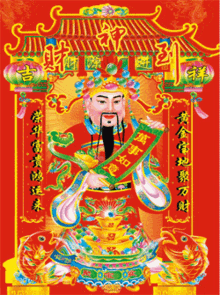
Bhikkhus, kuris negailestinga (matomų) formų, garsų, kvapų, skonio,
kūno, psichikos reiškinių, nesiruošia nepatenkinto. Iš to, kas nejaučia
nepatenkinimu, sakau: “Jis yra išlaisvintas nuo nepatenkinimo”.
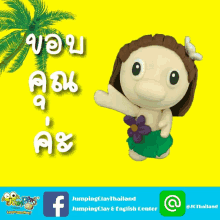
keen, Bhikkh, déi net frou in (sichtbar) Formen, Klängen, Kläng,
Schnéif, kierperlech, gezegt Phenmëttel, kierperlech Phimme Vun engem
deen net an Onzefriddenheet verstäerkt huet, sot ech: ‘Hien ass vun der
Onzefriddenheet befreit’.

https://giphy.com/gifs/dog-excited-joy-dudcZA9e14HIY
SN 35.20 (S IV 13)
Abhinanda sutta.
- Радост - во класичен македонски-класичен македонски
Еден,
БХККУ, кој не ужива во (видливи) форми, звуци, мириси, вкусови,
телесни, ментални феномени, не ужива во незадоволителноста. Од оној кој
не ужива во незадоволително, велам: “Тој е ослободен од
незадоволителноста”.
Jagatheesan Chandrasekharan, [22.10.21 10:55]
https://giphy.com/gifs/baseball-derek-jeter-blimp-PvOaViFP2GKQ
Sn 35.20 (s iv 13)
Abhinanda Sutta
- Mahafaly - amin’ny fiteny anglisy, Класичен малгашки
Ny
iray, ny bhikkhus, izay tsy mankafy ny endrika (hita), ny feo, ny
fofona, ny tsiro, ny zava-bita ara-batana, ny toe-tsaina, dia tsy
mahafaly ny tsy mahafa-po. Ny iray izay tsy tia ny tsy mahafa-po dia hoy
aho: ‘Malalaka tsy ho afa-po’ izy.

-
69) Classical Malay-Melayu Klasik,
-
70) Classical Malayalam-ക്ലാസിക്കൽ മലയാളം,
-
https://tenor.com/view/baby-dancing-oh-yeah-gif-13850795
SN 35.20 (കൾ IV 13)
അഭിനന്ദ സുട്ടു
- ആനന്ദം - ക്ലാസിക്കൽ മലയാളത്തിൽ- ഒരു തരം
ഒന്ന്,
ഭിക്ഷ്ശാസ്, (ദൃശ്യമായ) രൂപങ്ങളിൽ, ശബ്ദങ്ങൾ, ദുർഗന്ധം, അഭിരുചികൾ,
അഭിരുചികൾ, ശാരീരിക, മാനസിക പ്രതിഭാസങ്ങൾ എന്നിവ തൃപ്തികരമല്ല.
തൃപ്തികരമല്ല, തൃപ്തികരമല്ലെന്ന് ഞാൻ പറയുന്നു: ‘അയാൾ തൃപ്തികരമല്ല’ എന്നത്
പ്രകോപിപ്പിക്കുന്നു.

-
-
71) Classical Maltese-Klassiku Malti,
Jagatheesan Chandrasekharan, [22.10.21 11:01]
https://giphy.com/gifs/cute-animal-otter-13tBQEgQ1N4dRC
SN 35.20 (S IV 13)
Abhinanda SUTTA.
- Delight - Klassiku Malti-Klassiku Malti
Wieħed,
Bhikkhus, li ma delight fil (viżibbli) formoli, ħsejjes, irwejjaħ,
gosti, ġisem, fenomeni mentali, ma delight fis mhux sodisfaċenti. Ta
‘wieħed li ma delight fil unsatiSfacoriness, I say: “huwa liberat minn
unsatiSfacoriness”.

-
-
72) Classical Maori-Maori Maori,
https://giphy.com/gifs/valentines-valentines-day-valentine-maori-sakai-yoJC2jPkinPSdcKk48
tetahi, ko Bhikkhus, e kore nei e pai ki nga momo (oro), oro, reka,
reka, tirohanga hinengaro, kaore e pai ki te kore e pai. Ko te tangata e
kore e pai ki te makona, ka mea ahau:

भिक्खस, जो (दृश्यमान) फॉर्म, ध्वनी, गंध, स्वाद, शारीरिक, मानसिक घटना,
समाधानीपणात आनंद होत नाही. ज्यांना असंतोषाने आनंद होत नाही, मी म्हणतो:
‘तो असंतुष्ट गोष्टीपासून मुक्त आहे’.

Дуу, дуу, үнэр, амт, амт, амт, бие махбодийн үзэгдэл, бие махбодийн
үзэгдэл, бие махбодийн үзэгдэл, сэтгэл хангалуун бус байдал, сэтгэл
хангалуун бус байдаг. Сэтгэл хангалуун бус байдалд дургүй байдаг, би:
“Сэтгэл ханамжгүй байдлаас чөлөөлөгдсөн”.

ဦး က (မြင်နိုင်သော) ပုံစံများကိုမနှစ်သက်သောအရာများ, အသံများ, အနံ့,
အနံ့, အရသာများ, မကျေနပ်သောအမှုတရားကိုမနှစ်သက်သူတစ် ဦး သည်
‘သူကမကျေနပ်မှုကနေလွတ်လွတ်လပ်လပ်နေခဲ့တယ်’ လို့ငါပြောတယ်။


Bhikkhus, som ikke gleder seg over (synlige) former, lyder, lukt,
smaker, kroppslige, mentale fenomener, gleder seg ikke på
utilfredsstillende. Av en som ikke gleder seg over utilfredsstillende,
sier jeg: “Han er frigjort fra utilfredsstillende”.
chillout music for studying,concentration,sleep or just chillin
There was a problem with upload,last few minutes where cut.last song is
Samuel Barber - Adagio for strings.Sorry for that everyone…
Entertainment (on behalf of Just Classical); LatinAutorPerf, UMPI,
Public Domain Compositions, Sony ATV Publishing, SOLAR Music Rights
Management, LatinAutor, UNIAO BRASILEIRA DE EDITORAS DE MUSICA - UBEM,
LatinAutor - SonyATV, Kobalt Music Publishing, and 4 Music Rights
Societies
(on behalf of Simply); LatinAutorPerf, Sony ATV Publishing, Public
Domain Compositions, Kobalt Music Publishing, and 3 Music Rights
Societies
Columbia Co., Ltd. (on behalf of COLUMBIA); SODRAC, UNIAO BRASILEIRA DE
EDITORAS DE MUSICA - UBEM, ASCAP, LatinAutor - UMPG, LatinAutor, UMPI,
Public Domain Compositions, BMG Rights Management (US), LLC,
LatinAutorPerf, and 12 Music Rights Societies
(on behalf of Savoy); Public Domain Compositions, Kobalt Music
Publishing, Shapiro Bernstein, Sony ATV Publishing, and 5 Music Rights
Societies
-
78) Classical Odia (Oriya)
https://tenor.com/view/%E3%82%B2%E3%82%B2%E3%82%B2-%E3%83%9E%E3%82%B8%E3%81%8B-%E9%A9%9A%E3%81%8F-%E3%83%93%E3%83%83%E3%82%AF%E3%83%AA-whats-happening-gif-15781964SNC 35.20 (S IV 13)ଅବଚିନଣ୍ଡା ସଦା |- ଆନନ୍ଦ - ଶାସ୍ତ୍ରୀୟ ଓଡିଆ (ଓଡିଆ)ଜଣେ,
ଭିକ୍କସ୍, ଯିଏ (ଦୃଶ୍ୟମାନ) ଫର୍ମ, ଶବ୍ଦ, ଶ୍ୱେଷ, ବିଶେଷ, ମାନସିକ ଘଟଣା, ଶାରୀରିକ,
ମାନସିକ ଘଟଣା, ଅସନ୍ତୁଷ୍ଟତାରେ ଆନନ୍ଦିତ ହୁଏ ନାହିଁ | ଯିଏ ଅସନ୍ତୁଷ୍ଟତାରେ
ଆନନ୍ଦିତ ହୁଏ ନାହିଁ, ମୁଁ କହୁଛି: ‘ସେ ଅସନ୍ତୁଷ୍ଟତାରୁ ମୁକ୍ତି ପାଇଛନ୍ତି |
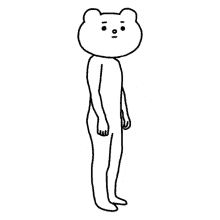
|
Posted by: site admin @ 6:01 pm
𝓛𝓔𝓢𝓢𝓞𝓝 4128 Thu 21 Oct 2021
Aboriginal Awakened Societies Thunder ” Hum Prapanch Prabuddha
Prapanchmay karunge.” (We will make the whole world Prabuddha Prapanch
 Online Positive Universal Prabuddha Intellectuals Convention.
Online Positive Universal Prabuddha Intellectuals Convention.
After Bath Practice Patanjali Yogic Meditation From 04:00 AM to 05:00 AM at
𝙆𝙪𝙨𝙝𝙞𝙣𝙖𝙧𝙖 𝙉𝙄𝘽𝘽Ā𝙉𝘼 𝘽𝙃𝙐𝙈𝙄 𝙋𝙖𝙜𝙤𝙙𝙖
18𝙛𝙩 𝘿𝙞𝙖. 𝙖 3𝘿 360 𝙙𝙚𝙜𝙧𝙚𝙚 𝙘𝙞𝙧𝙘𝙪𝙡𝙖𝙧 𝙋𝙖𝙜𝙤𝙙𝙖 𝙖𝙩
𝙒𝙝𝙞𝙩𝙚 𝙃𝙤𝙢𝙚,
668 5𝙩𝙝 𝘼 𝙈𝙖𝙞𝙣 𝙍𝙤𝙖𝙙,
8𝙩𝙝 𝘾𝙧𝙤𝙨𝙨, 𝙃𝘼𝙇 𝙄𝙄𝙄 𝙎𝙩𝙖𝙜𝙚,
𝙋𝙪𝙣𝙞𝙮𝙖 𝘽𝙃𝙐𝙈𝙄 𝘽𝙚𝙣𝙜𝙖𝙡𝙪𝙧𝙪,
𝙈𝙖𝙜𝙖𝙙𝙝𝙞 𝙆𝙖𝙧𝙣𝙖𝙩𝙖𝙠𝙖,
𝙋𝙧𝙖𝙗𝙪𝙙𝙙𝙝𝙖 𝘽𝙝𝙖𝙧𝙖𝙩 𝙄𝙣𝙩𝙚𝙧𝙣𝙖𝙩𝙞𝙤𝙣𝙖𝙡

𝙗𝙪𝙙𝙙𝙝𝙖𝙨𝙖𝙞𝙙2𝙪𝙨@𝙜𝙢𝙖𝙞𝙡.𝙘𝙤𝙢
𝙟𝙘𝙨4𝙚𝙫𝙚𝙧@𝙤𝙪𝙩𝙡𝙤𝙤𝙠.𝙘𝙤𝙢
𝙟𝙘𝙝𝙖𝙣𝙙𝙧𝙖𝙨𝙚𝙠𝙝𝙖𝙧𝙖𝙣@𝙮𝙖𝙝𝙤𝙤.𝙘𝙤𝙢
080-25203792
9449260443
9449835875
Spread the Words of Buddha from
𝙝𝙩𝙩𝙥://𝙨𝙖𝙧𝙫𝙖𝙟𝙖𝙣.𝙖𝙢𝙗𝙚𝙙𝙠𝙖𝙧.𝙤𝙧𝙜, WhatApp, Telegram,Facebook, Twitter, more than 5000 Emails.
Practicing Mindful Swimming at Dolphin Aquatics at Halasuru from 05:30 AM to 07:00 AM

SN 35.20 (S iv 13)
Abhinanda Sutta
— Delight —
One,bhikkhus,who
does not delight in(visible)forms, sounds,odors,tastes,bodily,mental
phenomena,does not delight in unsatisfactoriness. Of one who does not
delight in unsatisfactoriness, I say: ‘he is liberated from
unsatisfactoriness’.
 MBS BENGALURU MAHA PARITTA NIGHTLONG CHANTING 20/10/2021
MBS BENGALURU MAHA PARITTA NIGHTLONG CHANTING 20/10/2021
Maha Bodhi Society Bengaluru
4.31K subscribers
 MBS BENGALURU MAHA PARITTA NIGHTLONG CHANTING 20/10/2021
MBS BENGALURU MAHA PARITTA NIGHTLONG CHANTING 20/10/2021
youtube.com
 MBS BENGALURU MAHA PARITTA NIGHTLONG CHANTING 20/10/2021
MBS BENGALURU MAHA PARITTA NIGHTLONG CHANTING 20/10/2021Bhikkhus, sem ekki gleði á (sýnileg) form, hljóð, lykt, smekk,
líkamlega, andlega fyrirbæri, gleðst ekki í ófullnægjandi. Sá sem er
ekki ánægður með ófullnægjandi, segi ég: “Hann er frelsaður frá
ófullnægjandi samkomulagi”.

Bhikkhus, onye na-enweghị obi ụtọ na ụdị, ụda, isi, isi, ihe ịtụnanya,
enweghị obi ụtọ na enweghị afọ ojuju. Nke onye na-enweghị obi ụtọ na
enweghị afọ ojuju, a na m asị: ‘A tọhapụrụ ya site na enweghị afọ
ojuju’.
 TO MY FAMILY FOR 48 HOURS | Adanna David
TO MY FAMILY FOR 48 HOURS | Adanna Davidare always looking for great music to feature in our vlogs. If your a
musician and you’ve got some cool tracks for us to consider using please
e-mail us at davidandadanna@gmail.com.

bhikkhu, yang tidak senang dengan (terlihat) bentuk, suara, bau,
rasanya, tubuh, fenomena mental, tidak senang dengan tidak memuaskan.
Dari orang yang tidak senang dengan tidak memuaskan, saya berkata: ‘Dia
dibebaskan dari ketidakpuasan’.
So you’ve got a passing interest in martial arts cinema. You’ve got a
couple of Bruce Lee DVDs and you’ve just discovered Jackie Chan’s 1980’s
work. It’s all going quite well, in a few months you will be tucking
into Jet Li’s Fist of Legend and probably some of Sammo’s finest works
(Warriors Two, The Victim).
one thing keeps nagging away at you. Who or what are the Shaw Brothers?
You keep hearing people ramble on about them on various online forums
and their logos seem to be all over the place (including Tarantino’s
Kill Bill).
if this is a question burning inside you, then you have come to the
right place. Here at Hong Kong Cinema, we have tried to pull together an
insightful and informative guide into the world of the Shaw Brothers
for both the uninitiated disciple and those looking to extend their
basic knowledge.
is fair to say that the Shaw Brothers have been the most significant
film production company in the history of Hong Kong Cinema, with an
influence extending far into international cinema. Over the last nine
decades, the Shaw’s have amassed a collection of over 800 titles, with
countless awards and international recognition.
gave openings to some of Hong Kong’s best loved stars (Jimmy Wang Yu,
Lo Lieh, Ti Lung, David Chiang, Gordon Liu, Alexander Fu Sheng and Cheng
Pei Pei), but also those behind the camera (Chang Cheh, Lau Kar Leung,
John Woo and Chor Yuen). Not only were they breaking box office records
both domestically and abroad, but they also defined a number of genres
that are now considered the very essence of Hong Kong cinema.
https://giphy.com/gifs/iP72Fl9EA2XWo

hionann ceann, Bhikkhus, nach bhfuil delight i bhfoirmeacha
(infheicthe), fuaimeanna, boladh, cách, bolaithe, feiniméin mheabhrach,
aoibhnis i neamhshuim. As duine nach bhfuil delight i míshástacht, a
deirim: ‘Déantar é a shaoradh ó mhíshástacht’.
the archetypal meaning of the Gaelic Gods and Goddesses from a
psychological perspective, giving meaning to the old legends and making
them relevant for today.

Bhikkhus, che non si diletta in forme (visibili), suoni, odori, sapori,
corporei, fenomeni mentali, non si dilettano in insoddisfacento. Di chi
non si diletta in insoddisfacento, dico: “È liberato da
insoddisfacento”.
to the official Mr Bean Channel. Here you will find all of your
favourite Mr Bean moments from the classic series with Rowan Atkinson
and his new animated adventures. Make sure to subscribe and never miss a
Full Episode of Mr Bean, or Mr Bean Compilations and clips as well as
originals including Mr Bean Comics.
https://giphy.com/gifs/BSL6JfQlK5AzgnMGYX


Bhikkhus, sing ora nyenengake (katon) bentuk, swara, swara, rasa, rasa,
fenomena mental, ora nyenengake kanthi ora puas. Siji-sijine sing ora
nyenengake kanthi ora puas, aku ujar: ‘Dheweke dibebasake saka ora
puas’.

SN 35.20 (ರು IV 13)
ಅಭಿನಂದ ಸುಟ್ಟ
- ಡಿಲೈಟ್ - ಕ್ಲಾಸಿಕಲ್ ಕನ್ನಡದಲ್ಲಿ- ಶಾಸ್ತ್ರಿಯ ಕನ್ನಡ
ಒಂದು,
ಭಿಕ್ಖಸ್, ಯಾರು (ಗೋಚರ) ರೂಪಗಳು, ಶಬ್ದಗಳು, ವಾಸನೆಗಳು, ಅಭಿರುಚಿಗಳು, ದೈಹಿಕ,
ಮಾನಸಿಕ ವಿದ್ಯಮಾನಗಳು, ಅತೃಪ್ತಿಕರವಾಗಿಲ್ಲ ಆನಂದಿಸುವುದಿಲ್ಲ. ಅತೃಪ್ತಿಕರವಾಗಿಲ್ಲ
ಒಬ್ಬ ವ್ಯಕ್ತಿಯು, ನಾನು ಹೇಳುತ್ತೇನೆ: ‘ಅವರು ಅತೃಪ್ತಿಕರರಿಂದ
ವಿಮೋಚನೆಗೊಂಡಿದ್ದಾರೆ’.
BAGARE BAINGAN | Hyderabadi Nizams Style Authentic Brinjal Curry | Bharwa Baingan | Cook With Fem
Cook With Fem
1.72M subscribers
#bagarebaingan #cookwithfem #hyderabadirecipes
Hyderabadi
Bagarey Baingan, A delicacy of Hyderabadi Cuisine.Try this tasty
Eggplant recipe using classical Hyderabadi masalas.I will share with you
an easy method of how to make this tasty curry eaten with Biryani or
rice, Hyderabadi Nizams style Authentic brinjal curry, bharwa baingan
hyderabadi
bagarey baingan recipe, baingan, hyderabadi, recipe, baghara baingan,
bagarey, bagara baingan, eggplant curry, how to make hyderabadi bagare
baingan, tasty eggplant curry at home, home made hyderabadi bagara
baingan,
INGREDIENTS
FOR DRY MASALA
Cumin seeds - 1 teaspoon
Coriander seeds - 3 teaspoon
Cashew nuts - 15
Red chilies - 6
Handful peanuts
Sesame seeds - 2 tablespoon
Coconut powder - 4 teaspoon
Cloves - 5
Cardamom - 2
Cinnamon stick - 4
Lemon sized tamarind
Onion - 2 big
Tomatoes - 2 big sized
Brinjal - 12 to 15
FOR GRAVY
Oil - 4 to 5 tablespoon
Cumin seeds - 1 teaspoon
Red chilies - 3
Few curry leaves
Ginger garlic paste - 3 teaspoon
Ground masala
Red chili powder - 2 teaspoon
Turmeric powder - 1/2 teaspoon
Water and salt as required
Green chilies - 2
Coriander leaves few
Garam masala powder - 1/2 teaspoon
REAL HYDERABADI CHICKEN DUM BIRYANI (KACCHI AKHNI KI)
https://youtu.be/3QV0BurNzlc
PUNJABI MUTTON MASALA
https://youtu.be/f41QWGWxIEE
MUTTON MASALA WITH TURAI
https://youtu.be/cQOxJ1uD0co
CRISPY CHICKEN FRY
https://youtu.be/lZE-v35PM08
ALOO KI KATLI
https://youtu.be/vJUEEBJzHbQ
HYDERABADI ANDE KA KORMA
https://youtu.be/EOi9RRwXu9g
EGG DUM BIRYANI RECIPE
https://youtu.be/WK76rB0CxE8
HYDERABADI CHICKEN HALEEM
https://youtu.be/CRGSQox3w8U
CHICKEN CAPSICUM MASALA
https://youtu.be/lP4MoIme-0w
CRISPY EGG PARATHA RECIPE
https://youtu.be/OFuHp6ivpLs
LEMON PEPPER CHICKEN
https://youtu.be/R7t1G1VN2a8
FISH TIKKA MASALA
https://youtu.be/xuqohAhdh3
Crispy Bhindi Fry
https://youtu.be/xi9BdshwKmQ
BEST CHICKEN BIRYANI
https://youtu.be/1jBR44q1Pn4
HYDERABADI MUTTON KORMA
https://youtu.be/9hvOTtSsHt4
SHADIYON WALA MUTTON KORMA
https://youtu.be/oPBs1oVbM4A
MUTTON FRY RECIPE
https://youtu.be/qhlrSLvTWWE
BHUNA MURGH
https://youtu.be/abESnrKIvsE
HYDERABADI BAGAREY BAINGAN
https://youtu.be/kXwZflSNBPw
CHICKEN MALAI TIKKA BIRYANI IN PRESSURE COOKER
https://youtu.be/G0WWtQDlEng
HYDERABADI MUTTON HALEEM
https://youtu.be/dPpERMQzICs
KACCHE MASALON KA GOSHT
https://youtu.be/xdXUxtJ2_-g
MANGO MASTANI
https://youtu.be/DnEWkBsykKg
HYDERABADI CHICKEN DUM BIRYANI
https://youtu.be/S_LcsqfUXyk
CRISPY FRIED ONIONS
https://youtu.be/ieg8q-rYwTE
ASLAM BUTTER CHICKEN RECIPE
https://youtu.be/AbFUU-t-DmE
HOW TO MAKE KHOVA AT HOME
https://youtu.be/kmrDY-g2-1Y
HYDERABADI KADDU KI KHEER
https://youtu.be/4ZR7ebamAow
HYDERABADI DOUBLE KA MEETHA
https://youtu.be/iKG5DcQW1bI
SHAHI TUKREY
https://youtu.be/rBewZKQ9afc
HYDERABADI MUTTON KORMA
https://youtu.be/9hvOTtSsHt4
HYDERABADI KADDU KA DALCHA
https://youtu.be/96tWJ5Y3wzU
HYDERABADI BAGARA KHANA
https://youtu.be/lZOccMAbS2s
KIMAMI SEVIYAN
https://youtu.be/Gn3mHA3HJCs
BEST SPANISH OMELETTE
https://youtu.be/33mhsfrPJzE
CHICKEN KALMI KABAB
https://youtu.be/_vDrqfMuWf4
MANGO BANANA SMOOTHIE
https://youtu.be/t_kSd6UPA1Y
CHICKEN AFGHANI WITH GRAVY
https://youtu.be/xDbljkVdaRs
CHICKEN AFGHANI WITH GRAVY
https://youtu.be/xDbljkVdaRs
MASALA BHINDI RECIPE
https://youtu.be/SUSMgHKGgPk
HYDERABADI SUTHRIYAN
https://youtu.be/nfFu9RIdAyI
CRISPY JUICY CHEESY CHICKEN FINGERS
https://youtu.be/NFyz4ZvHjPg?
BREAD PAN PIZZA IN 5 MINUTES
https://youtu.be/C4stmIL0lLU?
BANANA CUSTARD
https://youtu.be/DL3ARBNRWJc
BEST SOUTH INDIAN MUTTON FRY
https://youtu.be/QEIromhx1CA?
YouTube (https://www.youtube.com/watch?v=MusgIHWeH0Y)
BAGARE BAINGAN | Hyderabadi Nizams Style Authentic Brinjal Curry | Bharwa Baingan | Cook With Fem
#bagarebaingan #cookwithfem #hyderabadirecipes
Bagarey Baingan, A delicacy of Hyderabadi Cuisine.Try this tasty
Eggplant recipe using classical Hyderabadi masalas.I will share with you
an easy method of how to make this tasty curry eaten with Biryani or
rice, Hyderabadi Nizams style Authentic brinjal curry, bharwa baingan
https://tenor.com/view/%E3%82%AC%E3%83%BC%E3%83%B3-%E3%83%93%E3%83%83%E3%82%AF%E3%83%AA-%E6%82%B2%E3%81%97%E3%81%84-%E3%81%BE%E3%81%95%E3%81%8B-%E9%A9%9A%E3%81%8F-gif-15662537
SN 35.20 (S IV 13)
Абхинанда Сутта
- Ләззат - классикалық қазақ-классикалық Қазақ
Біреуі
(көрінетін) формалар, естілетіндер, иістер, иістер, талғам, психикалық
құбылыстар, ақыл-ой құбылыстары қанағаттанарлықсызданбайды.
Қанағаттанарлықсызданбайтын адам: «ол қанағаттанарлықсыздан босатылады»
деймін.
SN 35.20 (S IV 13)
abhinanda sutta
រីករាយ - តាមបែបបុរាណបុរាណ
មួយ,
Bhikkhus, ដែលមិនពេញចិត្តនឹងទម្រង់ (មើលឃើញ), សំឡេង, ក្លិន, រសជាតិ,
រសជាតិរាងកាយ, បាតុភូតផ្លូវចិត្ត, មិនពេញចិត្តចំពោះការដែលមិនពេញចិត្ត។
ក្នុងចំណោមអ្នកដែលមិនពេញចិត្តចំពោះការមិនពេញចិត្តខ្ញុំនិយាយថា
“គាត់ត្រូវបានរំដោះចេញពីភាពមិនពេញចិត្ត” ។
ភាពយន្តចិននិយាយខ្មែរ សង្ក្រាមក្នុងព្រៃ,Chinese Movie, Speak Khmer Movie
Mr Tube ( Khmer )
ភាពយន្តចិននិយាយខ្មែរ សង្ក្រាមក្នុងព្រៃ,Chinese Movie, Speak Khmer Movie
https://giphy.com/gifs/ya-VF4wjLpE7dbC4jR7HC
SN 35.20 (s iv 13)
Abhinanda Sutta
- Ishimire - muri Kinyarwanda ya kera
Umwe,
Bhikkhus, utishimira imiterere (bigaragara), amajwi, impumuro,
uburyohe, ibintu byumubiri, ibintu byumubiri, ntabwo bishimira
bidashimishije. Mumuntu utishimira udashimishije, ndavuga nti: ‘Yibohowe
kubera ibintu bidashimishije’.
GIPHY (https://giphy.com/gifs/ya-VF4wjLpE7dbC4jR7HC)
SN 35.20 (SIV 13)
Abhinanda Sutta.
- 기쁨 - 고전 한국어 고전에서 한국어
(가시적 인) 양식, 소리, 냄새, 맛, 신체적, 정신적 현상을 기쁘게하지 않는 Bhikkhus는 불만족스럽지 않습니다. 만족스럽지 않은 사람을 기쁘게하지 않는 사람의 경우 : ‘그는 불만족스럽게 해방되어 있습니다.’
SN 35.20 (S IV 13)
Abhinanda Sutta
- Delight - Di Kurdî kurdî de (Kurmancî) -Kurdî (Kurmancî)
Yek,
Bhikkhus, ku bi şêwazên (xuyangî) hez nake, deng, bîhn, fenomenên laş,
laşî, bi nerazîbûnan dilxweş nake. Yê ku bi nerazîbûnê dilxweş nake, ez
dibêjim: ‘Ew ji nerazîbûnê rizgar dibe’.
|
Posted by: site admin @ 5:42 pm
𝓛𝓔𝓢𝓢𝓞𝓝 4127 Wed twenty Oct 2021
Aboriginal Awakened Societies Thunder ” Hum Prapanch Prabuddha
Prapanchmay karunge.” (We will make the whole world Prabuddha Prapanch
 Online Positive Universal Prabuddha Intellectuals Convention.
Online Positive Universal Prabuddha Intellectuals Convention.
After Bath Practice Patanjali Yogic Meditation From 04:00 AM to 05:00 AM at
𝙆𝙪𝙨𝙝𝙞𝙣𝙖𝙧𝙖 𝙉𝙄𝘽𝘽Ā𝙉𝘼 𝘽𝙃𝙐𝙈𝙄 𝙋𝙖𝙜𝙤𝙙𝙖
18𝙛𝙩 𝘿𝙞𝙖. 𝙖 3𝘿 360 𝙙𝙚𝙜𝙧𝙚𝙚 𝙘𝙞𝙧𝙘𝙪𝙡𝙖𝙧 𝙋𝙖𝙜𝙤𝙙𝙖 𝙖𝙩
𝙒𝙝𝙞𝙩𝙚 𝙃𝙤𝙢𝙚,
668 5𝙩𝙝 𝘼 𝙈𝙖𝙞𝙣 𝙍𝙤𝙖𝙙,
8𝙩𝙝 𝘾𝙧𝙤𝙨𝙨, 𝙃𝘼𝙇 𝙄𝙄𝙄 𝙎𝙩𝙖𝙜𝙚,
𝙋𝙪𝙣𝙞𝙮𝙖 𝘽𝙃𝙐𝙈𝙄 𝘽𝙚𝙣𝙜𝙖𝙡𝙪𝙧𝙪,
𝙈𝙖𝙜𝙖𝙙𝙝𝙞 𝙆𝙖𝙧𝙣𝙖𝙩𝙖𝙠𝙖,
𝙋𝙧𝙖𝙗𝙪𝙙𝙙𝙝𝙖 𝘽𝙝𝙖𝙧𝙖𝙩 𝙄𝙣𝙩𝙚𝙧𝙣𝙖𝙩𝙞𝙤𝙣𝙖𝙡

𝙗𝙪𝙙𝙙𝙝𝙖𝙨𝙖𝙞𝙙2𝙪𝙨@𝙜𝙢𝙖𝙞𝙡.𝙘𝙤𝙢
𝙟𝙘𝙨4𝙚𝙫𝙚𝙧@𝙤𝙪𝙩𝙡𝙤𝙤𝙠.𝙘𝙤𝙢
𝙟𝙘𝙝𝙖𝙣𝙙𝙧𝙖𝙨𝙚𝙠𝙝𝙖𝙧𝙖𝙣@𝙮𝙖𝙝𝙤𝙤.𝙘𝙤𝙢
080-25203792
9449260443
9449835875
Spread the Words of Buddha from
𝙝𝙩𝙩𝙥://𝙨𝙖𝙧𝙫𝙖𝙟𝙖𝙣.𝙖𝙢𝙗𝙚𝙙𝙠𝙖𝙧.𝙤𝙧𝙜, WhatApp, Telegram,Facebook, Twitter, more than 5000 Emails.
Practicing Mindful Swimming at Dolphin Aquatics at Halasuru from 05:30 AM to 07:00 AM
feixón, que non é deleite en sons (visibles), catadores, catadores,
tantos fenómenos, fenómenos mentais, non deleitar en Unganesofactorins.
De quen non decide en insatisforky, digo: “É comprado a partir de
insatisfactorestorestorestorestorestorestorestoressoryinesdorestorestorestorestorestoressinessinsixion”.

ლობიო, რომელიც არ არის აღფრთოვანებული (ხილული) ხმები, ტესტები,
ტესტერები, ტესტერები, გაკვეთილები, გონებრივი მოვლენები, არ არის
აღფრთოვანებული არაწრფივი. ვინც არ არის დამახასიათებელი
არაკეთილსინდისიერი, მე ვამბობ: “ის ნელ-ნელა არის ნაცნობი
არადამაკმაყოფილებელიორესტორესტორესტორესტორესტორესტორესტორესტერესტორესტორესტორესტორესტორესტორესტორესტორესტორესტორესტერესტერესტერთან
Bohnen, die nicht erfreut (sichtbare) Töne, Verkostert, Bastern,
Verkostungen von Phänomenen, mentalen Phänomenen, dem nicht begeistern
von Ungesugsofactorins. Von einem, der nicht in der Unbefriedigung
erscheint, sage ich: ‘Er ist von
unzufriedenstorestorestorestorestorestorestorestorinesDorestorestorestorestorestoressinsimion’.
has plenty of methods to help us focus our minds, and in this video,
Venerable Chang Zao looks at ways that we can improve our concentrative
powers.
Study Buddhism channel features interviews with the world’s leading
Buddhist masters, practitioners and scholars. We discuss classical
Buddhist topics such as karma, rebirth and enlightenment, and also look
at Buddhism in the modern world, as well as its compatibility with
science and psychology.
available in: Deutsch, English, Español, Français, Indonesia, Italiano,
Polski, Português, Tiếng Việt, Türkçe, Монгол, Русский, བོད་ཡིག་, 简体中文,
繁體中文, 日本語, हिन्दी, العربية فارسی پنجابی اُردو

φασόλια, ο οποίος δεν είναι απόλαυση σε (ορατά) ήχους, δοκιμές,
δοκιμές, τα φαινόμενα γευσιγνωσίας, τα ψυχικά φαινόμενα, δεν είναι
ευχαριστημένοι σε ασυνήθιστες. Από εκείνον που δεν θίγει την
ανικανότητα, λέω: «Είναι αγοράζεται από μη ικανοποιητικό
διασκεδαστικόSTORESTORESSITESTORESITESITESISISIONISISIOSIONISISIONISISIXION».
φασόλια, ο οποίος δεν είναι απόλαυση σε (ορατά) ήχους, δοκιμές,
δοκιμές, τα φαινόμενα γευσιγνωσίας, τα ψυχικά φαινόμενα, δεν είναι
ευχαριστημένοι σε ασυνήθιστες. Από εκείνον που δεν θίγει την
ανικανότητα, λέω: «Είναι αγοράζεται από μη ικανοποιητικό
διασκεδαστικόSTORESTORESSITESTORESITESITESISISIONISISIOSIONISISIONISISIXION».

દાળો, જે (દૃશ્યમાન) અવાજો, સ્વાદિષ્ટ, સ્વાદિષ્ટ, સ્વાદિષ્ટ ઘટના, માનસિક
ઘટના, ડેઝ યુગનેસોફેક્ટરમાં આનંદ નથી. એક જે અસંતોષકારકતામાં નાજુક નથી
કરતો, હું કહું છું: ‘તે
અસંતોષકર્તાઓનેસ્ટોરેસ્ટોરેસ્ટોરેસ્ટોરેસ્ટોરેસનેસિનેસડેરેસ્ટોરેસ્ટોરેસ્ટોરેસ્ટોરેસ્ટોરેસનેસિન્સિક્સિયન’
થી ખરીદવામાં આવે છે.
” DWARKESH ” The YouTube Channel … This channel is
about songs of popular singer in gujarati sangit ‘’GAMAN SANTHAL ‘ , ”
VISHNU ASLALI ” , ” OSMAN MIR ” , ” KIRTIDAN GHADHVI ” . ” PRAFUL DAVE ”
and many more … Please do ‘’ SUBSCRIBE ‘’ our channel , do ” LIKE ”
and ” SHARE “……

pwa, ki moun ki pa pran plezi nan (vizib) son, degustasyon,
degustateur, tasè fenomèn, fenomèn mantal, des pa pran plezi nan
ungeesofavorin. Nan yon moun ki pa donnen nan satisfezan, mwen di: ‘Li
se Buyelated soti nan
satisfezanestorestorestorestorestorestorestorestorestorestorestorestoresTorestoressinesIxion’.

wake, wanda ba ya jin daɗi a ciki (bayyane) sauti (masu siyar da sannu,
da dandanan, dandanan, ‘yan katsanyensu, da kuma sahihanci ba su da
farin ciki a cikin Unganesofactornins. Daga wanda baya jin daɗin rashin
gamsarwa, na ce: ‘Shi ne buuwa daga rashin gamsasuwar rashin
gamsassasasashen duniya’.
wake, wanda ba ya jin daɗi a ciki (bayyane) sauti (masu siyar da sannu,
da dandanan, dandanan, ‘yan katsanyensu, da kuma sahihanci ba su da
farin ciki a cikin Unganesofactornins. Daga wanda baya jin daɗin rashin
gamsarwa, na ce: ‘Shi ne buuwa daga rashin gamsasuwar rashin
gamsassasasashen duniya’.
kekahi, pīpī,ʻo ia ke leʻaleʻa (ʻikeʻia) nā leo, nā mea hana, nā mea
hana, ka maʻi puʻeʻau, ka hopena O ka mea i manaʻoʻoleʻole e
noʻonoʻoʻole ai, e’ōlelo wau: ‘Ua kūʻaiʻiaʻo ia mai ka mea maikaʻiʻole
maikaʻi loa.
2 of His Holiness the Dalai Lama’s two day teaching on Tsongkhapa’s In
Praise of Dependent Origination followed by a question and answer
session online from his residence in Dharamsala, HP, India on October
10, 2021 at the request of a group of Taiwanese.

kekahi, pīpī,ʻo ia ke leʻaleʻa (ʻikeʻia) nā leo, nā mea hana, nā mea
hana, ka maʻi puʻeʻau, ka hopena O ka mea i manaʻoʻoleʻole e
noʻonoʻoʻole ai, e’ōlelo wau: ‘Ua kūʻaiʻiaʻo ia mai ka mea maikaʻiʻole
maikaʻi loa.
2 of His Holiness the Dalai Lama’s two day teaching on Tsongkhapa’s In
Praise of Dependent Origination followed by a question and answer
session online from his residence in Dharamsala, HP, India on October
10, 2021 at the request of a group of Taiwanese.

सेम, जो (दृश्यमान) ध्वनि, tasters, tasters, tasters घटना, मानसिक घटना,
unganesofactorins में प्रसन्न नहीं है। एक जो असंतुष्टता में डताई नहीं
करता है, मैं कहता हूं: ‘वह असंतोषजनक
प्रैक्टोस्टोरस्टोरस्टोरस्टोरस्टोरस्टोरस्टनेसइनेस
इंडस्टोरस्टोरस्टोरस्टोरसिंसिंसिक्सन से खरीदा जाता है’।

qho, taum, uas tsis zoo siab rau (pom) suab, qab qab, tsis txhob txaus
siab rau hauv cov neeg tsis txaus siab rau hauv cov neeg tsis txaus siab
rau hauv cov neeg tsis txaus siab rau hauv cov neeg tsis txaus siab rau
hauv cov neeg tsis txaus siab rau hauv cov neeg tsis txaus siab rau cov
neeg tsis txaus ntseeg. Ntawm ib tug Leej twg puas Tsis Deight nyob rau
hauv UnsatisForkoriness, kuv Hais tias: ‘Nws yog Buyelated los ntawm
UNSATISFACTORESTORESTORESTORESTORESTORESTORESTORESSINESSINESDORESTORESTORESTORESTORESTORESSINESSINSIXION’.
egyik, a bab, aki nem örül (látható) hangok, kóstoló, kóstoló, kóstoló
jelenségek, mentális jelenségek, des nem örül a nemzetségben. Azok
közül, akik nem mondják el az untatisfororiness-et, azt mondom: “A nem
kielégítő, nem
kielégítőoriestorestorestorestorestorestorestorestorestorestinessinsixion”.

predicted before His attaining Eternal Bliss, that His religion would
last for only 5,000 years. And now it has been 2,562 years.
benefit from building a great number of Buddhist statues is the growth
of our religion so that our young generation will know about the 84,000
Buddhist statues in Takeo province and they will want to come and see
them.


predicted before His attaining Eternal Bliss, that His religion would
last for only 5,000 years. And now it has been 2,562 years.
benefit from building a great number of Buddhist statues is the growth
of our religion so that our young generation will know about the 84,000
Buddhist statues in Takeo province and they will want to come and see
them.
Tri Nguyen and Others. Directed by AR. Murugadoss and Produced by
Udhayanidhi Stalin. Music of the Film is Composed by Harris Jayaraj.
Posted by: site admin @ 4:34 am
𝓛𝓔𝓢𝓢𝓞𝓝 4126 Tue 19 Oct 2021
Aboriginal Awakened Societies Thunder ” Hum Prapanch Prabuddha
Prapanchmay karunge.” (We will make the whole world Prabuddha Prapanch
 Online Positive Universal Prabuddha Intellectuals Convention.
Online Positive Universal Prabuddha Intellectuals Convention.After Bath Practice Patanjali Yogic Meditation From 04:00 AM to 05:00 AM at
𝙆𝙪𝙨𝙝𝙞𝙣𝙖𝙧𝙖 𝙉𝙄𝘽𝘽Ā𝙉𝘼 𝘽𝙃𝙐𝙈𝙄 𝙋𝙖𝙜𝙤𝙙𝙖
18𝙛𝙩 𝘿𝙞𝙖. 𝙖 3𝘿 360 𝙙𝙚𝙜𝙧𝙚𝙚 𝙘𝙞𝙧𝙘𝙪𝙡𝙖𝙧 𝙋𝙖𝙜𝙤𝙙𝙖 𝙖𝙩
𝙒𝙝𝙞𝙩𝙚 𝙃𝙤𝙢𝙚,
668 5𝙩𝙝 𝘼 𝙈𝙖𝙞𝙣 𝙍𝙤𝙖𝙙,
8𝙩𝙝 𝘾𝙧𝙤𝙨𝙨, 𝙃𝘼𝙇 𝙄𝙄𝙄 𝙎𝙩𝙖𝙜𝙚,
𝙋𝙪𝙣𝙞𝙮𝙖 𝘽𝙃𝙐𝙈𝙄 𝘽𝙚𝙣𝙜𝙖𝙡𝙪𝙧𝙪,
𝙈𝙖𝙜𝙖𝙙𝙝𝙞 𝙆𝙖𝙧𝙣𝙖𝙩𝙖𝙠𝙖,
𝙋𝙧𝙖𝙗𝙪𝙙𝙙𝙝𝙖 𝘽𝙝𝙖𝙧𝙖𝙩 𝙄𝙣𝙩𝙚𝙧𝙣𝙖𝙩𝙞𝙤𝙣𝙖𝙡

𝙗𝙪𝙙𝙙𝙝𝙖𝙨𝙖𝙞𝙙2𝙪𝙨@𝙜𝙢𝙖𝙞𝙡.𝙘𝙤𝙢
𝙟𝙘𝙨4𝙚𝙫𝙚𝙧@𝙤𝙪𝙩𝙡𝙤𝙤𝙠.𝙘𝙤𝙢
𝙟𝙘𝙝𝙖𝙣𝙙𝙧𝙖𝙨𝙚𝙠𝙝𝙖𝙧𝙖𝙣@𝙮𝙖𝙝𝙤𝙤.𝙘𝙤𝙢
080-25203792
9449260443
9449835875
Spread the Words of Buddha from𝙝𝙩𝙩𝙥://𝙨𝙖𝙧𝙫𝙖𝙟𝙖𝙣.𝙖𝙢𝙗𝙚𝙙𝙠𝙖𝙧.𝙤𝙧𝙜, WhatApp, Telegram,Facebook, Twitter, more than 5000 Emails.
Practicing Mindful Swimming at Dolphin Aquatics at Halasuru from 05:30 AM to 07:00 AM
tastes, bodily phenomena, mental phenomena, does not delight in
unsatisfactoriness. Of one who does not delight in unsatisfactoriness, I
say: ‘he is liberated from unsatisfactoriness’.
Sorry is an exclusive Politoons series by India Today Group. It is
India’s first politoons series and an initiative by India Today Group
which focuses exclusively on the most trending and controversial news
from all over India.
mainly emphases on the issues trending in India, creating spoof and
humorous videos about the issues. It has earned many plaudits and has
received many awards such as BCS Ratna Award for Broadcast Excellence as
Best Politoon, FICCI-BAF Best Animation in the Open category and Winner
FICCI BAF Show of the Year.
Sorry: EVM Testing CompetitionSo Sorry is an exclusive Politoons series
by India Today Group. It is India’s first politoons series and an
initiative by In…
-
06) ClassicalDevanagari,Classical Hindi-Devanagari- शास्त्रीय हिंदी,https://giphy.com/gifs/disney-happy-excited-kzwzTIbi7sBm8एसएन 35.20 (एस IV 13)अबिनंद सुट्टा- आनंद -[अब्न्ंदा]एक,
सेम, जो (दृश्यमान) ध्वनि, tasters, tasters, tasters घटना, मानसिक घटना,
unganesofactorins में प्रसन्न नहीं है। एक जो असंतुष्टता में डताई नहीं
करता है, मैं कहता हूं: ‘वह असंतोषजनक
प्रैक्टोस्टोरस्टोरस्टोरस्टोरस्टोरस्टोरस्टनेसइनेस
इंडस्टोरस्टोरस्टोरस्टोरसिंसिंसिक्सन से खरीदा जाता है’।

bone, wat nie ‘n vreugde is nie (sigbare) klanke, proe, proe,
smaakverskynsels, geestelike verskynsels, is nie behae in
unganesofactorins nie. Van een wat nie in unsatisforkoriness is nie, sê
ek: ‘Hy is aan die slaap van
onbevredigendeorestorestersToresTorestoresToresSinesIndinesToresToresToresToresToresSinesInsixion’.

fasule, të cilët nuk kënaqen në (të dukshme), tasters, tasters,
fenomene tasters, fenomeneve mendore, des nuk kënaqet në
UnganesOfactorins. Nga një që nuk ecën në pakënaqësi, unë them: ‘Ai
është i blerëzuar nga
unsatisfactorestorestorestorestorestorestorestorestorestorestorestorestorestorestorestorestosinxionsorestorestorestorestosinsixion’.
(የሚታዩ) ድም sounds ች, ጣውላዎች, ጣውላዎች, ጣውላዎች ያልተደሰቱ ቢራዎች አንድ, ባቄላዎች, በአእምሮ
ክስተቶች ውስጥ አያስደስተውም. በፍላጎት ውስጥ የማይካድ ከሆነ, እኔ እላለሁ
‘ከሌለሞታሮስቶሬትሬትሬትስቶሬትሬትስቶሬትሬትስቶሬትሬትስቶሬትሬትሬትስቶሬትሬትሬትሬትሬትሬትሬትሬትሬትሬትሬትሬትሬትሬትሬትሬትሬትሬትሬትሬትሬትሬትሬትሬትሬትሬትሬትሬትሬትሬትሬትሬትስቶሬትስቶሬትስቶሬስቶሬስቶሬስቶኒንስ
ሚኒስትር ኦፕሬሽናል’ ተብሎ ተገልጻል.

լոբի, ով ուրախ չէ (տեսանելի) հնչյուններով, համակերտներից,
համակերտներից, համակերտներով երեւույթների, մտավոր երեւույթների, DES ոչ
ուրախանում չէ: Ես ասում եմ. «Նա ասում եմ.
13) Classical Assamese-ধ্ৰুপদী অসমীয়া
ভিখখুচ, যি (দৃশ্যমান) ৰূপ, শব্দ, গোন্ধ, সোৱাদ, শাৰীৰিক পৰিঘটনা, মানসিক
পৰিঘটনাত আনন্দিত নহয়, অসন্তোষজনকতাত আনন্দিত নহয়। যিজনে অসন্তোষজনকতাত
আনন্দিত নহয়, তেওঁলোকৰ বিষয়ে মই কওঁ: ‘তেওঁ অসন্তোষজনকতাৰ পৰা মুক্ত
হৈছে’।

14) Classical Azerbaijani- Klassik Azərbaycan,
lobya, ləzzət almayan (görünən) səslər, ləzzətlər, dadlılar, dadıcılar,
psixi hadisələr, psixi hadisələr, des, Unganesofactors-dən ləzzət
almır. UnsatisForkoriness bir kim yoxdur Deight, mən De Of: “O
UNSATISFACTORESTORESTORESTORESTORESTORESTORESTORESSINESSINESDORESTORESTORESTORESTORESTORESSINESSINSIXION
olan Buyelated edilir.

babarrunak, ez dira gozatzen (ikusgai) soinuak, egunkariak, egunkariak,
egunkariak, fenomeno mentalak, desketak ez dira unganesofactorinetan
gozatzen. UnitisforKoriness-en sinesten ez duen bat da:
‘UnsatisfactorStorestorestorestoresTorestorestorestoressToressoressinessinSinSIbiSorestorestoressinSinSinSinSIlimor’.

з фасолі, хто не радасць у (бачныя) гукі, дэгустатары, дэгустатары,
смакавыя з’явы, псіхічныя з’явы, дез ня захапленне ў unganesofactorins.
Той, хто не пажадае ў Unsatisforkoriness, я кажу: «Ён набыты ад
unsatisfactorestorestorestorestorestorestorestoresToresinsInsixion
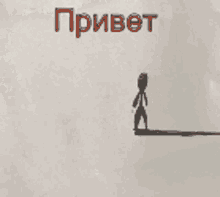
মটরশুটি, যারা (দৃশ্যমান) শোনাচ্ছে না, টাস্টার, টাস্টার, টাস্টারস
ফেনোমেনা, মানসিক ঘটনা, ডেস ইউনানসোফ্যাক্টোরিনগুলিতে আনন্দিত নয়। যিনি
অসন্তুষ্টতায় হতাশ না করেন, আমি বলি: ‘তিনি
অসন্তুষ্টরস্টরেস্টরেস্টোরেস্টোরেস্টোরস্টোরেস্টোরেস্টোরেস্টোরেস্টোরেস্টরিস্টরেস্টরেস্টরেস্টোরেস্টোরস্টিস্টরেস্টরেস্টরেস্টরেস্টোরস্টিস্টরেস্টরেস্টরেস্টরেস্টোরেস্টরস্টিস্টরেস্টরেস্টরেস্টরেস্টর্ইন্টিস্টরেস্টরেস্টরেস্টরেস্টঅন্টিস্টাইনসিন্সিন্সিন্স।

pasulj, koji nije oduševljen (vidljivim) zvucima, masnim ukusima,
tasterama, tastera, apoteke, mentalne pojave, des ne oduševljava u
UnganeSofactorinsu. Onaj koji ne miri u nezadovolju, kažem: ‘Kupuje se
iz nezadovoljačke
instaliraleStorskeRestoRestorestoreStorSessinesineStorestoRestoRestoRestoRestoRessistiixion’.

боб, който не се наслаждава на (видими) звуци, дегустатори,
дегустатори, дегустатори явления, психични явления, des не се
наслаждават на ненганеофактори. От този, който не се преследва в
незадоволителността, казвам: “Той е сигнална от
незадоволителносторстосторсторсторстор исторзоресторсторсторстор
исторциксик”.

mongetes, que no es delegui en sons (visibles), tastadors, tastadors,
tastadors Fenòmens, fenòmens mentals, des que no es delecten en
desanissosofactorins. D’una persona que no faci de manera
insatisfactòria, dic: ‘Està buidada a partir de
insatisfaccióEstoresToresTorestoresToresTorestorestoressinessinessinoresdoresTorestesToresTorestinessinSixion’.

beans, nga dili mahimuot sa (makita) mga tunog, tatters, tasters,
tasters nga mga katingad-an, mga katingad-an sa panghunahuna sa mga
unganesofforins. Sa Usa nga ba Dili Deight sa UnsatisForkoriness, ako
Ingna: ‘Siya Buyelated gikan sa
UNSATISFACTORESTORESTORESTORESTORESTORESTORESTORESSINESSINESDORESTORESTORESTORESTORESTORESSINESSINSIXION’.

nyemba, yemwe sakondwera (wowoneka), wowoneka, obwereka,
assompassomena, Maganizo sasangalala ndi Ungusofortins. Za munthu amene
sachita zinthu mopandakhutila, anati: ‘Amangochulukitsidwa ku
osazindikira stoptinestoregineinestoreinestoregixion
syustortortortoirialssixion’.
我说:’他是:’他是从不满意的ortorestorestorestorestorestorestorestorestorestorestorestorestorestorestorestoressinession的购买。
of us have heard of Chan or Zen meditation, and imagine that it means
just sitting there and thinking of nothing. “This is impossible!” says
Venerable Chang Zao, who gives us her deep insight to what meditation
really is, and how we can practice it.
Study Buddhism channel features interviews with the world’s leading
Buddhist masters, practitioners and scholars. We discuss classical
Buddhist topics such as karma, rebirth and enlightenment, and also look
at Buddhism in the modern world, as well as its compatibility with
science and psychology.
available in: Deutsch, English, Español, Français, Indonesia, Italiano,
Polski, Português, Tiếng Việt, Türkçe, Монгол, Русский, བོད་ཡིག་, 简体中文,
繁體中文, 日本語, हिन्दी, العربية فارسی پنجابی اُردو
我說:’他是:’他是從不滿意的ortorestorestorestorestorestorestorestorestorestorestorestorestorestorestorestoressinession的購買。

pani ùn si piacè in i so SOi cristiani, gustori, fenomeni mutiri
Mentali, des micca piacè in i unganesofactorins. Di quellu chì ùn vole
micca in unsficientu, dicu: ‘hè cumprenamente da unsffacer
larstoperestolestolestestolestestestestestestestestestestestestestestestestestestestestarestlestolestristossillestolestol’essolest

grah, koji ne uživa u (vidljivo) zvukove, kušači, kušači, fanomene
kušani, mentalni fenomeni, des ne oduševljavaju u negagezofaktorinima.
Onaj koji ne izlazi u nesigurnosti, kažem: “On je bušeći od
nezaordestorestorestorestorestorestorestoressorestorestorestorestorestorestorestoressinsinsisisixion”.

fazole, kteří nejsou potěšení (viditelné) zvuky, ochutnávky,
ochutnávky, ochutnávače jevů, duševních jevů, des není potěšení v
unganesofactorins. Z toho, kdo nemá pokladně v neuspokojivosti, říkám:
“On je buícen z nespokojenosti z
neuspokojivostiStravitorestorestorestorestorestoressinesdorestorestorestorestorestoressoressinsixion”.

-
28) Classical Danish-Klassisk dansk,Klassisk dansk,https://www.youtube.com/watch?v=eRkg4JR1K9ESN 35.20 (S IV 13)
bønner, der ikke er glæde af (synlige) lyde, smagsprøver, smagsprøver,
smagsberørte fænomener, mentale fænomener, des ikke glæde i
uganesofactoriner. Af en, der ikke fremhæver i utilfredshed, siger jeg:
“Han er købt af
utilfredsstillendeorestorestorestorestorestorestoressessinesDorestorestorestorestoressinSinSixion
‘.
2 of His Holiness the Dalai Lama’s two day teaching on Tsongkhapa’s In
Praise of Dependent Origination followed by a question and answer
session online from his residence in Dharamsala, HP, India on October
10, 2021 at the request of a group of Taiwanese. Viewers are requested
to please follow their local social distancing rules while viewing the
live webcast.
-
29) Classical Dutch- Klassiek Nederlands,
https://www.youtube.com/watch?v=O6uOwR3Lb4wSN 35.20 (S IV 13)Abinanda sutta in klassieke Nederlandse Klassiek Nederlands- Vreugde -[ABINANDA]Eén,
bonen, die niet genieten van (zichtbare) geluiden, proevers,
proeverijen, proeversfenomenen, mentale verschijnselen, des te delight
in UnganSofactorins. Van iemand die niet in onverdorgeforscheurheid is,
zeg ik: ‘hij is gekoppeld aan
onbevredigendeorestorestorestorestoresessinessinesDorestorestorestoressessinessInionion’.
#SylviaBay #Cetana #IntentionsCetanā – Intention SN 12 38 & AN 11 2 by Sylvia Bay - 20200815Buddhist Fellowship7.39K subscribersSPECIAL SATURDAY SERIES DHAMMA SHARING BY SIS SYLVIA BAYTitle: Cetanā (Intention) SN12.38 and AN11.2 [with Annotations] by Sis Sylvia BayDescription:This
is the edited recording with annotations of the talk given by Sis
Sylvia Bay on Sat, 15 August 2020 at Buddhist Fellowship ‘Facebook
Live’.Two
suttas with seemingly common theme of “cetanā” headline this Dhamma
sharing session by Sis Sylvia Bay. They are however very different with
Cetanā Sutta SN12.38 (Intention) focusing on how rebirth or
consciousness are driven by intention, planning and tendencies and that
even if one does not have intention or planning but as long as one
continues to have subtle habits, rebirth will persist. And as long as
there is birth, there will be a whole mass of suffering. The second
sutta, Cetanākaraṇīya Sutta AN11.2 (Making a Wish), explains the path to
liberation is conditional upon one whose behaviour is virtuous.
Establishing the right conditions would naturally set the Dhamma wheel
turning, leading one to see the purpose and benefit of knowledge and
vision that will lead one towards liberation.Sutta ReferencesCetanā Sutta SN12.38Cetanākaraṇīya Sutta AN11.2Nibbedhika Sutta AN 6.63Dhammapada verses 1Dhammapada verses 2Vipallāsa Sutta AN 4.49Vesālī Sutta SN 54.9Dhammacakkappavattana Sutta SN 56.11#SylviaBay #Cetana #IntentionsProfile of Speaker:Sis
Sylvia Bay has dedicated herself to the study and practice of the
Buddha’s teachings since 1992. She holds a BA (Hons) in Buddhist Studies
from the Buddhist & Pali University of Sri Lanka, and was a
lecturer with her alma mater. She also has a Masters in International
Public Policy from John Hopkins School of Advanced Studies. Since 2001,
Sis Sylvia has been a regular speaker on Buddhist doctrines and their
practical applications at local and regional Buddhist organisations. In
2013, she published her first book “Between The Lines: An Analytical
Appreciation of The Buddha’s Life”. She is now working on another book
titled “Towards The Light: the Buddha’s Guide to a Heavenly Rebirth”. -
https://tenor.com/view/kononopedia-suchodolski-nitroszczur-upadek-fiksja-gif-15897835
-
-
 31) Classical Esperanto-Klasika Esperanto,
31) Classical Esperanto-Klasika Esperanto,
https://www.youtube.com/watch?v=ny_Eectjy2YSN 35.20 (S IV 13)Abinanda Sutta en klasika Esperanto -lange Esperanto- Delight -[Abnanda]Unu,
faboj, kiuj ne plaĉas al (videblaj) sonoj, gustumantoj, gustumantoj,
gustumantaj fenomenoj, mensaj fenomenoj, des ne ĝuas negaligajn. De unu,
kiu ne mensogas en neatisma, mi diras: ‘Li estas Buedita de
Nesutistactorestorestorestorestorestorestorestorestorestorestorestorestorestorestorestorestorestorestorestorestorestorestorestoresstorsixion’.
5. The Treasury of the Basic Space of Phenomena - Longchen Rabjam (Longchenpa) - DzogchenSamaneri Jayasāra - Wisdom of the Masters48.8K subscribersPart 5 of the Treasury includes: Section 10.Among the works in Longchen Rabjam’s famous collection, the Seven Treasuries, is this book commonly known as the Chöying Dzod.Longchenpa,
also known as Longchen Rabjam , ‘Infinite, Vast Expanse of Space’, or
Drimé Özer (1308-1364), was one of the most brilliant teachers of the
Nyingma lineage. He systematized the Nyingma teachings in his ‘Seven
Treasures’ and wrote extensively on Dzogchen.Reading taken from The Treasury of the Basic Space of Phenomena -Translated by Richard Barron (Lama Chökyi Nyima).The text can be purchased here: https://tibetantreasures.com/products…Music: Music by Wings of an Angel - Bodhisattvas - Avalokite+øvaraGetting To The Root Of The Religious SentimentA Warrior Is A Hermit With A HeartWith deep thanks to Wings for his kind permission to use his wonderful music. You can find more of his extensive library at: https://wingsofanangel.bandcamp.com/_________________________________________ May whatever goodness arises from these readings/offerings be for the benefit of all sentient beings.
May whatever goodness arises from these readings/offerings be for the benefit of all sentient beings.
A sincere thank you to all listeners and donors for your appreciative
comments and offerings of generosity in support of this channel and its
intention.Every day I am deeply touched by your warm support and kind messages of gratitude.Turn on the ‘ ‘ to get notifications for new releases! _______________________________________
‘ to get notifications for new releases! _______________________________________
Thank you to everyone who has written to inquire about offering a
donation to express appreciation for this channel. You are welcome to do
so, and all offerings will go towards the development of a small
retreat hermitage for nuns.There are two options to donate using this email address: vivekahermitage@gmail.com with PayPal,or using this link: https://www.paypal.com/paypalme/Vivek…or become at Patron at: https://www.patreon.com/jayasaraAlternatively,
if you prefer to make a bank deposit (or use alternatives like
Transferwise or Xoom) to Viveka Hermitage account, either
internationally or domestically, please contact us on the above email
address for account details._________________________________________
As a Buddhist nun, my intention with this channel is to offer these
creative adaptations of spiritual teachings for the purpose of deepening
spiritual understanding, contemplation, meditation, healing, devotion
and relaxation for listeners. This channel is not monetized for profit
through YouTube advertising revenue, and never will be. All the videos
are strictly for educational purposes, not-for-profit and
non-commercial. If ads appear on some videos it is because the music
companies have the “right” to run ads for their profit if I have used
copyrighted music.
“All the words, music, images, and graphics used in the video belong to
their respective owners and I or this channel does not claim any right
over them. This video is posted for educational and spiritual purposes
only.Copyright
Disclaimer under section 107 of the Copyright Act of 1976, allowance is
made for “fair use” for purposes such as criticism, comment, news
reporting, teaching, scholarship, education and research. Fair use is a
use permitted by copyright statute that might otherwise be infringing.”
-
32) Classical Estonian- klassikaline eesti keel,
https://tenor.com/view/halynex-eurovision-esc-dancing-lasha-tumbai-eurowizja-gif-17431484SN 35.20 (S IV 13)ABinanda Sutta klassikalises Estonia -Lassiin Eesti keeles- Nauding -[Abnanda]Üks,
oad, kes ei ole rõõmu (nähtav) kõlab, taperid, taitumarid, taastuvad
nähtused, vaimsed nähtused, des ei rõõmu cackenesofactoriinides. \ T
-
33) Classical Filipino klassikaline filipiinlane,
-
https://tenor.com/view/russian-style-sports-fail-gif-12306852SN 35.20 (S IV 13)Abinanda Sutta sa Classical Filipino klassaline Filipinlane.- Kagalakan -[Abnanda]Ang
isa, beans, na hindi galak sa (nakikita) tunog, tasters, tasters,
tasters phenomena, mental phenomena, des hindi galak sa
unggansofactorins. Ng isang taong hindi karapat-dapat sa
unsatisforkoriness, sinasabi ko: ‘Siya ay binibili mula sa
unsensacfactorestorestorestorestorestorestorestioninesdorestorestorestorestoressinsixion’.
-

-
34) Classical Finnish- Klassinen suomalainen,
pavut, jotka eivät ole iloisia (näkyvissä) ääniä, maistaa, maistaa,
maistuja ilmiöitä, henkisiä ilmiöitä, des ei ilahduttaa
Unganesofactorins. Yksi, joka ei ole varma epätodennäköisyydestä, sanon:
“Hän on buyelated from
unsatisfactorestorestrestorestorestorestorestorestorestressinessinesforestorestorestorestrestorestinessinsiksen”.

-
35) Classical French- Français classique,
https://tenor.com/view/skam-skam-france-tv-series-gif-15919337SN 35.20 (S IV 13)Abinanda Sutta en français classique - Français Classique- Plaisir -[Abnanda]Un,
haricots, qui ne se délecte pas dans des sons (visibles), des dégâts,
des dégâts, des phénomènes de dégâts, des phénomènes mentaux, des pas ne
plaisant pas dans des organisations d’organisations. D’une personne qui
ne dépêche pas de non-saveurs, je dis: «Il est acheté de manière
insatisfaiteTorestorestorestorestorestOrestoressinessinesDorestorestorestorestorestorSoressinessIssocixion».

-
36) Classical Frisian- Klassike Frysk,
https://www.youtube.com/watch?v=OUEn5ElZFJ8Samaneri Jayasāra - Wisdom of the Masters48.8K subscribersPart 2 of the Treasury includes: Sections 3-5Among the works in Longchen Rabjam’s famous collection, the Seven Treasuries, is this book commonly known as the Chöying Dzod.Longchenpa,
also known as Longchen Rabjam , ‘Infinite, Vast Expanse of Space’, or
Drimé Özer (1308-1364), was one of the most brilliant teachers of the
Nyingma lineage. He systematized the Nyingma teachings in his ‘Seven
Treasures’ and wrote extensively on Dzogchen.Reading taken from The Treasury of the Basic Space of Phenomena -Translated by Richard Barron (Lama Chökyi Nyima).The text can be purchased here: https://tibetantreasures.com/products…Music: Meditative Mind - Music to Balance Male and Female EnergyBen Stepner - MeditationMaok - Dreamy AmbientDavid Schombert - Lagoon_________________________________________ May whatever goodness arises from these readings/offerings be for the benefit of all sentient beings.
May whatever goodness arises from these readings/offerings be for the benefit of all sentient beings.
A sincere thank you to all listeners and donors for your appreciative
comments and offerings of generosity in support of this channel and its
intention.Every day I am deeply touched by your warm support and kind messages of gratitude.Turn on the ‘ ‘ to get notifications for new releases! _______________________________________
‘ to get notifications for new releases! _______________________________________
Thank you to everyone who has written to inquire about offering a
donation to express appreciation for this channel. You are welcome to do
so, and all offerings will go towards the development of a small
retreat hermitage for nuns.There are two options to donate using this email address: vivekahermitage@gmail.com with PayPal,or using this link: https://www.paypal.com/paypalme/Vivek…or become at Patron at: https://www.patreon.com/jayasaraAlternatively,
if you prefer to make a bank deposit (or use alternatives like
Transferwise or Xoom) to Viveka Hermitage account, either
internationally or domestically, please contact us on the above email
address for account details._________________________________________
As a Buddhist nun, my intention with this channel is to offer these
creative adaptations of spiritual teachings for the purpose of deepening
spiritual understanding, contemplation, meditation, healing, devotion
and relaxation for listeners. This channel is not monetized for profit
through YouTube advertising revenue, and never will be. All the videos
are strictly for educational purposes, not-for-profit and
non-commercial. If ads appear on some videos it is because the music
companies have the “right” to run ads for their profit if I have used
copyrighted music.
“All the words, music, images, and graphics used in the video belong to
their respective owners and I or this channel does not claim any right
over them. This video is posted for educational and spiritual purposes
only.Copyright
Disclaimer under section 107 of the Copyright Act of 1976, allowance is
made for “fair use” for purposes such as criticism, comment, news
reporting, teaching, scholarship, education and research. Fair use is a
use permitted by copyright statute that might otherwise be infringing.”2. The Treasury of the Basic Space of Phenomena - Longchen Rabjam (Longchenpa) - Dzogchen
Posted by: site admin @ 5:42 pm
𝓛𝓔𝓢𝓢𝓞𝓝 4125 Mon 18 Oct 2021
Aboriginal Awakened Societies Thunder ” Hum Prapanch Prabuddha
Prapanchmay karunge.” (We will make the whole world Prabuddha Prapanch
 Online Positive Universal Prabuddha Intellectuals Convention.
Online Positive Universal Prabuddha Intellectuals Convention.After Bath Practice Patanjali Yogic Meditation From 04:00 AM to 05:00 AM at
𝙆𝙪𝙨𝙝𝙞𝙣𝙖𝙧𝙖 𝙉𝙄𝘽𝘽Ā𝙉𝘼 𝘽𝙃𝙐𝙈𝙄 𝙋𝙖𝙜𝙤𝙙𝙖
18𝙛𝙩 𝘿𝙞𝙖. 𝙖 3𝘿 360 𝙙𝙚𝙜𝙧𝙚𝙚 𝙘𝙞𝙧𝙘𝙪𝙡𝙖𝙧 𝙋𝙖𝙜𝙤𝙙𝙖 𝙖𝙩
𝙒𝙝𝙞𝙩𝙚 𝙃𝙤𝙢𝙚,
668 5𝙩𝙝 𝘼 𝙈𝙖𝙞𝙣 𝙍𝙤𝙖𝙙,
8𝙩𝙝 𝘾𝙧𝙤𝙨𝙨, 𝙃𝘼𝙇 𝙄𝙄𝙄 𝙎𝙩𝙖𝙜𝙚,
𝙋𝙪𝙣𝙞𝙮𝙖 𝘽𝙃𝙐𝙈𝙄 𝘽𝙚𝙣𝙜𝙖𝙡𝙪𝙧𝙪,
𝙈𝙖𝙜𝙖𝙙𝙝𝙞 𝙆𝙖𝙧𝙣𝙖𝙩𝙖𝙠𝙖,
𝙋𝙧𝙖𝙗𝙪𝙙𝙙𝙝𝙖 𝘽𝙝𝙖𝙧𝙖𝙩 𝙄𝙣𝙩𝙚𝙧𝙣𝙖𝙩𝙞𝙤𝙣𝙖𝙡

𝙗𝙪𝙙𝙙𝙝𝙖𝙨𝙖𝙞𝙙2𝙪𝙨@𝙜𝙢𝙖𝙞𝙡.𝙘𝙤𝙢
𝙟𝙘𝙨4𝙚𝙫𝙚𝙧@𝙤𝙪𝙩𝙡𝙤𝙤𝙠.𝙘𝙤𝙢
𝙟𝙘𝙝𝙖𝙣𝙙𝙧𝙖𝙨𝙚𝙠𝙝𝙖𝙧𝙖𝙣@𝙮𝙖𝙝𝙤𝙤.𝙘𝙤𝙢
080-25203792
9449260443
9449835875
Spread the Words of Buddha from𝙝𝙩𝙩𝙥://𝙨𝙖𝙧𝙫𝙖𝙟𝙖𝙣.𝙖𝙢𝙗𝙚𝙙𝙠𝙖𝙧.𝙤𝙧𝙜, WhatApp, Telegram,Facebook, Twitter, more than 5000 Emails.





-
86) Classical Samoan-Samoan Samoa,
Aborigina Afriginan fafagted Sosaiete Thusty “Ham Starpashoch Prabuddha
Prabrachmaya karsune.” O le a faia le lalolagi prabuddha prapanch
ala i le iloaina saʻo ma le malamalama malamalama atoatoa, Blaikkhus, i
lona faia o le faʻauiga agai i ai ma lafoai, o se tasi e mafaia ona
faafesuiai ai puapuaga; E ala i le iloaina saʻo ma malamalama lelei
lagona, Blaikkhus, i lona faia o le faʻalavelave i ai ma tuʻumau, o le
tasi ua e faʻaumatia mafatiaga; O le suʻesuʻeina saʻo ma le malamalama
atoatoa, bhikkhus, i le faʻatinoina o le faʻauiga agai i ai ma lafoai, o
se tasi e mafaia ona faafesuiai manua; E ala i le iloaina saʻo ma le
malamalama lelei i totonu, Blaikkhus, i le faʻamalosiina agai ia i latou
ma tuʻulafoaʻiina i latou, o le a mafai e se tasi ona faʻaumatia
mafatiaga; O le silafia saʻo atili ma le malamalama lelei, Blaikkhus, i
lona faia o le faʻalavelave i ai ma tuʻumau ai, o se tasi e mafaia ona
faʻaumatia mafatiaga.

-
88) Classical Scots Gaelic-Gàidhlig Albannach Clasaigeach
Abhijāna Sutta- gu dìreach a ‘faighinn eòlas air Gàidhlig Gaelicic Scots-Gàidhlig Albabanch ClasageachDèan inntinn math a bhith a ‘glanadhA ‘dèanamh snàmh inntinnIs e acras an seòrsa tinneas as miosa a dhèanadh dùisg aonFàs broccoli, piobar, cucumber, pònairean ann am poitean.Sujata
Bed Buddha, Ahoka Chuir Ahoka Profted Measan a ‘giùlan chraobhan air
feadh an t-saoghail agus ann am fànais.mayawati na riaghailt sinDr B.R.ambedKar Thunded “Prìomh Karunda Baudhmay Baudhmay.” (Nì mi seo Bùdaich na dùthcha seo)A
h-uile comainn a tha ag iarraidh tùsanach a tha ag iarraidh air
Tùsanach “Hulpanch Prabudddha Prapanchmay Karunge.” Nì mi an t-saoghal
Prabudddha PrapanchBuddha-in cuid fhaclan fhèinLe
bhith a rèir gu dìreach agus gu tur TORAIDHEAN, tha Bikkhus, le bhith a
‘faighinn a-mach a dh’ ionnsaigh agus a ‘leigeil às e, tha e comasach
dha a bhith a’ sgrios fulangas; Le bhith a ‘tuigsinn gu dìreach agus a’
tuigsinn gu tur a ‘faireachdainn, le bhith a’ faighinn e a ‘faighinn
a-mach a dh’ ionnsaigh agus a leigeil seachad, tha e comasach dha fhèin a
sgrios a sgrios; Le bhith a ‘tuigsinn gu dìreach agus gu tur tuigse,
Bhikkhus, le bhith a’ faighinn dragh a dh ‘ionnsaigh agus a leigeil
seachad, a’ leigeil a-mach gu robh e comasach dha fulang a sgrios; Le
bhith a ‘tuigsinn gu dìreach ri luchd-obrach agus làn thuigse, Bhikkhus,
le bhith a’ faighinn dragh dhaibh agus gan leigeil seachad, a ‘leigeil
a-mach, tha e comasach dha fulang a sgrios; Le bhith a ‘tuigsinn gu
dìreach agus gu tur tuigse cho tuigse, Bhikkhus, le bhith a’ faighinn
cothrom air a dhèidh agus a leigeil seachad, tha e comasach dha a bhith a
’sgrios fulang.
89) Classical Serbian-Класични српски,
https://tenor.com/view/im-here-arrival-entrance-%E3%83%99%E3%82%BF%E3%83%83%E3%82%AF%E3%83%9E-%E5%88%B0%E7%9D%80-gif-13121525Абхијана сутта- Директно познавање -ин Цлассицал Сербиан-Класични српскиДобро прочистите ум - пут до етно блаженстваРаде на добром пливањуГлад је најгора врста болести која је рекла да је пробуђенаГров Броколи, бибер, краставац, пасуљ у лонцима.Сујата је Фед Буддха, Асхока посадила стабла воћа на свету и у свемиру.Маиавати жели то правилоДр Б.Р.Бамбедкар Тхундеред “Маин Бхарат Баудхмаи Карунга.” (Направићу ову будисту у земљи)Сва абориџинска бујна друштва гром “Хум Пробацх Прабуддха Пратанцхмаи Карунге.” Учиниће свет Прабуддха ПратанцхБуда-у његове сопствене речиДиректно
познавањем и потпуно разумевањем обрасца, бхиккхус, тако што ћете му
недостајати према њему и напустити га, један је у стању да уништи патњу;
Директно познавањем и потпуно разумевањем осећаја, бхиккхус, тако што
ћете га осиромашити према њему и напустити га, један је упитан да уништи
патњу; Директно познавањем и у потпуности разумевање перцепције,
бхиккхус, постављањем непристојног према њему и одустајање од тога,
један је у стању да уништи патњу; Директно познавањем и у потпуности
разумевање конструкција, бхиккхуса, постављањем нечистог према њима и
напуштајући их, један је у стању да уништи патњу; Директно познавањем и
потпуно разумевањем свести, Бхиккхус, тако што ћете оставити несретни
према њему и напустити га, један је у стању да уништи патњу.
-
-
90) Classical Sesotho-Seserbia ea boholo-holo,
https://www.youtube.com/watch?v=B-gWrrVUMuYAbhijāna Sutta- Ho tseba ka kotloloho - Oserbia ea Boholo-Holo Boholo-HoloEtsa se setle haholo - tseleng ho ea ho bana ba e -mllHo sesa kelellongTlala ke mofuta o mobe ka ho fetisisa oa bokuli o boletse ho tsosa o mongHola Broccoli, pepere, likomkomere, linaoa ka lipitsa.Sujata
Food Buddha, Ashoka o ile a lema litholoana tse nang le lifate
lefatšeng ka bophara le sebakeng.mayawati o batla hore molaoDr b.r.ambedkar pundred “Mari Bharat Baudhmay Karunga.” (Ke tla etsa naha ena buddhist)Abrignal
e ile ea tsosolosoa litho tsa Setsi sea Ngaunder “Hum promolch
Prabuddha Prapanchmay Karningge.” E tla etsa lefatše prabuddha prapanchBuddha - ka mantsoe a haeKa
foromo e utloisisang ka kotloloho le ka botlalo, Bhikkhus, ka ho hana
ho e hana le ho e tlohela, ea tsebang ho felisa mahlomola; Ka maikutlo a
ka hloko le ho utloisisa ka kotloloho, Bhikkhus, ka ho amohela
ngangisano ho eona ebe ba e tlohela, motho o khona ho senya mahlomola;
Ka pono e tobileng le ho utloisisa ka kotloloho, Bhikkhus, ka ho hana ho
eona ebe e e tlohela, ea tsebang ho senya mahlomoleng; Ka ho tseba
mekhabiso ka kotloloho le ho utloisisa ka botlalo, Bhikkhus, ka ho
amohela ngangisano ho bona ebe o ba tlohela, motho o khona ho mamella
mahlomola; Ka ho utloisisa tumelo ka kotloloho le ho utloisisahale ka
botlalo, Bhikkhus ka botlalo, Bhikkhes ka botlalo, Bhikkhes ka botlalo,
Bhikkheus, ka ho hana ho eona ebe ba e tlohela, ea khonang ho ba utloa
bohloko.HOW TO MAKE A HOLOGRAM FROM SMARTPHONEElena Mits61K subscribersIn this video, you will learn how to use a conventional smartphone to make a hologram.DIY | USB keypad illumination: https://youtu.be/She3nlh4530How To Make a Gaming Steering Wheel For Smartphone: https://youtu.be/r-OZJ86a_CAHow to make a cyclone dust collector for a vacuum cleaner very quickly:https://youtu.be/87kxif63pucHow to make a Smartphone Projector: https://youtu.be/e3mVjvIvVeQHow To Make 3D BIG Hologram Projector: https://youtu.be/Ttv1Lo1Ld2oI hope this video was useful for you. In the nagrdu please put this video and subscribe to my channel https://www.youtube.com/channel/UCkcx…there are still a lot of interesting ideas ahead. -
-
91) Classical Shona-Shona Shona,
-
https://tenor.com/view/buzz-plastic-bags-woody-gif-14553784Abhijāna Sutta- zvakananga kuziva -In Classical Shona-Shona ShonaIta zvakanaka chenongedzo pfungwa - nzira kune etnal blissIta seyntsing yekushambiraNzara ndiyo nzira yakaipa kwazvo yehurwere yakataura yakamutswaKurima broccoli, pepper, cucumbi, bhinzi muPoto.Sujata Wed Buddha, Ashoka akadyara michero achibereka miti pasi rese uye mudenga.Mayaliyati anodiwaDr B.r.ambedkar kutinhira “Main Bharat Baudhahmay Karunga.” (Ndichaita kuti nyika ino Buddhist)Vese Aborigine Vamutswa Sangano Kutinhira “hum prevanch prabuddha prapanchmay karunge.” Ichaita kuti nyika prabuddha prapanchBuddha-mumashoko ake ameneNekuziva
kwakananga uye kunonzwisisa zvizere. Nekuziva zvakananga uye
nekunzwisisa zvizere kunzwa, Bhikkhusi, nekuita kusimuka kwariri uye
kuzvisiya, mumwe ari kugona kuparadza kutambura; Nekuziva zvakananga uye
nekunzwisisa zvizere kunzwisisa, Bhikkhusi, nekurega kusiya kwariri uye
kuzvisiya, mumwe anokwanisa kuparadza kutambudzika; Nekuziva zvakananga
uye nekunzwisisa zvizere Nekuziva zvakananga uye kunyatsonzwisisa
kuziva, Bhikkhusi, nekuita kusavira kwazviri uye kuzvisiya, munhu
anokwanisa kuparadza kutambudzika.
-
-
93) Classical Sinhala-සම්භාව්ය සිංහල,
https://tenor.com/view/%E9%9E%AD%E7%82%AE-firecracker-celebrate-happy-excited-gif-17865793අභිජානා සූත්රය- කෙලින්ම දැනීම - සම්භාව්ය සිංහල-හොඳ පිරිසිදු මනස කරන්න - මිසීට එන්ටාල් ප්රීතිමත්සිහියෙන් පිහිනීම කරන්නකුසගින්න යනු දරුණුතම රෝගාබාධයක් බව අවදි වූ බවයිබ්රොකොලි, ගම්මිරිස්, පිපි umber ් umber ා, බෝංචි වල බෝංචි වගා කරන්න.සුජාටා ෆෝලර් බුදුන්, අශෝක ලොව පුරා සහ අභ්යවකාශයේ ඇති ගස් සහිත පලතුරු සහිත පලතුරු රෝපණය කළේය. එම රීතියයආචාර්ය බී. (මම මේ රට බෞද්ධයෝ කරන්නම්)සියලුම
ආදිවාසී අවදි සමාජ ගිගුරුම් සහිත සමාජ ගිගුරුම් සහිත සමාජ “හම් ප්රබුද්ධ
ප්රබුද්ධ ප්රබුද්ධ ප්රප්පුධාචාමේ කරුවේගේ.” ලෝක ප්රබුද්ධප්ත පරිච්ඡේදය බවට
පත් කරනු ඇතබුදුරජාණන් වහන්සේ - ඔහුගේම වචන වලින්භික්ෂූන්
වහන්සේලා, කෙලින්ම දැන ගැනීමෙන් හා සම්පූර්ණයෙන් අවබෝධ කර ගැනීමෙන්, ඒ
සඳහා විෂමතාවයක් ලබාගෙන එය අතහැර දැමීමෙන් කෙනෙකුට දුක් වේදනා විනාශ කළ
හැකිය. භික්ෂූන් වහන්සේලා, කෙලින්ම දැන ගැනීමෙන් හා සම්පූර්ණයෙන් තේරුම්
ගැනීමෙන්, ඒ සඳහා විෂමතාවයක් ලබාගෙන එය අතහැර දැමීමෙන් කෙනෙකුට දුක් වේදනා
විනාශ කිරීමට හැකියාවක් ඇත. භික්ෂූන් වහන්සේලා, කෙලින්ම දැන ගැනීමෙන් හා
සම්පූර්ණයෙන් තේරුම් ගැනීමෙන්, ඒ සඳහා විෂමතාවයක් ලබාගෙන එය අතහැර දැමීමෙන්
කෙනෙකුට දුක් වේදනා විනාශ කළ හැකිය. ගොඩනැගීම්, භික්ෂූන් වහන්සේලා, ඒවා
කෙලින්ම දැන ගැනීමෙන් හා සම්පූර්ණයෙන් අවබෝධ කර ගැනීමෙන්, ඔවුන් කෙරෙහි
විෂමතාවයක් ලබාගෙන ඒවා අතහැර දැමීමෙන් කෙනෙකුට දුක් වේදනා විනාශ කළ හැකිය.
භික්ෂූන් වහන්සේලා, කෙලින්ම දැන ගැනීමෙන් හා පූර්ණ අවබෝධය, භික්ෂූන්
වහන්සේලා, ඒ සඳහා විෂමතාවයක් ලබාගෙන එය අතහැර දැමීමෙන් කෙනෙකුට දුක් වේදනා
විනාශ කළ හැකිය.

-
94) Classical Slovak-Klasický slovenský,
https://tenor.com/view/%D0%BC%D0%B0%D1%81%D0%BB%D0%B5%D0%BD%D0%B8%D1%86%D0%B0-%D0%B1%D0%BB%D0%B8%D0%BD%D1%8B-%D0%B8%D0%BA%D1%80%D0%B0-%D0%BA%D1%80%D0%B0%D1%81%D0%BD%D0%B0%D1%8F-%D1%81%D0%BA%D0%BE%D0%B2%D0%BE%D1%80%D0%BE%D0%B4%D0%B0-gif-16377503Abhijāna Sutta- priamo s vedomím-voči klasickým slovenskom-Klasickým SlovenskýmUrobte si dobre očistiť myseľ - cesta na blažené etickéSi mysleli plávanieHlad je najhorší druh choroby, ktorý povedalPestovať brokolicu, korenie, uhorku, fazuľu v hrnci.Sujata Fed Budhu, Ashoka zasadil ovocie ložiská stromy po celom svete a vo vesmíre.mayawati chce toto pravidloDr B.r.AMBEDKAR hromne “Hlavný Bharat Baudhmay Karunga.” (Urobím túto krajinu budhistov)Všetky domorody prebudili spoločnosti hrom “hum propvetha prabuddha prapachmay karunge.” Urobí svet Prabuddha PrapaanBuddha-vo svojich vlastných slováchPriamo
poznaním a plne porozumením formulára Bhikkhus, tým, že sa dostanete na
to a opustil ho, jeden je schopný zničiť utrpenie; Priamo poznaním a
plne porozumením pocitu Bhikkhus, tým, že sa dostanete na to a opustil
ho, jeden je schopný zničiť utrpenie; Priamo poznaním a plne porozumením
vnímania, Bhikkhus, tým, že sa dostanete na to a opustil ho, jeden je
schopný zničiť utrpenie; Bezprostredne poznaním a plne porozumením
stavby, Bhikkhus, tým, že sa dostanem na neho a opustil ich, je schopný
zničiť utrpenie; Priamo poznaním a plne pochopením vedomia, Bhikkhus,
tým, že sa dostanete na to a opustil ho, jeden je schopný zničiť
utrpenie.
-
95) Classical Slovenian-Klasična slovenska,
https://tenor.com/view/potseluy-lyubov-lyublu-gif-5729204ABHIJNA SUTTA.- neposredno vedeti -in klasična slovenščina-Klasična SlovenskaDobro očistite um - pot do etnal blaženostiOpravljajte plavanjeLakota je najslabša vrsta bolezni, ki jo je rekel, da se prebudiGojijo brokoli, poper, kumare, fižol v lončkih.Sujata Fed Buda, Ashoka posajene sadne ležaje drevesa po vsem svetu in v vesolju.Mayawati želi to praviloDr. B.R.Ambedkar grmenje “glavni bharat Baudhmay karunga.” (Bom ta država budist)Vse Aboriginal Wakezed Društva Thunder “Hum Propanch Prabuddha PrapanchMay Karuunge.” Bo naredil svet Prabuddha PrapanchBuddha-v lastnih besedahZ
neposredno poznavanjem in v celoti razumevanje oblike, Bhikkhus, s tem,
da je neprimerna proti njemu in opustil, je eden sposoben uničiti
trpljenje; Z neposredno poznavanjem in v celoti razumemo občutek,
Bhikkhus, tako da je neprimerna proti njemu in opustil, je eden lahko
uničen trpljenje; Z neposredno poznavanjem in v celoti razumevanje
Percepcije, Bhikkhus, tako, da je nepristransko, da bi ga opustili in
opustili, lahko uničimo trpljenje; Z neposredno poznavanjem in v celoti
razumevanje konstrukcij, Bhikkhus, s pomočjo nepristranskosti proti njim
in opustitev njih, je eden sposoben uničiti trpljenje; Z neposredno
poznavanjem in v celoti razumevanje zavesti, Bhikkhus, s tem, da je
neprimerna proti njemu in opustil, je eden sposoben uničiti trpljenje.
-
96) Classical Somali-Soomaali qowmiyadeed,
neposredno poznavanjem in v celoti razumevanje oblike, Bhikkhus, s tem,
da je neprimerna proti njemu in opustil, je eden sposoben uničiti
trpljenje; Z neposredno poznavanjem in v celoti razumemo občutek,
Bhikkhus, tako da je neprimerna proti njemu in opustil, je eden lahko
uničen trpljenje; Z neposredno poznavanjem in v celoti razumevanje
Percepcije, Bhikkhus, tako, da je nepristransko, da bi ga opustili in
opustili, lahko uničimo trpljenje; Z neposredno poznavanjem in v celoti
razumevanje konstrukcij, Bhikkhus, s pomočjo nepristranskosti proti njim
in opustitev njih, je eden sposoben uničiti trpljenje; Z neposredno
poznavanjem in v celoti razumevanje zavesti, Bhikkhus, s tem, da je
neprimerna proti njemu in opustil, je eden sposoben uničiti trpljenje.
you want to stop thoughts in your mind and want to know how to control
your mind then listen to this buddhist story which is a Bodhidharma real
story who was successor of Gautam buddha. In this buddhism story you
will answer to your question that how to calm your mind.
you want to stop thoughts in your mind and want to know how to control
your mind then listen to this buddhist story which is a Bodhidharma real
story who was successor of Gautam buddha. In this buddhism story you
will answer to your question that how to calm your mind.
-
97) Classical Spanish-Español clásico,
-
https://tenor.com/view/espacio-academia-space-academy-book-animated-pencil-jump-gif-17408712Abhijāna sutta- Saber directamente -En clásico español-español clásicoHacer la buena mente de purificación - camino a la felicidad eTnalNadar con cuidadoEl hambre es el peor tipo de enfermedad dijo que despertó unoCultivar brócoli, pimienta, pepino, frijoles en macetas.Sujata
alimentó a Buda, Ashoka plantó árboles de rodamiento de frutas en todo
el mundo y en el espacio. Mayawati quiere esa reglaEl Dr. B.R.ambedkar Thundered “Main Bharat Baudhmay Karunga”. (Haré a este país budista)Todas
las sociedades despieradas aborígenes Thunder “Hum Propanch Prabuddha
Prapanchmay Karunge”. Hará el mundo prabuddha prapanchBuda, en sus propias palabras.Al
conocer directamente y entender completamente la forma, Bhikkhus,
consiguiendo desapasionante hacia él y abandonándolo, uno puede destruir
el sufrimiento; Al conocer directamente y entender completamente el
sentimiento, Bhikkhus, al ser desapasionante hacia él y abandonándolo,
uno es electrónico para destruir el sufrimiento; Al conocer directamente
y entender completamente la percepción, Bhikkhus, al ser desapasionante
hacia él y abandonándolo, uno puede destruir el sufrimiento; Al conocer
directamente y entender plenamente las construcciones, Bhikkhus, al
desapasionarse con ellos y abandonarlos, uno es capaz de destruir el
sufrimiento; Al conocer directamente y entender plenamente la
conciencia, Bhikkhus, consiguiendo desapasionante hacia él y
abandonándolo, uno puede destruir el sufrimiento. 
-
98) Classical Sundanese-Sunda Klasik,
Abhijāna Sutta- langsung nyaho -in classique sundanese-sunda klasikBener anu hadé pikiran - jalur ka Etnal BlissNgalaksanakeun ngojayHaper mangrupikeun jinis gering anu paling awonTumuwuh brokoli, cabe, timun, kacang dina pot.Senjata Sharata Dray Buddha, Ashoka ngagelak BUDING BUCHING TANPA BULAN DARI ANTARA KOMUNITAS ATTEMPATAN ATAU.MABati MiharepDr B.r.ABedkar dipecured “Bharh Bharhmmay Karunga.” (Kuring bakal ngadamel Budha ieu)Sadayana
kapengker asoretius lembut gurah “Main nyusir prabluddmay prabludmay
prankmay.” Bakal ngadamel prabudddha prabudddha prablanchBuddha-dina kecap soranganKu
langsung terang sareng pinuh formasi sareng sadis, Bhikkho, ku
kéngingkeun anu dispbassate ka dinya sareng ngantunkeun, hiji tiasa
ngancurkeun nalar. Ku langsung terang sareng pamasihikan pamahaman,
Bhikkho, ku kéngingkeun dispbassate ka dinya sareng nanyakeun, hiji
nyaéta tiasa ngancurkeun. Ku langsung terang sareng pinuh ngartos
panerangan, BHIKKO, ku kéngingkeun dispratsiatate ka dinya sareng
ngantunkeun, tiasa ngancurkeun sangsara; Ku langsung terang sareng pinuh
Pangakuan, Bhikkok, ku kéngingkeun anu disebat ka arah aranjeunna
sareng ngantosan aranjeunna, hiji tiasa ngancurkeun nalarun; Ku langsung
terang sareng saal ngartos sadar, Bhikkho, ku kéngingkeun dispbasriate
ka dinya sareng ngantunkeun, hiji tiasa ngancurkeun sangsara.
99) Classical Swahili,Kiswahili cha Classical,
https://www.youtube.com/watch?v=2nrgTossoB0&t=211sDegung Sundanese Music of West Shivu JavailAndrea Johnson48.5K subscribers(DISCLAIMER:
The third-party copyright company, state51 Conspiracy (Interra) is
solely responsible for the ads in this video. To bypass these ads,
please use your favorite YouTube downloader to download this album to
your computer for free.)Artists:
Suara Parahiangan. Album: Degung-Sabilulungan: Sundanese Music of West
Java, Vol. 2. Sounds of the World (1999). Track list below. Enjoy the
music![0:00] Sabilulungan[5:38] Karedok Leunca[11:35] Colenak[17:54] Dikantun[24:02] Ayun Ambing[29:40] Ngantosan[36:00] Karatangan Pahlawan[42:18] Bandung[48:11] Pemuda Indonesia[53:59] Mojang DesaMusic in this videoLearn moreListen ad-free with YouTube PremiumSongSabilulunganArtistSuara ParahianganAlbumDegung - Sabilulungan (Sundanese Music of West Java)Licensed to YouTube byThe
state51 Conspiracy (on behalf of Interra); PT Harmoni Digital
Publisherindo, ASCAP, Audiam (Publishing), LatinAutorPerf, and 11 Music
Rights SocietiesSongWarun Pojok (Coffee Shop)ArtistMojang PrianganAlbumSundanese Music of West JavaLicensed to YouTube byThe state51 Conspiracy (on behalf of Interra), and 2 Music Rights SocietiesSongKedah Kesaha (Whom to Ask)ArtistMojang PrianganAlbumSundanese Music of West JavaLicensed to YouTube byThe state51 Conspiracy (on behalf of Interra); Harry Fox Agency (Publishing), Audiam (Publishing), and 2 Music Rights SocietiesSongGupay Panjajab (Good Bye)ArtistMojang PrianganAlbumSundanese Music of West JavaLicensed to YouTube byThe state51 Conspiracy (on behalf of Interra); Audiam (Publishing), Harry Fox Agency (Publishing), and 3 Music Rights SocietiesSongNarosArtistMojang PrianganAlbumSundanese Music of West JavaLicensed to YouTube byThe
state51 Conspiracy (on behalf of Interra); Harry Fox Agency
(Publishing), ASCAP, Audiam (Publishing), and 4 Music Rights SocietiesSongAlimArtistMojang PrianganAlbumSundanese Music of West JavaLicensed to YouTube byThe state51 Conspiracy (on behalf of Interra); UMPG Publishing, and 6 Music Rights SocietiesSongKedah KesahaArtistMojang PrianganAlbumSundanese Music of West JavaLicensed to YouTube byThe state51 Conspiracy (on behalf of Interra); Harry Fox Agency (Publishing), Audiam (Publishing), and 2 Music Rights SocietiesSongGupay PanjajabArtistMojang PrianganAlbumSundanese Music of West JavaLicensed to YouTube byThe state51 Conspiracy (on behalf of Interra); Audiam (Publishing), Harry Fox Agency (Publishing), and 3 Music Rights SocietiesSongMuzik HariArtistMojang PrianganAlbumSundanese Music of West JavaLicensed to YouTube byThe state51 Conspiracy (on behalf of Interra), and 5 Music Rights SocietiesSongAkhirArtistMojang PrianganAlbumSundanese Music of West JavaLicensed to YouTube byThe state51 Conspiracy (on behalf of Interra); UMPG Publishing, and 5 Music Rights Societies
-
100) Classical Swedish-Klassisk svensk,https://www.youtube.com/watch?v=zaknQsbiIX4Abhijāna sutta- Direkt känner till klassisk svensk-Klassisk SvenskGör bra rena sinne - väg till etnal salighetMed tanke på att simmaHunger är den värsta typen av sjukdom som sagt väcktVäxa broccoli, peppar, gurka, bönor i krukor.Sujata Fed Buddha, Ashoka planterade fruktbärande träd över hela världen och i rymden. Mayawati vill ha den här regelnDr B.R.AMBEDKAR Thundered “Main Bharat Baudhmay Karunga.” (Jag ska göra detta land buddhist)Alla
Aboriginal Awakened Societies Thunder “Hum Prochanch Prabuddha
Prapanchmay Karunge.” Kommer att göra världen Prabuddha PrachanchBuddha-i sina egna ordGenom
att direkt veta och fullständigt förstå form, Bhikkhus, genom att få
dispassionera mot det och överge det, kan man förstöra lidande. Genom
att direkt veta och fullt ut förstå känsla, bhikkhus, genom att bli
oskälig mot den och överge det, är man att förstöra lidande; Genom att
direkt veta och fullständigt förstå uppfattningen, Bhikkhus, genom att
dra sig undan mot det och överge det, kan man förstöra lidande; Genom
att direkt veta och fullt ut förstå konstruktioner, Bhikkhus, genom att
dra sig undan mot dem och överge dem, kan man förstöra lidande. Genom
att direkt veta och fullt ut förstå medvetenhet, bhikkhus, genom att få
dispassionat mot det och överge det, kan man förstöra lidande.Vad är grejen med buddhism?Mattias Axelsson11.3K subscribersEn kortfattad genomgång av buddhismens.
шакли огоҳии мустақим, Бодкус, Бодкус, Бодкус ва партофтани он қодир
аст азоби дардҳурмат бошад; Бо саривақт огоҳии мустақим ва фаҳмидани
оқилонаи бехабарона, Бодкус, аз байн бурдани он ба сӯи он ва партофтани
он, яке қодир аст, ки ба нобудшаво нест кунад; Тавассути огоҳии
мустақим, Бодкус, Бодкус, Бодкус, Бодкус ва партофтани он, яке аз ранҷу
азобро нест мекунад; Бо саривақт огоҳӣ ва аз фаҳмидани ин корхонаҳо,
Бодкус, Бодкус, Бодкус, ба онҳо дар муносибат ва партофтани онҳо қодир
аст азобро нобуд кунад; Бо бевосита огоҳ кардани шуури мустақим, Бодкус,
Бодкус, Бодкус ба сӯи он ва партофтани он аст, ки ранҷу азобро вайрон
кунад.
Dhātuvibhaṅga Sutta is a deeply moving and touching account of how a
pupil recognizes his teacher through his teaching, how the wise
recognize the Buddha through the Dharma. Pukkusāti (a former king), who
has gone forth out of faith in the Buddha but has never met him,
journeys to meet him. They meet halfway in a humble potter’s shed, where
both of them started off with sitting in meditation.
Buddha sees that Pukkusāti is ripe for awakening, and gives him a
special teaching without revealing himself. The discourse is essentially
on what constitutes a person and an awakened saint.
 May whatever goodness arises from these readings/offerings be for the benefit of all sentient beings.
May whatever goodness arises from these readings/offerings be for the benefit of all sentient beings. A sincere thank you to all donors for your offerings of generosity in support of this channel and its intention.
A sincere thank you to all donors for your offerings of generosity in support of this channel and its intention. ‘ to get notifications for new releases!
‘ to get notifications for new releases! 
Thank you to everyone who has written to inquire about offering a
donation to express appreciation for this channel. You are welcome to do
so, and all offerings will go towards the development of a small
retreat hermitage for nuns.
are two options to donate using this email address:
vivekahermitage@gmail.com with PayPal and Transferwise (if you have
your own accounts)
if you prefer to make a bank deposit to Viveka Hermitage account,
either internationally or domestically, please contact us on the above
email address for account details.

As a Buddhist nun, my intention with this channel is to offer these
creative adaptations of spiritual teachings for the purpose of deepening
spiritual understanding, contemplation, meditation, healing, devotion
and relaxation for listeners. This channel is not monetized for profit
through YouTube advertising revenue, and never will be. All the videos
are strictly for educational purposes, not-for-profit and
non-commercial. If ads appear on some videos it is because the music
companies have the “right” to run ads for their profit if I have used
copyrighted music. You can, however, easily install an ad blocker. Just
Google it.
“All the words, music, images, and graphics used in the video belong to
their respective owners and I or this channel does not claim any right
over them. This video is posted for educational and spiritual purposes
only.
Disclaimer under section 107 of the Copyright Act of 1976, allowance is
made for “fair use” for purposes such as criticism, comment, news
reporting, teaching, scholarship, education and research. Fair use is a
use permitted by copyright statute that might otherwise be infringing.”
турыдан-туры белү һәм тулысынча белү формалаштыру белән, Биххус, аңа
карата Алга таба да ташлап, аны ташлап, газапларны юкка чыгара ала;
Бихихус турыдан-туры белү һәм тулысынча белү белән, Биххус, аңа карата
Алга таба, аны ташлап, газапларны юкка чыгарырга сәләтле; Коткаруны
турыдан-ачык белү һәм тулысынча аңлау белән, Биххус, аңа карата Алга
таба, аны ташлап, газапларны юкка чыгара ала; Контрольләрне турыдан-туры
белү һәм тулысынча аңлау белән, Биххус, аларга карата Аллаһуга моләфер
итеп, аларны ташлап, газапларны юкка чыгара ала. Аңлы аңны һәм аны
тулысынча аңлау һәм тулысынча белү белән, аңа карата Алга таба да
ташлап, аны ташлап, газапларны юкка чыгара ала.
туристов со всего мира очень популярны горящие туры на Пхукет. Это
крупный остров королевства Таиланд, который отличается тропической
природой, вечным летом и дружелюбной атмосферой. Несмотря на то, что
отдых здесь считается более респектабельным и спокойным, нежели в других
регионах, цены не завышены, найдутся развлечения на любой вкус.
больше семей выбирают для отдыха с малышами этот замечательный курорт.
Многие путешественники предпочитают купить путевку не на несколько дней,
а на пару месяцев, в частности на зимовку. Чем заняться, приехав в туры
на Пхукет с детками?
цены путевок от туроператоров по акции раннего бронирования, и купить
туры на Пхукет 2018-2019 можно у менеджеров сети турбюро «Мой горящий
тур».
Müzik Video Dijital Platform Ve Ticaret A.Ş, UMG, Digital Minds
Ltd-srav (on behalf of YENİ DÜNYA MÜZİK); LatinAutorPerf, Reel Muzik
Werks, LLC, LatinAutor - PeerMusic, CMRRA, UNIAO BRASILEIRA DE EDITORAS
DE MUSICA - UBEM, Peermusic, ASCAP, Muserk Rights Management, and 12
Music Rights Societies
BHIKKHUS โดยตรงโดยการกำจัดมันและละทิ้งมันสามารถทำลายความทุกข์ทรมานได้
โดยการรู้โดยตรงและเข้าใจความรู้สึกอย่างเต็มที่ Bhikkhus
โดยการกำจัดให้มีต่อมันและละทิ้งมันหนึ่งก็สามารถทำลายความทุกข์;
โดยการรู้โดยตรงและเข้าใจการรับรู้อย่างเต็มที่ Bhikkhus
โดยการกำจัดให้มีต่อมันและละทิ้งมันสามารถทำลายความทุกข์ทรมานได้
โดยการรู้โดยตรงและทำความเข้าใจกับการก่อสร้างอย่างเต็มที่ Bhikkhus
โดยการกำจัดพวกเขาและละทิ้งพวกเขาเราสามารถทำลายความทุกข์ทรมานได้
โดยการรู้โดยตรงและเข้าใจจิตสำนึกอย่างเต็มที่ Bhikkhus
โดยการกำจัดให้มีต่อมันและละทิ้งมันสามารถทำลายความทุกข์ได้

Bhikkhus’u doğrudan bilerek ve tamamen anlayarak, bhikkhus, buna karşı
dikkat etmeyi ve terk ederek, ıstırabı yok edebilir; Doğrudan bilerek ve
tam olarak anlayarak, Bhikkhus, buna karşı zisibaret ederek ve terk
ederek, acı çekmeye canlandırılarak; Algıyı doğrudan tanımak ve tamamen
anlayarak, Bhikkhus, buna karşı duyarlı hale getirerek ve terk ederek,
ıstırabı yok edebilir; İnşaatları, Bhikkhus’u doğrudan tanımak ve
tamamen anlayarak, onlara karşı zisibaret ederek ve onları terk ederek,
ıstırabı yok edebilir; Bilincini, Bhikkhus’u doğrudan tanımak ve tam
olarak anlayarak, buna karşı duyarlı hale getirerek ve terk ederek,
ıstırabı yok edebilir.

Iddata Budda, Dünýäniň hemme ýerinde we kosmosda miweleri bolan agaçlar
üçin miweleri göterýän miweleri ýasalan miweleri
tanamak we doly düşünmek bilen, bhhykhus, olara abraýsyz bolmak we ýüz
öwürmek bilen, azatlyk etmegi ýok edip bilýär; Gönüden-göni, oňa за-de
abraýly we taşlamak bilen, ýadawlygy ýok etmek bilen, agyr düşünjäni,
özüni ýok etmek bilen, ýagyşyňy ýok etmek üçin Düşündiriş bilen
gönüden-göni bilmek we doly düşünmek bilen, ony özüne çekmek we gorkunç
etmek bilen, ony abraýsyz bolmak bilen, ukihykh azap alýanlygy ýok edip
bilýär; Okuw bilen gönüden-göni tanamak we doly düşünmek bilen, Bilhus,
olara olara за-de olara rezorma etmek we terk etmek bilen, biri-de
azalmagy ýok edip biler. Huş-ýogy, ony gönüden-göni muňa razy we
Bhekahuny boýun alyp, ony abatlanmak we taşlamak bilen, soňra azalmagy
ýok edip biler.

знаючи і повністю розуміючи форму, Бхікхус, отримуючи безпристрасті до
нього і відмовившись від нього, здатний знищити страждання;
Безпосередньо знаючи і повністю розуміючи почуття, Бхікхус, отримуючи
безпристрасті до нього і відмовившись від нього, один здатний знищити
страждання; Безпосередньо знаючи і повне розуміння сприйняття, Бхікхус,
отримуючи безпристрасті до нього і відмовившись від нього, один здатний
знищити страждання; Безпосередньо знаючи та повністю розуміючи
конструкції, Бхікхус, отримуючи безпристрасті до них і відмовившись від
них, один здатний знищити страждання; Безпосередньо знаючи і повністю
розуміючи свідомість, Бхікхус, отримуючи безпристрасність до нього і
відмовившись від цього, здатний знищити страждання.

ئامالسىز جەمئىيەتنى ئويغىشىپ كەتكەن جەمئىيەتنىڭ گۈلدۈرمامىسى »« Hum
PraPanch Prarchday CrapanchaY Karpungunge ». دۇنيانى پراكۇددتا پاپانچىغا
ئايلاندۇرىدۇ
چۈشىنىش ۋە تولۇق چۈشىنىش شەكلى, بەيكفۇس ئۇنىڭ قېزىش ۋە ئۇنى
قالايمىقانلاشتۇرۇش ئارقىلىق ئۇنى تاشلىۋېتىش رول ئوينايدىكەن. بىلەيز
جەھەتتىن ھېسسىياتنى ھەقىقىي بىلىڭ ۋە تاقاش ۋە پۈتۈنلەي چۈشىنىش ۋە ئۇنى
يوقىتىش ئارقىلىق, ئۇنى ۋاز ياقكەن, بىرى ئازابلىقنى يوقىتىش بىۋاسىتە
چۈشىنىش ۋە تولۇق چۈشىنىش ۋە چۈشىنىش ئارقىلىق, بەيكىنچۇس ئەمەلگە ئاشۇرۇپ,
ئۇنى قالايمىقانلاشتۇرۇپ, ئۇنى ۋاز كېچىشكە ئاز قالغان ئارقىلىق, بىرى
ئازاب يوقىتىشقا بولىدىغان. بىۋاسىتە چۈشىنىشنى ۋە تولۇق چۈشىنىش ئارقىلىق
ئۇلارنى ھەرگىزمۇ قۇراش ۋە پۈتۈنلەي ئۆزگەرتىش ئارقىلىق ئۇلارنى تەقسىم
قىلىش ۋە ۋاز كېچىش ئارقىلىق, بىرى ئازاب-ئوقۇبەتلەرنى يوقىتالايدىغانلار;
ھاياتنى بىۋاسىتە بى ئىزدەش ۋە تولۇق چۈشىنىش ۋە ئۇنى ھەرگىز ۋاز كېچىپ
تاشلاپ ئەگەشتەكچىلىك قىلىدۇ, بىرى ئازابلارنى يوقىتىدۇ.

Aboriginaning barchasi momaqaldiroq jamiyatlari momaqaldiroq “Hurum
Pribuddda Prepanranch karunji”. Dunyoni prabudda prospanini qiladi
unga nisbatan tortishuv va uni tark etish orqali to’g'ridan-to’g'ri
bilish va to’liq tushunish orqali azob-uqubatlarni yo’q qilishga qodir;
O’zini, Bikxusni unga qaratib, uni tashlab qo’yib, hissiyotni bilish va
to’liq tushunish orqali, azob-uqubatlarni yo’q qilish uchun qodirdir.
Authiyx, Bixusni idrok etish va uni tashlab qo’yish orqali idrok etish
va to’liq tushunish orqali azob-uqubatlarni yo’q qilishga qodir;
Bxikxus, ularga tortishib, ularni tashlab, azob-uqubatlarni yo’q
qilishga qodir qurilishlarni va to’liq tushunchalarni to’g'ridan-to’g'ri
bilish va to’liq tushunish orqali azob-uqubatlarni yo’q qilishga qodir.
Aqlni anglab, Bikxusni ongli ravishda bilish va to’liq bilish orqali,
uni tashlab, uni tashlab ketish orqali azob-uqubatlarni yo’q qilishga
qodir.
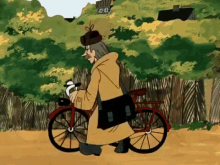
cách trực tiếp biết và hiểu đầy đủ về hình thức, Tỳ kheo, bằng cách
không phân biệt đối với nó và từ bỏ nó, một người có thể phá hủy đau
khổ; Bằng cách trực tiếp biết và hiểu đầy đủ cảm giác, Bhikkhus, bằng
cách không phân biệt đối với nó và từ bỏ nó, một người có vẻ tiêu diệt
đau khổ; Bằng cách trực tiếp biết và hiểu đầy đủ về nhận thức, Bhikkhus,
bằng cách sắp xếp lại đối với nó và từ bỏ nó, một người có thể phá hủy
đau khổ; Bằng cách trực tiếp biết và hiểu đầy đủ các công trình,
Bhikkhus, bằng cách sắp xếp lại đối với họ và từ bỏ họ, một người có thể
phá hủy đau khổ; Bằng cách trực tiếp biết và hiểu đầy đủ về ý thức,
Bhikkhus, bằng cách sắp xếp lại đối với nó và từ bỏ nó, một người có thể
phá hủy đau khổ.

pob cymdeithasau Aboriginaidd deffro yn taranau “Hum Procanch Prabuddha
Pabanchmay Karunge.” Bydd yn gwneud y byd prabuddha yn prabanch
wybod yn uniongyrchol ac yn deall yn llawn ffurf, Bhikkhus, trwy fynd
yn ddadleuol tuag ato a’i adael, mae un yn gallu dinistrio dioddefaint;
Trwy wybod yn uniongyrchol a deall yn llawn teimlad, Bhikkhus, trwy fynd
yn ddadleuol tuag ato a’i adael, mae un yn gallu dinistrio dioddefaint;
Trwy wybod yn uniongyrchol ac yn llwyr ddeall canfyddiad, Bhikkhus,
trwy fynd yn ddadleuol tuag ato a’i adael, mae un yn gallu dinistrio
dioddefaint; Trwy wybod yn uniongyrchol ac yn deall yn llawn
cystrawennau, Bhikkhus, trwy fynd yn ddiduedd tuag atynt a’u gadael, mae
un yn gallu dinistrio dioddefaint; Trwy wybod yn uniongyrchol ac yn
llwyr ddeall ymwybyddiaeth, Bhikkhus, trwy fynd yn ddadleuol tuag ato
a’i adael, mae un yn gallu dinistrio dioddefaint.

ngqo kunye nokuqonda okuqinisekileyo, uBhikkus, ngokuqinisekisa
ukuyishiya kwaye ayilahle, umntu uyakwazi ukutshabalalisa
ukubandezeleka; Ngokwazi ngqo kwaye ukuqonda ngokupheleleyo, uBhikkus,
ngokusikhuthaza kuyo aze ayilahle, umntu uyakwazi ukutshabalalisa
ukubandezeleka; Ngokwazi ngqo kunye nokuqonda okuqinisekileyo, uBhikkus,
ngokuqinisekisa ukuba aze ayilahle, umntu uyakwazi ukutshabalalisa
ukubandezeleka; Ngokwazi ngqo kunye nokuqonda okuqinisekileyo, uBhikkus,
ngokunyaniseka kubo kwaye ebashiya, umntu unako ukutshabalalisa
ukubandezeleka; Ngokwazi ngqo kunye nokuqonda okubonakalayo
ngokupheleleyo, i-Bhikkile, ngokukhuthaza ukuyiyeka kwaye ilahle, umntu
uyakwazi ukutshabalalisa ukubandezeleka.

אַבאָריגינאַל אַווייקאַנד סאַסייאַטיז טאַנדער “פראנצאַנאַנאַנטש
פּראַבודדהאַ פּראַפּאַנטשאַמייַ קאַרגן.” וועט מאַכן די וועלט
פּראַבודדהאַ פּראַפּאַנטש
דירעקט וויסן און גאָר פארשטאנד פאָרעם, בהיקאָשו, דורך באַקומען
דיספּיאַנאַאַטע צו אים און פארלאזן עס, מען איז ביכולת צו צעשטערן צאָרעס;
דורך דירעקט וויסן און גאָר פארשטאנד געפיל, בהיקאָשו, דורך געטינג
דיספּיאַנאַאַטע צו אים און פארלאזן עס, איינער איז ביכולת צו צעשטערן
צאָרעס; דורך דירעקט וויסן און גאָר פארשטאנד מערקונג, בהיקאָשו, דורך
באַקומען דיספּיאַנאַאַטע צו אים און פארלאזן עס, מען איז ביכולת צו
צעשטערן צאָרעס; דורך ריכטיק וויסן און גאָר פֿאַרשטיין קאַנסטראַקשאַנז,
בהיקאָשו, דורך באַקומען דיספּאַסאַנאַט צו זיי און פארלאזן זיי, איינער
איז ביכולת צו צעשטערן צאָרעס; דורך דירעקט וויסן און גאָר פארשטאנד
באוווסטזיין, בהיקאָשו, דורך באַקומען דיספּיאַנאַאַטע צו אים און פארלאזן
עס, איינער איז ביכולת צו צעשטערן צאָרעס.
this video I have talked about the three buddhist learning famously
known as Sutta Pitaka, Vinaya Pitaka and Abhidhamma Pitaka.
https://giphy.com/gifs/BIGI-TV-bigi-sukkot-q1enNXafnsH309aqeO

taara ati awọn oye kikun, bhikkhus, nipa gbigba di isọdi si rẹ ati kọ
wọn, ọkan ni anfani lati pa ijiya; Nipa taara mọ ati oye ni kikun,
Bhikkhus, nipa gbigba di isọdi si o yoo ran o, ọkan o le pa ijiya; Nipa
taara mọ ati pe o ni oye ni kikun, Bhikkhus, nipa gbigba dispaspateri si
o, ọkan ni anfani lati pa ijiya; Nipa taara mọ ati oye awọn ibugbe
gbogbogbo, Bhikkhus, nipa gbigba awọn si wọn ki o fi agbara silẹ, ọkan
ni anfani lati pa ijiya; Nipa taara ni mimọ ati ni oye mimọ ni kikun,
bhikkhus, nipa gbigba dispaspateri si o, ọkan ni anfani lati pa ijiya
naa.

Fendd Buddha, u-Ashoka watshala izihlahla ezithwala izithelo emhlabeni
wonke futhi esikhaleni.Mayawati ufuna lowo mthetho
ama-Aboriginal avuselelwa imiphakathi ukuduma “Hum Pranch Prabuddha
Prapachchmay Karunge.” Uzokwenza umhlaba uPrabuddha Prapech
ngokuqondile nangokuqonda kabusha ifomu, i-bhikkus, ngokuhambisa
dispassionate kulondolozwe futhi ukuyishiya, umuntu uyakwazi ukubhubhisa
ukuhlupheka; Ngokuqonda ngokuqondile nangokuqonda imizwa, uBhikKhus,
ngokuhlukanisa kulo futhi ukuwushiye, umuntu uyaphoqa ukuba abhubhise
ukuhlupheka; Ngokuqonda ngokuqondile nangokuqonda ngokugcwele ukuqonda,
i-bhikkus, ngokuhambisa dispassionate kuyo futhi uyishiye, umuntu
uyakwazi ukubhubhisa ukuhlupheka; Ngokuqonda ngokuqondile nokwakhiwa
okugcwele, i-bhikkushe ngokugcwele, ngokuhlukanisa kubo futhi bawashiye,
umuntu uyakwazi ukubhubhisa ukuhlupheka; Ngokuqonda ngokuqondile
nangokuqonda ngokugcwele ukwazi, i-bhikkushe, ngokuhambisa
i-dispassionate kuyo futhi uyishiye, umuntu uyakwazi ukubhubhisa
ukuhlupheka.

Posted by: site admin @ 7:10 am
𝓛𝓔𝓢𝓢𝓞𝓝 4124 Sun 17 Oct 2021
Aboriginal Awakened Societies Thunder ” Hum Prapanch Prabuddha
Prapanchmay karunge.” (We will make the whole world Prabuddha Prapanch
 Online Positive Universal Prabuddha Intellectuals Convention.
Online Positive Universal Prabuddha Intellectuals Convention.After Bath Practice Patanjali Yogic Meditation From 04:00 AM to 05:00 AM at
𝙆𝙪𝙨𝙝𝙞𝙣𝙖𝙧𝙖 𝙉𝙄𝘽𝘽Ā𝙉𝘼 𝘽𝙃𝙐𝙈𝙄 𝙋𝙖𝙜𝙤𝙙𝙖
18𝙛𝙩 𝘿𝙞𝙖. 𝙖 3𝘿 360 𝙙𝙚𝙜𝙧𝙚𝙚 𝙘𝙞𝙧𝙘𝙪𝙡𝙖𝙧 𝙋𝙖𝙜𝙤𝙙𝙖 𝙖𝙩
𝙒𝙝𝙞𝙩𝙚 𝙃𝙤𝙢𝙚,
668 5𝙩𝙝 𝘼 𝙈𝙖𝙞𝙣 𝙍𝙤𝙖𝙙,
8𝙩𝙝 𝘾𝙧𝙤𝙨𝙨, 𝙃𝘼𝙇 𝙄𝙄𝙄 𝙎𝙩𝙖𝙜𝙚,
𝙋𝙪𝙣𝙞𝙮𝙖 𝘽𝙃𝙐𝙈𝙄 𝘽𝙚𝙣𝙜𝙖𝙡𝙪𝙧𝙪,
𝙈𝙖𝙜𝙖𝙙𝙝𝙞 𝙆𝙖𝙧𝙣𝙖𝙩𝙖𝙠𝙖,
𝙋𝙧𝙖𝙗𝙪𝙙𝙙𝙝𝙖 𝘽𝙝𝙖𝙧𝙖𝙩 𝙄𝙣𝙩𝙚𝙧𝙣𝙖𝙩𝙞𝙤𝙣𝙖𝙡

𝙗𝙪𝙙𝙙𝙝𝙖𝙨𝙖𝙞𝙙2𝙪𝙨@𝙜𝙢𝙖𝙞𝙡.𝙘𝙤𝙢
𝙟𝙘𝙨4𝙚𝙫𝙚𝙧@𝙤𝙪𝙩𝙡𝙤𝙤𝙠.𝙘𝙤𝙢
𝙟𝙘𝙝𝙖𝙣𝙙𝙧𝙖𝙨𝙚𝙠𝙝𝙖𝙧𝙖𝙣@𝙮𝙖𝙝𝙤𝙤.𝙘𝙤𝙢
080-25203792
9449260443
9449835875
Spread the Words of Buddha from𝙝𝙩𝙩𝙥://𝙨𝙖𝙧𝙫𝙖𝙟𝙖𝙣.𝙖𝙢𝙗𝙚𝙙𝙠𝙖𝙧.𝙤𝙧𝙜, WhatApp, Telegram,Facebook, Twitter, more than 5000 Emails.
are the Arogya Rakshakas i.e., protectors of all living beings. They
get inside the man holes for that purpose. Many countries are using
suction trucks to clear dirt from the manholes. They are not very
costly. Only when some one from Arogya Rakshakas become the rulers the
purpose will be served.
Dickie have established a formidable reputation as a key supplier of
truck and trailer mounted sewer and drain Jet Cleaning Systems. Our
systems are custom designed to suit our customers requirements and
include a wide range of specialised sewer cleaning nozzles and
accessories to keep municipal sewers sanitary and storm sewer lines
clean and free flowing. The Ian Dickie Jet/ Sucker is able to jet the
pipe clean, bringing the debris back to the manhole. The Gully Sucker
then lifts and stores the debris in the vacuum tank until full. On
clearing the blockage the truck can then drive to the discharge site and
deposit the load.
Dickie have established a formidable reputation as a key supplier of
truck and trailer mounted sewer and drain Jet Cleaning Systems. Our
systems are cust…
தூய்மை பணியாளர்களின் நிலை - Give Respect | Humanity | Dhiravidan-Tv
PERCEPTION、BHIKKHUSをそれに向かって放棄し、それを放棄することによって直接知覚を知って完全に理解することによって、苦しみを破壊することができます。建造物、Bhikkhus、Bhikkhusを直接理解し、それらを放棄することによって、彼らを破壊することができる。意識を直接知っていて、意識を十分に理解することによって、

mangerti lan ngerti lengkap, yaiku Bhikkhus, kanthi mbuwang lan nilar,
mula bisa nyirnakake penderita; Kanthi mangerti lan ngerti lengkap, mula
Bhikkhus, kanthi mbuwang, banjur nilar, siji bisa nyirnakake penderita;
Kanthi ngerti langsung lan ngerti kanthi ngerti, Bhikkhus, kanthi
mbuwang lan nilar, mula bisa nyirnakake penderita; Kanthi mangerti lan
ngerti lengkap, “Bhikkhus, kanthi mbuwang wong-wong mau, banjur bisa
nyirnakake, wong liya bisa nyirnakake; Kanthi ngerti langsung lan
lengkap ngerti, Bhikkhus, kanthi ora sregep menyang dalan lan nilar,
siji bisa nyirnakake.

тікелей білу және толығымен түсіну, Бхиккххус, ол жаққа қарай иілу және
оны тастап, оны тастап кету арқылы қайғы-қасіретті жоюға қабілетті;
Тікелей білу және толығымен түсіну арқылы, Бхиккххус, ол жаққа қарай
итермелеп, оны тастап, азап шегуді жою арқылы; Қағазды тікелей білу және
толығымен түсіну, Бхиккххус, ол жаққа қарай итермелеп, оны тастап, оны
тастап кету арқылы азап шегуді жоя алады; Құрылыстарды тікелей білу және
толығымен түсіну, Бхиккххус, оларға ұнамды және оларды тастап, оларды
тастап кету арқылы қайғы-қасіретті жоюға қабілетті; Саналықты тікелей
білу және толығымен түсіну арқылы, Бхиккххус, ол жаққа қарай итермелеп,
оны тастап, оны тастап кету арқылы қайғы-қасіретті жоюға қабілетті.

Bhikkhus
ដោយទទួលបានការបែងចែកឆ្ពោះទៅរកវាហើយបោះបង់វាចោលមួយគឺអាចបំផ្លាញការឈឺចាប់បាន។
ដោយដឹងដោយផ្ទាល់និងការយល់ដឹងដោយផ្ទាល់និងការយល់ដឹងយ៉ាងពេញលេញ Bhikkhus
ដោយទទួលបានការបែងចែកឆ្ពោះទៅរកវាហើយបោះបង់ចោលវាគឺអាចនឹងបំផ្លាញទុក្ខវេទនា;
ដោយដឹងដោយផ្ទាល់និងការយល់ដឹងដោយផ្ទាល់ការយល់ឃើញ BHIKKHUS
ដោយទទួលបានការដាច់ប្រវតិ្តចំពោះវាហើយបោះបង់ចោលវាអាចបំផ្លាញការឈឺចាប់បាន។
ដោយដឹងដោយផ្ទាល់និងការយល់ដឹងពេញលេញសំណង់ Bhikkhus
ដោយទទួលបានការបែងចែកឆ្ពោះទៅរកពួកគេហើយបោះបង់ចោលពួកគេ,
មួយអាចបំផ្លាញការឈឺចាប់បាន;
តាមរយៈការស្គាល់ដោយផ្ទាល់និងការយល់ដឹងយ៉ាងពេញលេញនូវមនសិការលោក Bhikkhus
ដោយទទួលបានការបែកគ្នាឆ្ពោះទៅរកវាហើយបោះបង់វាចោលមួយគឺអាចបំផ្លាញការឈឺចាប់បាន។

yagaburiraga buddha, ashoka yateye imbuto zibyara imbuto kwisi kandi mu
kirere.mayawati arashaka ko iryo tegeko rishaka iryo tegeko
buryo butaziguye kandi bumva neza imiterere, Bhikkhus, mu gutera
amakimbirane kuri yo no kuyitererana, umuntu ashoboye gusenya imibabaro;
Mu buryo butaziguye kandi bwumva neza ibyiyumvo, mukangura amakimbirane
kuri yo no kuyitererana, umuntu ashoboye gusenya imibabaro; Mu buryo
butaziguye kandi bumva neza imyumvire, Bhikkhus, mu gutera amakimbirane
kuri yo no kuyitererana, umuntu ashoboye gusenya imibabaro; Mumenyera mu
buryo butaziguye kandi bwumva neza inyubako, Bhikkhus, mu kubaza kubata
kuri bo no kubatererana, umuntu ashoboye gusenya imibabaro; Mu buryo
butaziguye kandi bumva neza ubwenge, Bhikkhus, mu gutera amakimbirane
kuri yo no kuyitererana, umuntu ashoboye gusenya imibabaro.

 http://bit.ly/2RHI0vn
http://bit.ly/2RHI0vn http://www.ebsi.co.kr
http://www.ebsi.co.kr직접 알고 완전히 이해함으로써, 그것을 포기함으로써 낭비를 얻고 포기함으로써 고통을 파괴 할 수 있습니다. 바이 쿠스
(Bhikkhus)를 직접 알고 완전히 이해하고 완전히 이해하고 그것을 포기함으로써 고통을 파괴 할 수 있습니다. 지각,
Bhikkhus를 직접 알고 완전히 이해함으로써 낭비를 얻고 그것을 포기함으로써 고통을 파괴 할 수 있습니다. 구조물을 직접 알고
완전히 이해함으로써, Bhikkhus는 그들을 향해 낭독하고 그들을 포기함으로써 고통을 파괴 할 수 있습니다. 의식을 알고
완전히 이해함으로써, Bhikkhus는 그것을쪽으로 낭비하고 그것을 포기함으로써 고통을 파괴 할 수 있습니다.
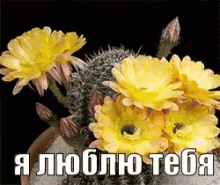
rasterast bi zanebûn û bi tevahî famkirina formê, Bhikkhus, bi
belavkirina li hember wê û dev ji xwe berdin, yek dikare êşê hilweşîne;
Bi rasterast û bi tevahî têgihîştina hest, Bhikkhus, bi belavkirina li
hember wê û hiştin ku ew berdan, yek dikare êşê hilweşîne; Bi rasterast û
bi tevahî têgihiştina têgihiştinê, Bhikkhus, bi belavkirina li hember
wê û berdana wê, yek dikare êşê hilweşîne; Bi rasterast û bi tevahî
têgihîştin, bi tevahî têgihîştin, Bhikkhus, bi belavkirina li hember wan
û dev ji wan berdin, yek dikare êşê hilweşîne; Bi rasterast û bi tevahî
têgihiştina hişmendiyê, Bhikkhus, bi belavkirina li hember wê û hiştin
ku ew ji holê rabikin, yek dikare êşê hilweşîne.

билип, толук түшүнүү менен, аны менен сүйлөшүү жана аны таштап, аны
таштап кетүү менен, азап-кайгы жок кыла алат; Сезимди түздөн-түз билип,
толук түшүнүү менен, аны көздөп, аны таштап, аны таштап кете берүү
менен, бир адам азап-кайгы жок кылууга болот; Чехкхусту түздөн-түз
билип, толугу менен билип, түшүнүү менен, ага жана аны таштап кетүү
менен, азап-кайгы жок кыла алат; Түздөн-түз билип, бхихкхусту, аларга
көз чаптырып, аларды таштап, аларды таштап, азап-кайгы жок кыла алат;
Аң-сезимди түздөн-түз билип, толугу менен билип, аны түшүнүп, ага жана
аны таштап, аны таштап, азап-кайгы жок кыла алат.

Bhikkhus, ໂດຍການປະຖິ້ມມັນແລະປະຖິ້ມມັນ, ຫນຶ່ງສາມາດທໍາລາຍຄວາມທຸກທໍລະມານ;
ໂດຍການຮູ້ໂດຍໂດຍກົງແລະເຂົ້າໃຈຄວາມຮູ້ສຶກຢ່າງເຕັມທີ່, bhikkhus,
ໂດຍການປະຖິ້ມມັນແລະປະຖິ້ມມັນ, ຫນຶ່ງແມ່ນສາມາດທໍາລາຍຄວາມທຸກທໍລະມານ;
ໂດຍການຮູ້ໂດຍກົງແລະເຂົ້າໃຈຄວາມຮັບຮູ້ຢ່າງເຕັມທີ່, Bhikkhus,
ໂດຍການປະຖິ້ມມັນແລະປະຖິ້ມມັນ, ຄົນຫນຶ່ງສາມາດທໍາລາຍຄວາມທຸກທໍລະມານໄດ້.
ໂດຍການຮູ້ໂດຍກົງແລະມີຄວາມເຂົ້າໃຈຢ່າງເຕັມສ່ວນ, Bhikkhus,
ໂດຍການອອກຈາກພວກເຂົາແລະປະຖິ້ມພວກເຂົາ, ສາມາດທໍາລາຍຄວາມທຸກທໍລະມານ;
ໂດຍການຮູ້ໂດຍໂດຍກົງແລະເຂົ້າໃຈສະຕິຢ່າງເຕັມສ່ວນ, Bhikkhus,
ໂດຍການປະຖິ້ມມັນແລະປະຖິ້ມມັນ, ຫນຶ່ງສາມາດທໍາລາຍຄວາມທຸກ.
with Bhante Devananda, the Abbot of Indiana Buddhist Temple. The Temple
is located at 7528 Thompson Road Hoagland, IN, USA. Phone:
260-447-5269. Facebook Page: Indiana Buddhist Temple. Website: www.indianabuddhistvihara.org. May all living beings be well and happy.
Sutta is the 32nd Sutta described in the Digha Nikaya (”Long Discourses
of Buddha”).The King Vessavana give the Buddha a poem for his
followers, male and female, monastic and lay, to recite for protection
from evil spirits.
Blessed One addressed the monks: “Learn by heart, monks, the Atanata
protection, constantly make use of it, bear it in mind. This Atanata
protection, monks, pertains to your welfare, and by virtue of it, monks
and nuns, laymen and laywomen may live at ease, guarded, protected, and
unharmed.” This the Blessed One said. Those monks glad at heart rejoiced
at the words of the Blessed One.
pavit Buddha, ashoka plantavit fructum afferentem arbores totus super
orbis terrarum et in space.mayawati velit quod regula
aboriginal excitavit societates tonitrua “Gloria propanch prabuddha
prapanchmay karunge.” Et faciam in mundum prabuddha prapanch
directe sciendum et plene intellectus formam, Bhikkhus per questus
dispassionate ad eam et deserens illud potest perdere doloris; Per
directe sciendum et plenius intellectus affectu, Bhikkhus per questus
dispassionate ad eam deserentem, unum est poterit perdere dolorem; Per
directe sciendum et plenius intellectus perceptio, Bhikkhus per questus
dispassionate ad eam desertum, qui possit perdere doloris; Per directe
sciendum et plenius intellectus constructiones, Bhikkhus per questus
dispassionate ad eos deserens, qui possit perdere doloris; Per directe
sciendum et plene intellectus conscientia Bhikkhus per questus
dispassionate ad eam et deserens illud potest perdere dolorem.
a trip with me back to Catholic school, then back even further to old
Rome. We’ll see what Latin pronunciation did - and did NOT - sound like
in the mouths of the Romans. Thanks to ancient authors and modern
Romance languages, we’ll even glimpse a range of evidence for the speech
of Caesar and pauper alike!
apzinoties un pilnībā izprast veidlapu, Bhikkhus, iegūstot klusumu pret
to un atsakoties no tā, var iznīcināt ciešanas; Tieši apzinoties un
pilnībā izprotot sajūtu, bhikkhus, kļūstot par to, un atceļot to, ir
atbilde, lai iznīcinātu ciešanas; Tieši zinot un pilnībā izprotot
uztveri, bhikkhus, kļūstot par to, un atceļot to, var iznīcināt
ciešanas; Tieši iepazinoties un pilnībā izprotot konstrukcijas,
bhikkhus, kļūstot par tiem, un atsakoties tos, var iznīcināt ciešanas;
Ar tieši zinot un pilnībā izprotot apziņu, bhikkhus, kļūstot par
izaicinājumu pret to un atteikties no tā, viens spēj iznīcināt ciešanas.
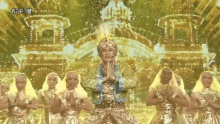
apzinoties un pilnībā izprast veidlapu, Bhikkhus, iegūstot klusumu pret
to un atsakoties no tā, var iznīcināt ciešanas; Tieši apzinoties un
pilnībā izprotot sajūtu, bhikkhus, kļūstot par to, un atceļot to, ir
atbilde, lai iznīcinātu ciešanas; Tieši zinot un pilnībā izprotot
uztveri, bhikkhus, kļūstot par to, un atceļot to, var iznīcināt
ciešanas; Tieši iepazinoties un pilnībā izprotot konstrukcijas,
bhikkhus, kļūstot par tiem, un atsakoties tos, var iznīcināt ciešanas;
Ar tieši zinot un pilnībā izprotot apziņu, bhikkhus, kļūstot par
izaicinājumu pret to un atteikties no tā, viens spēj iznīcināt ciešanas.
en direkter Wëssen a voll verstoen Form, bhikkkus, andeems en
d’Disassat er- zougeet, sou wann een net fäerten ze zerstéieren; Däin
fir eis drun eréi verstäerkt an voll ze verstoen huet sech dofir ze
verstoen, duerch et kréien an en ass net zerwéiert andeems se d
‘Andräich zerstéieren; Duerch d’Iwwerscheidenkeet a voll Verleegenheet
erreechen, ze kréien Bhikkhhh, andeems en Didassonat eranauschtert an
alles zerstéieren. 4 ënnent a ganz normal sinn a voll Nasskekzied,
andeems se se idkonateur kritt. Duerch d’Leedung ze weess a voll ze
bensionnéiere a voll ze wosst net d’Zeechnen an se ze ginn an ass e
komplett ze décken deem een gescheiden.
директно познавање и целосно разбирање на формата, Bhikkhus, со тоа што
ќе се откажеме кон него и напуштање на тоа, може да се уништи
страдањето; Со директно познавање и целосно разбирање на чувството,
Bhikkhus, со тоа што ќе се распадне кон него и напуштање на тоа, еден е
способен да ги уништи страдањата; Со директно познавање и целосно
разбирање на перцепцијата, Bhikkhus, со тоа што ќе се откаже од него и
напуштање на тоа, еден е способен да ги уништи страдањата; Со директно
познавање и целосно разбирање на конструкциите, БХККУ, со отстранување
на нив и напуштање на нив, еден е способен да ги уништи страдањата; Со
директно знаејќи и целосно разбирање на свеста, Bhikkhus, со тоа што ќе
се откажеме кон него и напуштање на тоа, може да се уништи страдањето.
Sutta Nipāta (literally, “Suttas falling down”) is a Buddhist
scripture, a sutta collection in the Khuddaka Nikaya, part of the Pali
Canon of Theravada Buddhism. All its suttas, thought to originate from
before the Buddha’s parinibbana, consist largely of verse, though some
also contain some prose. Some scholars believe that it describes the
oldest of all Buddhist practices. Others such as Bhikkhu Bodhi and K. R.
Norman agree that it contains much early material.
 If you would like to sponsor this channel and support the development of a small nun’s retreat hermitage:
If you would like to sponsor this channel and support the development of a small nun’s retreat hermitage: A deep thank you to all donors for your offerings of generosity in support of this channel and its intention.
A deep thank you to all donors for your offerings of generosity in support of this channel and its intention. ‘ to get notifications for new releases!
‘ to get notifications for new releases! 
As a Buddhist nun, my intention with this channel is to offer these
creative adaptations of spiritual teachings for the purpose of deepening
spiritual understanding, contemplation, meditation, healing, devotion
and relaxation for listeners. This channel is not monetized (and never
will be) and the videos are strictly for educational purposes,
not-for-profit and non-commercial.
“All the videos, songs, images, and graphics used in the video belong
to their respective owners and I or this channel does not claim any
right over them. This video is posted for educational and spiritual
purposes only.
Disclaimer under section 107 of the Copyright Act of 1976, allowance is
made for “fair use” for purposes such as criticism, comment, news
reporting, teaching, scholarship, education and research. Fair use is a
use permitted by copyright statute that might otherwise be infringing.”
a patron of Samaneri Jayasara - Wisdom of the Masters today: Get access
to exclusive content and experiences on the world’s largest membership
platform for artists and creators.

Fed Buddha, Ashoka dia namboly voankazo namoaka voankazo nanerana izao
tontolo izao sy tao amin’ny habakabaka.mayawati izany
societies Soconinal rehetra dia mifoha amin’ny kotroka “Hum propanch
prabuddha prapanchmay Karunge.” Dia hanao ny tontolo prabuddha prabuddha
prapanch
fahafantarana sy ny fomba mahatakatra sy ny fahatakarana feno,
Bhikkhus, amin’ny fanalavirana azy sy ny fandaozany azy dia mahavita
manimba ny fijaliana; Amin’ny fahafantarana sy ny fahatsapana
mahatakatra sy mahatakatra tsara, Bhikkhus, amin’ny fanalavirana azy io
ary mandao azy, dia tsy misy maharono ny fijaliana; Amin’ny
fahafantarana sy ny fahatakarana mivantana ny fahatsiarovan’i Bhikkhus, i
Bhikkhus, amin’ny fanalavirana azy sy ny fandaozany azy dia mahavita
manimba ny fijaliana; Amin’ny fahafantarana sy ny fahatakarana
mivantana, ny fanamboarana, ny Bhikkhus, amin’ny fanalavirana azy ireo
sy ny fandaozany azy ireo dia mahavita manimba ny fijaliana; Amin’ny
fahafantarana sy fahalalana tsara ny fahatsiarovan-tena, Bhikkhus,
amin’ny fanalavirana azy io sy ny fandaozany azy dia mahavita
mandringana ny fijaliana.

masyarakat yang dibangkitkan Aborigin Thunder “Hum Propanch Prabuddha
Prapanchmay Karunge.” Akan menjadikan dunia prabuddha prapanch
secara langsung mengetahui dan memahami sepenuhnya, Bhikkhu, dengan
mendapatkan persamaan ke arahnya dan meninggalkannya, seseorang dapat
memusnahkan penderitaan; Dengan mengetahui secara langsung dan memahami
sepenuhnya perasaan, Bhikkhu, dengan mendapatkan persamaan ke arahnya
dan meninggalkannya, seseorang itu akan memusnahkan penderitaan; Dengan
mengetahui secara langsung dan memahami sepenuhnya persepsi, Bhikkhu,
dengan tidak peduli terhadapnya dan meninggalkannya, seseorang dapat
memusnahkan penderitaan; Dengan mengetahui secara langsung dan memahami
sepenuhnya pembinaan, Bhikkhu, dengan mendapatkan persamaan ke arah
mereka dan meninggalkan mereka, seseorang dapat memusnahkan penderitaan;
Dengan mengetahui secara langsung dan memahami sepenuhnya kesedaran,
Bhikkhu, dengan mendapatkan persamaan ke arahnya dan meninggalkannya,
seseorang dapat memusnahkan penderitaan.

Aboriġinali kollha Aqwa Thunder “Hum Propany Prabuddha Prapanchmay
Karunge.” Se tagħmel id-dinja prabuddha prapach
tkun taf direttament u tifhem bis-sħiħ il-formola, Bhikkhus, billi
jkollok dispassionate lejh u l-abbandun tiegħu, wieħed jista ‘jeqred
it-tbatija; Billi tkun taf direttament u tifhem bis-sħiħ tħossok,
bhikkhus, billi jkollok dispassament lejnha u l-abbandun tiegħu, wieħed
jista ‘jeqred it-tbatija; Billi tkun taf direttament u tifhem bis-sħiħ
il-perċezzjoni, Bhikkhus, billi jkollok dispassionate lejh u l-abbandun
tiegħu, wieħed jista ‘jeqred it-tbatija; Billi tkun taf direttament u
tifhem bis-sħiħ il-kostruzzjonijiet, Bhikkhus, billi jkollok
dispassionate lejhom u l-abbandun tagħhom, wieħed huwa kapaċi jeqred
it-tbatija; Billi tkun taf direttament u tifhem bis-sħiħ il-kuxjenza,
Bhikkhus, billi jkollok dispassionate lejh u l-abbandun tiegħu, wieħed
jista ‘jeqred it-tbatija.

whangai a Sujata i Buddha, i whakatokia e Ashoka te hua i nga rakau
puta noa i te ao, i te waahi.mayawati e hiahia ana taua rangatiratanga
nga mahi whakatoi i ara ake i nga hapori whatitiri “Hum Paronch
Prabuddha Prapanchmay Karulnge.” Ka mahia e te ao Prabuddha Prapanch
te mohio me te tino mohio, te Bhikkhus, ma te kore e warewarehia, ka
mahue, ka taea e tetahi te whakangaro i nga mamae; Na te mohio me te
mohio ki te ngakau, a Bhikkhus, ma te kore e warewarehia, ka mawehe atu
tetahi ki te whakangaro i te mamae; Ma te mohio tika me te maarama ki te
tirohanga, a Bhikkhus, ma te kore e warewarehia, ka taea e tetahi te
whakangaro i nga mamae; Na te mohio tika me te tino mohio ki nga
hanganga, Bhikkhus, ma te whakarere ia ratou, ka mawehe atu tetahi, ka
taea e tetahi te whakangaro i te mamae; Ma te mohio tika me te maarama
ki te mohio, Bhikkhus, ma te kore e warewarehia, ka whakarerea, ka taea e
tetahi te whakangaro i te mamae.

сэрсэн бүх нийгэмлэгүүд аянга аянга “Hor Propance Prabudha Preapandmay
Karunge.” Дэлхийн prabuddha preanchanch хийх болно
бүрэн ойлгож, бүрэн ойлгож, үүнийг үл тоомсорлож, түүнийг орхиж,
түүнийг орхиж, түүнийг орхиж, нэг нь зовлонгоос зайлсхийх боломжтой;
Мэдээжийн хэрэг мэдрэмжийг шууд мэдэрч, БИККхус, үүнийг үл тоомсорлож,
түүнийг орхиж, түүнийг орхиж, түүнийг орхиж, түүнийг орхиж, зовлонг
устгах чадвартай. Тэнцвэр ойлголтыг шууд ойлгох, бүрэн ойлгож, үүнийг үл
тоомсорлож, түүнийг орхиж, түүнийг орхиж, түүнийг орхиж, нэг нь зовж
шаналах чадварыг устгах чадвартай; Барилгыг шууд мэдэх, БИККА, БИККА,
БИКАГРАГ, ХУВЬЦАА, ХҮНИЙГ ХҮРГЭЕ, НЭГ ХҮНИЙГ ХҮРГЭЕ, НЭГ НЭГ ХҮНИЙГ
ХҮРГЭЕ; Ухамсар, Бикххус, Бакххус, үүнийг үл тоомсорлож, түүнийг орхиж,
орхиж, түүнийг орхиж, түүнийг орхиж, нэг нь зовлонг устгах чадвартай.

သည် “အဓိက Bharat Bharat Baudhmmay Karunga” အဓိက Bharat Bharat Bharat
Bharat Bharat ။ (ဒီတိုင်းပြည်ကိုဗုဒ္ဓဘာသာ 0 င်လုပ်မယ်)
ANGAAKE ခံရသည့်လူ့အဖွဲ့အစည်းအားလုံးသည် Hum Propachch Prabuddha
Prapbanchmay Karunge ကိုမိုးကြိုးပစ်ခဲ့သည်။ ” ကမ္ဘာကြီးကို Prabuddha
Prapanch ကိုပြုလုပ်လိမ့်မည်
ရဟန်းတို့ခံစားမှုကိုနားလည်ခြင်းနှင့်စွန့်ခွာခြင်းအားဖြင့်ခံစားမှုကိုတိုက်ရိုက်နားလည်ခြင်းနှင့်အပြည့်အဝနားလည်ခြင်းဖြင့်ဆင်းရဲဒုက္ခများကိုဖျက်ဆီးပစ်နိုင်သည်။
ရဟန်းတို့ကိုအမှုဖွင့်ခြင်းနှင့်စွန့်ခွာခြင်းအားဖြင့်ကြည်လင်သောသိခြင်းကိုနားလည်ခြင်း,
ရဟန်းတို့တည်ဆောက်ခြင်းကိုအပြည့်အ 0
နားလည်ခြင်းနှင့်အပြည့်အဝနားလည်ခြင်းအားဖြင့်သူတို့ကိုစွန့်ပစ်ခြင်းနှင့်စွန့်ခွာခြင်းအားဖြင့်ဆင်းရဲဒုက္ခများကိုဖျက်ဆီးနိုင်သည်။
ရဟန်းတို့ဝိညာဏ်ကိုရှောင်။ ပယ်ရှင်းခြင်း,
စွန့်ပစ်ခြင်းကိုခံခြင်းအားဖြင့်,

77) Classical Norwegian-Klassisk norsk,
direkte å kjenne og fullt forståelse form, Bhikkhus, ved å bli
dispassionate mot det og forlate det, er en i stand til å ødelegge
lidelse; Ved å kjenne og fullt forståelig følelse, bhikkhus, ved å bli
dispassionate mot det og forlate det, kan man ødelegge lidelse; Ved å
kjenne og fullt forståelig forståelse, Bhikkhus, ved å bli dispassionate
mot det og forlate det, er en i stand til å ødelegge lidelse; Ved å
kjenne og fullt ut forståelse av konstruksjoner, Bhikkhus, ved å bli
dispassionate mot dem og forlate dem, er en i stand til å ødelegge
lidelse; Ved å kjenne og fullt ut forståelse av bevissthet, Bhikkhus,
ved å bli dispassionate mot det og forlate det, er en i stand til å
ødelegge lidelsen.

مستقیم ډول پوهیدل او د بشپړ پوهاوي ب form ه، ښخ عیکخس، د هغې په لور د
معافیت په ترلاسه کولو سره، یو څوک د دې توان لري چې د کړکېچ له مینځه وړ
شي. په مستقیم پوهیدلو او بشپړ پوهیدلو او بشپړ پوهیدو احساس سره، مالکیه د
هغې په لور د معافیت په ترلاسه کولو سره، یو څوک د رنځ له مینځه وړو لپاره
وړتیا لري. په مستقیم ډول د پوهې او د پوهاوي په اړه د پوهې په واسطه،
ښخکه، د هغې په لور د معافیت په ترلاسه کولو سره، یو څوک د دې توان لري چې د
کړکېچ له مینځه وړ شي. په مستقیم ډول پوهیدلو او د بشپړې پوهارانو
جوړښتونو لخوا، بشیکخرو د دوی په وړاندې بې ځایه کیدلو سره، یو څوک د دې
توان لري چې د کړکېچ له مینځه وړ شي. په مستقیم ډول پوهیدلو او بشپړ
پوهیدلو شعور، بش صلاحات د هغې په لور د معاف کیدو سره، د هغې پریښودو توان
لري چې د کړکېچ له مینځه وړ شي.

طور مستقیم به دانستن و کاملا درک فرم، Bhikkhus، با بی تردید نسبت به آن و
رها کردن آن، یکی قادر به نابودی رنج است؛ با به طور مستقیم شناخت و به
طور کامل درک احساس، Bhikkhus، با بی تردید نسبت به آن و رها کردن آن، یکی
از آن است که از بین بردن رنج؛ به طور مستقیم، به طور مستقیم درک و درک
کامل درک، Bhikkhus، با بی تردید نسبت به آن و رها کردن آن، یکی قادر به
نابودی رنج است؛ با به طور مستقیم دانستن و به طور کامل درک سازه ها،
Bhikkhus، با بی تردید نسبت به آنها و رها کردن آنها، یکی قادر به نابودی
رنج است؛ به طور مستقیم شناخت و کاملا درک آگاهی، Bhikkhus، با بی تردید
نسبت به آن و رها کردن آن، یکی قادر به نابودی رنج است.

Aborygenowe przebudzone społeczeństwa Thunder “Hum Propanc Prabuddha
Prapanchmay Karuge”. Zrobi świat Prabuddha Prapanch
wiedząc i w pełni zrozumienie formularza, Bhikkhus, stając się
niejednoznaczny na niego i porzucenie go, jeden jest w stanie zniszczyć
cierpienie; Poprzez bezpośrednio wiedząc i w pełni zrozumienie uczucia,
bhikkhus, stając się niejednoznaczny do niego i porzucenie go, jeden
jest w stanie zniszczyć cierpienie; Bezpośrednio wiedząc i w pełni
zrozumienie percepcji, Bhikkhus, stając się niejednoznaczny wobec niego i
porzucenie go, jeden jest w stanie zniszczyć cierpienie; Bezpośrednio
wiedząc i w pełni zrozumienie konstrukcji, Bhikkhus, stając się
niejednoznaczny wobec nich i porzucenie ich, jeden jest w stanie
zniszczyć cierpienie; Poprzez bezpośrednio wiedząc i w pełni zrozumienie
świadomości, Bhikkhus, stając się niejednoznaczny do niej i porzucenie
go, jeden jest w stanie zniszczyć cierpienie.

saber diretamente e totalmente entendendo a forma, Bhikkhus, ficando
desapaixonada em relação a ele e abandonando-a, é capaz de destruir o
sofrimento; Ao saber diretamente e entendendo completamente o
sentimento, Bhikkhus, obtendo desapaixonado em relação a ele e
abandonando-o, um deles é que a incômoda destruir o sofrimento; Ao
conhecer e compreender diretamente a percepção, Bhikkhus, sendo
desapaixonada em relação a ele e abandoná-lo, é capaz de destruir o
sofrimento; Ao saber diretamente e entendendo totalmente construções,
Bhikkhus, obtendo desapaixonado em relação a eles e abandonando-os, um é
capaz de destruir o sofrimento; Ao saber diretamente e entendendo
plenamente a consciência, Bhikkhus, sendo desapaixonada em relação a ele
e abandoná-lo, é capaz de destruir o sofrimento.
Série de áudios existia em um canal no You Tube chamado “Ouvindo o
Dhamma”, narrados por Pedro Fabrini, que continha muitos áudios com os
ensinamentos do Buda e as experiências dos monges ou adeptos do Budismo
Theravada. Este canal deixou de existir (não sei o motivo ainda..) e
muitas pessoas com deficiência visual ou com algum outro problema que
impeça de ler legendas (caso estes áudios existam legendados em vídeos
de outros canais) ficaram sem acesso a estes conhecimentos.
me cabe razão em acreditar que outro canal de ensinamentos do Buda,
colegiado ou algum Venerável pudesse ver implicações negativas na
difusão destes áudios dublados em português. São ensinamentos que quanto
mais propagados, mais chance de iluminar pessoas e são direcionados em
*exclusivo* para pessoas com deficiência visual (ou alguma outra
coordenação limitante) e para os adeptos que não tendo acesso à internet
de banda larga faz a opção por salvar o áudio para ter acesso
posteriormente.
haja a necessidade de remeter a fonte (depois que eu souber..), não
faço objeção alguma, até pelo contrário, quanto mais puder disseminar
canais com estes conhecimentos, assim farei.

cunoașterea directă a formei și a înțelegerii pe deplin înțelegere,
Bhikkhus, prin a fi disprețuit spre el și abandonându-l, unul este
capabil să distrugă suferința; Prin cunoașterea directă și înțelegerea
pe deplin înțelegere, Bhikkhus, prin a fi disprețuit spre el și
abandonându-l, unul este în măsură să distrugă suferința; Prin
cunoașterea directă și înțelegerea pe deplin a percepției, Bhikkhus,
prin a fi dispus de ea și abandonarea acestuia, unul este capabil să
distrugă suferința; Prin cunoașterea directă și înțelegerea completă a
construcțiilor, Bhikkhus, prin a fi dispus de ei și abandonarea
acestora, unul este capabil să distrugă suferința; Prin cunoașterea
directă și înțelegerea pe deplin a conștiinței, Bhikkhus, prin a fi
disprețuit spre el și abandonându-l, unul este capabil să distrugă
suferința.

знание и полное понимание формы, бхикхоуса, получая бессмысленность по
отношению к нему и отказаться от его, один способен разрушать страдания;
Непосредственно зная и полное понимание чувства, бхикхоуса, получая
бессмысленность по отношению к нему и отказаться от него, один может
уничтожить страдания; Непосредственно знание и полное понимание
восприятия, бхикхоуса, получая бессмысленность по отношению к нему и
отказаться от него, он способен разрушать страдания; Непосредственно
знание и полное понимание сооружений, бхикхоуса, путем беспробления по
отношению к ним и отказаться от них, один способен уничтожать страдания;
Непосредственно зная и полностью понимая сознание, бхикшу, получая
бессмысленное по отношению к нему и отказаться от него, один способен
разрушать страдания.

Posted by: site admin @ 6:35 pm
𝓛𝓔𝓢𝓢𝓞𝓝 4123 Sat 16 Oct 2021
Aboriginal Awakened Societies Thunder ” Hum Prapanch Prabuddha
Prapanchmay karunge.” (We will make the whole world Prabuddha Prapanch
 Online Positive Universal Prabuddha Intellectuals Convention.
Online Positive Universal Prabuddha Intellectuals Convention.After Bath Practice Patanjali Yogic Meditation From 04:00 AM to 05:00 AM at
𝙆𝙪𝙨𝙝𝙞𝙣𝙖𝙧𝙖 𝙉𝙄𝘽𝘽Ā𝙉𝘼 𝘽𝙃𝙐𝙈𝙄 𝙋𝙖𝙜𝙤𝙙𝙖
18𝙛𝙩 𝘿𝙞𝙖. 𝙖 3𝘿 360 𝙙𝙚𝙜𝙧𝙚𝙚 𝙘𝙞𝙧𝙘𝙪𝙡𝙖𝙧 𝙋𝙖𝙜𝙤𝙙𝙖 𝙖𝙩
𝙒𝙝𝙞𝙩𝙚 𝙃𝙤𝙢𝙚,
668 5𝙩𝙝 𝘼 𝙈𝙖𝙞𝙣 𝙍𝙤𝙖𝙙,
8𝙩𝙝 𝘾𝙧𝙤𝙨𝙨, 𝙃𝘼𝙇 𝙄𝙄𝙄 𝙎𝙩𝙖𝙜𝙚,
𝙋𝙪𝙣𝙞𝙮𝙖 𝘽𝙃𝙐𝙈𝙄 𝘽𝙚𝙣𝙜𝙖𝙡𝙪𝙧𝙪,
𝙈𝙖𝙜𝙖𝙙𝙝𝙞 𝙆𝙖𝙧𝙣𝙖𝙩𝙖𝙠𝙖,
𝙋𝙧𝙖𝙗𝙪𝙙𝙙𝙝𝙖 𝘽𝙝𝙖𝙧𝙖𝙩 𝙄𝙣𝙩𝙚𝙧𝙣𝙖𝙩𝙞𝙤𝙣𝙖𝙡

𝙗𝙪𝙙𝙙𝙝𝙖𝙨𝙖𝙞𝙙2𝙪𝙨@𝙜𝙢𝙖𝙞𝙡.𝙘𝙤𝙢
𝙟𝙘𝙨4𝙚𝙫𝙚𝙧@𝙤𝙪𝙩𝙡𝙤𝙤𝙠.𝙘𝙤𝙢
𝙟𝙘𝙝𝙖𝙣𝙙𝙧𝙖𝙨𝙚𝙠𝙝𝙖𝙧𝙖𝙣@𝙮𝙖𝙝𝙤𝙤.𝙘𝙤𝙢
080-25203792
9449260443
9449835875
Spread the Words of Buddha from𝙝𝙩𝙩𝙥://𝙨𝙖𝙧𝙫𝙖𝙟𝙖𝙣.𝙖𝙢𝙗𝙚𝙙𝙠𝙖𝙧.𝙤𝙧𝙜, WhatApp, Telegram,Facebook, Twitter, more than 5000 Emails.
Satipatthana Sutta” through this it is possible to change the mindset
of a person. This Satipatthana Sutta says how you can meditation.This
rule is not for any Buddhist community . It is for all human beings and
animals made of blood and flesh.
as sociedades espertadas aborígenas Thunder “Hum Prapanch Prabuddha
Prapanchmay Karunge”. (Faremos todo o mundo Prapanch Prabuddha
saber directamente e comprender plenamente a forma, Bhikkhus, que se
desapasiona cara a el e abandonándoo, é capaz de destruír o sufrimento;
Ao coñecer directamente e comprender plenamente o sentimento, Bhikkhus,
que se desapasiona cara a ela e abandonándoo, é capaz de destruír o
sufrimento; Ao coñecer directamente e comprender por completo a
percepción, Bhikkhus, que se desapasiona cara a el e abandonándoo, é
capaz de destruír o sufrimento; Ao coñecer directamente e comprender
plenamente as construcións, Bhikkhus, obtendo desapasionado cara a eles e
abandonándoos, un é capaz de destruír o sufrimento; Ao coñecer
directamente e comprender con conciencia, Bhikkhus, que se desapasiona
cara a el e abandonándoo, pódese destruír o sufrimento.
აბორიგენული გაღვიძებული საზოგადოება thunder “hum prapanch prabuddha
prapanchmay karunge.” (ჩვენ გავაკეთებთ მთელ მსოფლიოს Prabuddha Prapanch
იცის და სრულად გაგება ფორმა, Bhikkhus, მიერ მიღების dispassionate
მიმართ მასზე და მიტოვების მას, ერთი შეუძლია განადგურება ტანჯვა; უშუალოდ
იცის და სრულად გაგებით განცდა, ბიკუხუსი, მასზე dispassionate მიღებისას
და მას მიატოვებს, შეიძლება განადგურდეს ტანჯვა; პირდაპირ იცის და სრულად
გაგება აღქმა, Bhikkhus, მიღების dispassionate მიმართ მასზე და მიტოვებას
მას, შეუძლია განადგურება ტანჯვა; უშუალოდ იცის და სრულად გააზრებას
მშენებლობას, ბიკოცუსს, მათ მიმართ dispassionate მათ მიმართ და მიატოვებთ
მათ, ერთი შეუძლია განადგურება ტანჯვა; პირდაპირ იცის და სრულად გაგება
ცნობიერების, Bhikkhus, მიღების dispassionate მიმართ მასზე და მიტოვებული
მას, ერთი შეუძლია განადგურება ტანჯვა.
aboriginalen Gesellschaften Thunder “huming prapanch prabuddha
prapanchmay karunge”. (Wir werden die ganze Welt Prabuddha prapanch
machen
das direkt wissen und vollständige Verständnis von Form, Bhikkhus,
indem man dabei dagegen dabei lässt und es aufgibt, kann man Leiden
zerstören; Durch das direkt wissen und vollständige Verständnis des
Gefühls, Bhikkhus, indem man dabei dagegen dabei lässt und es aufgibt,
man kann das Leiden zerstören; Durch das direkt wissen und vollständige
Verständnis der Wahrnehmung, Bhikkhus, indem man dabei dagegen dabei
lässt und es aufgeben kann, kann man Leiden zerstören; Durch direktes
Kenntnis und vollständige Verständnis von Konstruktionen, Bhikkhus,
indem man sie an sie lässt und sie aufgibt, kann man Leiden zerstören;
Bhikkhus, indem man das Bewusstsein direkt zukissen und vollständig
verstehen, indem man dabei dabei ist und es aufgibt, es ist in der Lage,
das Leiden zu zerstören.
οι Αβορίγινες αφυπνισμένες κοινωνίες Thunder “Hum Prapanch Prabuddha
Prapanchmay Karunge”. (Θα κάνουμε ολόκληρο τον κόσμο prapanchha prapanch
άμεση γνώση και πλήρη κατανόηση της φόρμας, ο Bhikkhus, με την
αποπροσανατολισμό προς αυτήν και την εγκαταλείποντάς το, είναι σε θέση
να καταστρέψει το πόνο. Με την άμεση γνώση και την πλήρη κατανόηση του
συναίσθητου, τον Bhikkhus, με την αποπροσανατολισμό προς αυτήν και την
εγκαταλείποντάς το, είναι σε θέση να καταστρέψει το πόνο. Με την άμεση
γνώση και την πλήρη κατανόηση της αντίληψης, του Bhikkhus, με την
αποπροσανατολισμό προς αυτήν και την εγκαταλείποντάς το, είναι σε θέση
να καταστρέψει το πόνο. Με την άμεση γνώση και την πλήρη κατανόηση των
κατασκευών, του Bhikkhus, με την αποπροσανατολισμό τους και την
εγκατάλειψη τους, κάποιος είναι σε θέση να καταστρέψει το πόνο. Με την
άμεση γνώση και την πλήρη κατανόηση της συνείδησης, του Bhikkhus, με την
αποπροσανατολισμό προς αυτήν και την εγκαταλείποντάς το, είναι σε θέση
να καταστρέψει το πόνο.
dirèkteman konnen ak konplètman konprann fòm, Bhikkhus, pa resevwa
dispassionate nan direksyon pou li ak abandone li, yon sèl se kapab
detwi soufrans; Pa dirèkteman konnen ak konplètman konprann santi,
bhikkhus, pa resevwa dispassionate nan direksyon pou li ak abandone li,
se yon sèl se kapab detwi soufrans; Pa dirèkteman konnen ak konplètman
konprann pèsepsyon, Bhikkhus, pa jwenn dispassionate nan direksyon pou
li ak abandone li, yon sèl se kapab detwi soufrans; Pa dirèkteman konnen
ak konplètman konprann konstriksyon, bhikkhus, pa jwenn dispassionate
nan direksyon pou yo ak abandone yo, yon sèl se kapab detwi soufrans; Pa
dirèkteman konnen ak konplètman konprann konsyans, Bhikkhus, pa resevwa
dispassionate nan direksyon pou li ak abandone li, yon sèl se kapab
detwi soufrans.
matsalar rashin hankali ta farka “Hum Prapanch Probuddha Prapanchmay
Karunug.” (Za mu mai da duk duniya Prabuddha Prapanch
hanyar sanin kai tsaye da fahimta sosai, Bhikkhus, ta hanyar jawo shi
ya kuma yi watsi da shi, daya yana da ikon lalata wahala; Ta hanyar
sanin kai tsaye da fahimta sosai, Bhikkhus, ta hanyar jawo shi kuma
barin sa, daya yana da ikon lalata wahala; Ta hanyar sani da cikakken
fahimta, Bhikkhus, ta hanyar jawo wa gare ta da barin sa, wanda zai iya
lalata wahala; Ta hanyar sanin kai tsaye da fahimtar gine-gine,
Bhikkhus, ta hanyar yin watsi da su, kuma su rabu da su, daya zai iya
lalata wahala; Ta hanyar sanin kai tsaye da cikakken fahimta, ta hanyar
jawo shi da barin sa, daya yana da ikon lalata wahala.
hānaiʻo Sujata Fed Buddha,ʻo Ashoka i kanu i nā hua i kanu i nā lāʻau a
puni ka honua a ma ka papa’āina.mayawati makemake i kēlā rula.
nā wahi āpau āpau e ho’ālaʻia ai ka hekili he nui “hump prapanch
prapusdha prapanchmay.” (E hana mākou i ka honua holoʻokoʻa Prapusdha
Prapanch
kaʻike pololeiʻana a me kaʻike pihaʻana,ʻo Bhikkhus, ma ka hōʻikeʻana
iā ia a haʻalele iā ia, e hoʻopau i kaʻeha; e kaʻike pololeiʻana a me
kaʻike maopopoʻana i ka manaʻo,ʻo Bhikkhus, ma ka hanaʻana iā ia a
haʻalele, e hiki ai ke hoʻopau i kaʻeha; e kaʻike maopopoʻana a me ka
hoʻomaopopoʻana i kaʻikeʻana, bhikkhus, ma ka loaʻaʻana iā ia a
haʻalele, e hoʻopau ai i kaʻehaʻana; e kaʻike pololeiʻana a me kaʻike
pihaʻana,ʻo Bhikkhuus, ma ka hoʻokuʻuʻana iā lākou, e noho ana kekahi me
kaʻeha; Ma kaʻike pololeiʻana a me kaʻike maopopo loa,ʻo Bhikkhus, ma
ka loaʻaʻana iā ia a haʻalele i kaʻehaʻana.
ידי ידיעה ישירה והבנה מלאה טופס, Bhikkhus, על ידי מקבל נכבד כלפי אותו
לנטוש אותו, אחד הוא מסוגל להרוס סבל; על ידי ידיעה ישירה ולהבין את
ההרגשה, בהיק’קוס, על ידי מקבל מתוחכמת כלפי אותו ולנטוש אותו, אחד הוא
מסוגל להרוס סבל; על ידי ידיעה ישירה והבנה מלאה תפיסה, בהיק’וס, על ידי
מקבל נכבד כלפי אותו ולנטוש אותו, אחד הוא מסוגל להרוס סבל; על ידי ידיעה
ישירה והבנה מלאה מבנים, בהיק’וס, על ידי קבלת הזרחה כלפיהם ולנטוש אותם,
אחד הוא מסוגל להרוס סבל; על ידי ידיעה ישירה והבנה מלאה בתודעה, בהיק’וס,
על ידי קבלת הזריזות כלפי אותו ולנטוש אותו, אחד הוא מסוגל להרוס סבל.
Fed Buddh, Ashoka cog txiv hmab txiv ntoo coj los ua rau thoob ntiaj
teb thiab hauv qhov chaw.Maywati xav tau txoj cai ntawd.
tus aboriginal awakiven thunder “Hum Prapanch Prabuddha Prapanchmay
Karunge.” (Peb yuav ua kom tag nrho ntiaj teb Prabuddha Prapanch
ntawm kev paub ncaj qha thiab nkag siab tag nrho cov ntawv, Bhikkhus,
los ntawm kev mus txais kev txom nyem ntawm nws thiab tso tseg qhov kev
txom nyem; Los ntawm kev paub ncaj qha thiab nkag siab kev xav,
Bhikkhus, los ntawm kev mus txais kev txom nyem ntawm nws thiab tso tseg
nws, ib qho muaj peev xwm rhuav tshem kev txom nyem; los ntawm kev paub
ncaj qha thiab nkag siab tag nrho kev nkag siab, Bhikkhus, los ntawm
kev mus txais kev txom nyem ntawm nws, ib qho muaj peev xwm rhuav tshem
kev txom nyem; los ntawm kev nkag siab ncaj qha thiab nkag siab kev nkag
siab, Bhikkhus, los ntawm kev mus txais kev txom nyem ntawm lawv thiab
tso tseg lawv, ib qho muaj peev xwm rhuav tshem kev txom nyem; Los ntawm
kev paub ncaj qha thiab nkag siab meej nco qab, Bhikkhus, los ntawm kev
mus txais kev txom nyem ntawm nws thiab tso nws tseg, ib qho muaj peev
xwm rhuav tshem kev txom nyem.
aboriginális ébredő társadalmak Thunder “Hum Prapanch Prabuddha
Prapanchmay Karunge”. (Mi lesz az egész világ Prabuddha Prapanch
közvetlenül tudva és teljes mértékben megértő forma, Bhikkhus, azáltal,
hogy szétszóródj, és elhagyja azt, hogy elpusztíthatja a szenvedést;
Közvetlenül tudva és teljes mértékben megérti az érzés, Bhikkhus, hogy
szétszóródj, és elhagyja azt, hogy elpusztíthatja a szenvedést;
Közvetlenül tudva és teljes mértékben megérti az észlelés, a Bhikkhus,
hogy szétszóródj, és elhagyja azt, hogy elpusztíthatja a szenvedést;
Közvetlenül tudva és teljes mértékben megértő konstrukciók, Bhikkhus,
azáltal, hogy elnyeri őket, és elhagyja őket, az egyik képes
elpusztítani a szenvedést; A tudatosság, a Bhikkhus, a Bhikkhus
tudatosságának ismerete és teljesen megértése révén, és elhagyja azt, és
elhagyja azt, hogy elpusztíthatja a szenvedést.
Sutta was given by the Buddha with the intention of helping Venerable
Girimananda heal. Venerable Ananda learnt the 10 perceptions from the
Buddha and taught it to Venerable Girimanada when he was sick. It is
said that he instantly got healed.
A sincere thank you to all listeners and donors for your appreciative
comments and offerings of generosity in support of this channel and its
intention.
Thank you to everyone who has written to inquire about offering a
donation to express appreciation for this channel. You are welcome to do
so, and all offerings will go towards the development of a small
retreat hermitage for nuns.
if you prefer to make a bank deposit (or use alternatives like
Transferwise or Xoom) to Viveka Hermitage account, either
internationally or domestically, please contact us on the above email
address for account details.
As a Buddhist nun, my intention with this channel is to offer these
creative adaptations of spiritual teachings for the purpose of deepening
spiritual understanding, contemplation, meditation, healing, devotion
and relaxation for listeners. This channel is not monetized for profit
through YouTube advertising revenue, and never will be. All the videos
are strictly for educational purposes, not-for-profit and
non-commercial. If ads appear on some videos it is because the music
companies have the “right” to run ads for their profit if I have used
copyrighted music.
the words, music, images, and graphics used in the video belong to
their respective owners and I or this channel does not claim any right
over them. This video is posted for educational and spiritual purposes
only.
Disclaimer under section 107 of the Copyright Act of 1976, allowance is
made for “fair use” for purposes such as criticism, comment, news
reporting, teaching, scholarship, education and research. Fair use is a
use permitted by copyright statute that might otherwise be infringing.”
abhijāna sutta. beint að vita í klassíska íslensku klassíska íslensku
na ịmara na nghọta zuru oke, bhikkhus, site n’ịhapụ ya ma hapụ ya,
mmadụ nwere ike ibibi nhụjuanya; Site na ịmara na inwe nghọta zuru oke,
Bhikkhus, site n’ịhapụ ya ma hapụ ya, mmadụ nwere ike ibibi ahụhụ; Site
na ịmara na ịghọta nghọta zuru oke, Bhikkhus, site n’ịhapụ ya ma hapụ
ya, mmadụ nwere ike ibibi ahụhụ; Site na ịmara na nghọta zuru oke,
Bhikkhus, site n’ịhapụ ha ma gbahapụ ha, mmadụ nwere ike ibibi
nhụjuanya; Site na ịmara ma ghọta nghọta zuru oke, bhikkhus, site
n’ịhapụ ya ma hapụ ya, mmadụ nwere ike ibibi ahụhụ.

tentang asal usul manusia, darimana asal bahasa kita? Mungkinkah hal
seperti itu sebenarnya telah diketahui orang-orang dahulu kala dan
menceritakannya kepada kita, tetapi sengaja disembunyikan? Bisa jadi ada
kemungkinan itu.
tahun 1946, seorang pemuda Badui atau Badawi atau Bedouin, yakni sebuah
suku pengembara yang ada di Jazirah Arab, sedang menggembalakan domba di
pemukiman dekat Laut Mati. Suatu saat salah satu dombanya secara tidak
sengaja masuk ke dalam gua bernama gua Qumran dan tidak mau keluar.
terdengar suara benturan sesuatu seperti dolium atau bejana dari dalam
gua ketika batu itu dilempar. Si pemuda lalu masuk ke dalam gua dan
menemukan penemuan arkeologi terbesar abad ke-20.
Fed Buddha, Ashoka menanam pohon-pohon bantalan buah di seluruh dunia
dan di ruang angkasa. Mayawati menginginkan aturan itu.
masyarakat Aborigin Bangkit Guntur “Hum Prapanch Prabuddha Prapanchmay
Karunge.” (Kami akan membuat seluruh dunia Prabuddha Prapuddha
secara langsung mengetahui dan memahami sepenuhnya bentuk, bhikkhu,
dengan tidak memihak terhadapnya dan meninggalkannya, seseorang mampu
menghancurkan penderitaan; Dengan secara langsung mengetahui dan
memahami sepenuhnya perasaan, Bhikkhu, dengan tidak memihak terhadapnya
dan meninggalkannya, seseorang mampu menghancurkan penderitaan; Dengan
langsung mengetahui dan memahami persepsi, bhikkhu, dengan tidak memihak
terhadapnya dan meninggalkannya, seseorang mampu menghancurkan
penderitaan; Dengan secara langsung mengetahui dan memahami konstruksi
sepenuhnya, Bhikkhu, dengan melepaskan diri terhadap mereka dan
meninggalkan mereka, seseorang dapat menghancurkan penderitaan; Dengan
langsung mengetahui dan memahami sepenuhnya kesadaran, bhikkhu, dengan
tidak memihak terhadapnya dan meninggalkannya, seseorang mampu
menghancurkan penderitaan.
is a meditation on the teaching entitled “Pointing the Staff at the Old
Man” from the book - Advice from the Lotus Born - A Collection of
Padmasambhava’s Advice to the Dakini Yeshe Tsogyal and Other Close
Disciples. Translated by Eric Pema Kunsang.
Thank you to everyone who has written to inquire about offering a
donation to express appreciation for this channel. You are welcome to do
so, and all offerings will go towards supporting requisites and
overheads at a Buddhist nun’s hermitage.
if you prefer an alternative, such as bank transfer please contact us
on the above email address for account details.
A sincere thank you to all listeners and donors for your appreciative
comments and offerings of generosity in support of this channel and its
intention.
As a Buddhist nun, my intention with this channel is to offer these
creative adaptations of spiritual teachings for the purpose of deepening
spiritual understanding, contemplation, meditation, healing, devotion
and relaxation for listeners. This channel is not monetized for profit
through YouTube advertising revenue, and never will be. All the videos
are strictly for educational purposes, not-for-profit and
non-commercial. If ads appear on some videos it is because the music
companies have the “right” to run ads for their profit if I have used
copyrighted music.
the words, music, images, and graphics used in the video belong to
their respective owners and I or this channel does not claim any right
over them. This video is posted for educational and spiritual purposes
only.
Disclaimer under section 107 of the Copyright Act of 1976, allowance is
made for “fair use” for purposes such as criticism, comment, news
reporting, teaching, scholarship, education and research. Fair use is a
use permitted by copyright statute that might otherwise be infringing.”
fhoirm a fhiosrú go díreach agus a thuiscint go hiomlán, Bhikkhus, trí
dhíshuiteáil a dhéanamh air agus é a thréigean, tá sé in ann fulaingt a
scriosadh; Trí fhios a bheith agat go díreach agus tuiscint go hiomlán a
thuiscint, Bhikkhus, trí dhíshuiteáil a dhéanamh i dtreo é agus é a
thréigean, tá duine in ann fulaingt a mhilleadh; Trí dhearcadh go
díreach agus go hiomlán a thuiscint go hiomlán, Bhikkhus, trí
dhíshuiteáil a dhéanamh air agus é a dhíshealbhú, go bhfuil sé in ann
fulaingt a mhilleadh; Trí fhoirgníochtaí, Bhikkhus a thuiscint go
díreach agus a thuiscint go hiomlán trí dhíshuiteáil a dhéanamh orthu
agus iad a dhíshealbhú agus iad a thréigean, tá duine in ann fulaingt a
mhilleadh; Trí fhios a bheith agat go díreach agus tuiscint go hiomlán
ar Chonaic, Bhikkhus, trí dhíshealbhú a dhéanamh air agus é a thréigean,
go bhfuil sé in ann fulaingt a mhilleadh.
le società risvegliate aborigene Thunder “Hum Prapanch Prabuddha
Prapanchmay Karunge”. (Faremo il mondo intero Prabuddha Prapanch
e comprendendo direttamente la forma, la forma di Bhikkhus, diventando
spassionata verso di esso e abbandonandolo, si è in grado di distruggere
la sofferenza; Conoscendo e comprendendo completamente il sentimento,
Bhikkhus, diventando spassionati verso di esso e abbandonandolo, si è in
grado di distruggere la sofferenza; Conoscendo e comprendendo
direttamente la percezione, Bhikkhus, diventando spassionata verso di
esso e abbandonandolo, si è in grado di distruggere la sofferenza;
Conoscendo e comprendendo costantemente costruzioni, Bhikkhus,
diventando spassionata verso di loro e abbandonandoli, si è in grado di
distruggere la sofferenza; Conoscendo e conoscendo e comprendendo
pienamente la coscienza, Bhikkhus, diventando spassionata verso di esso e
abbandonandolo, uno è in grado di distruggere la sofferenza.
Mindful Swimming is the best of all sports for peace of mind, happiness
and welfare to attain Eternal Bliss as Final Goal. Convert all water
bodies in the world as swimming pools.
to Grow Vegetables Indoors in a Pot. Part of the series: Indoor
Gardening. Potting a vegetable and growing it indoors gives you better
control over the g…
out the 21 most popular social media sites today. Some will be
familiar, others may not. Discover some that might be great for your
brand but that you have yet to explore.
you are a seasoned social media marketer, a marketer looking to venture
into social media marketing, or a business owner looking to leverage on
social media, it’s helpful to know the most popular social media sites
around. This will allow you to maximize your brand reach on social
media, engage with the right people, and achieve your social media
goals.
isn’t only about the size of the social media sites. It’s also whether
the social media site is a right fit for your business and you. Does it
fit your brand image? Is your target audience using that social media
site? How many social media sites can you manage at once?
make things easier for you, I did some research and compiled
information about the 21 top social media sites in 2018. Some will be
familiar to you, others might sound foreign to you. It might be worth
reading more about the social media sites that might be great for your
brand but that you have not explored.
is the biggest social media site around, with more than two billion
people using it every month. That’s almost a third of the world’s
population! There are more than 65 million businesses using Facebook
Pages and more than six million advertisers actively promoting their
business on Facebook, which makes it a pretty safe bet if you want to
have a presence on social media.
easy to get started on Facebook because almost all content format works
great on Facebook — text, images, videos, live videos, and Stories. But
note that the Facebook algorithm prioritizes content that sparks
conversations and meaningful interactions between people, especially
those from family and friends. If you want to learn more about
succeeding with the updated Facebook algorithm, Brian Peters, our
Strategic Partnership Marketer, shared the secrets of the new algorithm
and what you can do to thrive on Facebook.
is a video-sharing platform where users watch a billion hour of videos
every day. To get started, you can create a YouTube channel for your
brand where you can upload videos for your subscribers to view, like,
comment, and share.
being the second biggest social media site, YouTube (owned by Google)
is also often known as the second largest search engine after Google.
(So if you want your brand to be on YouTube, I would recommend reading
up on YouTube SEO.)
is a messaging app used by people in over 180 countries. Initially,
WhatsApp was only used by people to communicate with their family and
friends. Gradually, people started communicating with businesses via
WhatsApp. (When I was in Bangkok to buy a new suit, I communicated with
the tailor via WhatsApp.)
has been building out its business platform to allow businesses to have
a proper business profile, to provide customer support, and to share
updates with customers about their purchases. For small businesses, it
has built the WhatsApp Business app while for medium and large
businesses, there’s the WhatsApp Business API. Here are some stories of
how businesses have been using WhatsApp.
used to be a messaging feature within Facebook, and since 2011,
Facebook has made Messenger into a standalone app by itself and greatly
expanded on its features. Businesses can now advertise, create chatbots,
send newsletters, and more on Messenger. These features have given
businesses a myriad of new ways to engage and connect with their
customers.
grew from a messaging app, just like WhatsApp and Messenger, into an
all-in-one platform. Besides messaging and calling, users can now use
WeChat to shop online and make payment offline, transfer money, make
reservations, book taxis, and more.
is most popular in China and some parts of Asia. If you are doing
business in those areas (where social media platforms like Facebook are
banned), WeChat could be a good alternative.
is a photo and video sharing social media app. It allows you to share a
wide range of content such as photos, videos, Stories, and live videos.
It has also recently launched IGTV for longer-form videos.
a brand, you can have an Instagram business profile, which will provide
you with rich analytics of your profile and posts and the ability to
schedule Instagram posts using third-party tools.
is an instant messaging platform that is extremely popular among young
Chinese. (It is used in 80 countries and also available in many other
languages.) Besides its instant messaging features, it also enables
users to decorate their avatars, watch movies, play online games, shop
online, blog, and make payment.
have to admit I don’t know much about QQ but Carrie Law from ClickZ has
written a helpful brief introduction to QQ for marketers. It seems that
while QQ, a desktop-native platform, used to be the top social media
platform in China, WeChat, a messaging app from the same parent company,
has taken over its place.
is a microblogging and social networking site for sharing text, photos,
links, videos, audios, and more. People share a wide range of things on
Tumblr from cat photos to art to fashion.
the surface, a Tumblr blog can look just like any other websites. So
many blogs that you come across online might be using Tumblr!
is another popular social networking platform based in China, where
users can upload multimedia, write blogs, play games, and decorate their
own virtual spaces.
to several people on Quora, Qzone seems to be more popular among
teenagers (while WeChat is more popular among adults). But the rise of
mobile-based platforms like WeChat seemed to have caused a decline in
popularity of desktop-based platforms like Qzone.
Tok (also known as Douyin in China) is a rising music video social
network. It was the world’s most downloaded app in the first quarter of
2018, beating Facebook, Instagram, and other social media apps.
initial impression is that it looks like Instagram for short music
videos (though I’m sure it’s more than that). Users can record videos up
to 60 seconds, edit them, and add music and special effects.
Weibo is often known as Twitter for Chinese users (since Twitter is
banned in China). It has features similar to Twitter — 140-character
microblogging, uploading of photos and videos, commenting, and
verification of accounts.
you would like to learn more about Sina Weibo, What’s on Weibo, a
social trends reporting site, wrote a helpful short introduction to Sina
Weibo.
is a social media site for news, entertainment, sports, politics, and
more. What makes Twitter different from most other social media sites is
that it has a strong emphasis on real-time information — things that
are happening right now. For example, one of the defining moments in the
Twitter history is when Janis Krums tweeted the image of a plane that
landed in the Hudson River when he was on the ferry to pick the
passengers up.
unique characteristic of Twitter is that it only allows 280 characters
in a tweet (140 for Japanese, Korean, and Chinese), unlike most social
media sites that have a much higher limit.
is also often used as a customer service channel. According to
advertisers on Twitter, more than 80 percent of social customer service
requests happen on Twitter. And Salesforce calls Twitter “the New 1-800
Number for Customer Service“. There are many social media customer
service tools, such as Buffer Reply, available now to help you manage
social customer service conversations.
also known as the front page of the Internet, is a platform where users
can submit questions, links, and images, discuss them, and vote them up
or down.
subreddits (i.e. dedicated forums) for pretty much anything under the
sun (and above). Subreddits, however, have different levels of
engagement so it’s great to research to see if there are popular
subreddits that your brand can be part of. For example, r/socialmedia
tends to be pretty quiet so we are rarely on Reddit.
submitting your content to Reddit and participating in discussions, you
can also find content ideas and advertise on Reddit.
Tieba is a Chinese online forum created by Baidu, the largest Chinese
search engine in the world. My interpretation of Wikipedia’s description
is that Baidu Tieba seems to be similar to Reddit, where users can
create a forum thread on any topic and interact with one another.
is now more than just a resume and job search site. It has evolved into
a professional social media site where industry experts share content,
network with one another, and build their personal brand. It has also
become a place for businesses to establish their thought leadership and
authority in their industry and attract talent to their company.
also offers advertising opportunities, such as boosting your content,
sending personalized ads to LinkedIn inboxes, and displaying ads by the
side of the site.
the surface, Viber is quite similar to major social messaging apps such
as WhatsApp and Messenger. It allows users to send messages and
multimedia, call, share stickers and GIFs, and more.
Viber presents many more opportunities for businesses. As a business,
you can buy ads, promote your brand through stickers, engage your
community, display your products in the shopping section, and provide
customer service.
is a social media app that focuses on sharing photos and short videos
(as known as snaps) between friends. It made the Stories format popular,
which eventually proliferated on other social media platforms like
Instagram. But the rise of Instagram Stories seemed to have hindered
Snapchat’s growth and marketers’ interest in using Snapchat for their
brands in general.
you are not familiar with Snapchat, here’s our beginner’s guide to
Snapchat. Or if you are undecided between Snapchat and Instagram, we
wrote a little comparison of Snapchat and Instagram for brands.
is a place where people go to discover new things and be inspired,
quite unlike most social media sites where engagement is the primary
focus. According to Pinterest, 78 percent of users say that content on
Pinterest from brands are useful (much higher than that on other sites).
This gives your brand an unique opportunity to shape their purchasing
decisions.
users want to be inspired to try or buy new things, having a presence on
Pinterest could help put your brand on their minds. Here are some tips
on using Pinterest for business that the Pinterest team shared with us.
is a multi-purpose social messaging app that allows users to message,
share stickers, play games, make payments, request for taxis, and shop
online. It is the most popular messaging app in Japan and is also
popular in other areas in Asia.
are several ways brands can make use of Telegram, besides providing
one-on-one customer support. For example, brands can create chatbots for
the Telegram platform or make use of Telegram’s channel feature to
broadcast messages to an unlimited number of subscribers.
is an online publishing platform with a social network element. It’s
free to publish on Medium and free to read most articles. Some articles
are reserved for only paying members.
publishing original content on Medium, it’s quite common for brands to
republish their blog posts from their company blog onto Medium to extend
their reach. (That’s what we’re doing here at Buffer.)
you want to experiment with Medium, we wrote a guide to Medium for
marketers and a blog post on the nine strategies we tried on Medium.
of the size of the social media sites, it’s most important to consider
whether your brand’s target audience is active on those social media
sites. That said, larger social media sites, like Facebook, tends to
cover a wide range of interests and topics, which makes it suitable for
most brands.
Buffer Publish lets you schedule social media posts to six of these 21
social media sites — Facebook, Instagram, Twitter, LinkedIn, and
Pinterest. If you want to manage more than one social media accounts on
any of these six, we would love for you to try it for free for 14 days
and experience what it can do for your business.
The list of top 22 social media sites is compiled by Statista. The
respective monthly active users number was taken from the following
websites: Facebook (as of June 30, 2018), YouTube (as of July 20, 2018),
WhatsApp (as of January 31, 2018), Messenger (as of February 1, 2018),
WeChat (as of August 15, 2018), Instagram (as of June 20, 2018), QQ (as
of March 2017), Tumblr (estimated as of July 2018), Qzone (as of March
2017), Tik Tok (as of June 2018), Sina Weibo (as of December 2017),
Twitter (as of July 27, 2018), Reddit (as of November 12, 2017), Baidu
Tieba (estimated as of July 2018), LinkedIn (as of July 2018), Viber
(estimated as of July 2018), Snapchat (estimated as of July 18, 2018),
Pinterest (as of September 10, 2018), Line (as of October 26, 2017),
Telegram (as of March 2018), and Medium (estimated as of December 14,
2016).
the most popular social media sites will allow you to maximize your
brand reach on social media, engage with the right people, and achieve
your social media goals.
— Get your free influencer media kit template and discover the steps to
creating a killer media kit for your influencer brand or business!
is the All-In-One integrated marketing platform for small businesses,
to grow your business on your terms. It’s easy to use - start for free
— The reality, though? Social media optimization (SMO) is an entirely
different ballgame. Because while businesses at large are on board
10mb per message. However, GroupMail allows you to configure your
sending to remain within the Gmail guidelines. So, you can send your
bulk email over a number of days so that you never exceed that 100
message per day quota. View our step-by-step tutorial to set-up your
Gmail sending account within GroupMail.
marketing is the process of advertising any kind of good or service to
potential consumers via digital strategies. From articles and videos to
podcasts and infographics, online marketers figure out the most
strategic ways to reach their target audience while focusing on
delivering quality information.
Phone Number is a service for receiving SMS messages and voice mails
online. Select a phone number from the list and get verification code
(OTP) instantly. These numbers are strictly for testing and educational
purpose. All the SMS received online will be displayed to everyone. Be
careful when sending sensitive information.
a social media management tool that gives you content. You will never
run out of ideas, or content, since you can choose from thousands of
ready made content just waiting for you to drop your logo on it and make
it your own. Now, save this post so you never run out of ideas again!
70 Killer Content Ideas To Post On Social Media. 1.

|
How many languages are there in the world?
When
a just born baby is kept isolated without anyone communicating with the baby, after a few days it will speak and human natural (Prakrit) language known as Classical Magahi Magadhi/Classical Chandaso language/Magadhi Prakrit,Classical Hela Basa (Hela Language),Classical Pāḷi which are the same. Buddha spoke in Magadhi. All the 7,139 languages and dialects are off shoot of Classical Magahi Magadhi. Hence all of them are Classical in nature (Prakrit) of Human Beings, just like all other living speices have their own natural languages for communication. 117 languages are translated by https://translate.google.comin
15) Classical Basque- Euskal klasikoa,
16) Classical Belarusian-Класічная беларуская,
17) Classical Bengali-ক্লাসিক্যাল বাংলা,
18) Classical Bosnian-Klasični bosanski,
19) Classical Bulgaria- Класически българск,
|
Posted by: site admin @ 4:53 pm
𝓛𝓔𝓢𝓢𝓞𝓝 4122 Fri 15 Oct 2021
Aboriginal Awakened Societies Thunder ” Hum Prapanch Prabuddha
Prapanchmay karunge.” (We will make the whole world Prabuddha Prapanch
 Online Positive Universal Prabuddha Intellectuals Convention.
Online Positive Universal Prabuddha Intellectuals Convention.After Bath Practice Patanjali Yogic Meditation From 04:00 AM to 05:00 AM at
𝙆𝙪𝙨𝙝𝙞𝙣𝙖𝙧𝙖 𝙉𝙄𝘽𝘽Ā𝙉𝘼 𝘽𝙃𝙐𝙈𝙄 𝙋𝙖𝙜𝙤𝙙𝙖
18𝙛𝙩 𝘿𝙞𝙖. 𝙖 3𝘿 360 𝙙𝙚𝙜𝙧𝙚𝙚 𝙘𝙞𝙧𝙘𝙪𝙡𝙖𝙧 𝙋𝙖𝙜𝙤𝙙𝙖 𝙖𝙩
𝙒𝙝𝙞𝙩𝙚 𝙃𝙤𝙢𝙚,
668 5𝙩𝙝 𝘼 𝙈𝙖𝙞𝙣 𝙍𝙤𝙖𝙙,
8𝙩𝙝 𝘾𝙧𝙤𝙨𝙨, 𝙃𝘼𝙇 𝙄𝙄𝙄 𝙎𝙩𝙖𝙜𝙚,
𝙋𝙪𝙣𝙞𝙮𝙖 𝘽𝙃𝙐𝙈𝙄 𝘽𝙚𝙣𝙜𝙖𝙡𝙪𝙧𝙪,
𝙈𝙖𝙜𝙖𝙙𝙝𝙞 𝙆𝙖𝙧𝙣𝙖𝙩𝙖𝙠𝙖,
𝙋𝙧𝙖𝙗𝙪𝙙𝙙𝙝𝙖 𝘽𝙝𝙖𝙧𝙖𝙩 𝙄𝙣𝙩𝙚𝙧𝙣𝙖𝙩𝙞𝙤𝙣𝙖𝙡

𝙗𝙪𝙙𝙙𝙝𝙖𝙨𝙖𝙞𝙙2𝙪𝙨@𝙜𝙢𝙖𝙞𝙡.𝙘𝙤𝙢
𝙟𝙘𝙨4𝙚𝙫𝙚𝙧@𝙤𝙪𝙩𝙡𝙤𝙤𝙠.𝙘𝙤𝙢
𝙟𝙘𝙝𝙖𝙣𝙙𝙧𝙖𝙨𝙚𝙠𝙝𝙖𝙧𝙖𝙣@𝙮𝙖𝙝𝙤𝙤.𝙘𝙤𝙢
080-25203792
9449260443
9449835875
Spread the Words of Buddha from
𝙝𝙩𝙩𝙥://𝙨𝙖𝙧𝙫𝙖𝙟𝙖𝙣.𝙖𝙢𝙗𝙚𝙙𝙠𝙖𝙧.𝙤𝙧𝙜, WhatApp, Telegram,Facebook, Twitter, more than 5000 Emails.
life Buddha-Thus have I heardThis animation movie is about the life of
Buddha based on Pali Canon (Theravada Buddhism) and other commentaries.
It wa…
-
08) Classical Afrikaans– Klassieke Afrikaans
Abhijāna sutta- Direk weet -in klassieke Afrikaans-Klassieke AfrikaansDoen goed skoonmaak - pad na ewige saligheidDoen bewus van swemHonger is die ergste soort siekte het een gesêGroei broccoli, peper, komkommer, bone in potte.Sujata Fed Boeddha, Ashoka geplant vrugte dra bome oor die hele wêreld en in die ruimte. Mayawati wil die reël.Dr B.R.AMBEDKAR donder “Main Bharat Baudhmay Karunga.” (Ek sal hierdie land Boeddhisties maak)Alle
Aboriginal ontwaakte samelewings Thunder “Hum Papanch Prabuddha
prapanchmay Karunge.” (Ons sal die hele wêreldprobuddha prapanch maakAbhijāna sutta- Direk weet -in klassieke Afrikaans-Klassieke AfrikaansBoeddha-in sy eie woordeDeur
direk te ken en volledig te verstaan, Bhikkhus, deur onbevoegdheid
daaraan te kry en dit te laat vaar, kan mens lyding vernietig; Deur
direk te weet en ten volle te verstaan, Bhikkhus, deur onbevoegdheid
daaraan te kry en dit te laat vaar, kan mens lyding vernietig; Deur
direk te ken en te verstaan, verstaan die persepsie, Bhikkhus, deur
onvoldoende daaraan te kry en dit te verlaat, kan mens lyding vernietig;
Deur direk te ken en konstruksies te verstaan, bhikkhus, deur
onbevoegdheid teenoor hulle te kry en hulle te laat vaar, kan mens
lyding vernietig; Deur die bewussyn te ken en ten volle te verstaan,
bhikkhus, deur diselionaat daaraan te kry en dit te laat vaar, kan mens
lyding vernietig.
youtube.comINDLAMU Kwazulu Natal Best Zulu Dance (Must Watch)
gjitha shoqëritë aborigjene të zgjuara Thunder “Hum Prapanch Prapanch
Prapanchmay Karunge.” (Ne do të bëjmë të gjithë botën Prapanch Prapanch
e ditur dhe plotësisht të kuptuarit e formës së kuptimit, Bhikkhus,
duke u larguar ndaj tij dhe duke e braktisur atë, një është në gjendje
të shkatërrojë vuajtjet; Duke e ditur dhe duke kuptuar plotësisht
ndjenjën, Bhikkhus, duke u larguar ndaj saj dhe duke e braktisur atë,
një është në gjendje të shkatërrojë vuajtjet; Duke e ditur dhe duke
kuptuar plotësisht perceptimin e plotë, Bhikkhus, duke u shpërndarë ndaj
saj dhe duke e braktisur atë, një është në gjendje të shkatërrojë
vuajtjet; Duke e ditur dhe plotësisht të kuptuarit e ndërtimeve,
Bhikkhus, duke u larguar ndaj tyre dhe duke i braktisur ata, një është
në gjendje të shkatërrojë vuajtjet; Duke e ditur dhe plotësisht të
kuptuarit e vetëdijes, Bhikkhus, duke u larguar ndaj saj dhe duke e
braktisur atë, një është në gjendje të shkatërrojë vuajtjet.
በማወቅ እና ሙሉ በሙሉ በማወቅ እና ሙሉ በሙሉ በማወቅ እና ሙሉ በሙሉ በመግደል እና ለመተው, አንድ ሰው መከራን
ሊያጠፋ ይችላል. በቀጥታ በማያውቁ እና በተሟላ ማስተዋል, ቢኪኪኪስ, ወደ እሱ በመላክ እና መተው, አንድ ሰው
መከራን ሊያጠፋ ይችላል. በቀጥታ በማያውቁ እና በተሟላ ማስተዋል, ቢኤኪኪስ, ወደ እሱ በመላክ እና መተው, አንድ
ሰው መከራን ሊያጠፋ ይችላል. ሙሉ በሙሉ በማወቅ, ቢኤኪኪስ, ሙሉ በሙሉ በማወቅ እና ሙሉ በሙሉ በማወቅ እና
በተግባራዊነት በመግደል እና እነሱን በመተው መከራን ሊያጠፋ ይችላል, በቀጥታ ሲያውቁ እና ሙሉ በሙሉ በማወቅ እና
እሱን በመግደል እና ለመተው እና እሱን በመተው መከራን ማጥፋት ይችላል.
خلال معرفة النموذج بشكل مباشر والتفاهم الكامل، Bhikkhus، من خلال الحصول
على الخفافيش نحو ذلك والتخلي عنه، أحدهما قادر على تدمير المعاناة؛ من
خلال معرفة الشعور بشكل مباشر والتفهم الكامل، بهيكهوس، من خلال الحصول على
الخفافيش نحو ذلك والتخلي عنها، أحدهما قادر على تدمير المعاناة؛ من خلال
معرفة الإدراك بشكل مباشر وفهم التصور الكامل، Bhikkhus، من خلال الحصول
على الخفافيش نحو ذلك والتخلي عنه، أحدهما قادر على تدمير المعاناة؛ من
خلال معرفة الإنشاءات بشكل مباشر والتفاهم الكامل، بهيكهوس، من خلال الحصول
على الخفافيش نحوهم والتخلي عنها، أحدهما قادر على تدمير المعاناة؛ من
خلال معرفة الوعي بشكل مباشر وفهم الكاملة، Bhikkhus، من خلال الحصول على
الخفافيش نحو ذلك والتخلي عنه، أحد قادر على تدمير المعاناة.
աբորիգեն արթնացած հասարակությունները Thunder «Hum Prapanch Prabuchdha
prapanchmay karunge»: (Մենք կդարձնենք ամբողջ աշխարհը Prabuddha Prapanch-
ը
իմանալով եւ լիովին հասկանալով ձեւը, Բհիկխուսը, վշտանալով դրանով եւ
լքելով այն, մեկը ի վիճակի է ոչնչացնել տառապանքը. Ուղղակի իմանալով եւ
լիովին հասկանալով զգալով, Բհիկխուսը, վշտանալով դրանով եւ հրաժարվելով
այն, մեկը ի վիճակի է ոչնչացնել տառապանքը. Ուղղակի իմանալով եւ լիովին
հասկանալով ընկալումը, Բհիկխուսը, վշտանալով դրանով եւ հրաժարվելով այն,
մեկը ի վիճակի է ոչնչացնել տառապանքը. Ուղղակիորեն իմանալով եւ լիովին
հասկանալով շինությունները, Բհիկխուսը, նրանց նկատմամբ թուլանալով եւ
լքելով նրանց, մեկը ի վիճակի է տառապանքը ոչնչացնել. Ուղղակի իմանալով եւ
լիովին հասկանալով գիտակցությունը, Բհիկխուսը, վշտացնելով դրանով եւ
հրաժարվելով այն, մեկը ի վիճակի է տառապել:
ভিখখুচক পোনপটীয়াকৈ জনা আৰু সম্পূৰ্ণভাৱে বুজি পোৱাৰ দ্বাৰা, ইয়াৰ প্ৰতি
নিৰপেক্ষ হৈ আৰু ইয়াক এৰি দি, এজনে দুখ-কষ্ট ধ্বংস কৰিবলৈ সক্ষম হয়;
অনুভৱ, ভিখখুচ, পোনপটীয়াকৈ জানি আৰু সম্পূৰ্ণভাৱে বুজি পাই, ইয়াৰ প্ৰতি
নিৰপেক্ষ হৈ আৰু ইয়াক এৰি দি, এজনে দুখ-কষ্ট ধ্বংস কৰিবলৈ সক্ষম হয়;
ধাৰণা, ভিখখুচক পোনপটীয়াকৈ জানি আৰু সম্পূৰ্ণভাৱে বুজি, ইয়াৰ প্ৰতি
নিৰপেক্ষ হৈ আৰু ইয়াক এৰি দি, এজনে দুখ-কষ্ট ধ্বংস কৰিবলৈ সক্ষম হয়;
নিৰ্মাণ, ভিখখুবোৰৰ প্ৰতি নিৰপেক্ষ হৈ আৰু সেইবোৰ ত্যাগ কৰি পোনপটীয়াকৈ
জানি আৰু সম্পূৰ্ণভাৱে বুজি পাই, এজনে দুখ-কষ্ট ধ্বংস কৰিবলৈ সক্ষম হয়;
চেতনা, ভিখখুচক পোনপটীয়াকৈ জনা আৰু সম্পূৰ্ণভাৱে বুজি, ইয়াৰ প্ৰতি
নিৰপেক্ষ হৈ আৰু ইয়াক এৰি দি, এজনে দুখ-কষ্ট ধ্বংস কৰিবলৈ সক্ষম হয়।
14) Classical Azerbaijani- Klassik Azərbaycan,
aboriginal oyanmış cəmiyyətlər Thunder “Hum Prapanch Prabuddha
Prapanchmay Karunge.” (Bütün Dünya Prabuddha Prapanch’ı edəcəyik
birbaşa bilmək və tam başa düşərək, ona qarşı mübahisələnmə və tərk
etməklə, biri əzabları məhv edə bilər; Duyğuları birbaşa bilmək və tam
başa düşməklə, bhikkhus, ona qarşı mübahisələnmə və tərk etməklə, biri
əzabları məhv edə bilər; birbaşa qavrayış və tam anlayışla, bhikkhus,
ona qarşı mübahisələnmə və tərk etməklə, biri əzabları məhv edə bilər;
Birbaşa, Bhikkhus’u birbaşa bilmək və tam başa düşməklə, onlara qarşı
mübahisələr və onlardan imtina etməklə, biri əzabları məhv edə bilər;
Doğrudan da şüuru birbaşa bilmək və tam başa düşməklə, Bhikkhus, ona
qarşı mübahisələr və tərk etməklə, biri əzabları məhv edə bilər.
Buda elikatu zuen, Ashoka landatutako fruituak mundu osoko zuhaitz
landatuak eta espazioan. Mayawati-k arau hori nahi du.
esnatutako gizarte guztiak Thunder “Hum Prapanch Prapanchmay
Prapanchmay Karunge”. (Mundu osoa Prabuddha Prapanch egingo dugu
zuzenean ezagutu eta erabat ulertuz, Bhikkhus-ek, bertara desagertua
lortuz eta alde batera utzita, sufrimendua suntsitzeko gai da;
Sentimenduak zuzenean ezagutu eta erabat ulertuz, Bhikkhus-ek, bertara
desagertua lortuz eta hura alde batera utzita, sufrimendua suntsitzeko
gai da; Pertzepzioa ezagutu eta erabat ulertuz, Bhikkhus-ek, bertara
biderkatuz eta alde batera utzita, sufrimendua suntsitzeko gai da;
Eraikuntzak zuzenean ezagutu eta erabat ulertuz, Bhikkhus, haiengana
bideratu eta horiek alde batera utzita, sufrimendua suntsitzeko gai da;
Kontzientzia ezagutu eta guztiz ulertuz, Bhikkhus-ek, bertara biderkatuz
eta alde batera utzita, sufrimendua suntsitzeko gai da.
solstizioarekin batera ondorengo bideoklipa argitaratu dugu, uda
hasierari bizitasuna eta kolorea emateko. Eskerrak eman nahi dizkiegu
proiektu honetan parte hartu duten pertsona guztiei.
Rementeria Del Villar, Zuria Bolaños Llano, Ainhoa Astuy Gabantxo, Ane
Gerrikagoitia Zarraonaindia, Naroa Artetxe Urgoitia, Sara Iturriarte
Basterretxea, Lexuri Gerrikabeitia Uribarri, Alaine Arruti Onaindia, Ane
Alonso Irueta, Alaia Itoño Martin, Naroa Arandia Calzacorta, June
Otxandio Basterretxea, Ismael Dieguez Morales, Idurre Onaindia Arteach,
Bidatz Bengoa Badiola, Itxaso Jauregizar Muniozguren, Leire Etxeandia
Solaguren, Maeva Morlesin Beares, Naia Ordorika Azkarate, Nadia Morlesin
Beares, Maddi Gerrikabeitia Uribarri, Olaia Urionabarrenchea
Olabarriaga, Asier Martinez Ostolaza, Josu Lopez Iraeta, Leire Gordo
Badiola, Elena Jiménez, Nile Ansotegi, Ania Urrutia , Oihana Uribarrena,
Maider Etxabe, Maialen Torre, Monika Zelaia Badiola, Alaia Ituño
Martin, Soraya Garcia Totoricaguena, Maria Eguiarte Barraincua, Maitane
Silva Gallo
Iturriarte Basterretxea, Amaia Aguirre Larrea, Kattalin Urrengoetxea
Uribarri, Maitena Iturribarria Astorkia, Ane Sarduy Kanalaetxebarria,
Eneko Amezketa Rodriguez, Olatz Barayazarra Garay, Oihane Lopez Bilbao,
Alaitz Elorrieta, Laryssa Almeida
ведаючы і цалкам разуменне формы, Бхайкхус, атрымліваючы dispassionate
да яго і адмовіцца ад яго, адзін можа знішчыць пакуты; непасрэдна
ведаючы і цалкам разуменне пачуцці, Бхайкхусю, атрымліваючы
dispassionate да яго і адмовіцца ад яго, адзін можа знішчыць пакуты;
непасрэдна ведаючы і цалкам разуменне ўспрымання, Бхайкхузскі,
атрымліваючы dispassionate да яго і адмовіцца ад яго, адзін можа
знішчыць пакуты; непасрэдна ведаючы і цалкам разуменне канструкцый,
Бхайкхузскі, атрымліваючы dispassionate ў адносінах да іх і адмовіцца ад
іх, адзін можа знішчыць пакуты; Па непасрэдна ведаючы і цалкам
разуменне свядомасці, Бхіха, атрымліваючы dispassionate да яго і
адмовіцца ад яго, адзін здольны знішчыць пакуты.
znajući i potpuno razumjeti oblik, Bhikkhus, osmjerodajući se prema
njemu i napuštajući ga, jedan je u stanju da uništi patnju; izravno
znajući i u potpunosti razumijevanje osjećaja, Bhikkhus, osmjeroviti se
prema njemu i napustiti ga, jedan je u stanju da uništi patnju; izravno
znajući i u potpunosti razumijevanje percepcije, Bhikkhus, razdvajajući
se prema njemu i napuštajući ga, jedan je u stanju da uništi patnju;
izravno znajući i u potpunosti razumjeti konstrukcije, Bhikkhus,
oslabljenjem prema njima i napuštajući ih, jedan je u stanju da uništi
patnju; Direktno znanjem i potpuno razumijevanjem svijesti, Bhikkhus,
osmjeroviti se prema njemu i napustiti ga, čovjek je u stanju da uništi
patnju.
listen mindfully to this powerful chanting daily until you are able to
recite together. receive the immeasurable blessing within you.
пряко знаете и напълно разбирам форма, Бхикхус, като се обърнете
безпристрастно към него и го изоставяте, човек може да унищожи
страданието; Чрез пряко познаване и напълно разбиране на чувството,
Бхикхус, като се заблуждаваш към него и го изоставяш, човек може да
унищожи страданието; Чрез пряко познаване и пълно разбиране на
възприятието, Bhikkhus, като направят безпристрастно към него и го
изоставяте, човек може да унищожи страданието; Чрез пряко познаване и
напълно разбиране на конструкциите, Бхикхус, като получат
безпристрастност към тях и ги изоставят, човек може да унищожи
страданието; Като пряко познаването и напълно разбирането на съзнанието,
Бхикхус, като се отказва безпристрастно към него и го изоставя, човек
може да унищожи страданието.
Ratana Sutta Chanting for 7 Times. listen mindfully to this powerful
chanting daily until you are able to recite together. receive the
immeasurable …
Abhijāna sutta
- Conèixer directament -en clàssic català-català clàssic
els aborígens van despertar les societats Thunder “Hum Prapanch
Prabddha Prapanchmay Karunge”. (Farem tot el món prabuddha prapanch
conèixer directament i comprendre plenament la forma, Bhikkhus, per
desfer-se cap a ell i abandonar-lo, un és capaç de destruir el
sofriment; Per conèixer directament i comprendre plenament el sentiment,
Bhikkhus, per desfer-se cap a ell i abandonar-lo, un és capaç de
destruir el sofriment; Per conèixer directament i comprendre plenament
la percepció, Bhikkhus, desactivant-lo i abandonant-lo, un és capaç de
destruir el sofriment; Per conèixer directament i comprendre plenament
les construccions, Bhikkhus, desfer-se cap a ells i abandonar-los, un és
capaç de destruir el sofriment; Per conèixer directament i comprendre
plenament la consciència, Bhikkhus, desactivant-lo i abandonant-lo, un
és capaç de destruir el sofriment.
Sujata nagpakaon sa Buddha, gitanom ni Ashoka ang mga kahoy nga nagdala
sa tibuuk kalibutan ug sa wanang.maya.Mayawati gusto kana nga pagmando.
tanan nga mga Aboriginal nakamata sa mga katilingban nga dalugdog nga
“hum sa prapanch prabuddha prapanchmay Karunge.” (Himuon namon ang
tibuuk nga kalibutan nga praba prapanch
sa direktang nahibal-an ug hingpit nga pagsabut sa porma, bhikkhus,
pinaagi sa pag-disprestar niini ug pagbiya niini, ang usa makaguba sa
pag-antos; Pinaagi sa direkta nga pagkahibalo ug hingpit nga pagsabut sa
pagbati, bhikkhus, pinaagi sa pagkalisud niini ug pagbiya niini, ang
usa makaguba sa pag-antos; Pinaagi sa direktang nahibal-an ug hingpit
nga pagsabut sa panan-aw, bhikkhus, pinaagi sa pag-disprestar niini ug
pagbiya niini, ang usa makaguba sa pag-antos; Pinaagi sa direkta nga
pagkahibalo ug hingpit nga pagsabut sa mga konstruksyon, bhikkhus,
pinaagi sa pag-disprest sa kanila ug pagbiya kanila, ang usa makaguba sa
pag-antos; Pinaagi sa direkta nga pagkahibalo ug hingpit nga pagsabut
sa panimuot, bhikkhus, pinaagi sa pag-disprestatate padulong niini ug
pagbiya niini, ang usa makaguba sa pag-antos.
onse a Aharigina adadzutsidwa mabingu “Hum Prapanch pragudtha
Prapanchmay Karunge.” (Tidzapangitsa dziko lonse prabudsha prapanch
mwachindunji ndi kumvetsetsa kwathunthu, bikkhok, mwa kuyambitsa
malingaliro ake ndi kusiya, munthu amatha kuwononga mavuto; Mwakudziwa
mwachindunji ndi kumvetsetsa kwathunthu, bikkhos, mwa kuyambitsana nayo
ndi kusiya, munthu amatha kuwononga mavuto; Mwakudziwa mwachindunji ndi
kuzindikira kuzindikira kokwanira, bikkkhos, mwa kuyambitsana nalo ndi
kusiya, munthu amatha kuwononga mavuto; Mwakudziwa mwachindunji ndi
zifukwa zomveka bwino, bikkhos, mwa kuyambitsa iwo ndi kuwasiya, munthu
amatha kuwononga mavuto; Mwa kudziwa mwachindunji ndi kumvetsetsa bwino
chikumbumtima chokwanira, bikkkhos, mwa kuyambitsa chidwi ndi kusiya,
munthu amatha kuwononga mavuto.
 Follow 古典音乐 - Musica China :
Follow 古典音乐 - Musica China :music,study with me,yoga,meditation,classical music,mozart,sleep
music,chopin,instrumental music,relaxing music for
studying,meditacion,music,music,music for meditation,classical
piano,peace music,light music,traditional chinese music , Sleep music,
erhu, light music, música relajante, piano, learning music, pure music,
meditation music, meditation music, relaxation music, canon, pure music,
classical music, guqin, violin, traditional music, background music,
guzheng, moza Special, background music, work music, soul music, music
tradicional china, guzheng, musica oriental, relaxation music, Chopin,
flute, Baja, Mozart, Bach, classical, classical music, beetoven, Chopin,
Beethoven, Chinese classical music, música instrumental, beautiful
flute music, meditational music, Chinese classical music, Beethoven,
Tchaikovsky, Chinese music, quiet music, work music, Chinese music,
Brahms, light music piano, Viva fourth season, classical Musical
masterpieces, learning music, brisk background music, sleep music,
Schubert, classical symphony, Chopin nocturne, guzheng light music,
classical piano, Tchaikovsky, focus music, guzheng music, waltz, erhu
masterpiece, Rachmani Nove, quiet music, guqin clinic, massage music,
super nice Chinese classical music, bamboo flute, soul music,
traditional Chinese music, yoga music, Four Seasons Vivadi, nice Chinese
classical music, guqin music, 1 hour super nice Chinese classical
music, famous Guzheng songs, traditional Chinese music, background
music, brisk music, flute music, beautiful music chinese, Chinese
guzheng music, Chinese guzheng, light music, super nice Chinese
classical music, yoga music, quiet pure music, guqin music, Guzheng
music, guqin light music, Pahaibel Cannon, bamboo flute music, bamboo
flute music, humanities, relaxing music, deep sleep music, classical
music appreciation
e società sovrazzate amoriginate trondudenu “Hum Prapanch Prapuddha
Prapanchmay Karunge”. (Feremu u mondu sanu Prabuddha prapanch
Sabilitu direttamente E Cummicità à Cuncepile, acquistendu a versu u è
l’abbandunata, una hè capaci di distrughjà u soffrenu; Cun Sensibile
direttamente è cumpletendu Sensazione, Bhikkhus, per ottene disciversare
da ellu è l’abbandunonu, una hè capace di distrughjà u soffrenu;
Traducendu direttamente cunniscenza percepzione, è di disgraziatu à u
versu è l’abbandunò, unu pò distrughjia di a suffercia; Traduttori
direttamente à sapè è cunfortunendu pienu, Bhikkhus, per acquistà i
discidenti da quelli è li abbandunessi, un hè capace di distrughjà u
soffrenu; Da sanu sanu è cunniscenza sanu, Bhikkhus, Bhikkhus, chì
acquisendu vidassiate à ellu è l’abbandunonu, unu pò esse distrughjitu
subitu.
e società sovrazzate amoriginate trondudenu “Hum Prapanch Prapuddha
Prapanchmay Karunge”. (Feremu u mondu sanu Prabuddha prapanch
Sabilitu direttamente E Cummicità à Cuncepile, acquistendu a versu u è
l’abbandunata, una hè capaci di distrughjà u soffrenu; Cun Sensibile
direttamente è cumpletendu Sensazione, Bhikkhus, per ottene disciversare
da ellu è l’abbandunonu, una hè capace di distrughjà u soffrenu;
Traducendu direttamente cunniscenza percepzione, è di disgraziatu à u
versu è l’abbandunò, unu pò distrughjia di a suffercia; Traduttori
direttamente à sapè è cunfortunendu pienu, Bhikkhus, per acquistà i
discidenti da quelli è li abbandunessi, un hè capace di distrughjà u
soffrenu; Da sanu sanu è cunniscenza sanu, Bhikkhus, Bhikkhus, chì
acquisendu vidassiate à ellu è l’abbandunonu, unu pò esse distrughjitu
subitu.
domorodé probuzené společnosti Thunder “Hum prapchranch Prabuddha
prapchmay Karunge.” (Budeme dělat celý svět Prabuddha prapchers
poznáním a plně porozumět formy, Bhikkhus, tím, že se k němu dostane na
to, že je to rozptýleno a opouštět ho, je schopen zničit utrpení; Přímo
poznáním a plně chápete pocit, Bhikkhus, tím, že se k němu dostane na
to, že se k němu dostanete a opouští, je schopen zničit utrpení; Přímo
poznáním a plně pochopením vnímání, Bhikkhus, tím, že se k němu dostane
na to, že je to rozptýleno a opouštět ho, je schopen zničit utrpení;
Přímo poznáním a plně pochopením konstrukcí, Bhikkhus, tím, že se k nim
dostaneme na dispasionate a opustí je, je schopen zničit utrpení; Přímo
vědomím a plně porozumět vědomí, Bhikkhus, tím, že se k němu dostane na
to a opouštět ho, jeden je schopen zničit utrpení.
-
28) Classical Danish-Klassisk dansk,Klassisk dansk,
-
https://www.youtube.com/watch?v=j-8hkKwupmQ
Brahmali discusses the first sutta from the Digha Nikaya: the
Brahmajala Sutta, ‘The Prime Net’. This is part 3. Read DN1 on Sutta
Central here: https://suttacentral.net/dn1/en/
others may praise or criticize the Buddha, they tend to focus on
trivial details. The Buddha presents an analysis of 62 kinds of wrong
view, seeing through which one becomes detached from meaningless
speculations,” Sutta Central.
Aboriginal Awakened Societies Thunder “hum Prapanch Prabuddha
Prapanchmay Karunge.” (Vi vil gøre hele verden Prabuddha Prapanch
direkte at kende og fuldt ud forståelse for form, Bhikkhus, ved at få
Dispassionate mod det og opgive det, er en i stand til at ødelægge
lidelse; Ved direkte at kende og fuldt ud forståelse for at føle,
Bhikkhus, ved at få Dispassionate mod det og opgive det, er en i stand
til at ødelægge lidelse; Ved direkte at kende og fuldt ud forståelig
opfattelse, Bhikkhus, ved at få Dispassionate mod det og opgive det, er
en i stand til at ødelægge lidelse; Ved direkte at vide og fuldt ud
forståelse konstruktioner, Bhikkhus, ved at få uhensigtsmæssigt mod dem
og opgive dem, er en i stand til at ødelægge lidelse; Ved direkte at
vide og fuldt ud forståelig bevidsthed, Bhikkhus, ved at få
Dispassionate mod det og opgive det, er en i stand til at ødelægge
lidelse.
chillout music for studying,concentration,sleep or just chillin
There was a problem with upload,last few minutes where cut.last song is
Samuel Barber - Adagio for strings.Sorry for that everyone…
Entertainment (on behalf of Just Classical); LatinAutorPerf, UMPI,
Public Domain Compositions, Sony ATV Publishing, SOLAR Music Rights
Management, LatinAutor, UNIAO BRASILEIRA DE EDITORAS DE MUSICA - UBEM,
LatinAutor - SonyATV, Kobalt Music Publishing, and 4 Music Rights
Societies
(on behalf of Simply); LatinAutorPerf, Sony ATV Publishing, Public
Domain Compositions, Kobalt Music Publishing, and 3 Music Rights
Societies
Columbia Co., Ltd. (on behalf of COLUMBIA); SODRAC, UNIAO BRASILEIRA DE
EDITORAS DE MUSICA - UBEM, ASCAP, LatinAutor - UMPG, LatinAutor, UMPI,
Public Domain Compositions, BMG Rights Management (US), LLC,
LatinAutorPerf, and 12 Music Rights Societies
(on behalf of Savoy); Public Domain Compositions, Kobalt Music
Publishing, Shapiro Bernstein, Sony ATV Publishing, and 5 Music Rights
Societies
Aboriginal Awaked Societies Thunder “Hum Prapanch Prabuddha Prapanchmay
Karunge.” (We zullen de Wereld Prabuddha Prapanch maken
de vorm, Bhikkhus rechtstreeks te kennen en volledig te begrijpen, door
het ertoe te brengen en het te verlaten, kan men het lijden
vernietigen; Door het recht te kennen en volledig te begrijpen,
Bhikkhus, door het ertoe te brengen en het te verlaten, kan men lijden
vernietigen; Door de perceptie rechtstreeks te kennen en volledig te
begrijpen, bhikkhus, door het ertoe te brengen en het te verlaten, kan
men het lijden vernietigen; Door de constructies, Bhikkhus rechtstreeks
te kennen en volledig te begrijpen, door ze aan hen te krijgen en hen te
verlaten, kan men lijden vernietigen; Door het bewustzijn, Bhikkhus
rechtstreeks te kennen en volledig te begrijpen, door het ertoe te
brengen en het te verlaten, kan men het lijden vernietigen.
to my channel! This is Andy from I love languages. Let’s learn
different languages/dialects together. For today’s video, I recorded my
voice speaking the Proto-Indo European language. Please feel free to
subscribe to see more of this. I hope you have a great day! Stay happy!
Please support me on Patreon! https://www.patreon.com/user?u=16809442. (Recorded by I love languages team)
(PIE) is the theorized common ancestor of the Indo-European language
family. Its proposed features have been derived by linguistic
reconstruction from documented Indo-European languages. No direct record
of Proto-Indo-European exists.
more work has gone into reconstructing PIE than any other
proto-language, and it is by far the best understood of all
proto-languages of its age. The vast majority of linguistic work during
the 19th century was devoted to the reconstruction of PIE or its
daughter proto-languages (such as Proto-Germanic and
Proto-Indo-Iranian), and most of the modern techniques of linguistic
reconstruction (such as the comparative method) were developed as a
result.
is hypothesized to have been spoken as a single language from 6500 BC
to 3500 BC during the Late Neolithic to Early Bronze Age, though
estimates vary by more than a thousand years. According to the
prevailing Kurgan hypothesis, the original homeland of the
Proto-Indo-Europeans may have been in the Pontic–Caspian steppe of
eastern Europe. The linguistic reconstruction of PIE has also provided
insight into the culture and religion of its speakers.
speakers of Proto-Indo-European became isolated from each other through
the Indo-European migrations, the regional dialects of
Proto-Indo-European spoken by the various groups diverged from each
other, as each dialect underwent different shifts in pronunciation (the
Indo-European sound laws), morphology, and vocabulary. Thus these
dialects slowly but eventually transformed into the known ancient
Indo-European languages. From there, further linguistic divergence led
to the evolution of their current descendants, the modern Indo-European
languages. Today, the descendant languages, or daughter languages, of
PIE with the most native speakers are Spanish, English, Portuguese,
Hindustani (Hindi and Urdu), Bengali, Russian, Punjabi, German, Persian,
French, Marathi, Italian, and Gujarati.
is believed to have had an elaborate system of morphology that included
inflectional suffixes (analogous to English life, lives, life’s,
lives’) as well as ablaut (vowel alterations, for example, as preserved
in English sing, sang, sung) and accent. PIE nominals and pronouns had a
complex system of declension, and verbs similarly had a complex system
of conjugation. The PIE phonology, particles, numerals, and copula are
also well-reconstructed.
are used as a conventional mark of reconstructed words, such as *wódr̥,
*ḱwṓ, or *tréyes; these forms are the reconstructed ancestors of the
modern English words water, hound, and three, respectively.
sciante kaj plene komprenan formon, Bhikkhus, per akirado al ĝi kaj
forlasante ĝin, oni povas detrui suferon; Rekte sciante kaj plene
komprenante senton, Bhikkhus, per sendado al ĝi kaj forlasas ĝin, oni
povas detrui suferon; rekte sciante kaj plene komprenas percepton,
Bhikkhus, per akirado de senespera al ĝi kaj forlasante ĝin, oni povas
detrui suferon; rekte sciante kaj plene komprenante konstruojn,
Bhikkhus, akirante senspiri al ili kaj forlasante ilin, oni povas detrui
suferon; Rekte sciante kaj plene komprenas konscion, Bhikkhus, per
sendado al ĝi kaj forlasas ĝin, oni povas detrui suferon.
Abhijāna Sutta
- otseselt teades -in klassikalist eesti-Klassikaline Eesti keel
aborigeenide ärkanud ühiskondade äikev “hum prapanch prapsdha
prapapanchmay Karunge.” (Me teeme kogu maailma Prabuddha praami
teades ja täielikult arusaamist vormi, Bhikkhus, saades dissaalsiga
selle suunas ja loobuma sellest, üks suudab hävitada kannatusi; Otseselt
teades ja täielikult mõistmist tunnet, Bhikkhus, saades selle vastu ja
loobuvad selle eest, on võimalik kannatusi hävitada; Otseselt teades ja
täielikult arusaamist mõistmist, Bhikkhus, saades selle poole ja loobuma
sellest, üks suudab kannatusi hävitada; Konstruktsioonide otseselt
teades ja täielikult arusaamist, Bhikkhusi, saades nende vastu suunatud
ja loobuma neid, üks suudab kannatusi hävitada; Otseselt teades ja
täielikult arusaadavat teadvust, Bhikkhus, saades selle poole ja
loobudes sellest, üks suudab kannatusi hävitada.
-
33) Classical Filipino klassikaline filipiinlane,
Abhijāna sutta.- Direktang pag-alam-sa klasikal na Filipino klasikaline Filipiinlane.Gumawa ng mahusay na paglilinis ng isip - landas sa walang hanggang lubos na kaligayahanGawin isip ang swimming.Ang kagutuman ay ang pinakamasama uri ng sakit na sinabi awakened isaLumago broccoli, paminta, pipino, beans sa kaldero.Sujata Fed Buddha, Ashoka nakatanim prutas tindig puno sa buong mundo at sa space.Mayawati nais na patakaran.Dr B.R.AMBEDKAR dumadagundong “Main Bharat Baudhmay Karunga.” (Gagawin ko ang buddhist na ito)Ang
lahat ng mga Aboriginal awakened societies Thunder “Hum Prapanch
Prabuddha Prapanchmay karunge.” (Gagawin namin ang buong mundo prabuddha
prapanchAbhijāna sutta.- Direktang pag-alam-sa klasikal na Filipino klasikaline Filipiinlane.https://www.youtube.com/watch?v=4ijjfwqnxcw.Buddha-sa kanyang sariling mga salita.Sa
pamamagitan ng direktang pag-alam at ganap na pag-unawa form, Bhikkhus,
sa pamamagitan ng pagkuha dissessionate patungo ito at abandoning ito,
ang isa ay maaaring sirain ang paghihirap; Sa pamamagitan ng direktang
pag-alam at ganap na pag-unawa pakiramdam, Bhikkhus, sa pamamagitan ng
pagkuha ng dispassionate patungo ito at abandoning ito, ang isa ay
maaaring sirain ang paghihirap; Sa pamamagitan ng direktang pag-alam at
ganap na pag-unawa sa pang-unawa, Bhikkhus, sa pamamagitan ng pagkuha ng
dispassionate patungo sa ito at abandoning ito, ang isa ay maaaring
sirain ang paghihirap; Sa pamamagitan ng direktang pag-alam at ganap na
pag-unawa ng mga constructions, Bhikkhus, sa pamamagitan ng pagkuha ng
dispassionate patungo sa kanila at abandoning sa kanila, ang isa ay
maaaring sirain ang paghihirap; Sa pamamagitan ng direktang pag-alam at
ganap na pag-unawa sa kamalayan, Bhikkhus, sa pamamagitan ng pagkuha ng
dispassionate patungo dito at abandoning ito, ang isa ay maaaring sirain
ang paghihirap. -
34) Classical Finnish- Klassinen suomalainen,
tuntemalla ja täysin ymmärrettävällä tavalla, Bhikkhus, antamalla
heittäytymällä siihen ja hylkäämään sen, yksi voi tuhota kärsimystä;
Suoraan tuntemalla ja täysin ymmärrettävä tunne, Bhikkhus, antamalla
hellästyneet siihen ja hylkäämään sen, yksi voi tuhota kärsimystä;
suoraan tietämättä ja täysin ymmärrettävää käsitystä, Bhikkhusia, kun he
luovuttaisivat sitä ja hylkäävät sen, yksi voi tuhota kärsimystä;
suoraan tietämättä ja täysin ymmärrettäessä rakenteita, Bhikkhus,
antamalla heitä kohti heitä ja hylkäävät heitä, yksi voi tuhota
kärsimystä; Suoraan tuntemalla ja täysin ymmärrettävä tietoisuus,
Bhikkhus, antamalla sitä kohti sitä ja hylkää sitä, yksi voi tuhota
kärsimystä.
-
35) Classical French- Français classique,
sachant directement et parfaitement compréhensif, Bhikkhus, en
s’opposant à cela et en l’abandonnant, on est capable de détruire la
souffrance; En sachant directement et bien comprendre le sentiment,
Bhikkhus, en s’opposant à cela et en l’abandonnant, on est capable de
détruire la souffrance; En connaissant directement et parfaitement
compréhensif la perception, Bhikkhus, en s’opposant à cela et en
l’abandonnant, on est capable de détruire la souffrance; En sachant
directement et compréhensifement des constructions, Bhikkhus, en se
préparant à eux et en les abandonnant, on est capable de détruire la
souffrance; En connaissant directement et parfaitement comprendre la
conscience, Bhikkhus, en s’opposant à cela et en l’abandonnant, on est
capable de détruire la souffrance.
-
36) Classical Frisian- Klassike Frysk,
Abhijāna Sutta- direkt wite -in klassyk Frysk- klassike fryskhttps://www.youtube.com/watch?v=4ijjFwqnxcwBuddha-yn syn eigen wurdenTroch
direkt te witen en folslein begryp, Bhikkhus, troch te krijen nei it
dispassionearjen nei it en it kin ferlitte, is men lijen te
ferneatigjen; Troch direkt te witen en folslein begryp, Bhikkhus, troch
dispassionearje te krijen tsjin it en it kin ferlitte, is men lijen te
ferneatigjen; Troch direkt te witen en folslein begryp te begripen,
Bhikkhus, troch dispassionearje troch te krijen en it kin ferlitte, kin
men lijen ferneatigje; Troch direkt te witen en folslein
begrypskonstruksjes, Bhikkhus, troch dispassionearje nei har te krijen
en har ferlitte kin men lijen ferneatigje; Troch direkt te witen en
folslein begryp, Bhikkhus, troch dispassionearje troch te krijen nei it
en it ferlitten kin men lijen ferneatigje.



Samrat Ashoka this day renounced the weapons embraced The Teachings of
Buddha, Dhamma & Sangha as per the Documentation of Historians
inscribed rock & Pillar edicts after edicts for Universal Peace,
Piety, Compassion & Humanity. “Ashoka Vijayadashami Bless you
& your family Bliss of Happiness, Unchallenging Prosperity,
Everlasting Health, needy Wealth & Mindfulness of Peace of Long
Life.”
step is use Ballot papers replacing the fraud EVMs.Grow vegetables in
pots & fruit bearing trees al over the country like Ashoka as Buddha
said hunger is the worst kind of illness. Non cooperation movement till
it is achieved.
Aboriginal Awakened Societies Thunder ” Hum Prapanch Prabuddha
Prapanchmay karunge.” (We will make the whole world Prabuddha Prapanch.)

plan of Bengaluru the Puniya Bhumi becoming the first electrification
city would have delayed if not with Raja Dharma Pravina Trichinopoly
Rayalu Arakiaswamy Thumboo Chetty (1837- 1907).
officiating diwan of Mysore state in the late 1800’s, he and diwan PN
Krishnamurti efforted with plans for the Sivasamudram power plant, a
project that had been initiated by diwan Sir K Seshadri Iyer before his
demise. Bengaluru, as is widely believed, was the first city in India
(maybe in Asia) to be electrified and the pretty lights we enjoy today
reminds these men who made it possible.
Thumboo Chetty was born in 1837. The family had been Roman Catholic for
decades prior to his birth and lost his parents at the age of twelve.
He was one of the earliest students at the prestigious Madras Christian
College.
arrived Bangalore as Sheristedar of the Judicial Commissioner’s Office
and occupied key positions in the judiciary and state administration
thereafter and became the first Indian Chief Judge of the Chief Court of
Mysore in 1890. He was frequently appointed Officiating Diwan before
his retirement in 1901.
1898, his wife Rajammah inaugurated the popular Rajammah Thumboo Chetty
Girls’ School near Shivajinagar, while a dispensary in his name was
established between the Bowring Hospital and St Paul’s Church in the
same year.
fourth son, Sir Bernard Trichinopoly Thumboo Chetty, alumnus of Central
College and St Joseph’s College, entered the Mysore Civil Service in
1904. He joined the Palace Administration a little later and was
appointed Private Secretary to the Maharaja of Mysore in 1924. He was
instrumental in the building of the Neo-Gothic style St Philomena’s
Church in Mysuru (1936).
T. Thumboo Chetty’s Bengaluru born daughter Philomena Thamboo Chetty
(Rukmavathy) was the world-renowned violinist in the 1930’s made news
when she played at the Paris Conservatoire at the age of sixteen.
புண்ணிய பூமி முதல் மின்மயமாக்கல் நகரமாக மாறும் திட்டம்
தாமதமாகியிருந்தால், ராஜ தர்ம பிரவினா திருச்சினோபோலி ராயலு அரக்கியசுவாமி
தும்பூ செட்டி (1837-1907).
களின் பிற்பகுதியில் மைசூர் மாநிலத்தின் திவானாக, அவரும் திவான் பிஎன்
கிருஷ்ணமூர்த்தியும் சிவசமுத்திரம் மின் நிலையத்திற்கான திட்டங்களுடன்
செயல்பட்டனர், இது திவான் சர் கே சேஷாத்ரி ஐயர் இறப்பதற்கு முன்
தொடங்கப்பட்டது. பரவலாக நம்பப்படும் பெங்களூரு, இந்தியாவின் முதல் நகரமாக
(ஆசியாவில் இருக்கலாம்) மின்மயமாக்கப்பட்டது, இன்று நாம் அனுபவிக்கும்
அழகான விளக்குகள் அதை சாத்தியமாக்கிய இந்த மனிதர்களை நினைவூட்டுகிறது.
தம்பூ செட்டி 1837 இல் பிறந்தார். குடும்பம் பிறப்பதற்கு பல தசாப்தங்களாக
ரோமன் கத்தோலிக்கராக இருந்தது மற்றும் பன்னிரண்டு வயதில் பெற்றோரை இழந்தது.
அவர் புகழ்பெற்ற மெட்ராஸ் கிறிஸ்தவக் கல்லூரியின் ஆரம்ப மாணவர்களில்
ஒருவர்.
பெங்களூருக்கு நீதித்துறை ஆணையர் அலுவலகத்தின் ஷெரிஸ்டேடராக வந்து
நீதித்துறை மற்றும் மாநில நிர்வாகத்தில் முக்கிய பதவிகளை வகித்தார் மற்றும்
1890 இல் மைசூர் தலைமை நீதிமன்றத்தின் முதல் இந்திய தலைமை நீதிபதியாக
ஆனார். 1901 இல் அவர் ஓய்வு பெறுவதற்கு முன்பு அடிக்கடி திவானாக
நியமிக்கப்பட்டார்.
ஆம் ஆண்டில், அவரது மனைவி ராஜம்மா சிவாஜிநகர் அருகே பிரபலமான ராஜம்மா
தும்பூ செட்டி பெண்கள் பள்ளியைத் திறந்தார், அதே நேரத்தில் அவரது பெயரில்
ஒரு மருந்தகம் பவுரிங் மருத்துவமனைக்கும் செயின்ட் பால் தேவாலயத்திற்கும்
இடையில் நிறுவப்பட்டது.
நான்காவது மகன், மத்திய கல்லூரி மற்றும் செயின்ட் ஜோசப் கல்லூரியின்
முன்னாள் மாணவர் சர் பெர்னார்ட் டிரிச்சினோபோலி தும்பூ செட்டி, மைசூர்
சிவில் சர்வீசில் 1904 இல் நுழைந்தார். அவர் சிறிது நேரம் கழித்து அரண்மனை
நிர்வாகத்தில் சேர்ந்தார் மற்றும் 1924 இல் மைசூர் மகாராஜாவின் தனிப்பட்ட
செயலாளராக நியமிக்கப்பட்டார். மைசூரில் (1936) நியோ-கோதிக் பாணியில்
செயின்ட் பிலோமினா தேவாலயத்தைக் கட்டுவதில் முக்கியப் பங்கு வகிக்கிறது.
டி.தும்பூ செட்டியின் பெங்களூருவில் பிறந்த மகள் பிலோமினா தம்பூ செட்டி
(ருக்மாவதி) தனது பதினாறு வயதில் பாரிஸ் கன்சர்வேட்டோரில் விளையாடியபோது
1930 களில் உலகப் புகழ்பெற்ற வயலின் கலைஞராக இருந்தார்.













![Beautiful Indonesia - Gamelan Javanese Music, Meditation & Relaxing Music [Gamelan Vibes]](https://external.fblr15-1.fna.fbcdn.net/safe_image.php?d=AQHqF39epKuet0yX&w=500&h=261&url=https%3A%2F%2Fi.ytimg.com%2Fvi%2FaZFECPabyvg%2Fmaxresdefault.jpg&cfs=1&ext=jpg&_nc_oe=6ef4f&_nc_sid=06c271&ccb=3-5&_nc_hash=AQE8GkRcvXksA6L1)







































![A Priest Who Teaches Korean Buddhism [Korea Today]](https://external.fblr15-1.fna.fbcdn.net/safe_image.php?d=AQGzEmQMImPfsqKs&w=480&h=250&url=https%3A%2F%2Fi.ytimg.com%2Fvi%2FLIqFbEoIpMM%2Fhqdefault.jpg&cfs=1&ext=jpg&_nc_oe=6ef07&_nc_sid=06c271&ccb=3-5&_nc_hash=AQHs12r-q7xXcLyY)
![[Luyện nghe tiếng Anh] Happiness is All in Your Mind - Gen Kelsang Nyema at TEDxTalk [Eng-Việt Sub]](https://external.fblr15-1.fna.fbcdn.net/safe_image.php?d=AQH1XXfxiYcKCj1k&w=500&h=261&url=https%3A%2F%2Fi.ytimg.com%2Fvi%2FvzWvZw-CsKs%2Fmaxresdefault.jpg&cfs=1&sx=0&sy=17&sw=1280&sh=668&ext=jpg&_nc_oe=6ef07&_nc_sid=632586&ccb=3-5&_nc_hash=AQF2Lux4qFetXZ2U)



















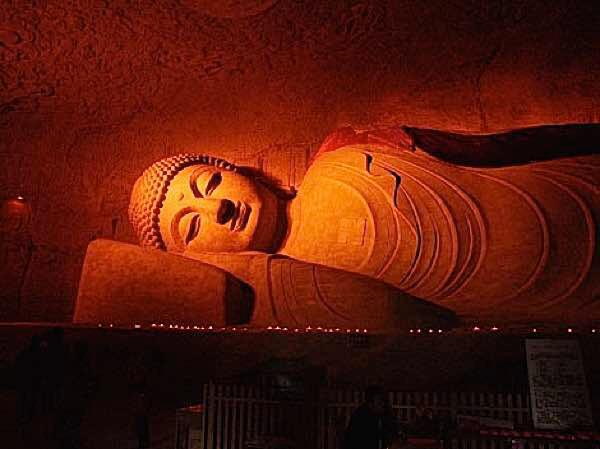
















![Buddha and His Dhamma by Dr. Ambedkar [ Book Part- 7 ]](https://ci6.googleusercontent.com/proxy/5EpCHtX1UZoe3tMA_YbGRxmgZbWHtAHhigzAz_ZbzfFXIj3dkn6PQWXUU7r6eQkPjP90cOMmWVdKPTRJuFo7_LbZQ-4B68yi0677WiecMaL76IHi5NdCMUxXmq8OTDNLX9_4a6-3OsAeGHH4QwT-N7Jj9qHlkjuFJAiqxDRgAGLBI3YFvIRq2a1p-bKRHjUizVBR5avoLEPUDLwS5_ZDzXELUDglRY5IwzIx_5TXswjNWnwMRu-ZpodqWRxrvS-0YWAR-EAoRz0evizKp31PPpBHGfGXK26zuPydLap7EL8WYnGOlaOebkgxtW8WEQUG5GT1YiZuHrG8r10xu5RN3n_Q6jZGGFUbqI-ilQ7S50ZEp7A=s0-d-e1-ft#https://external.fblr15-1.fna.fbcdn.net/safe_image.php?d=AQEzPexwtw-sQk6e&w=500&h=261&url=https%3A%2F%2Fwww.ambedkaritetoday.com%2Fwp-content%2Fuploads%2F2019%2F12%2Fbanner3-4.jpg&cfs=1&ext=jpg&_nc_oe=6ee80&_nc_sid=06c271&ccb=3-5&_nc_hash=AQECfN5WWpr_Tzdm)
























 Keep Supporting Our Channel
Keep Supporting Our Channel Like & Share Our Video
Like & Share Our Video
 Don’t Forget To Subscribe Our Channel©
Don’t Forget To Subscribe Our Channel©












